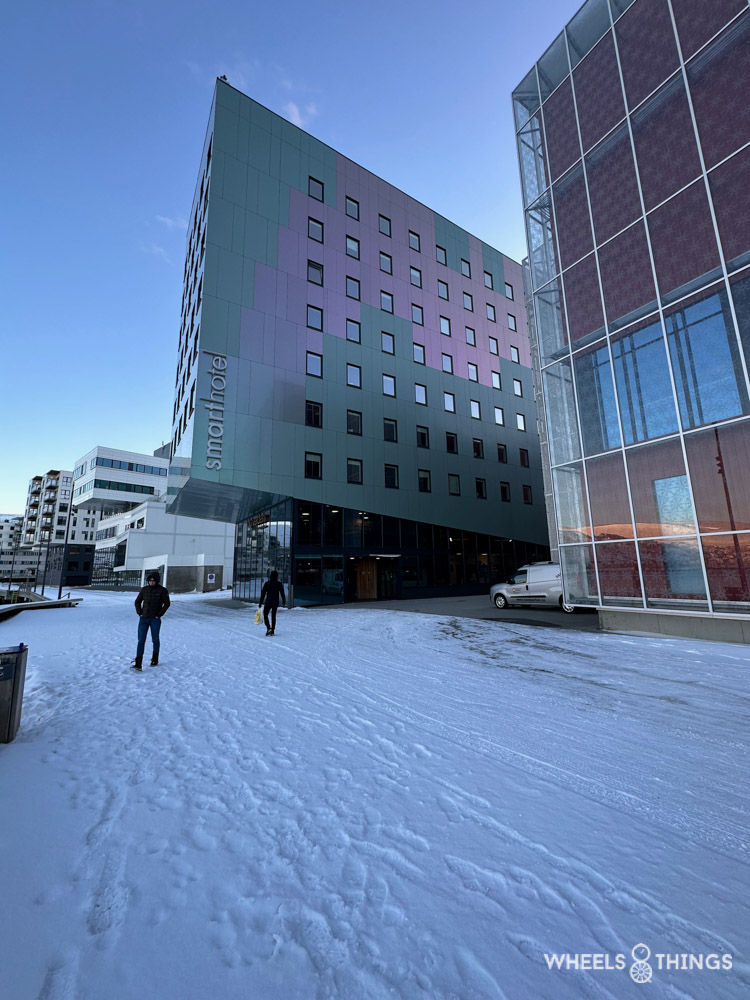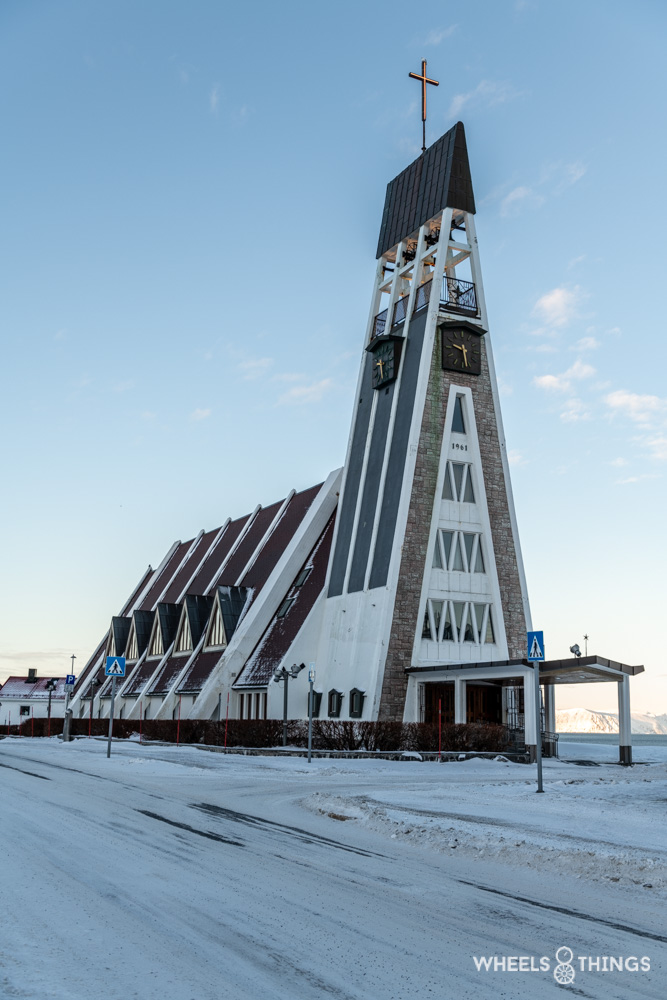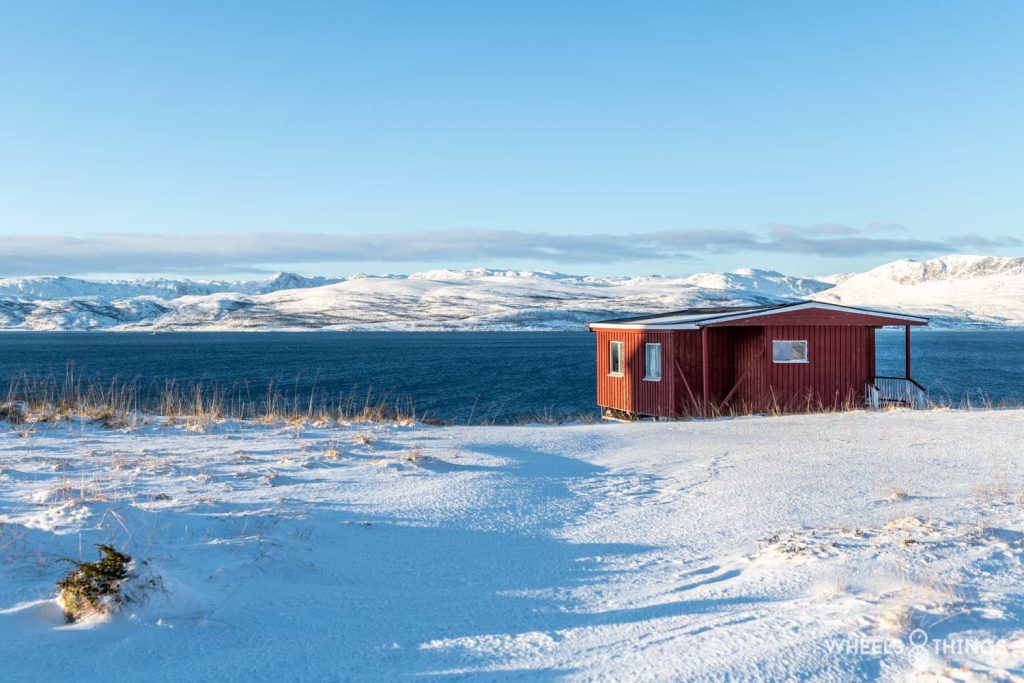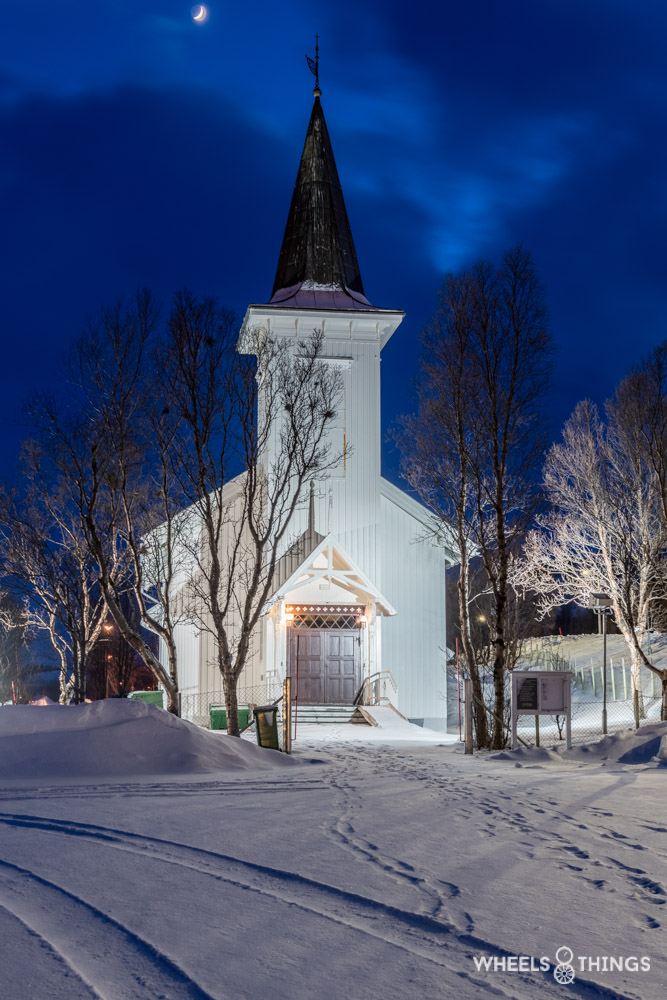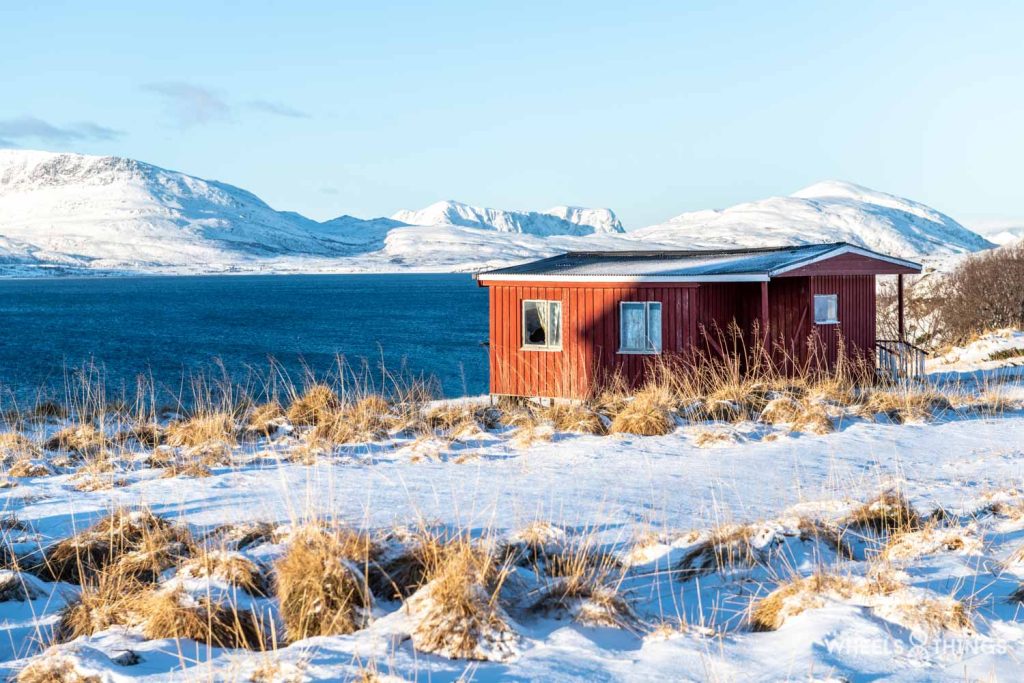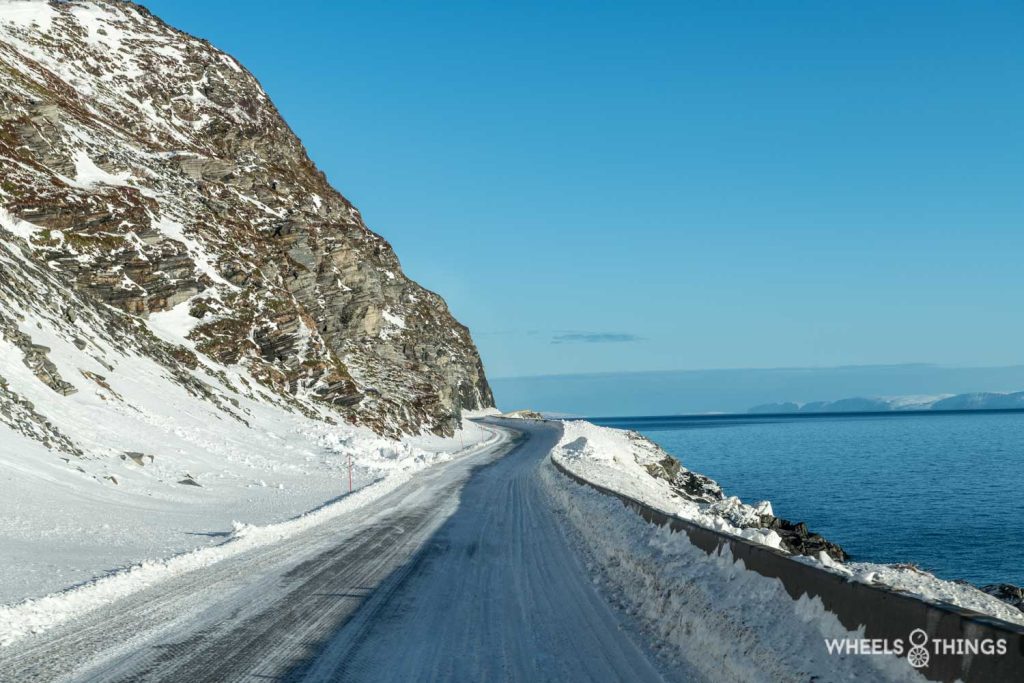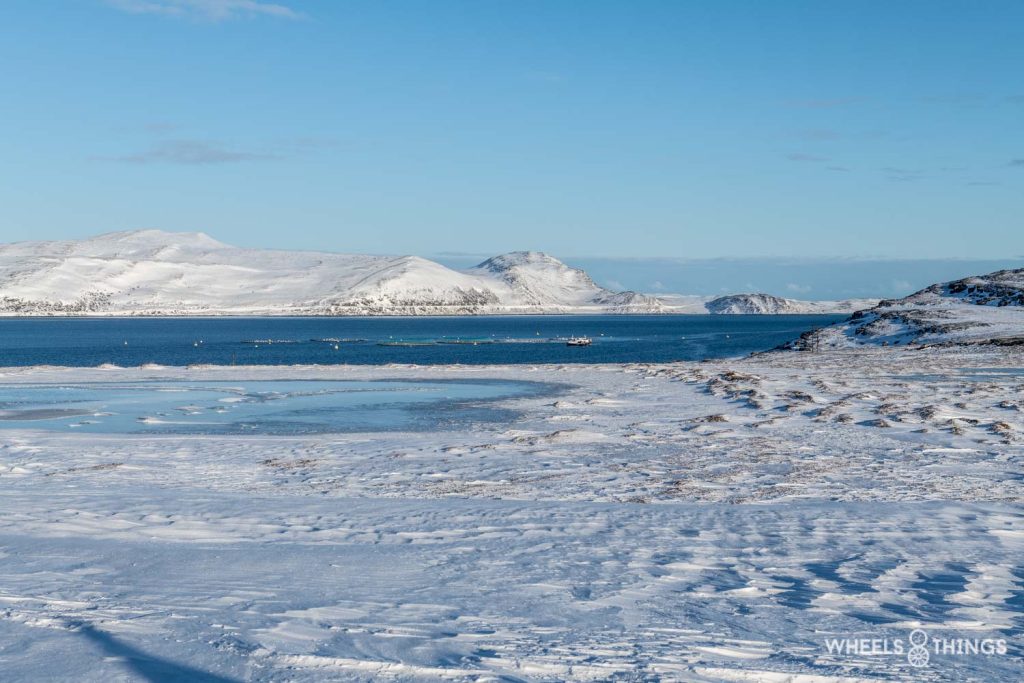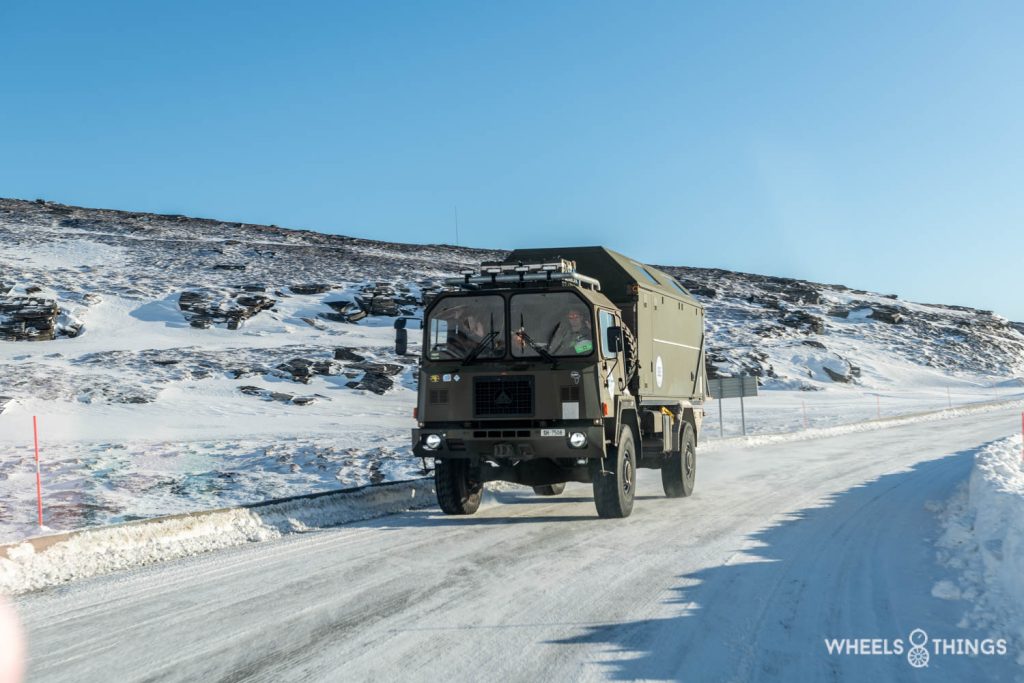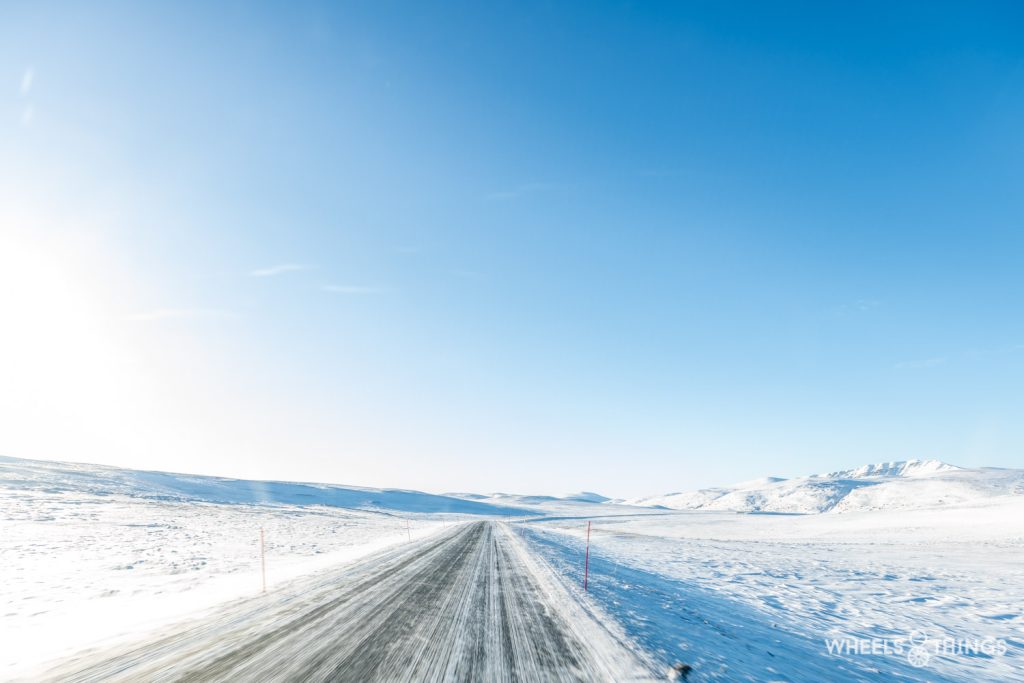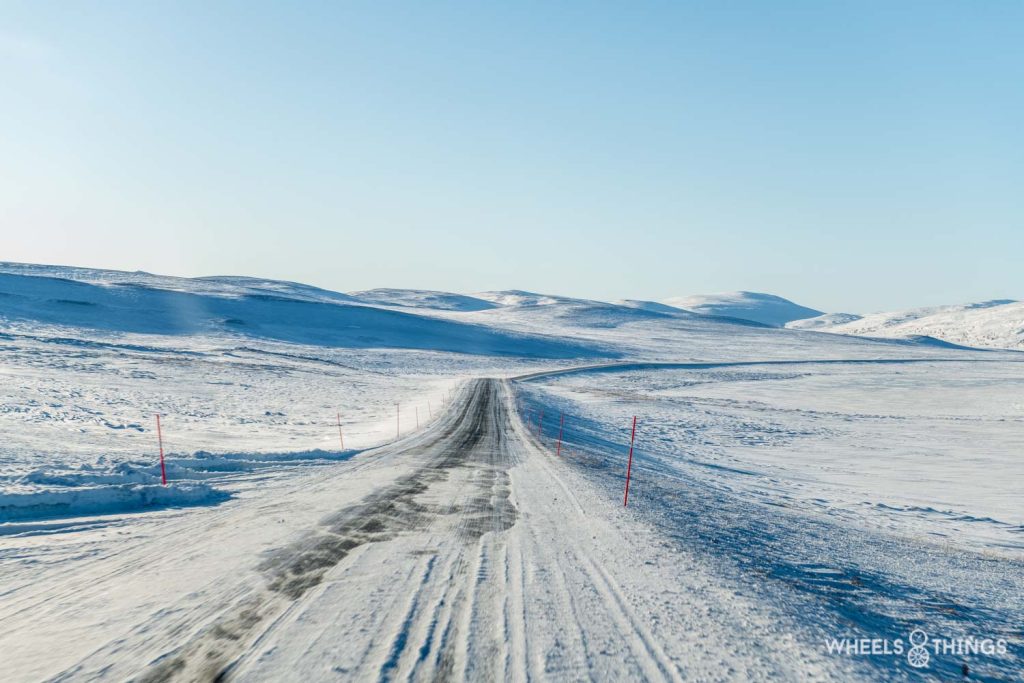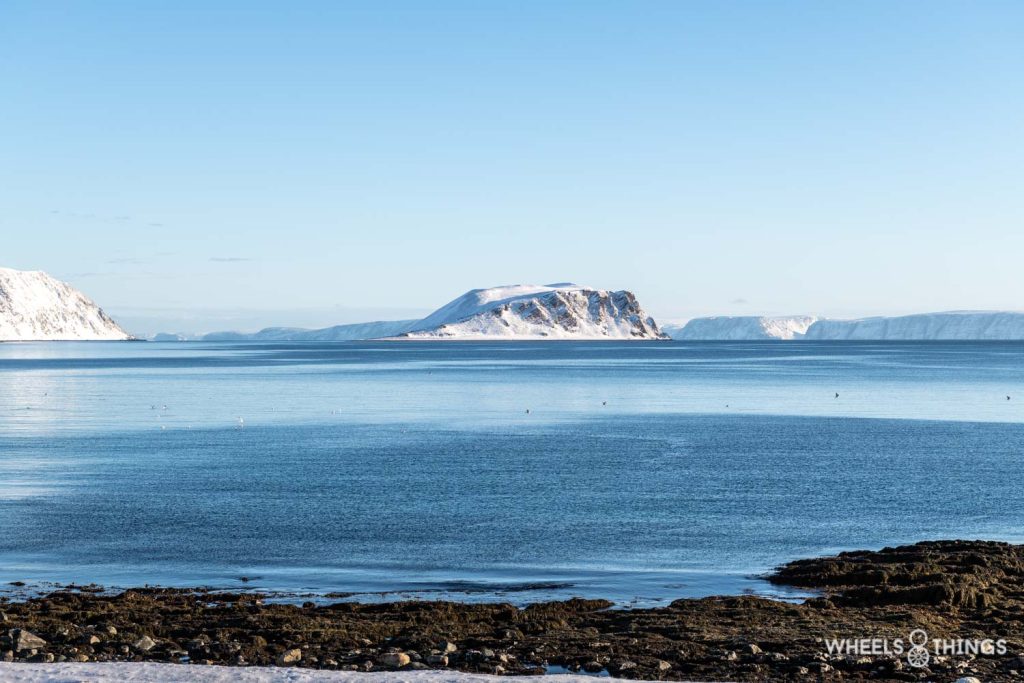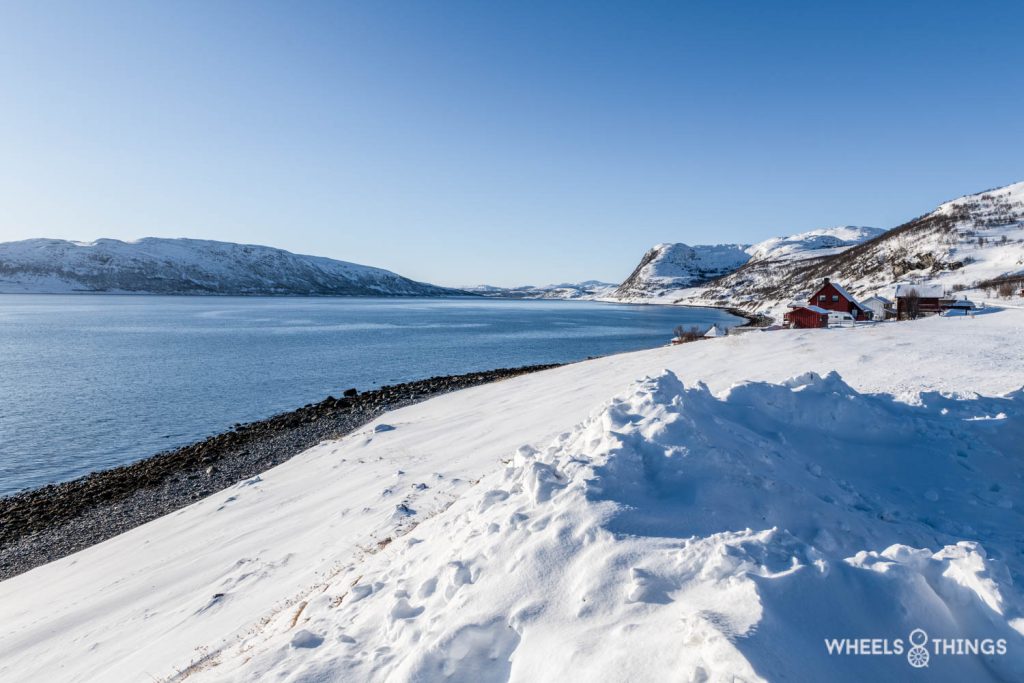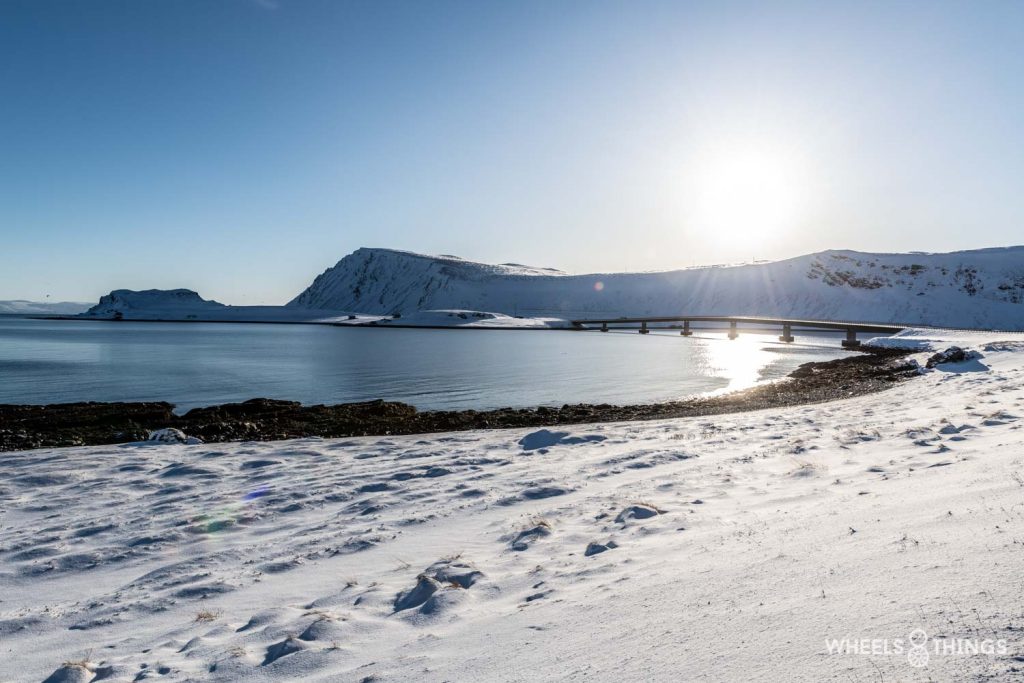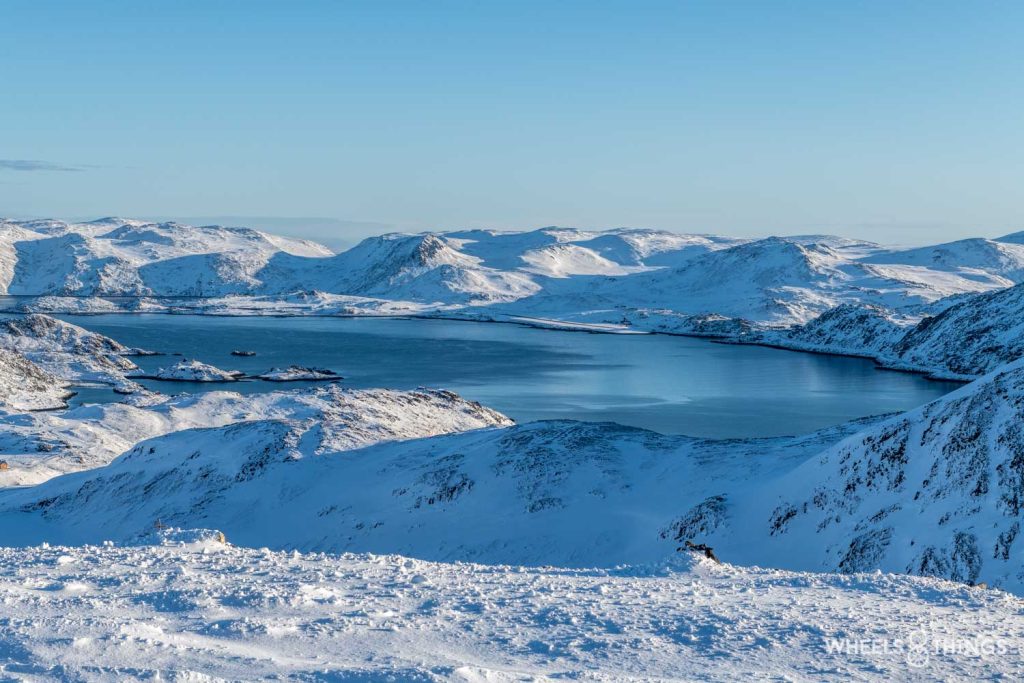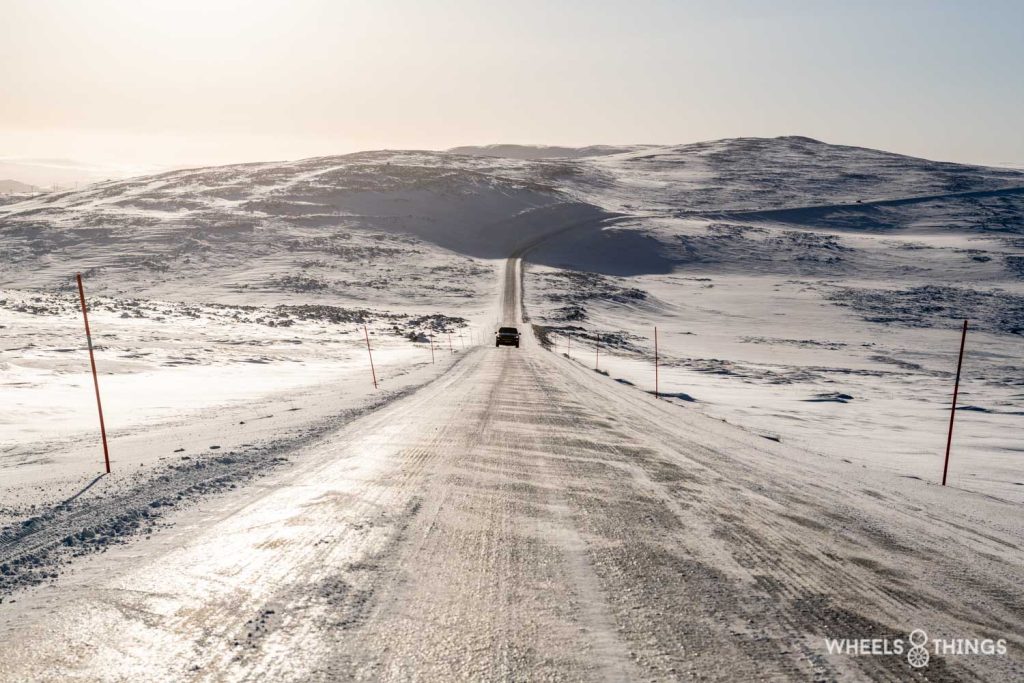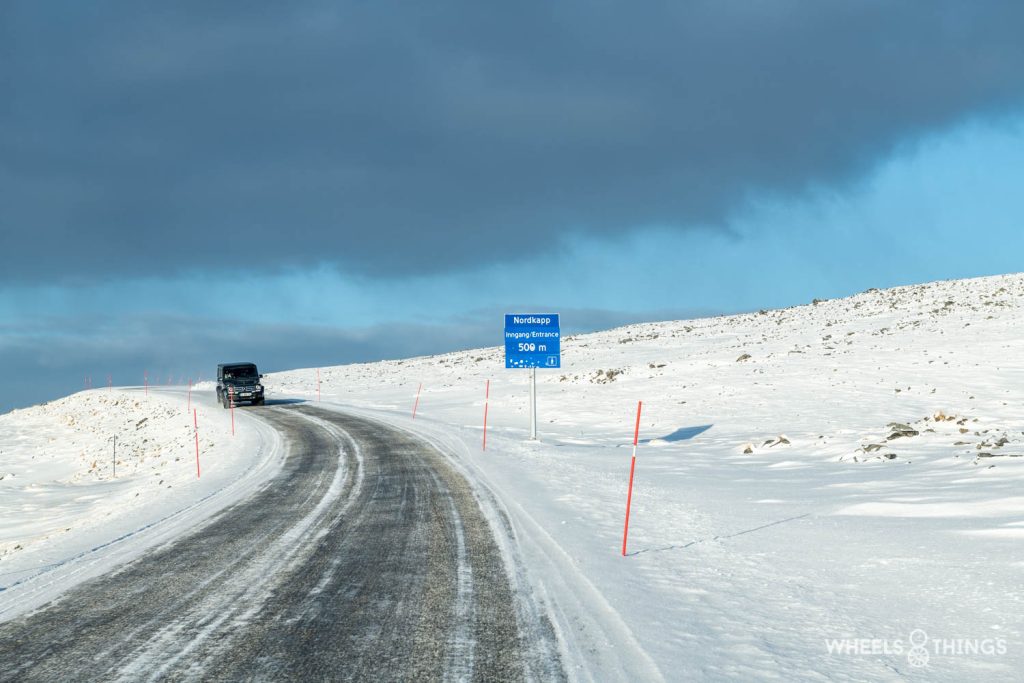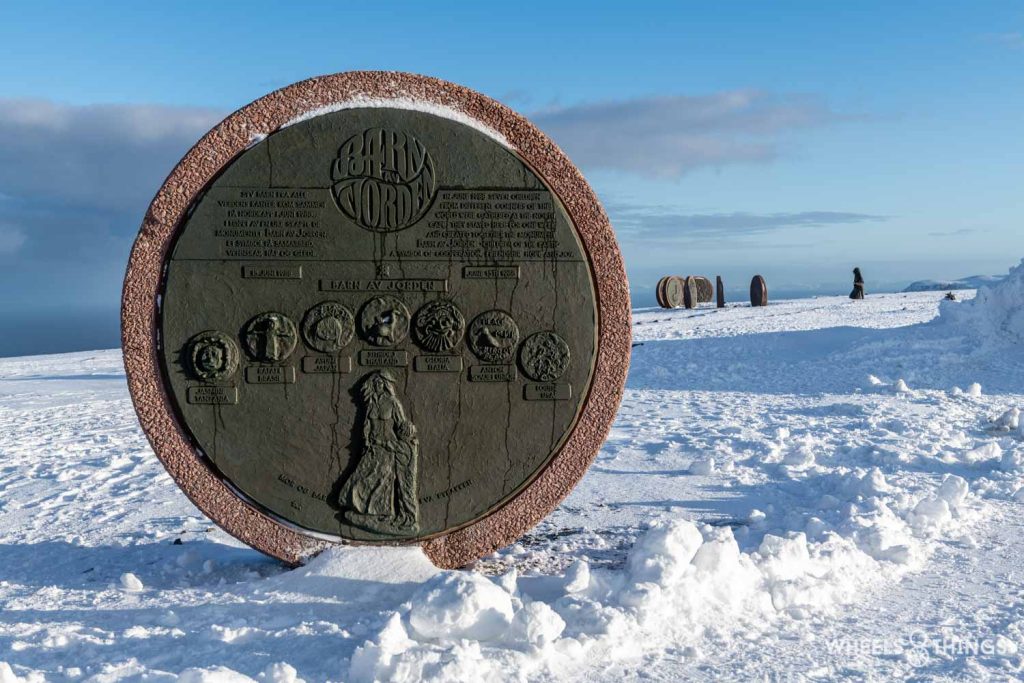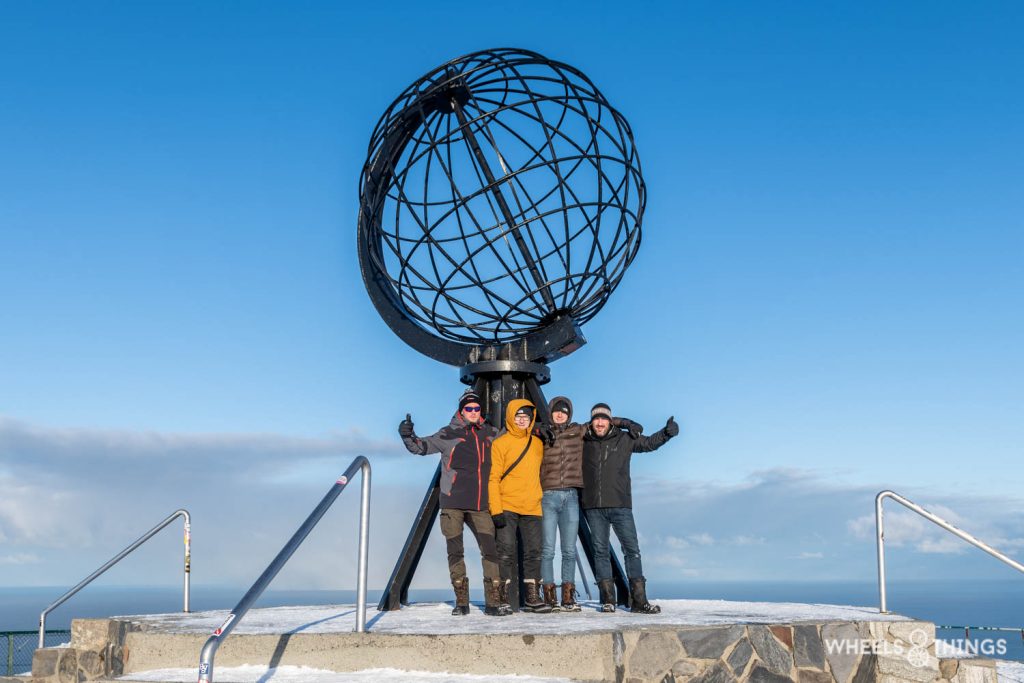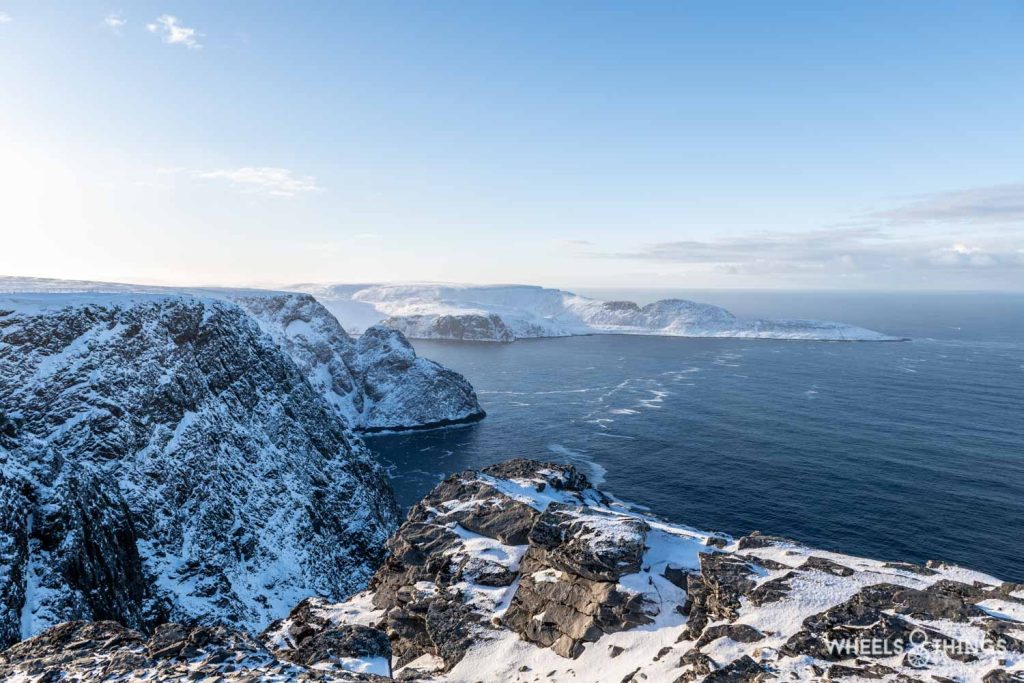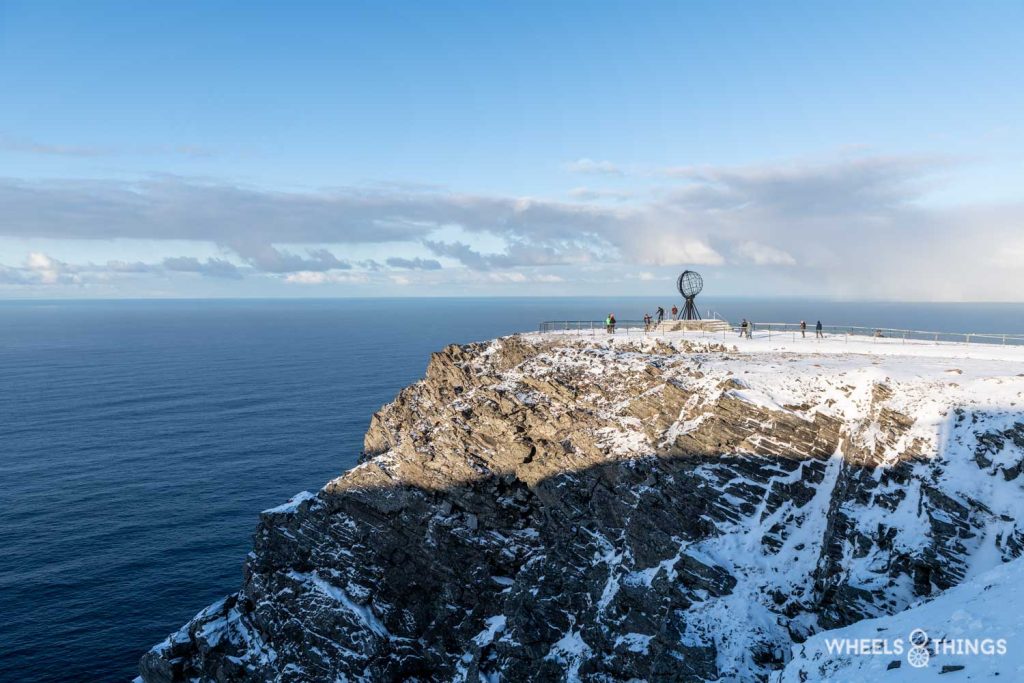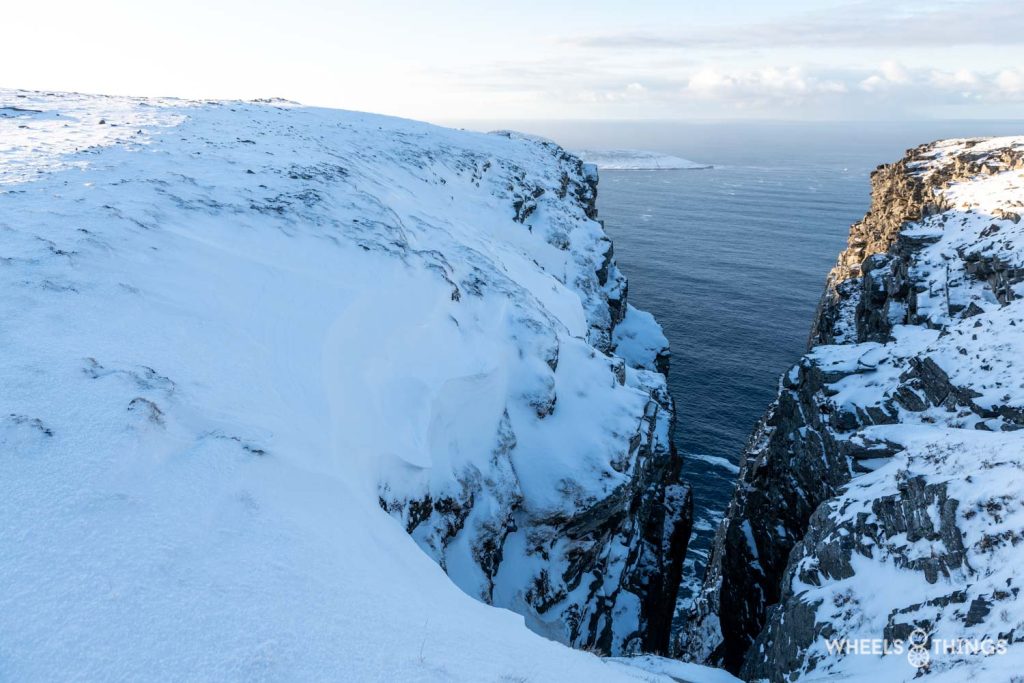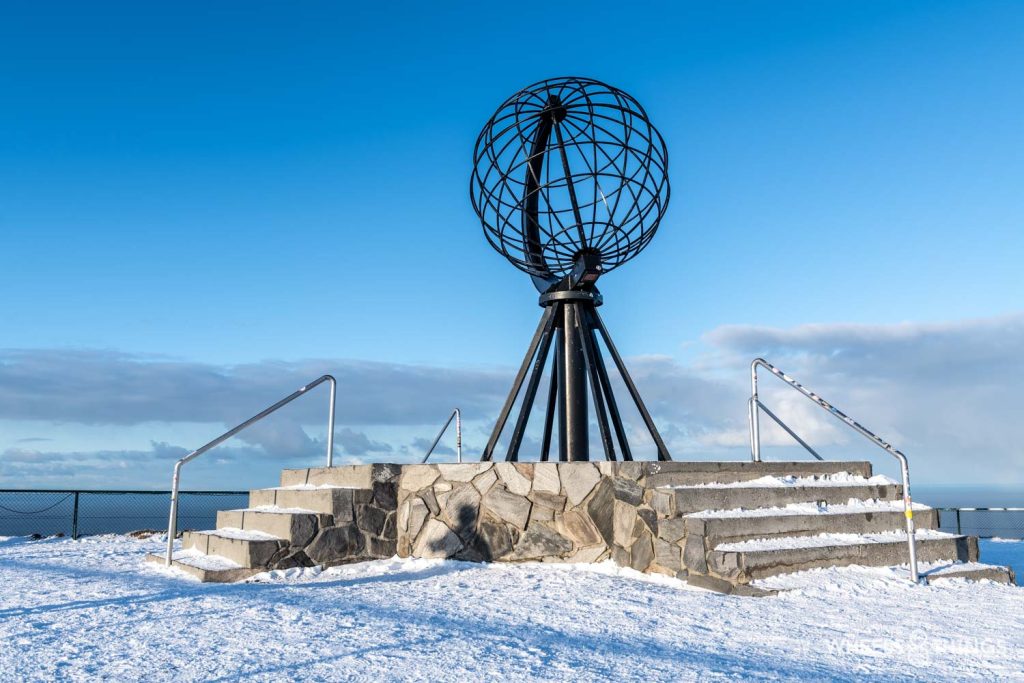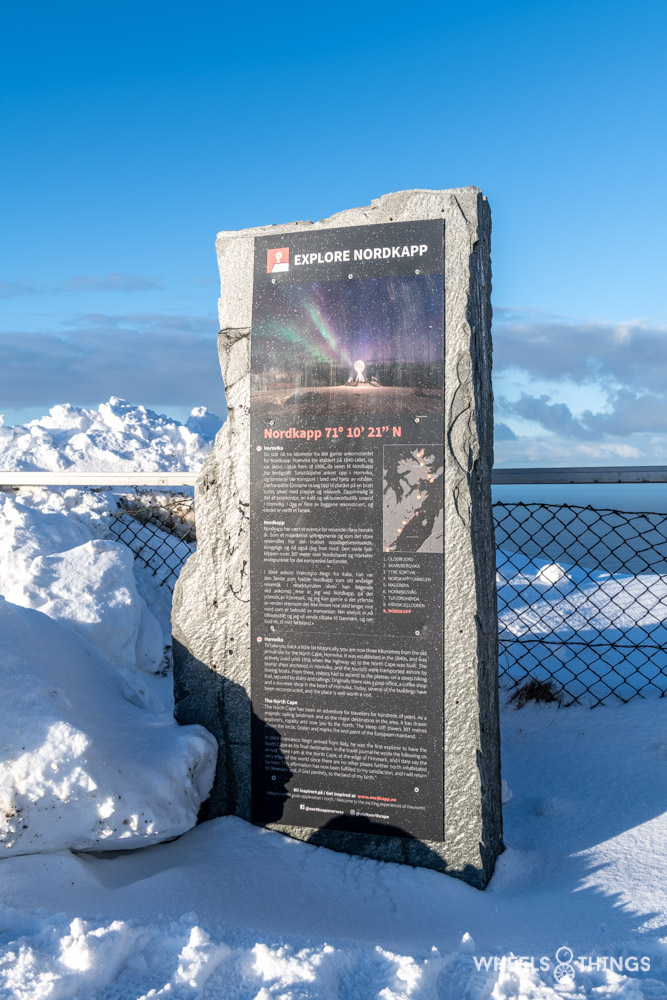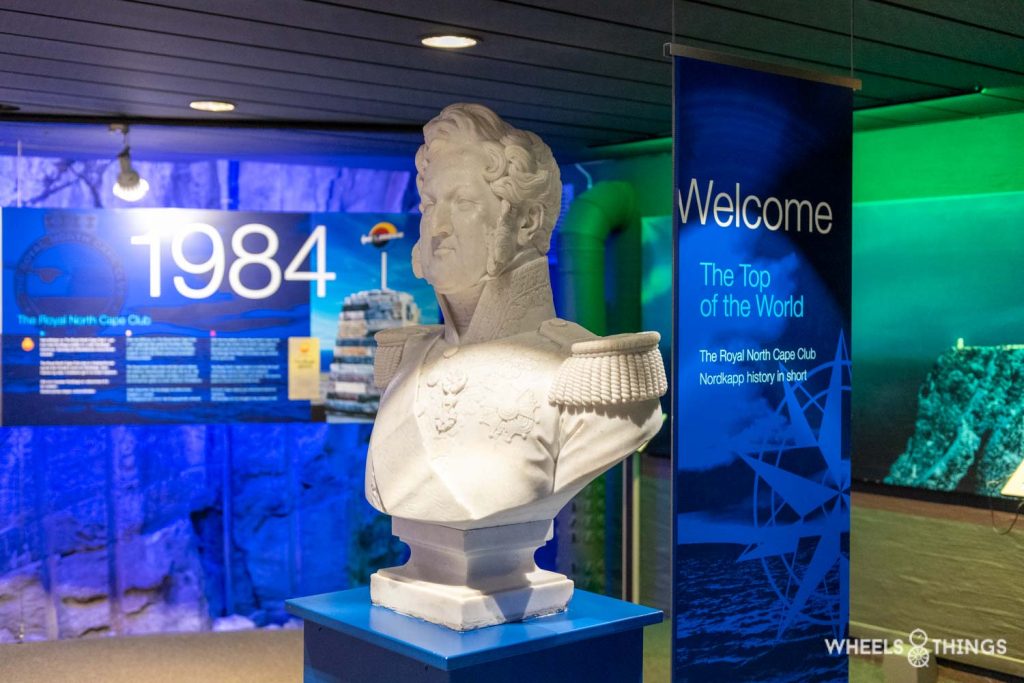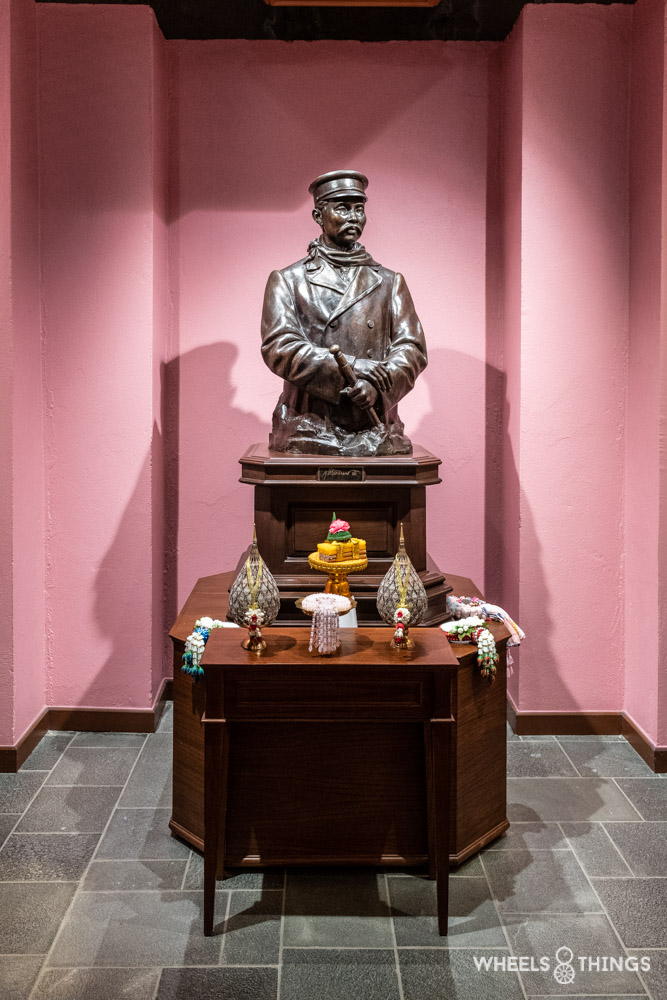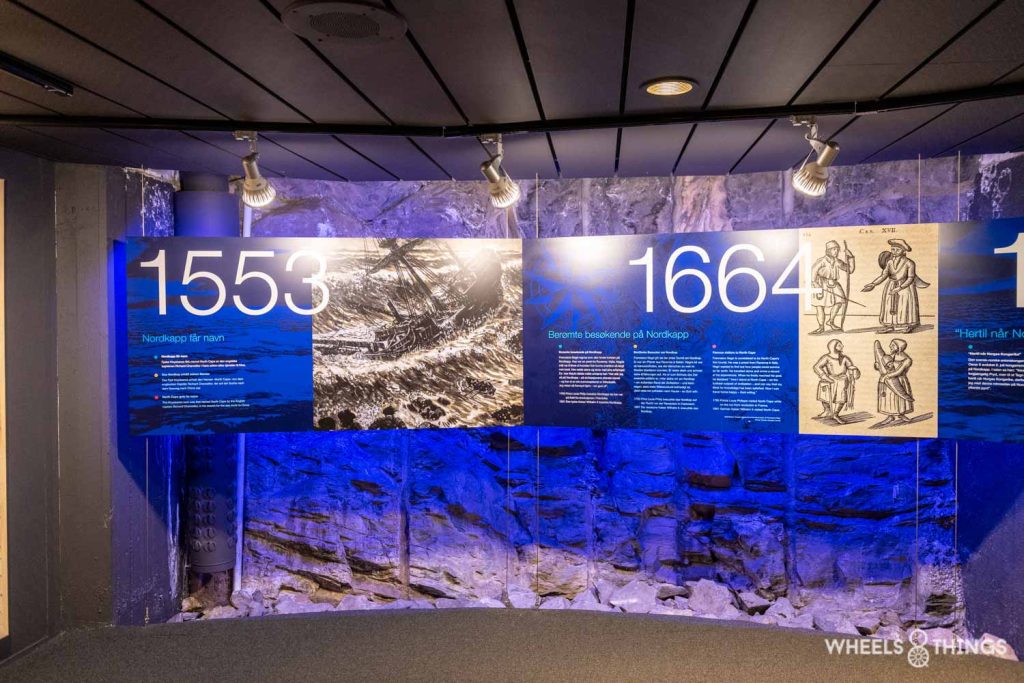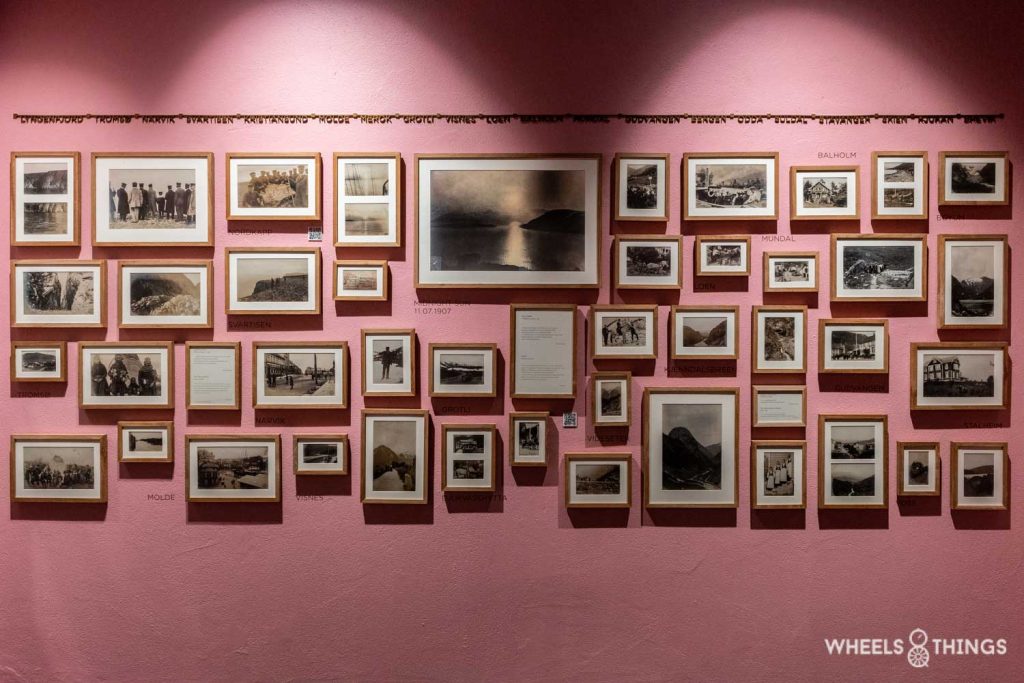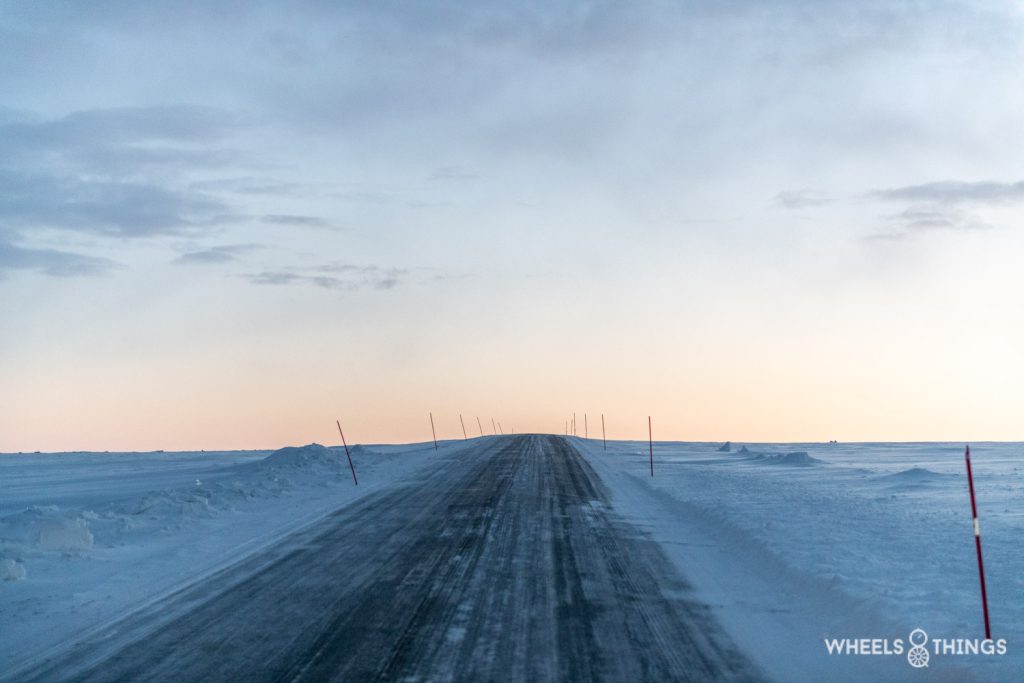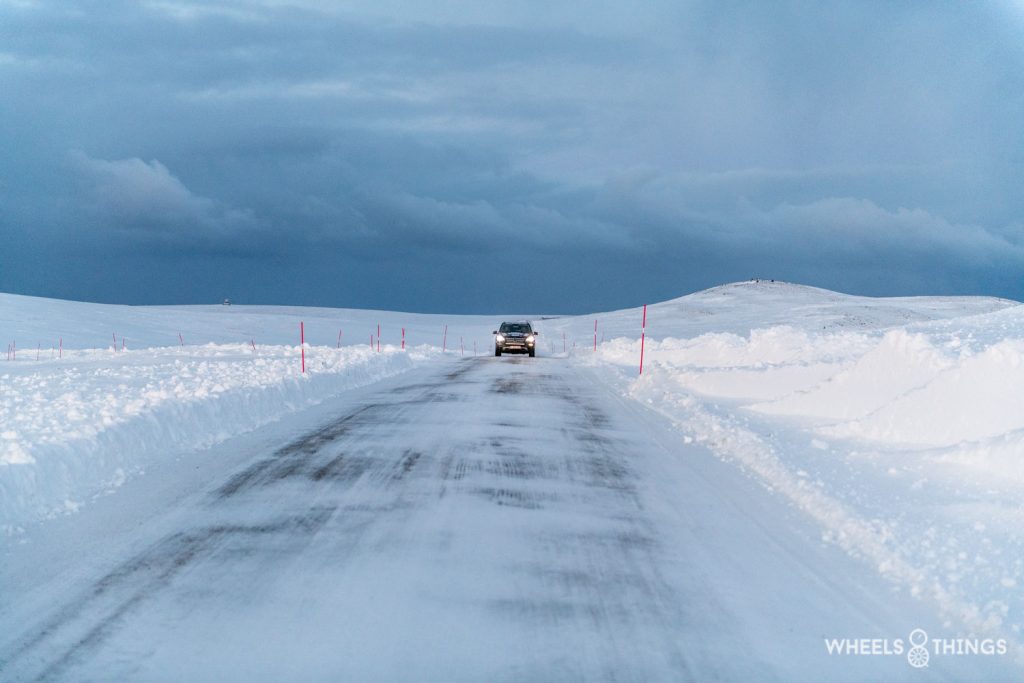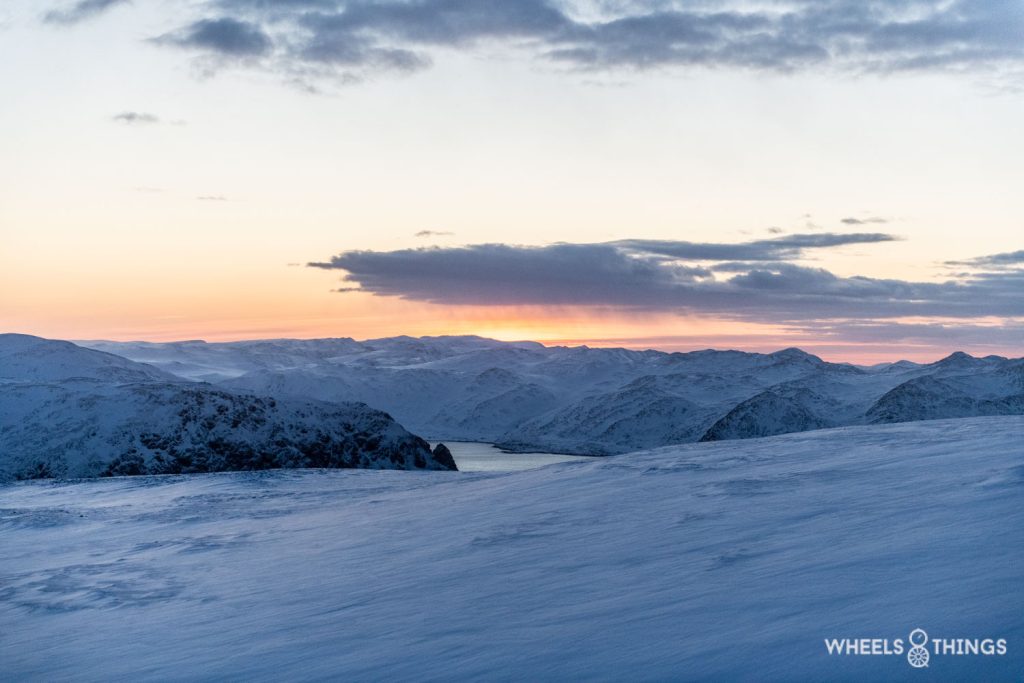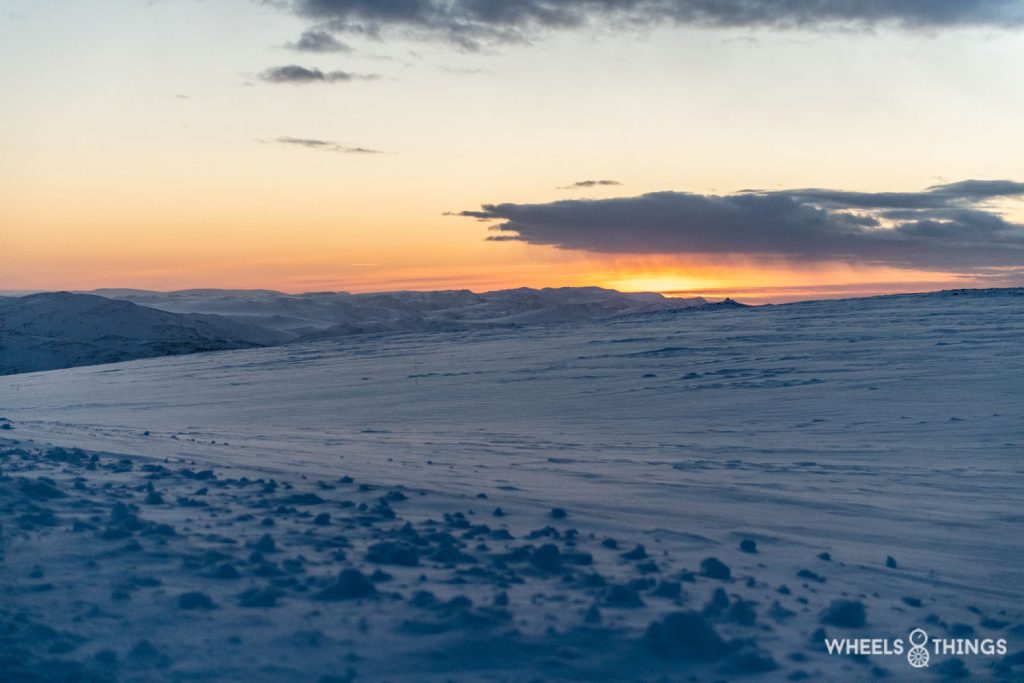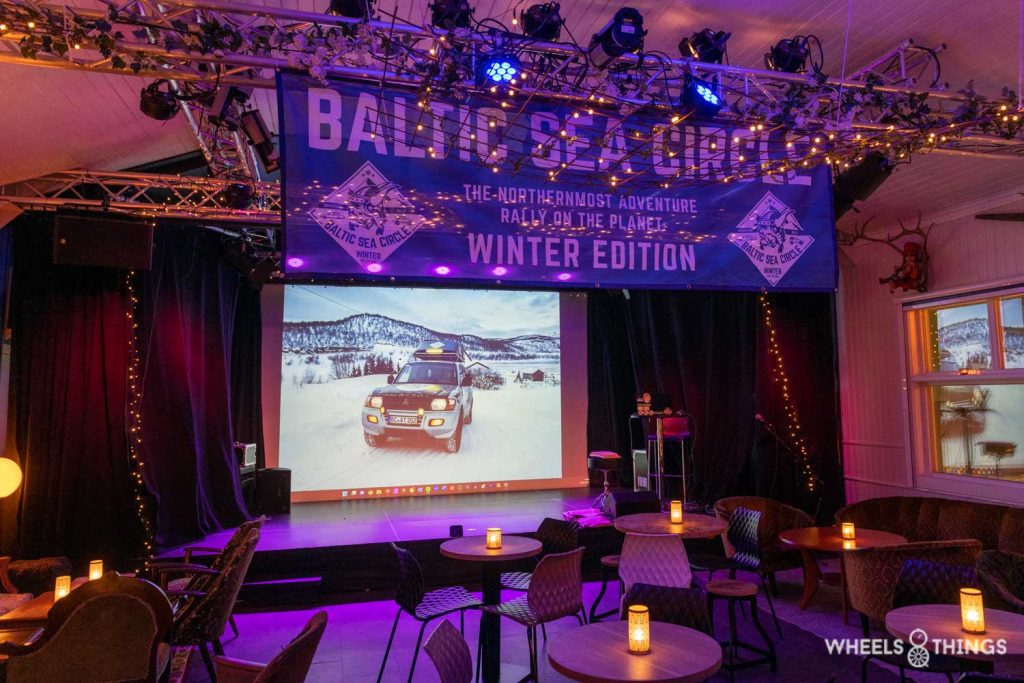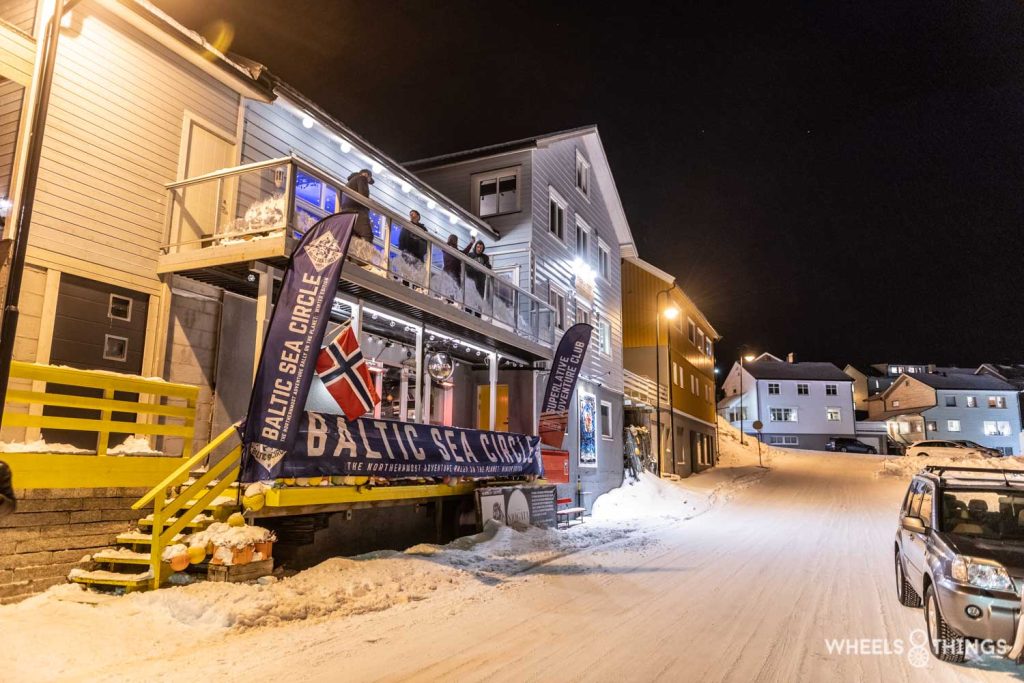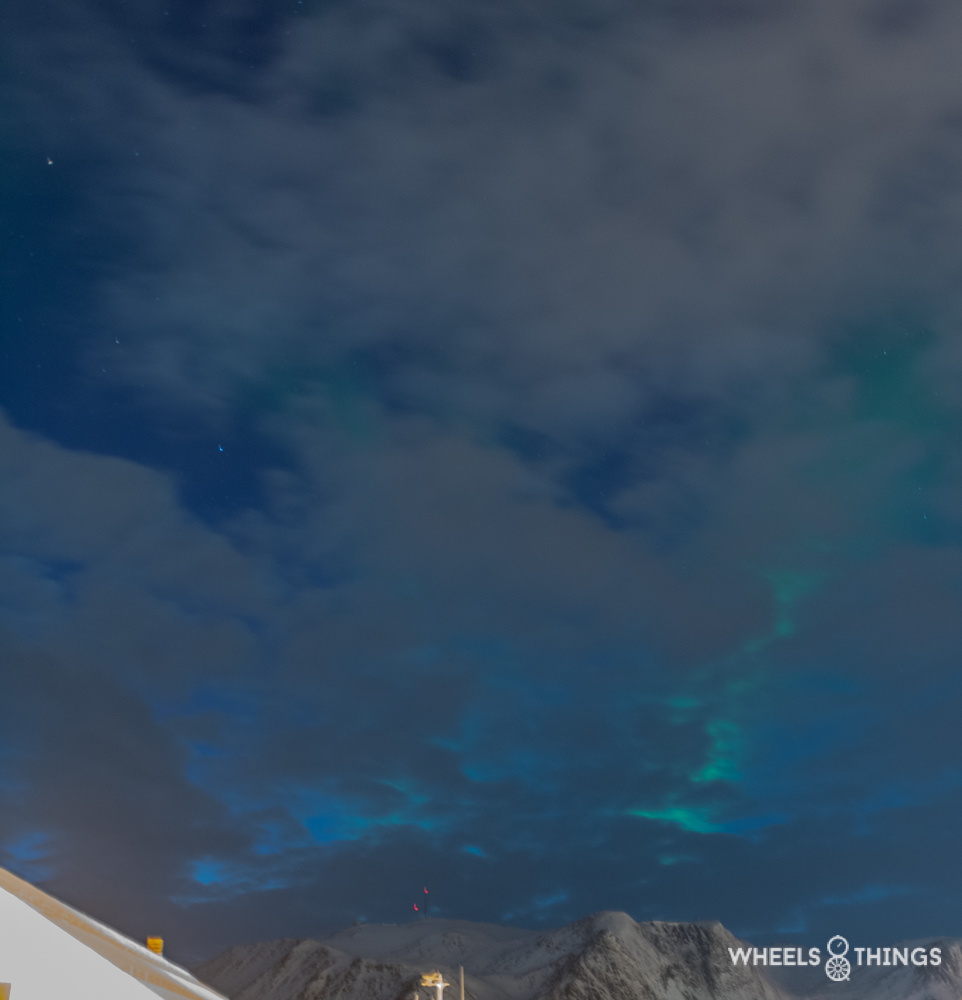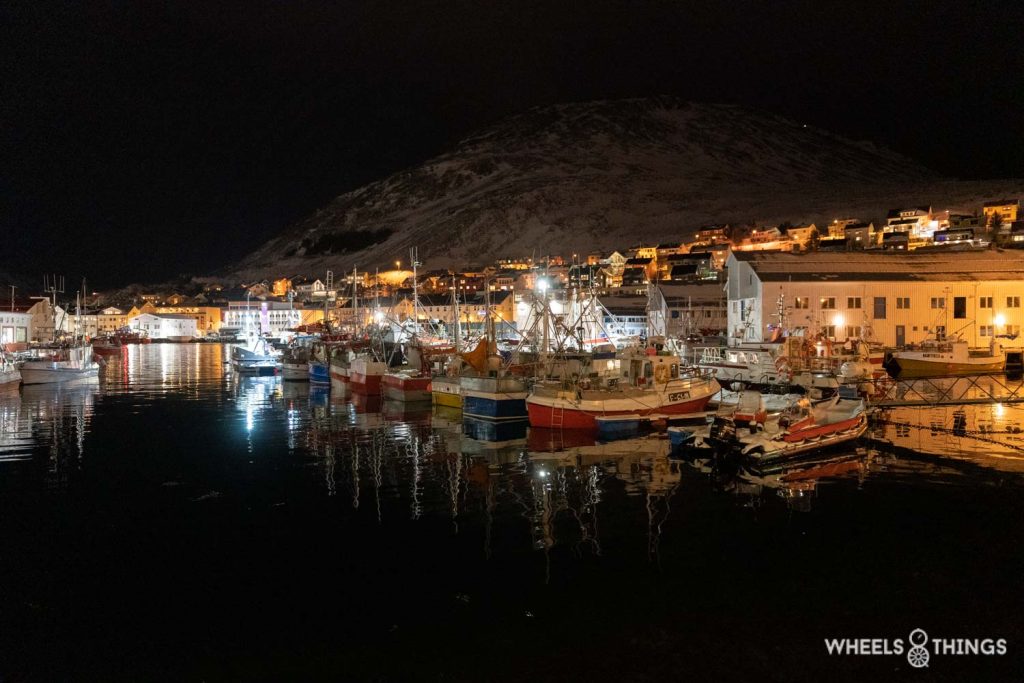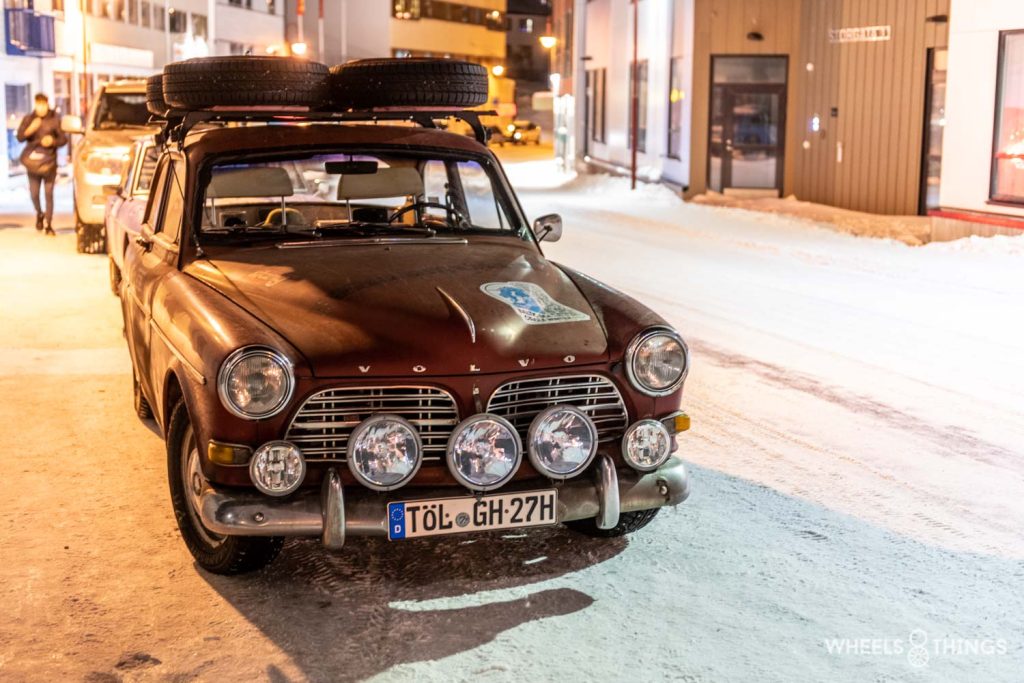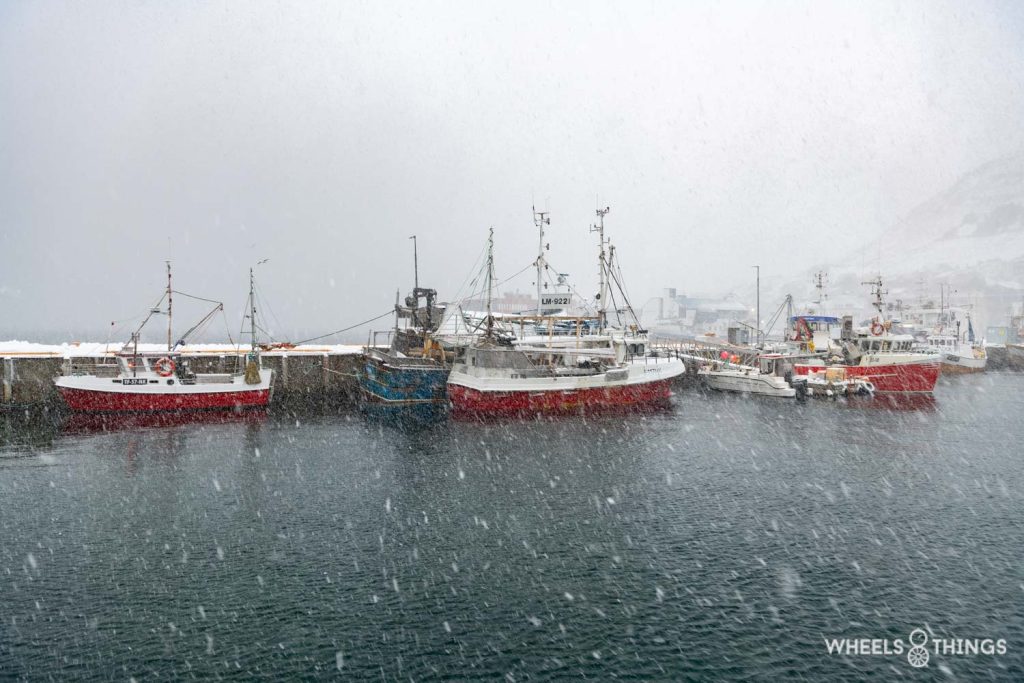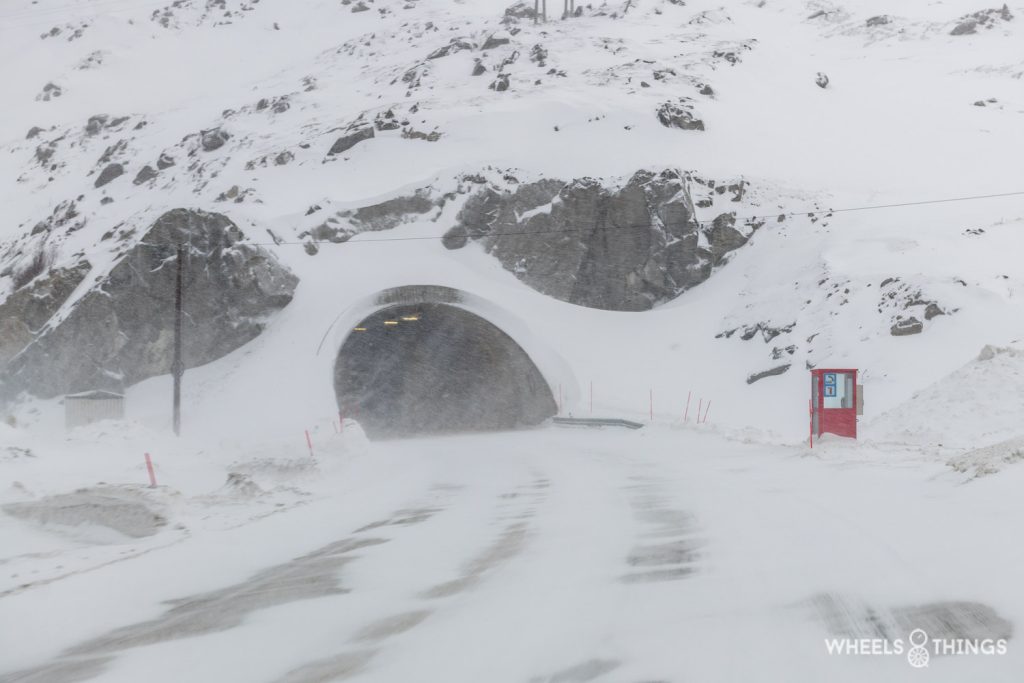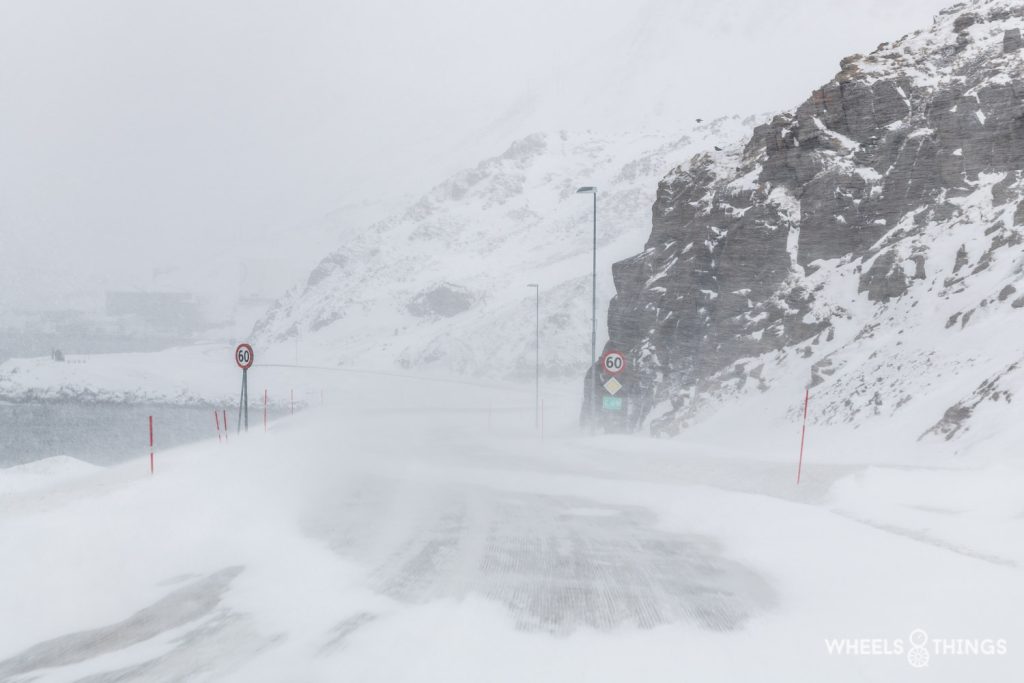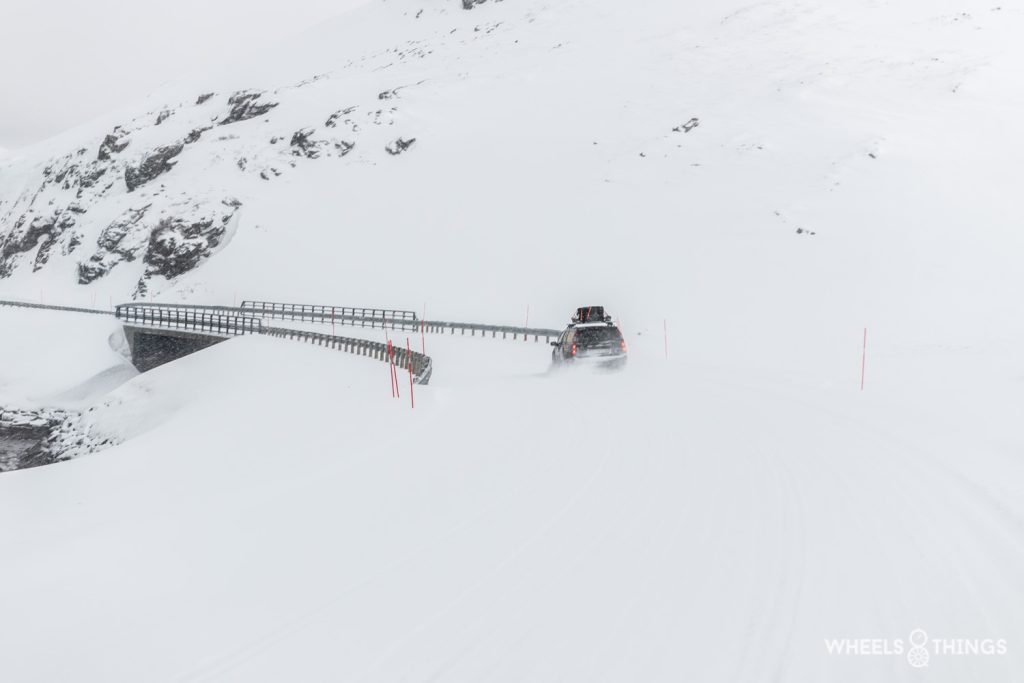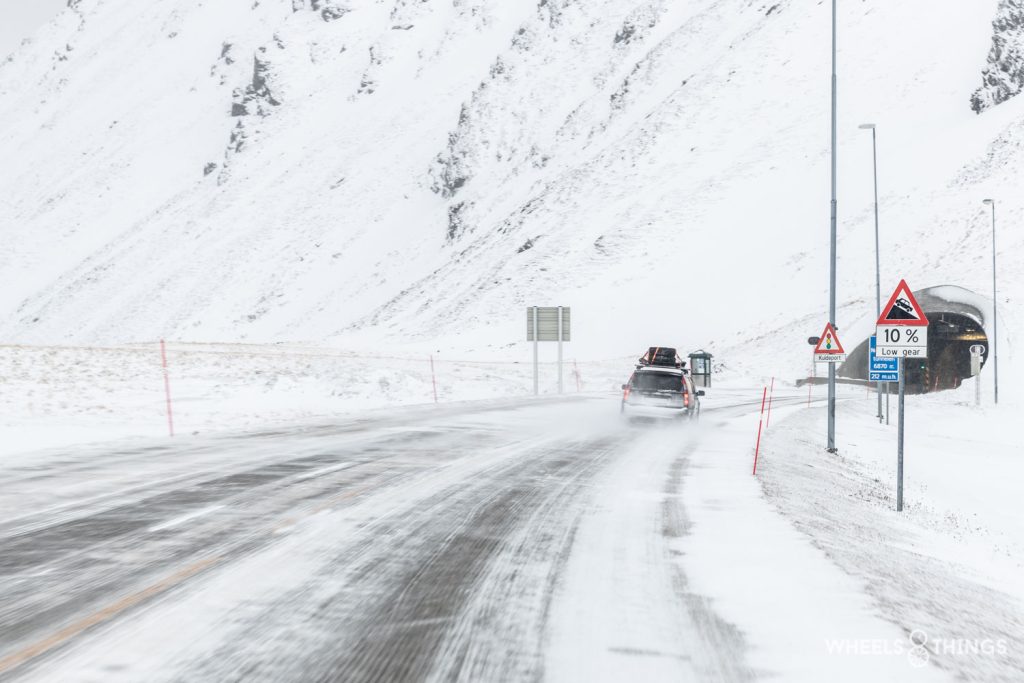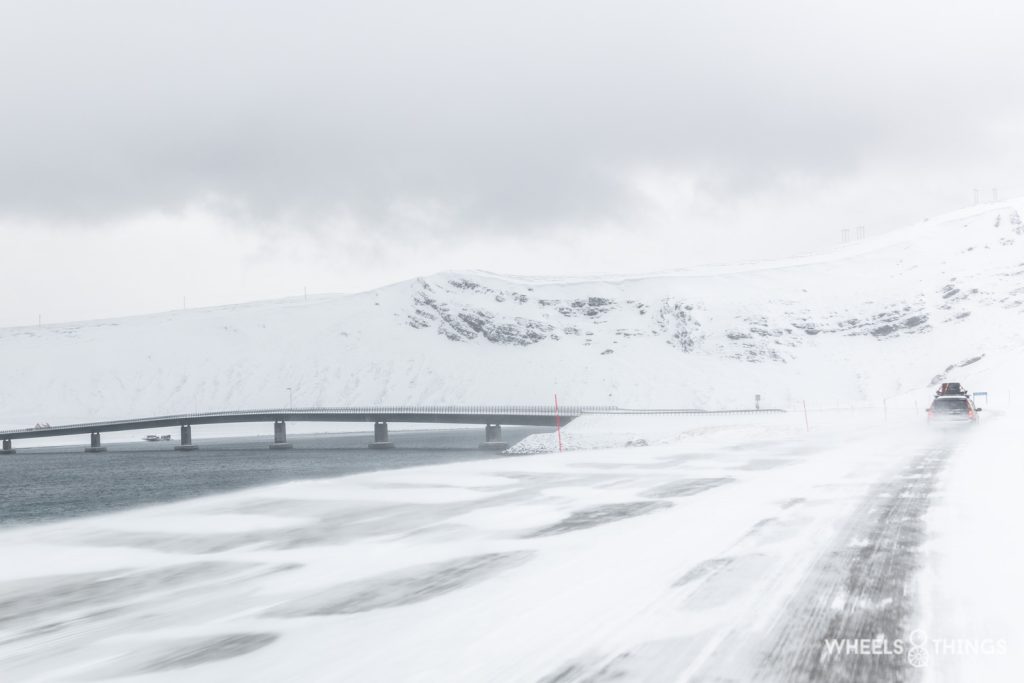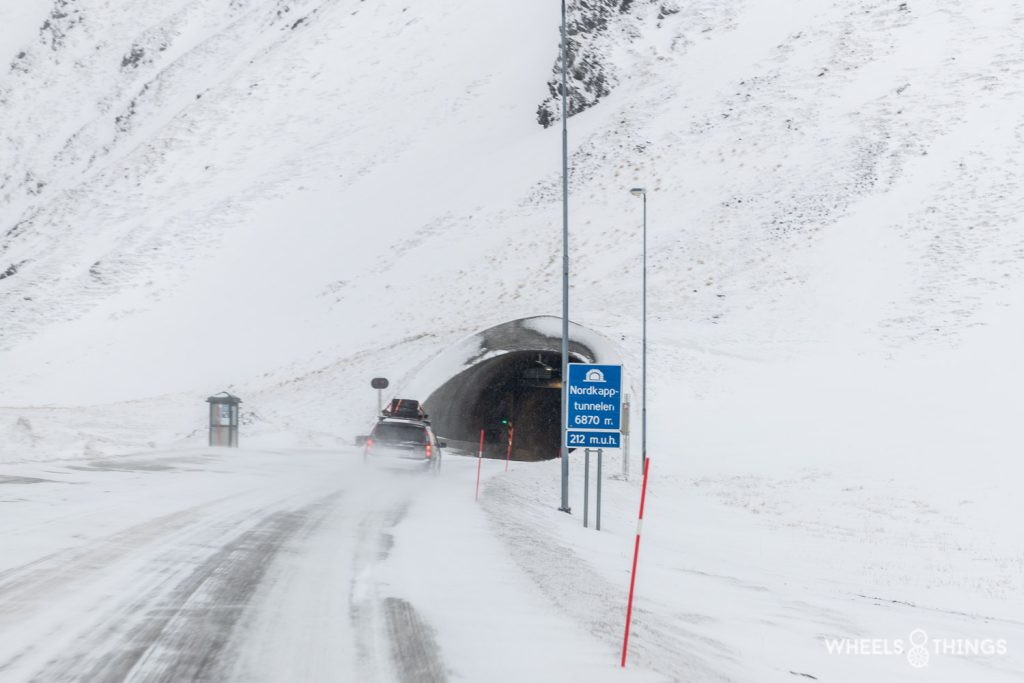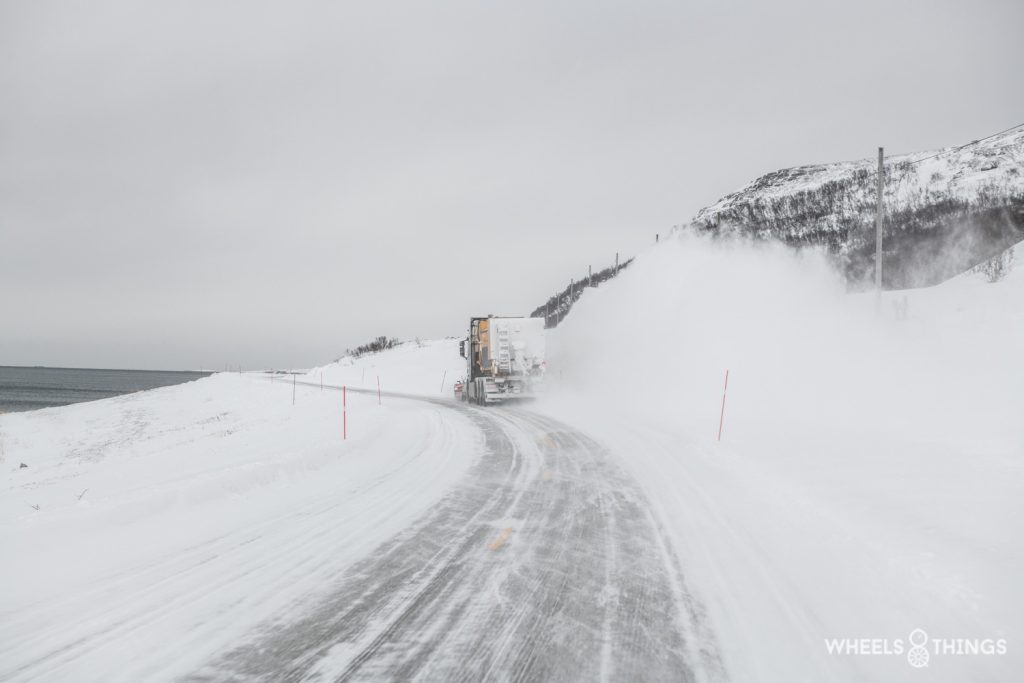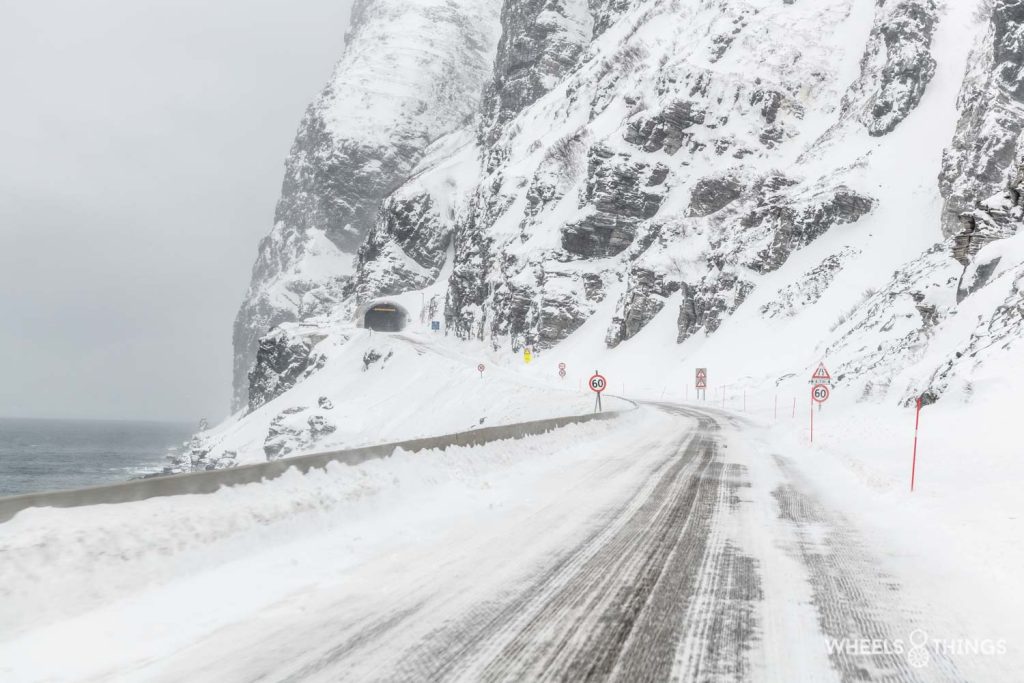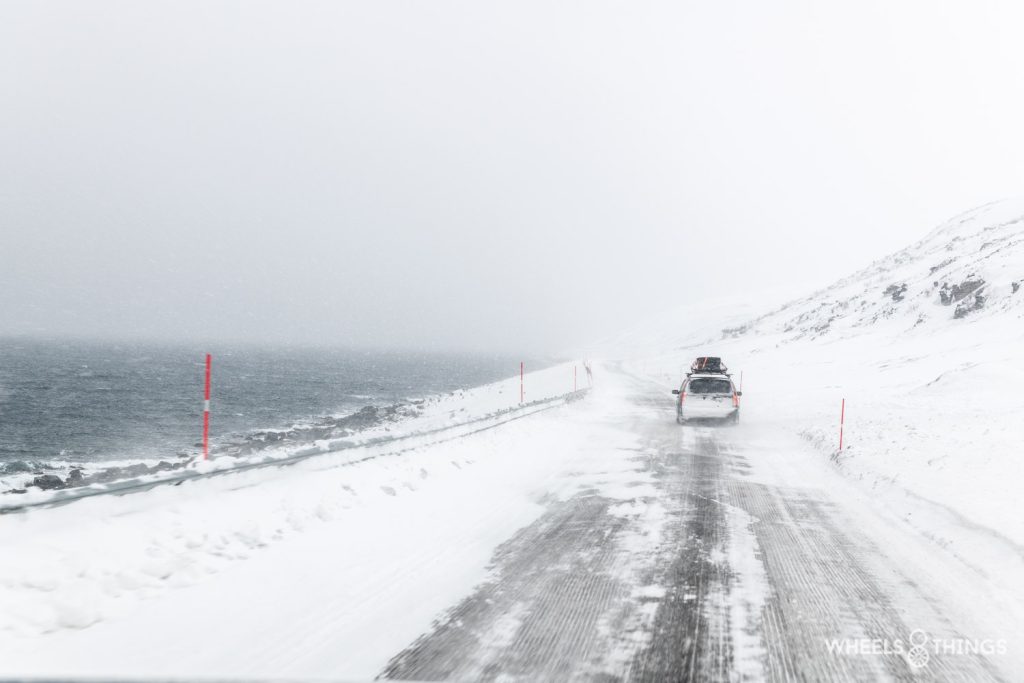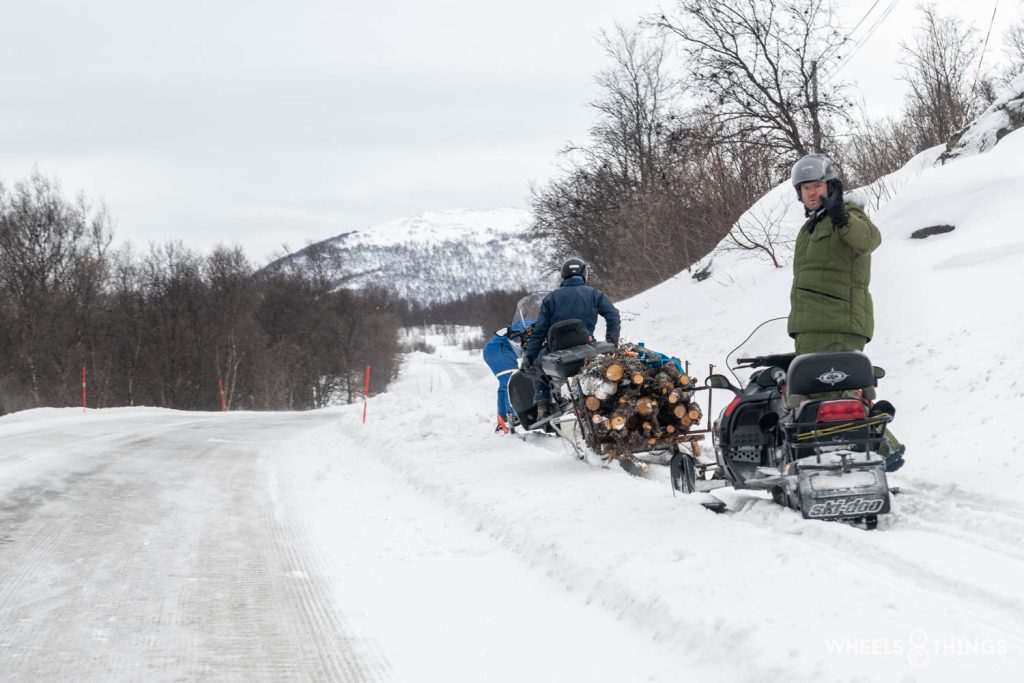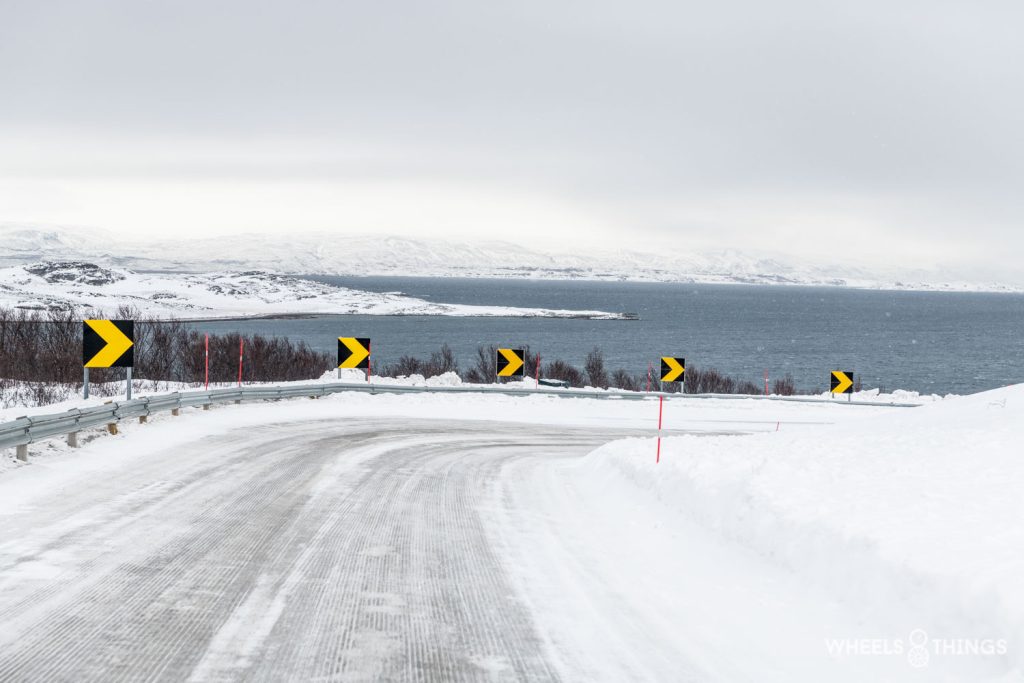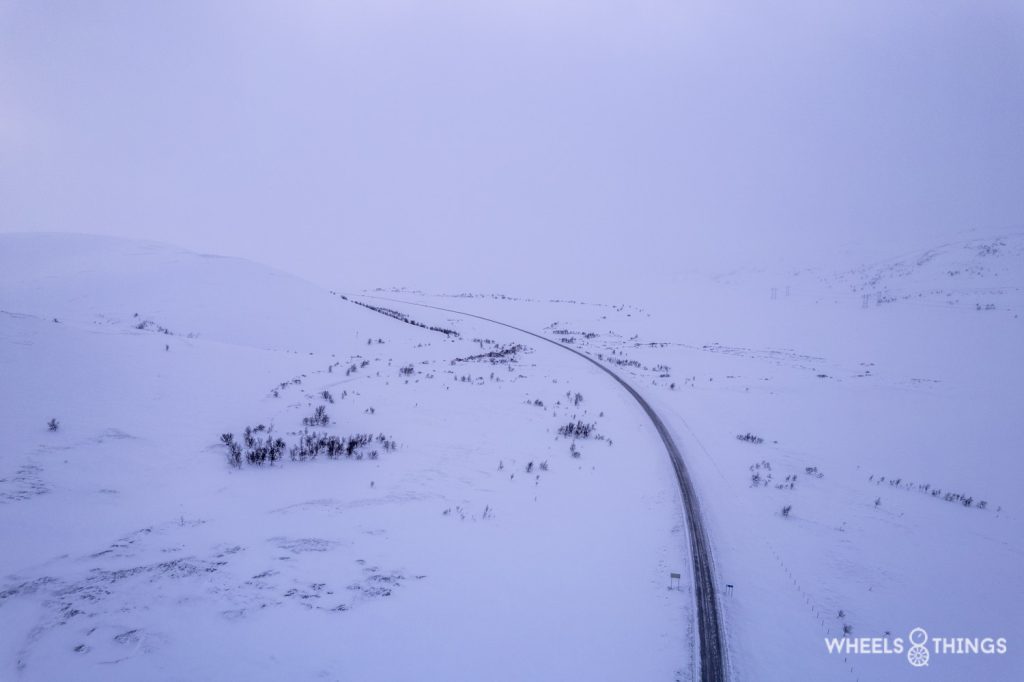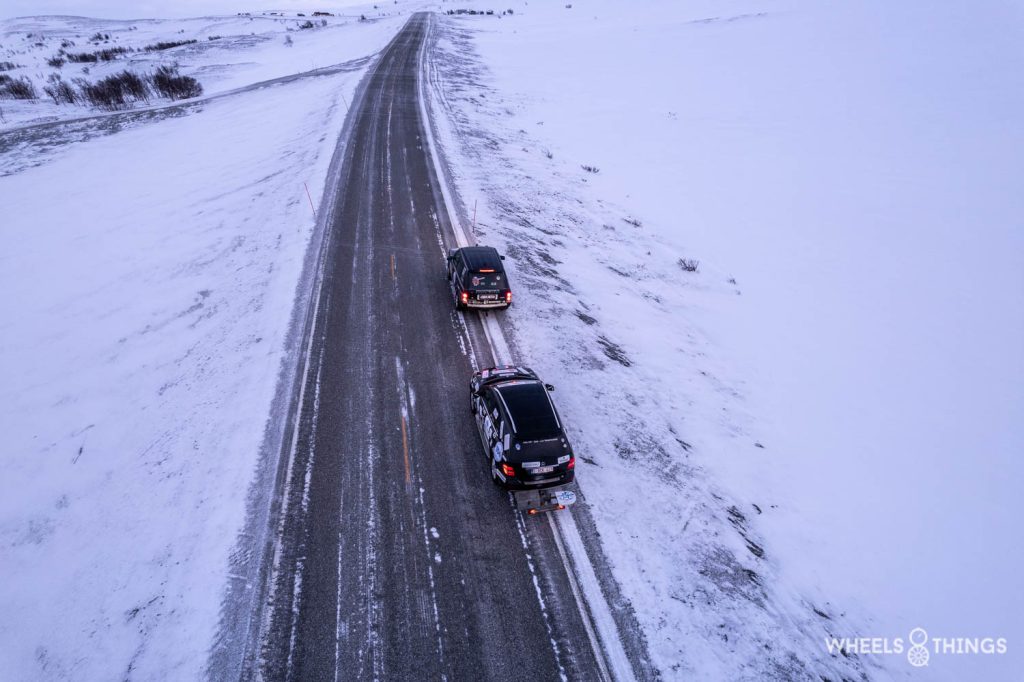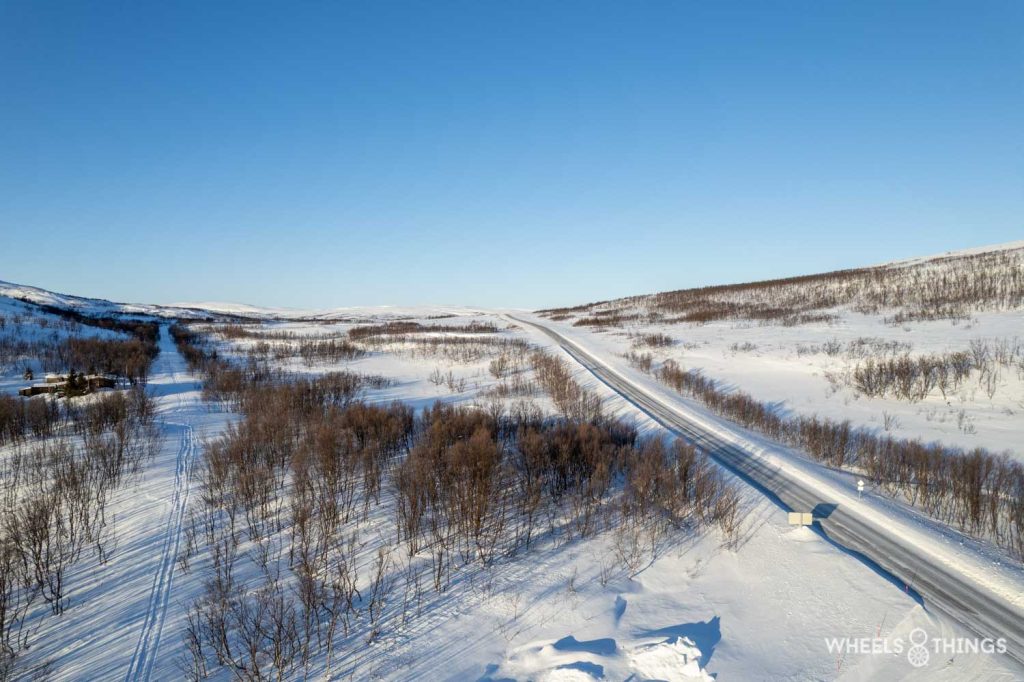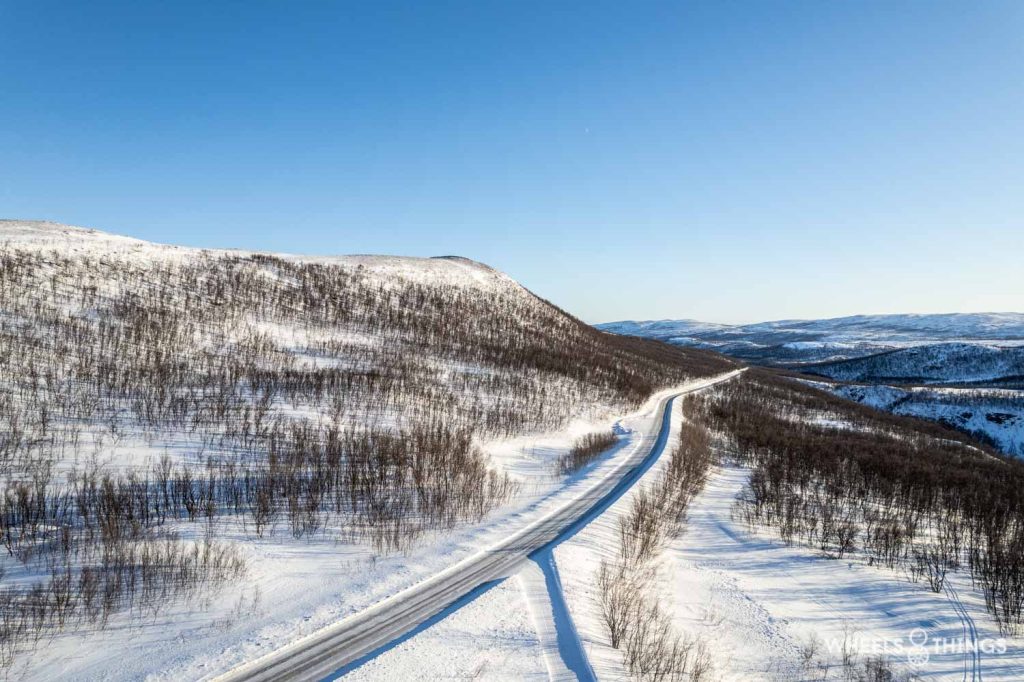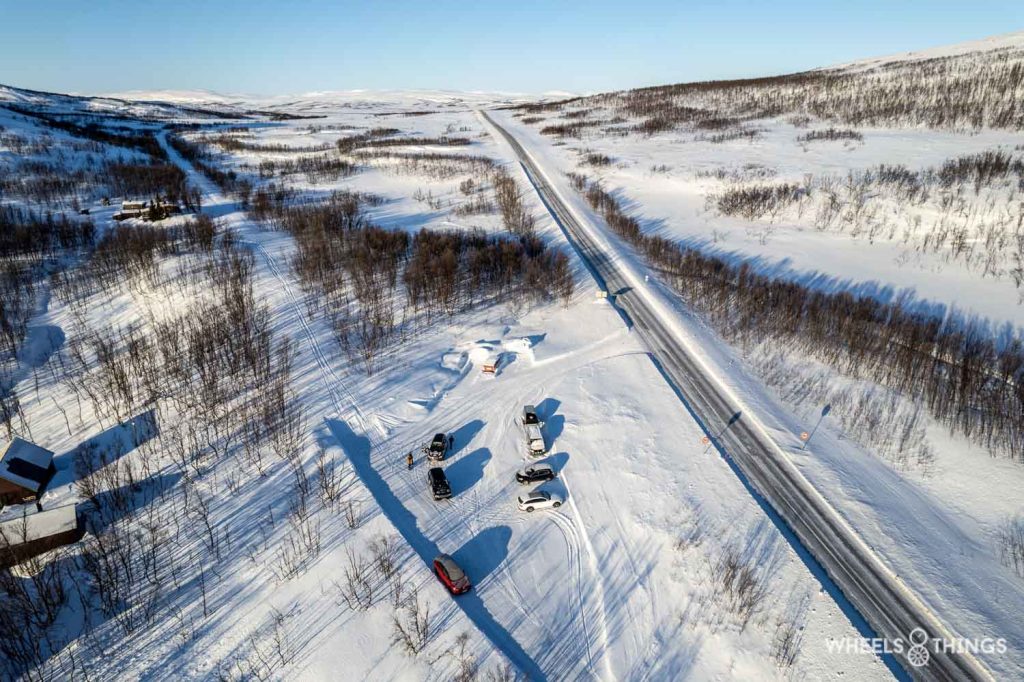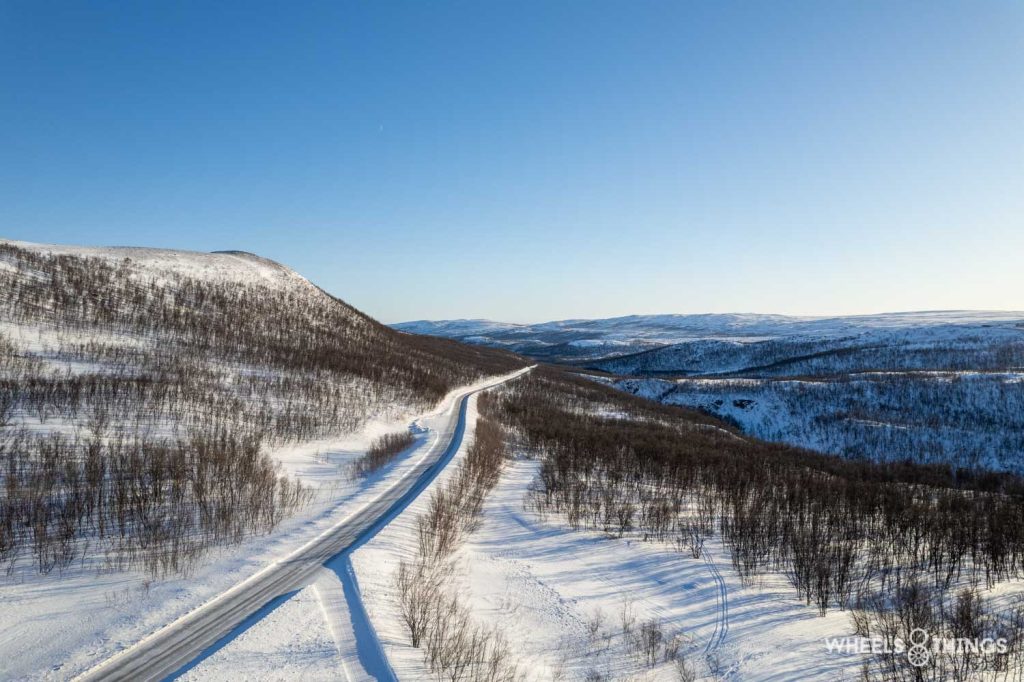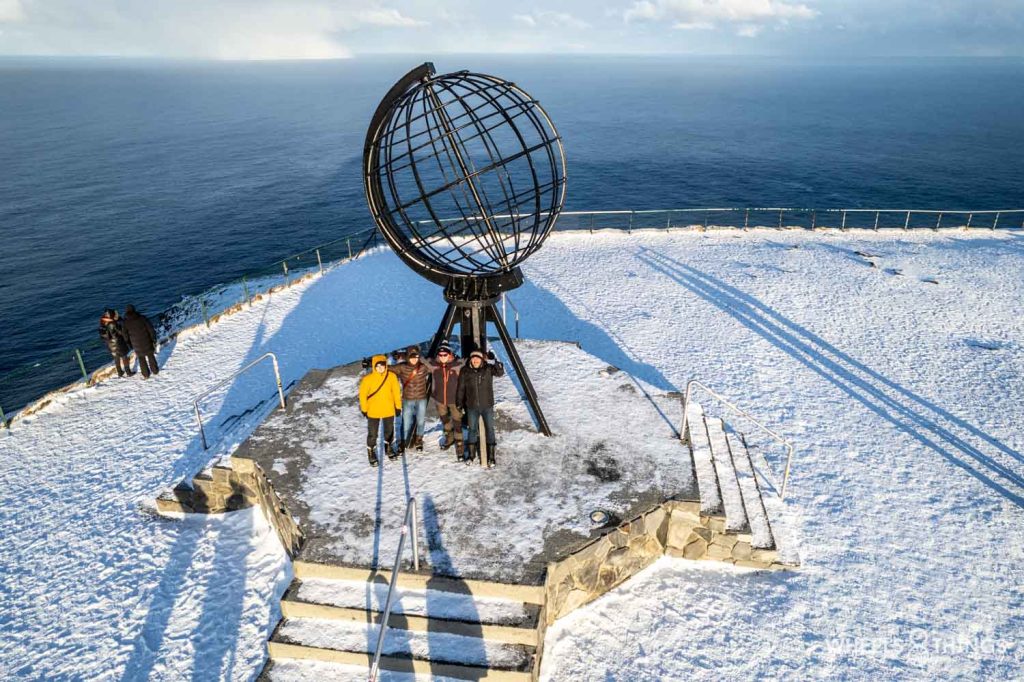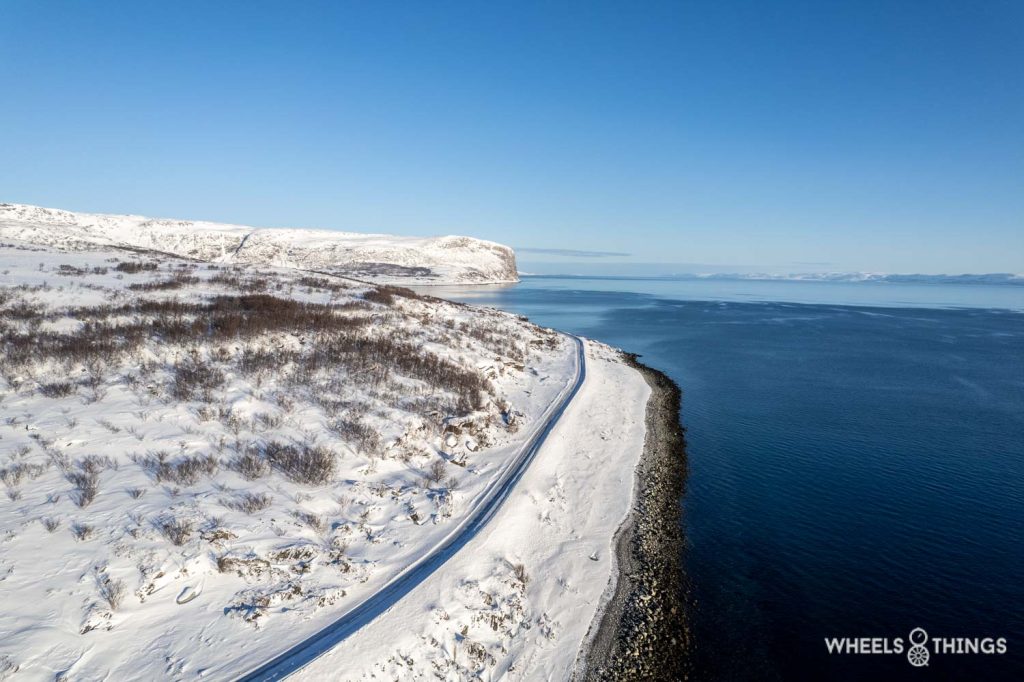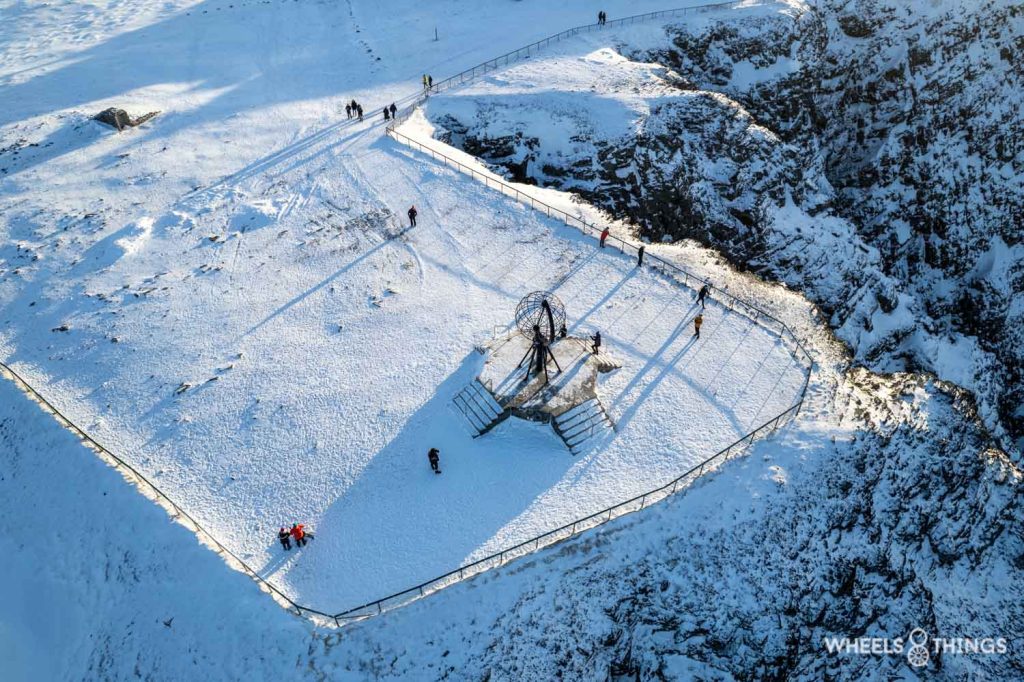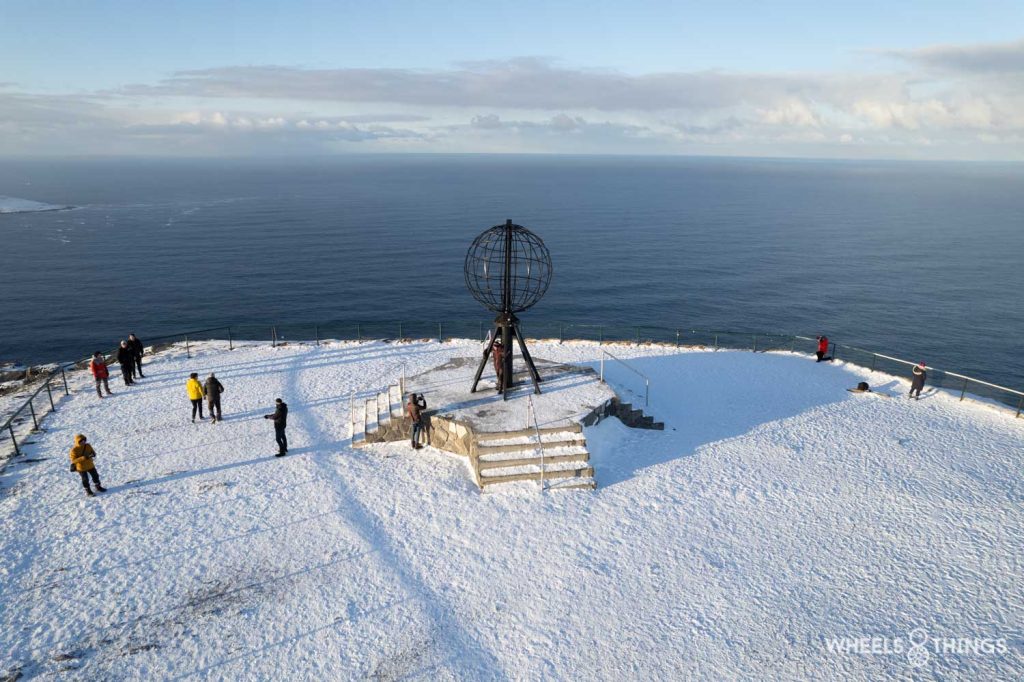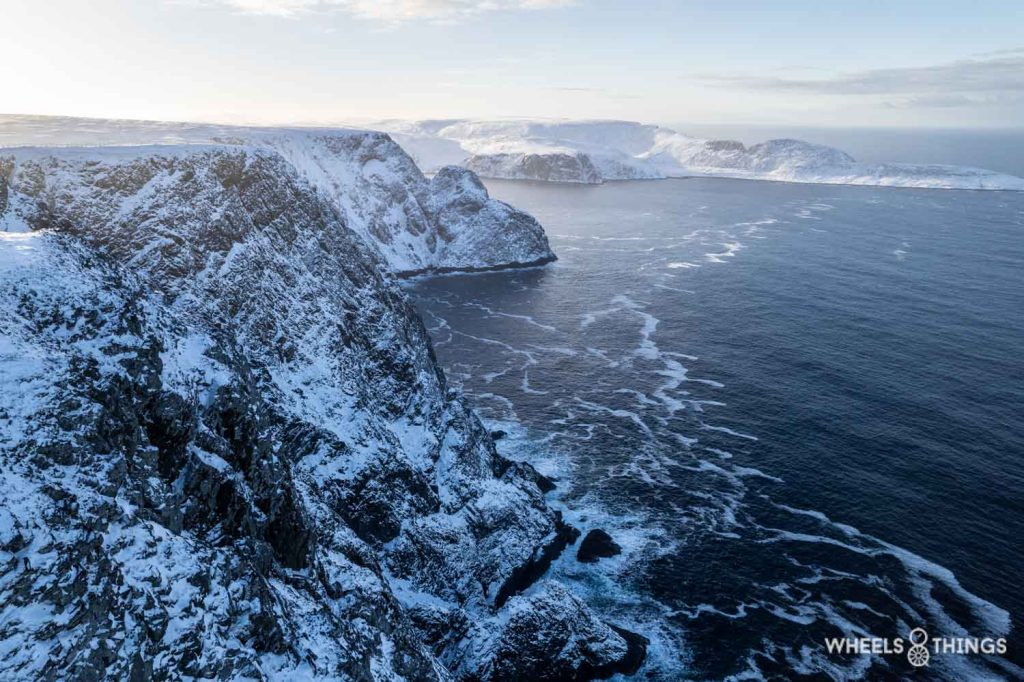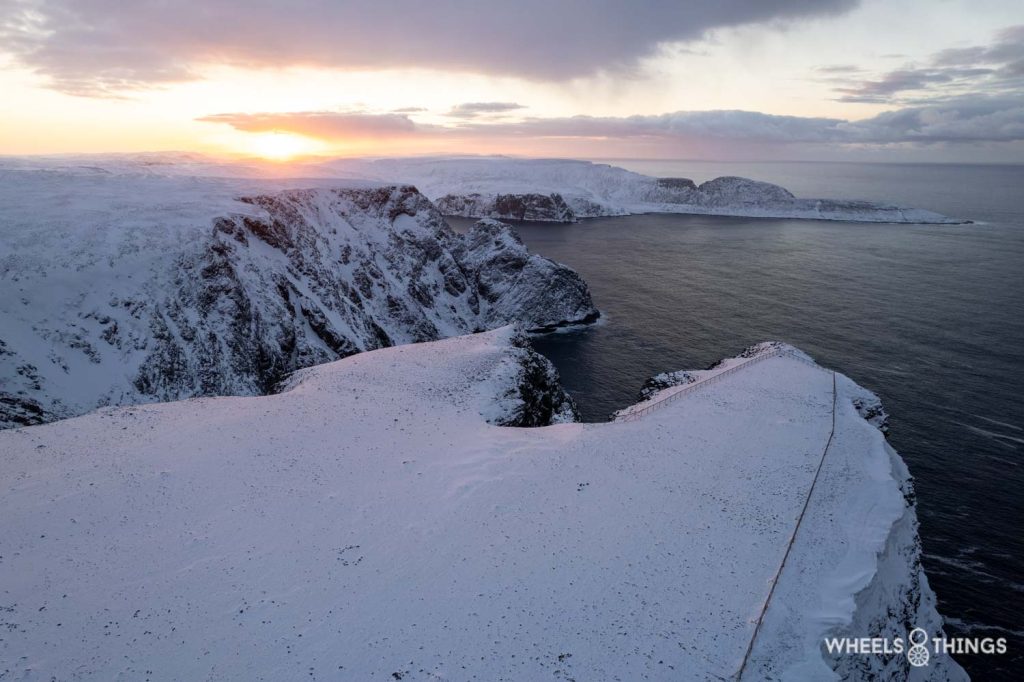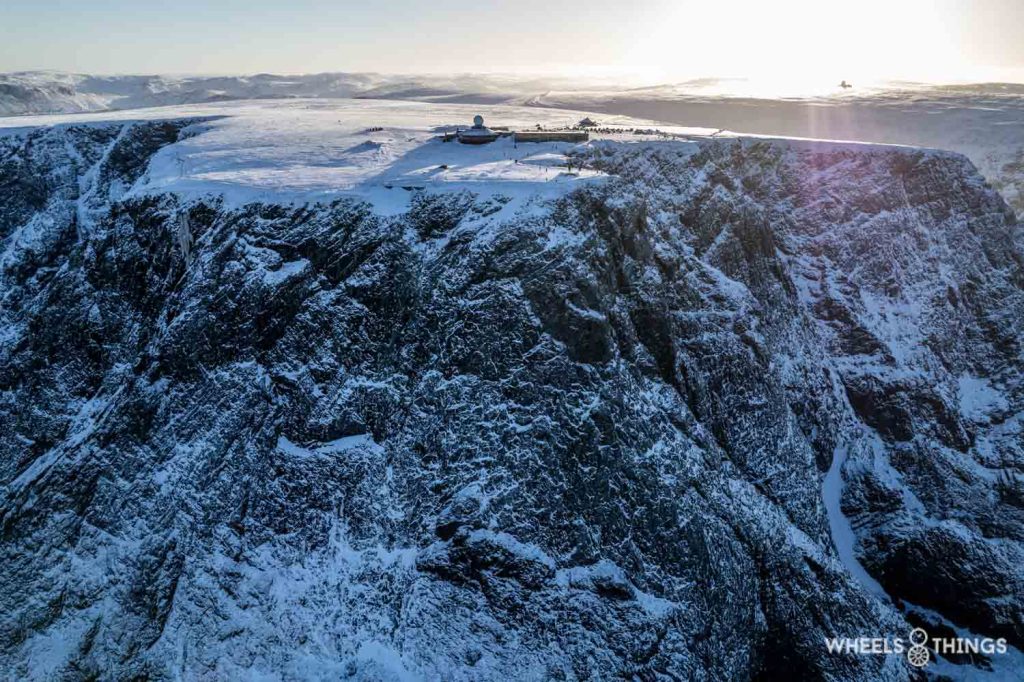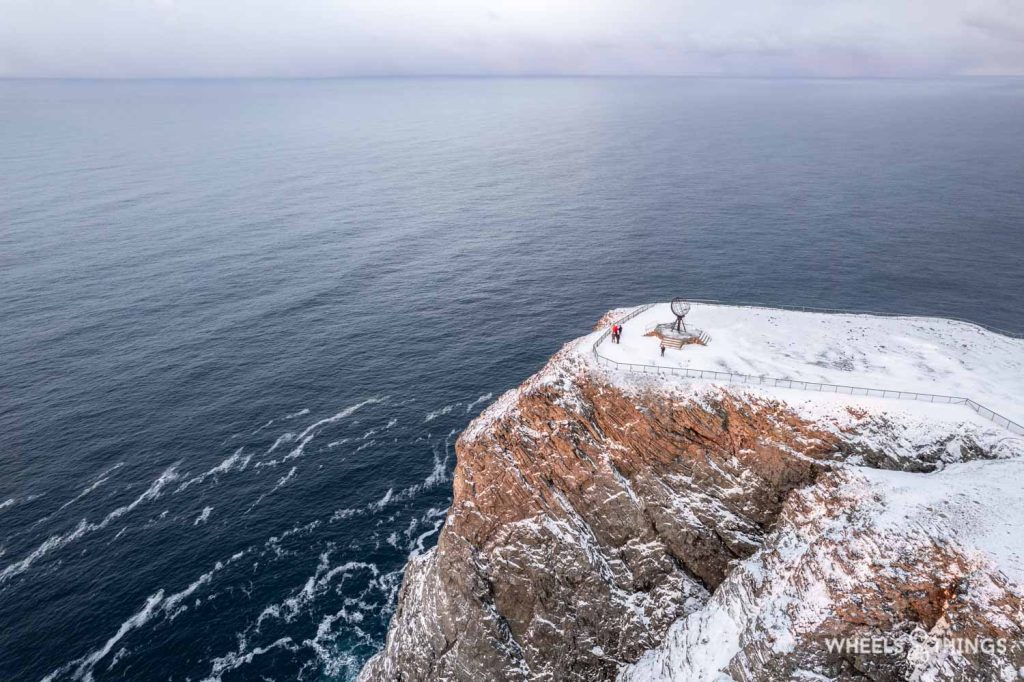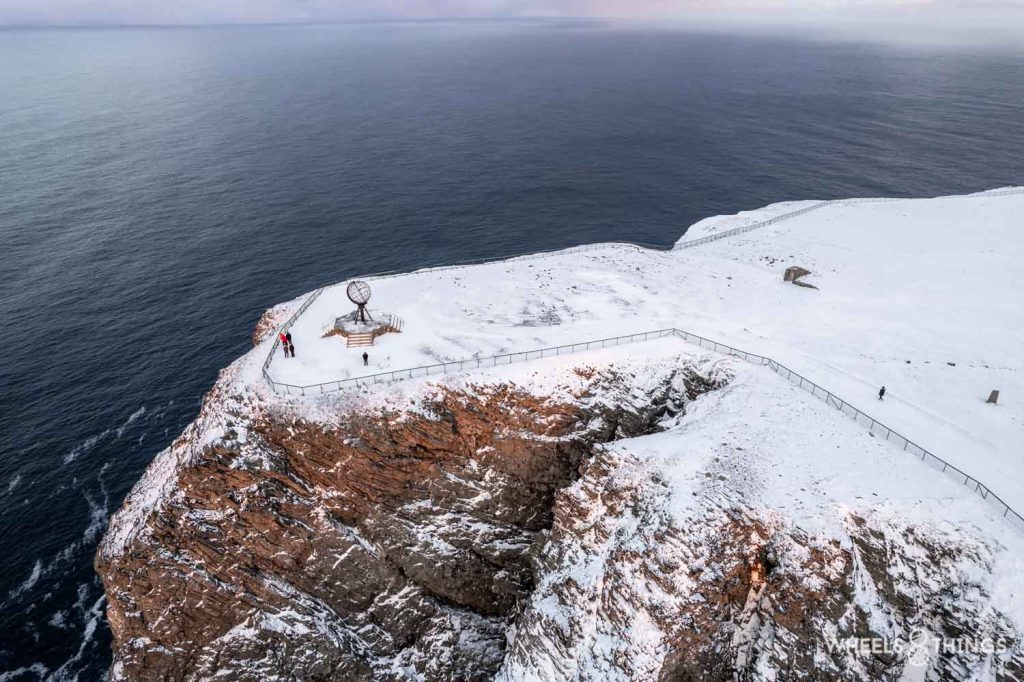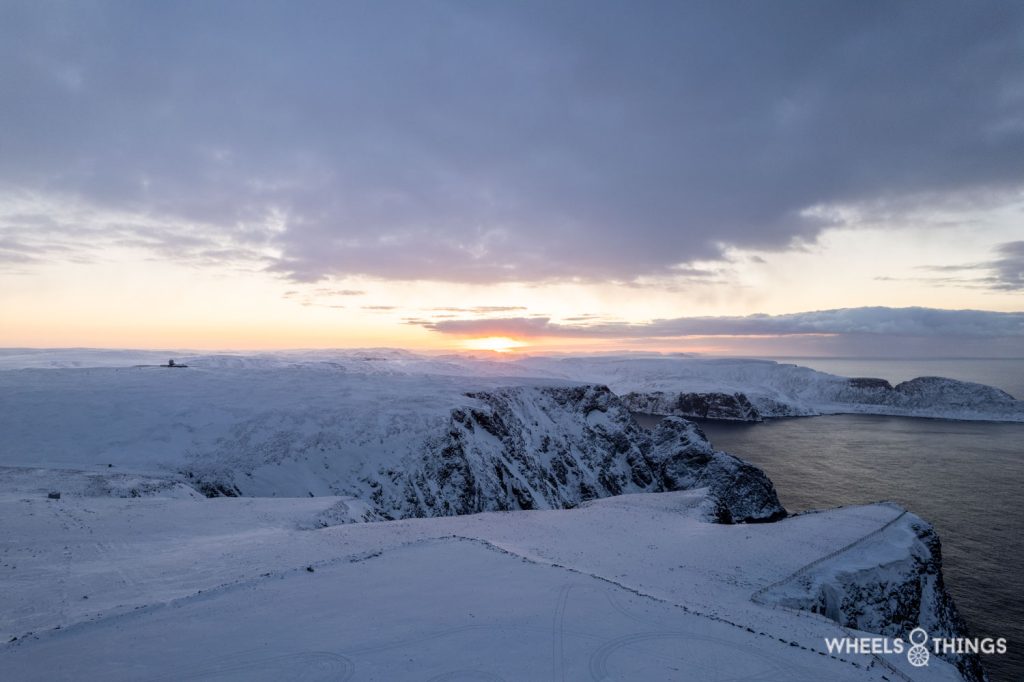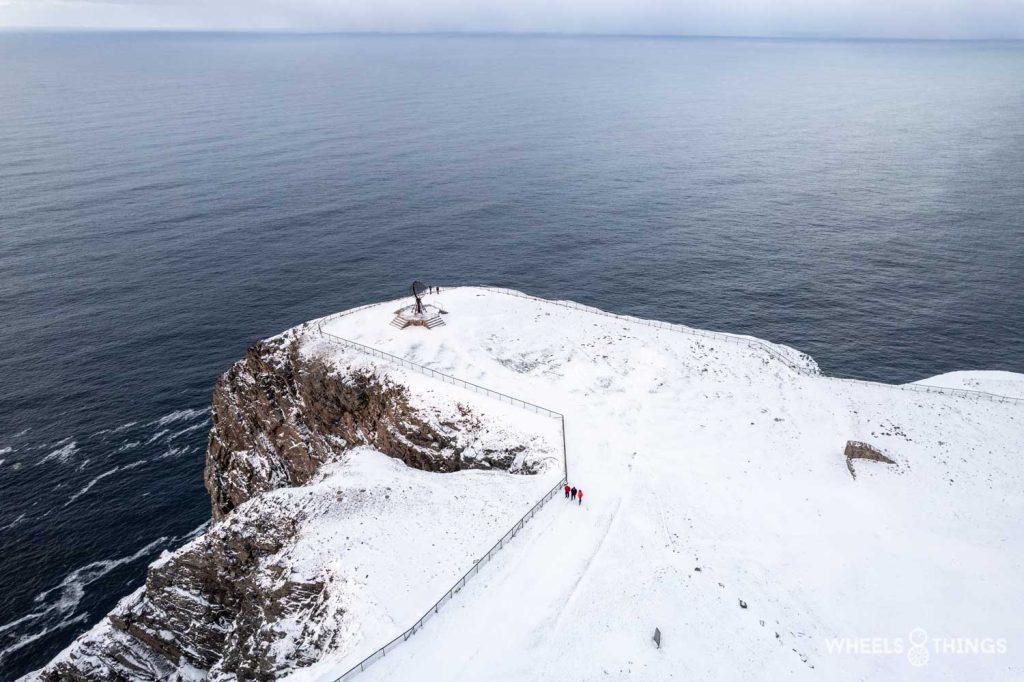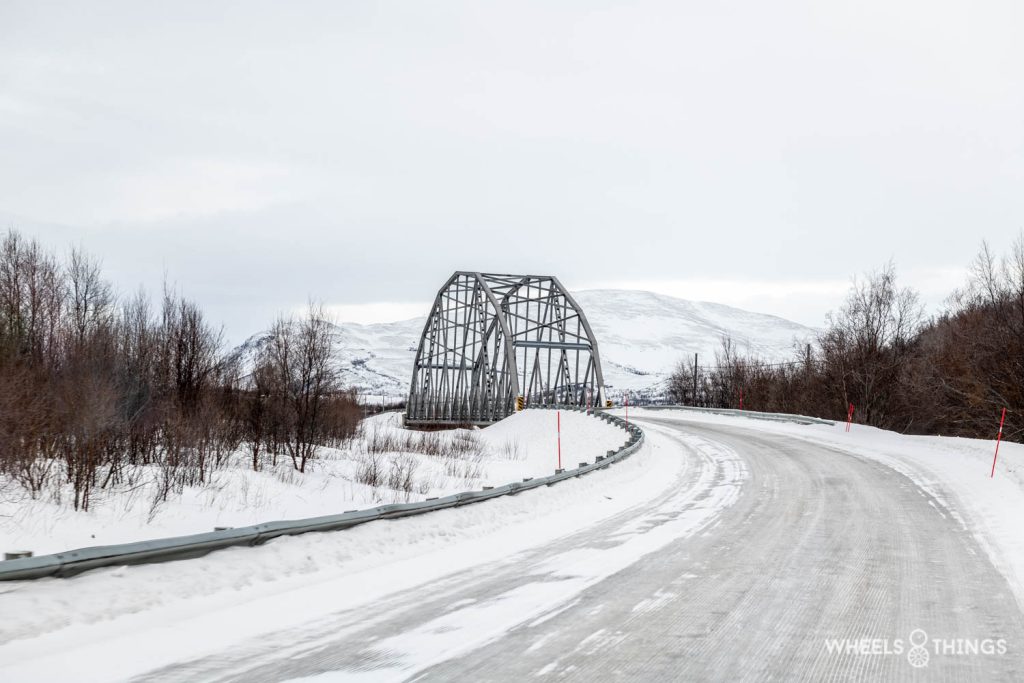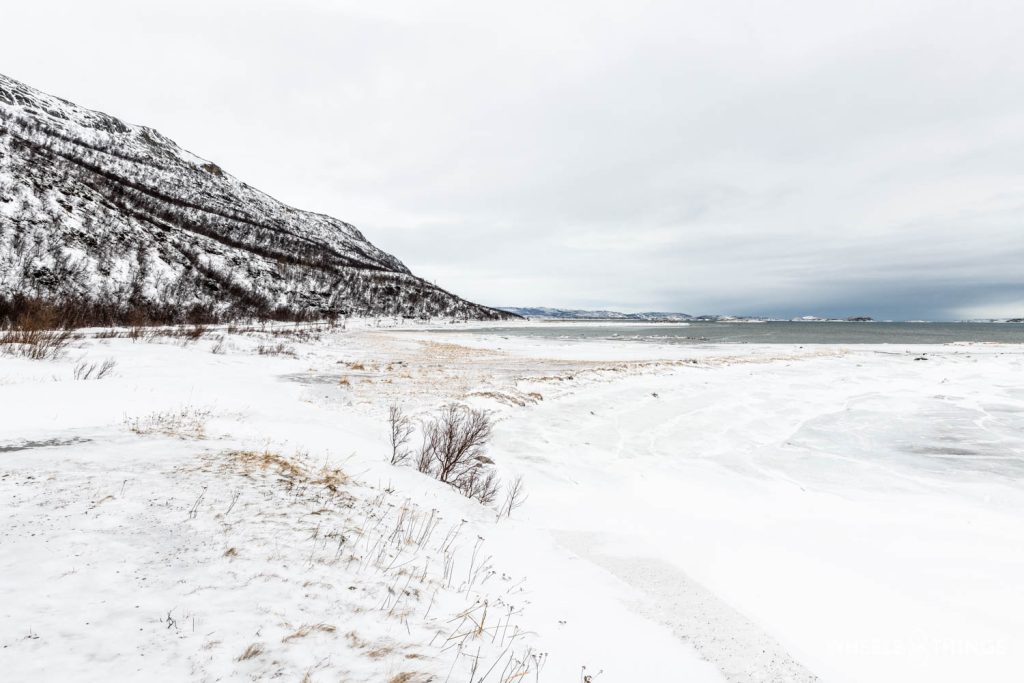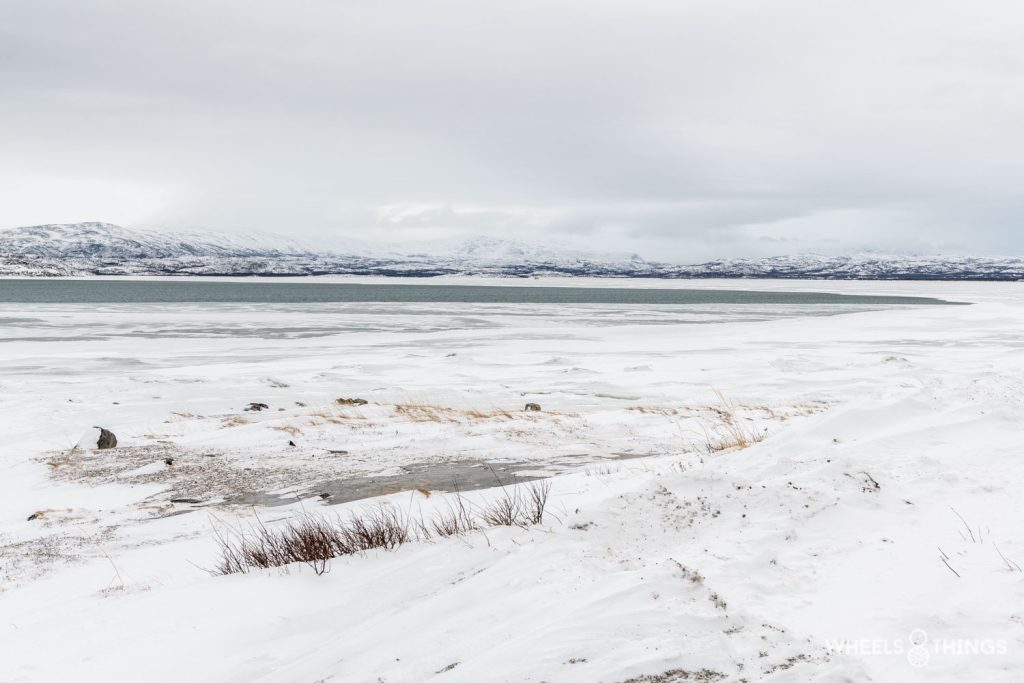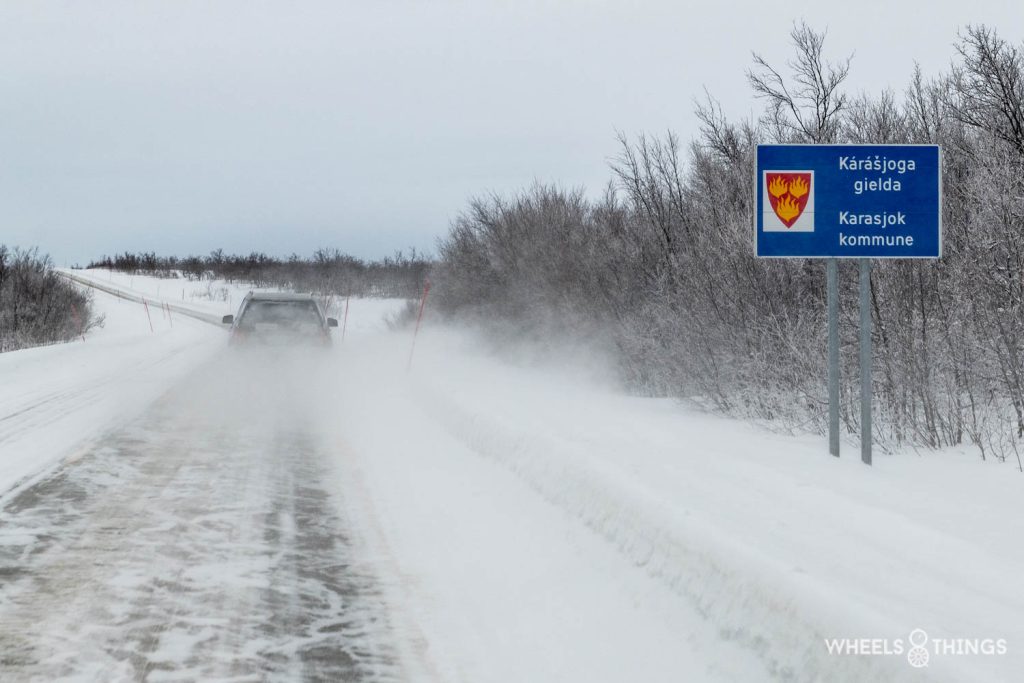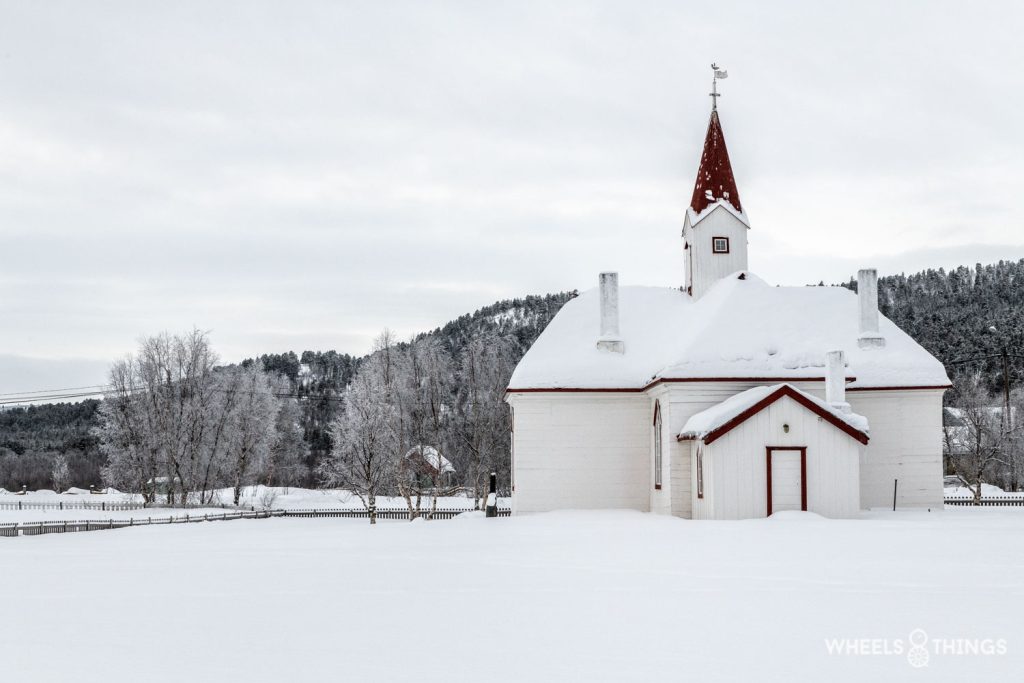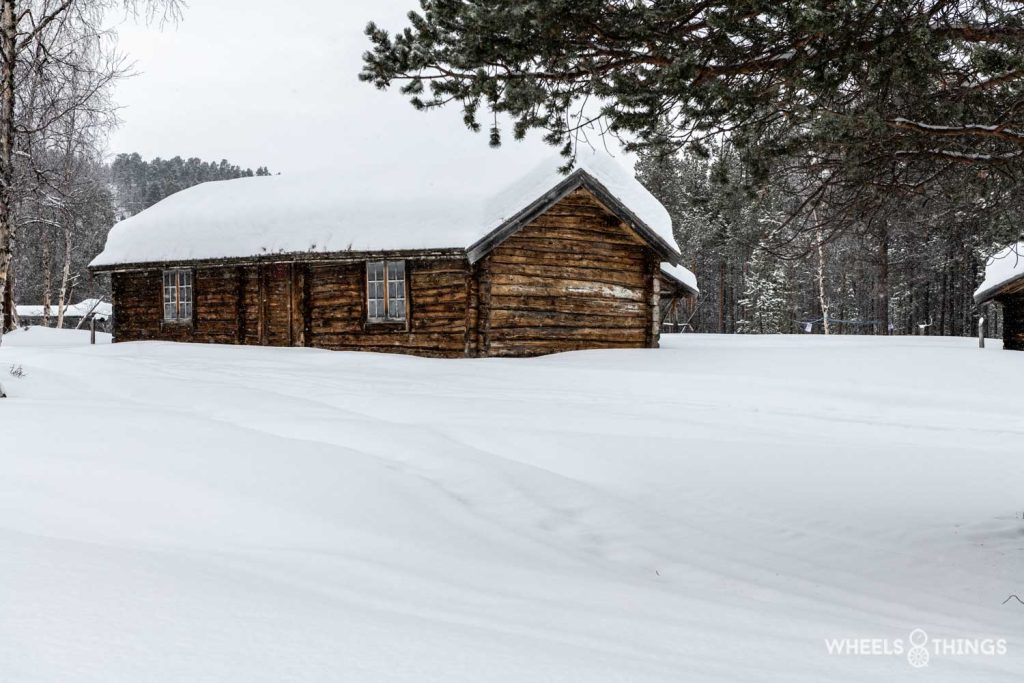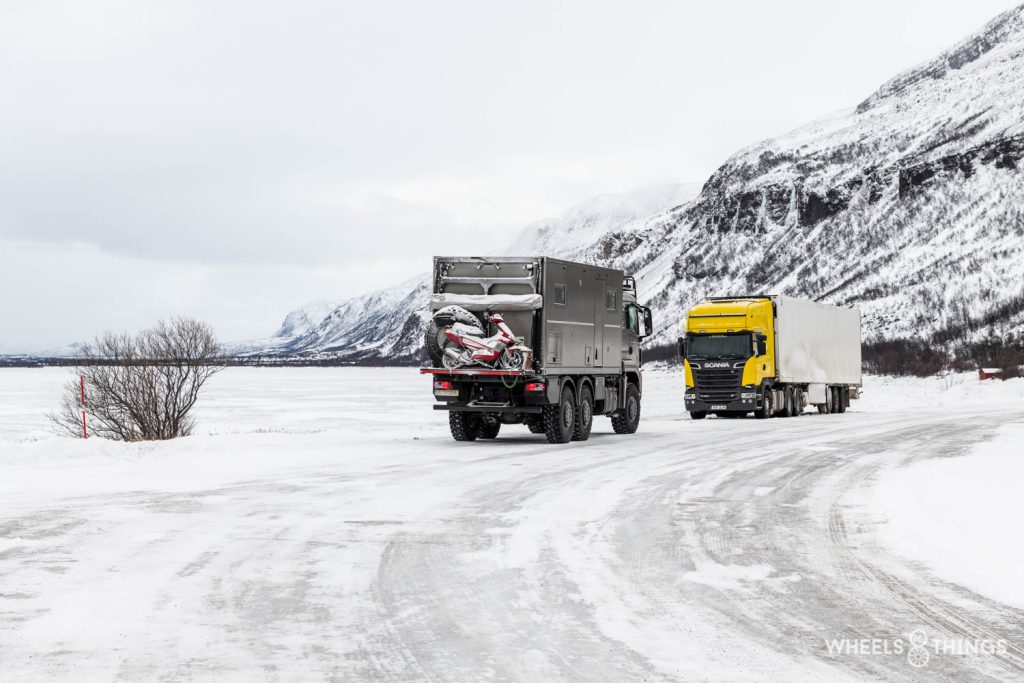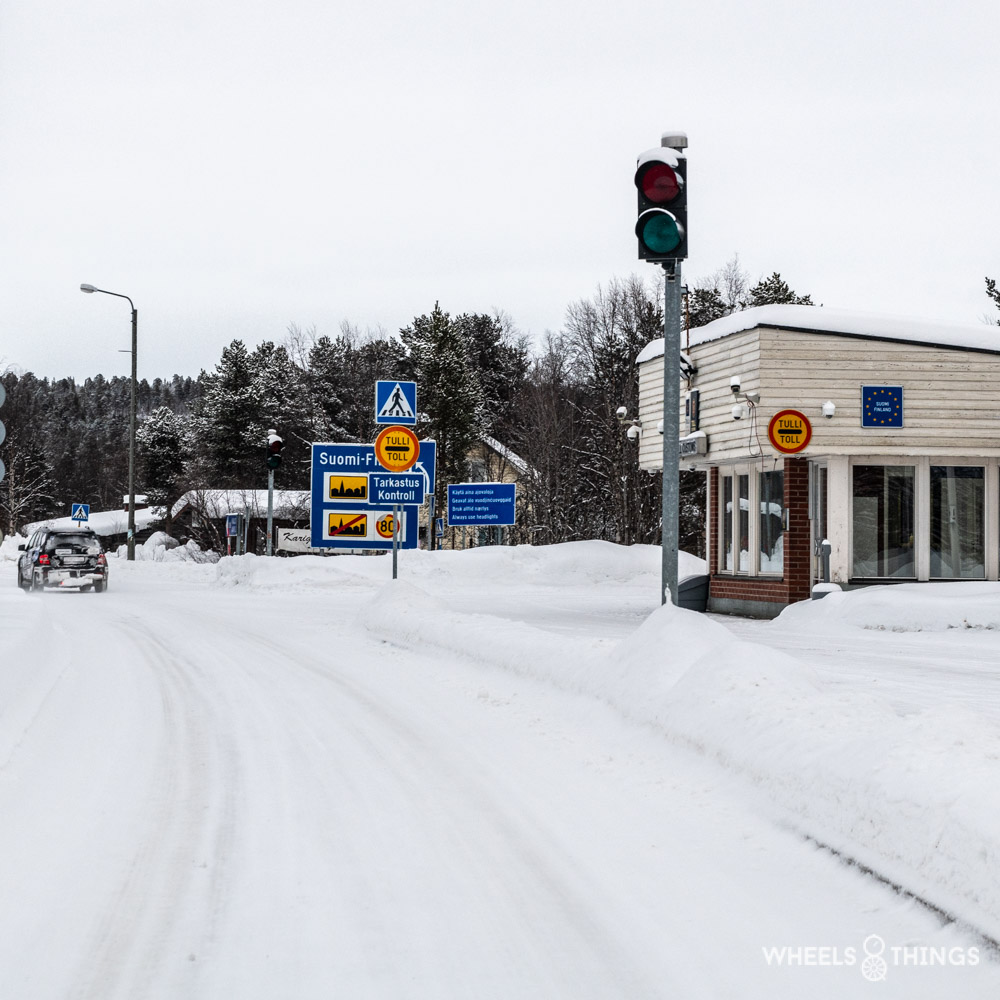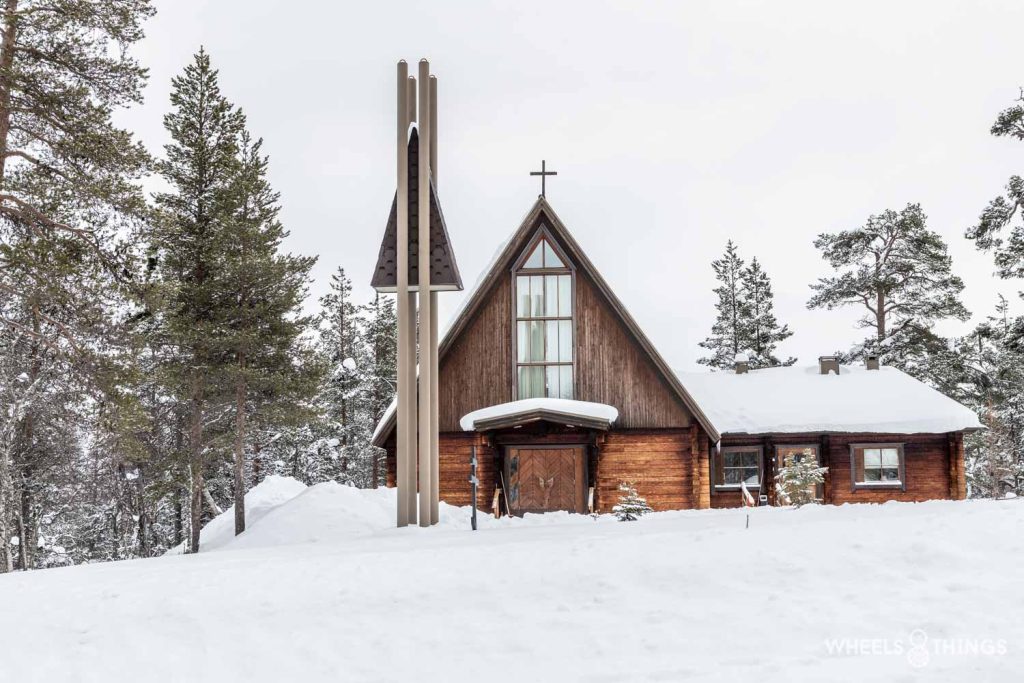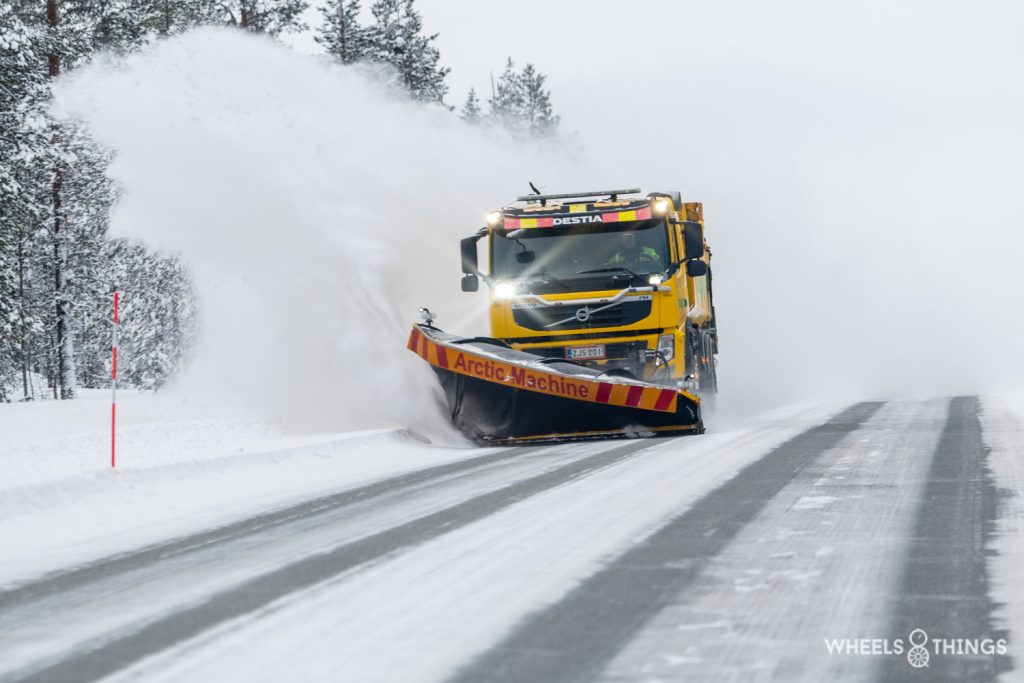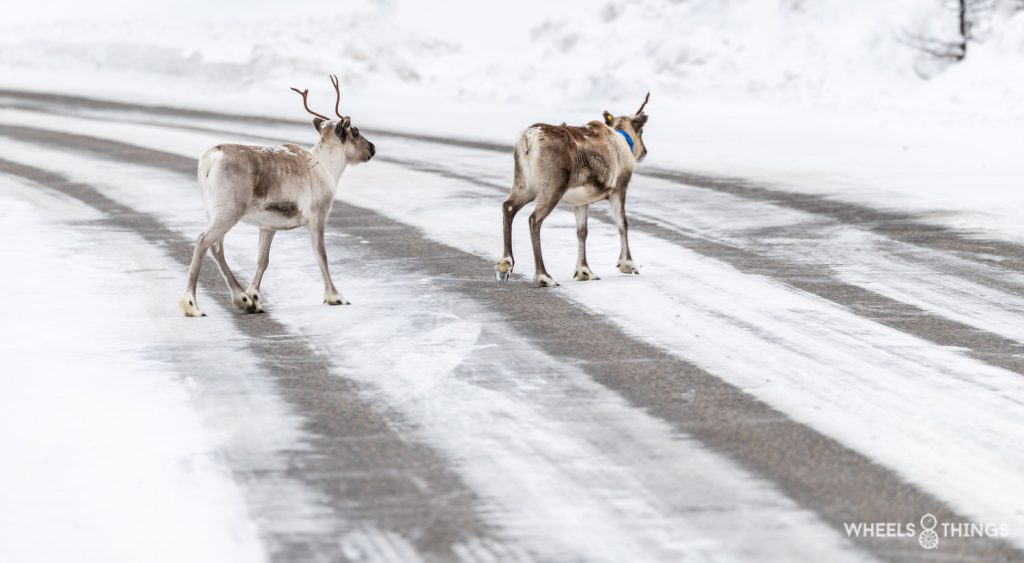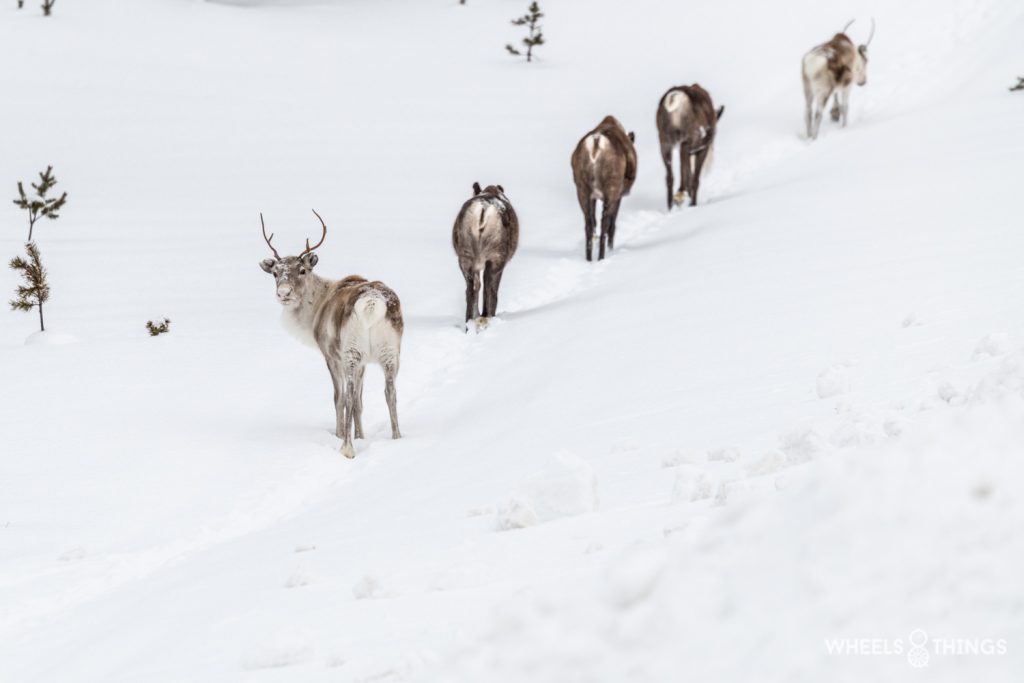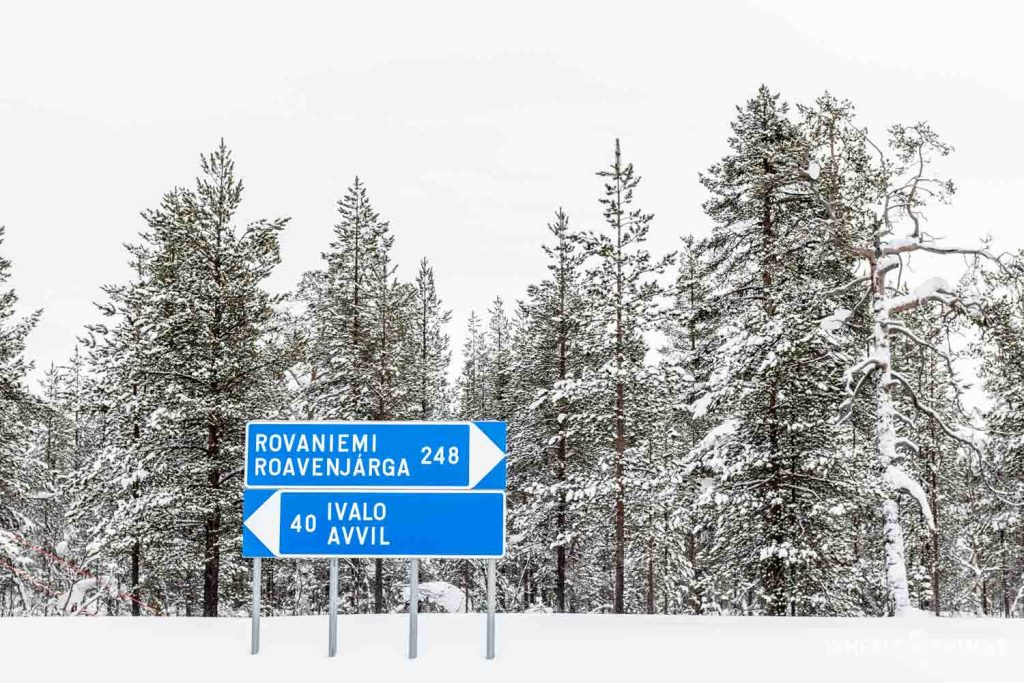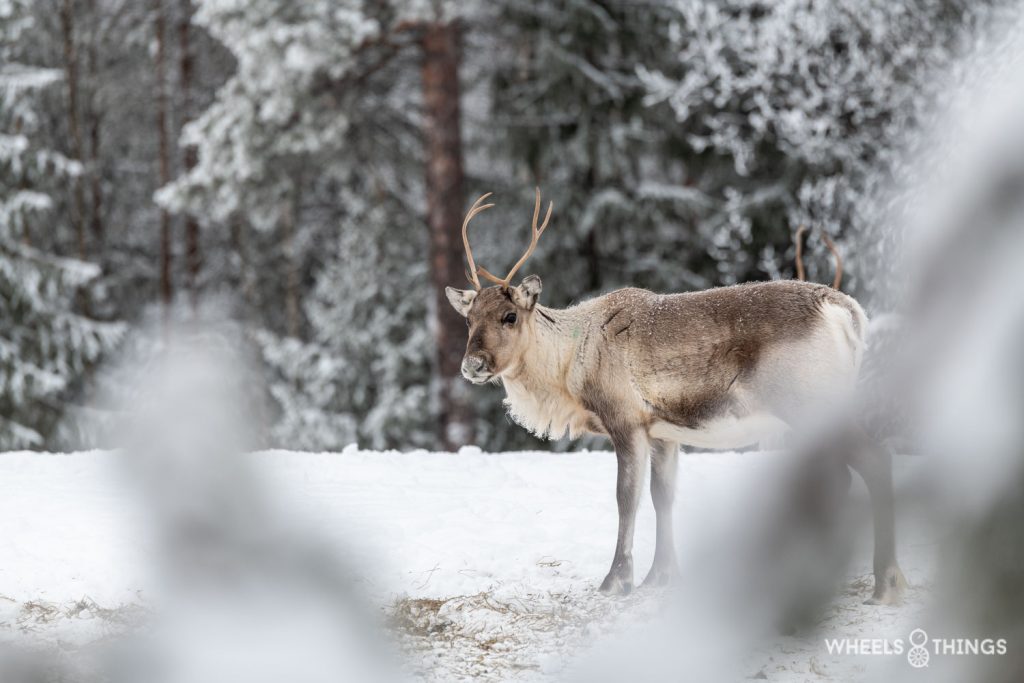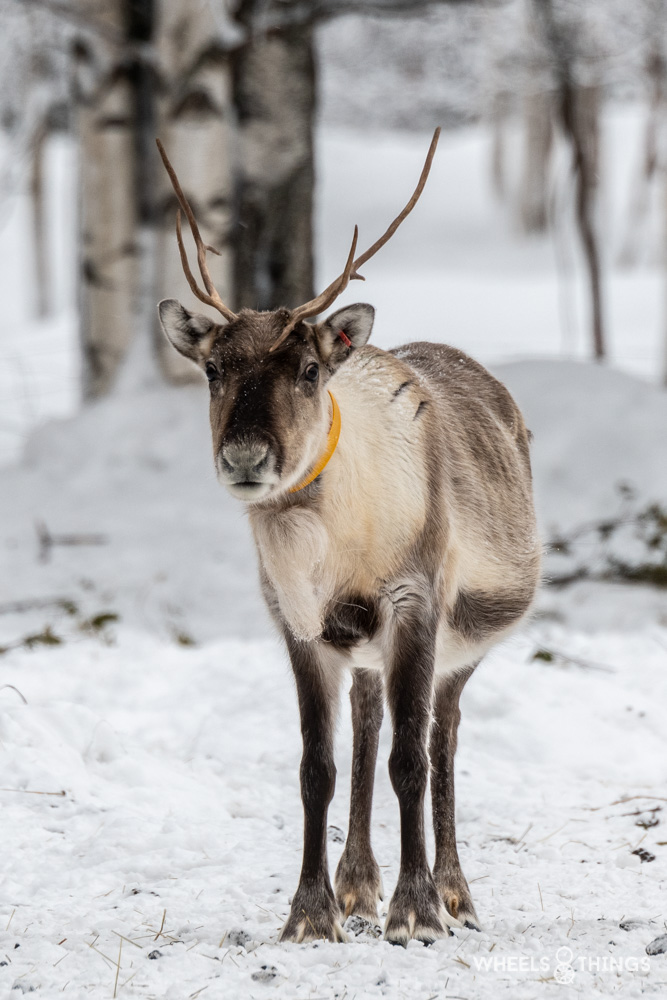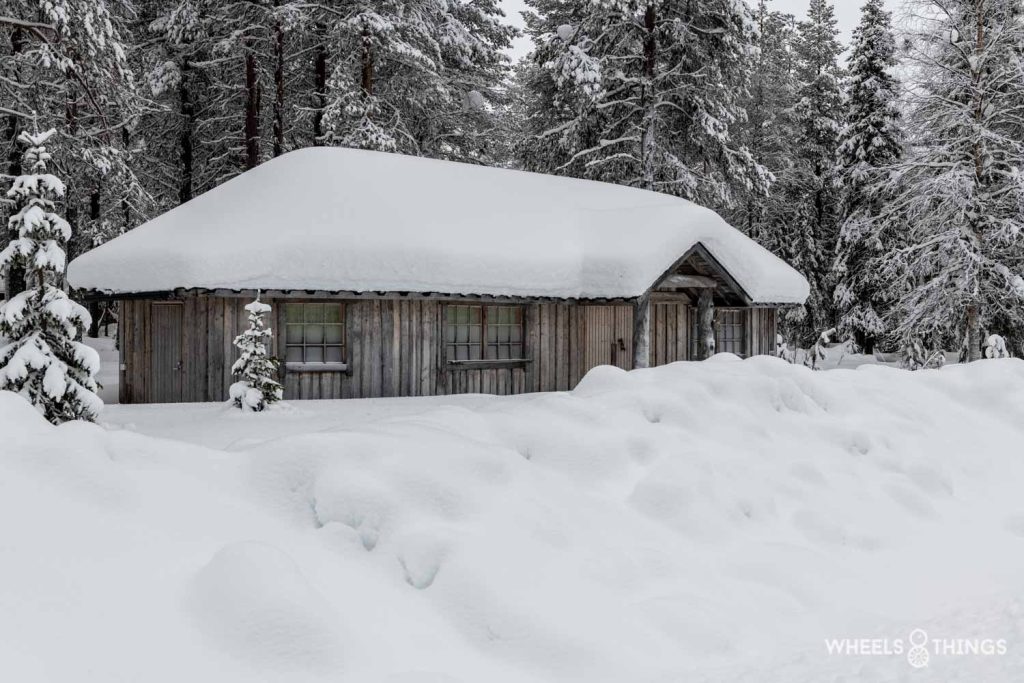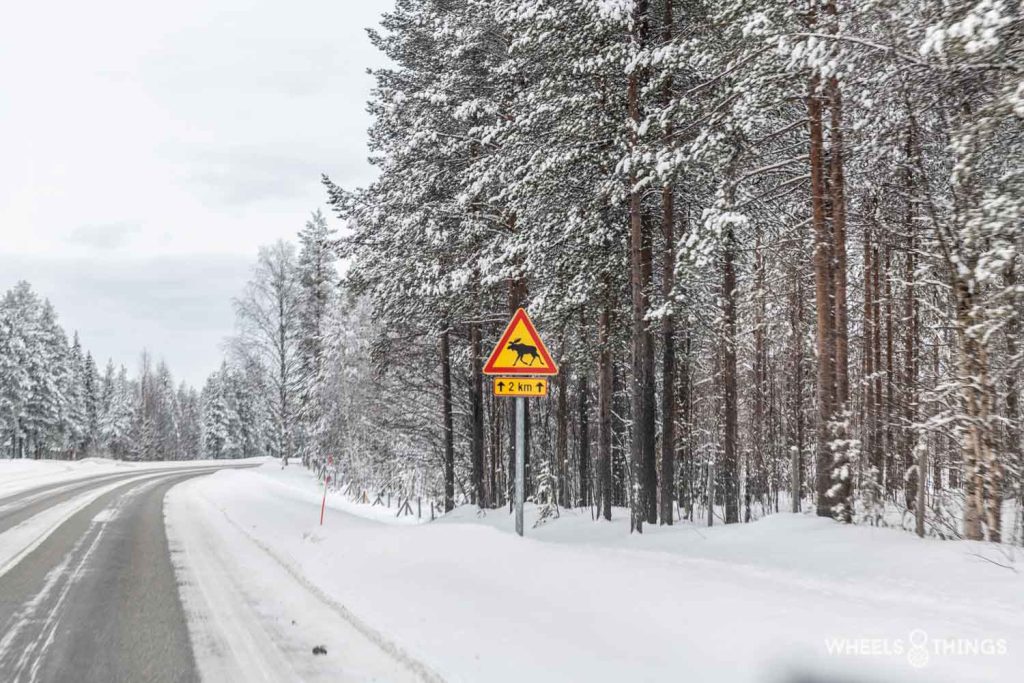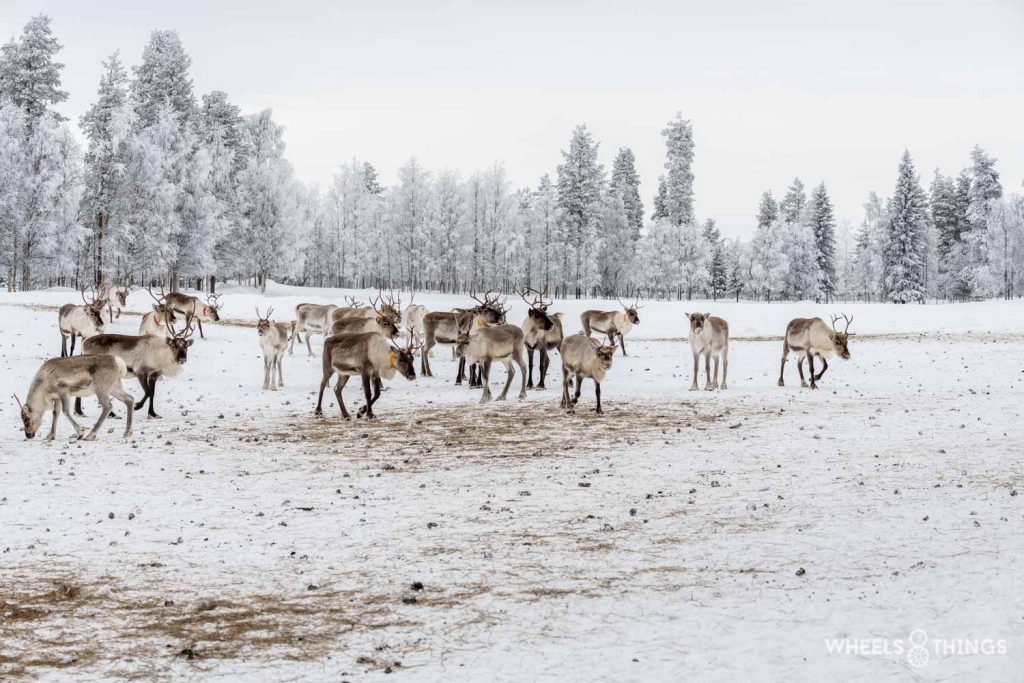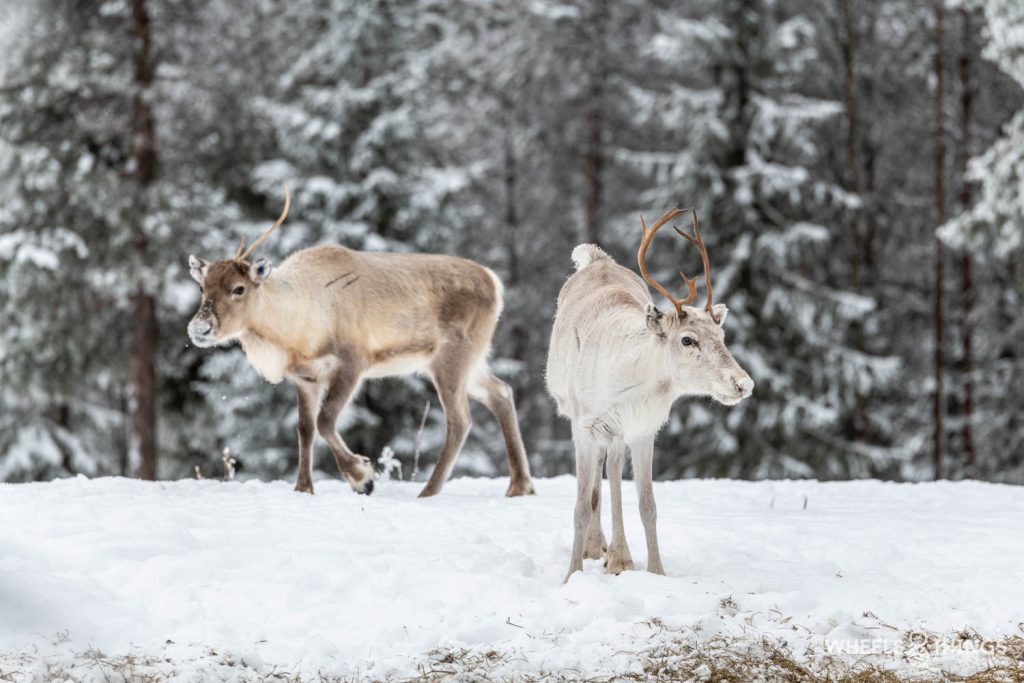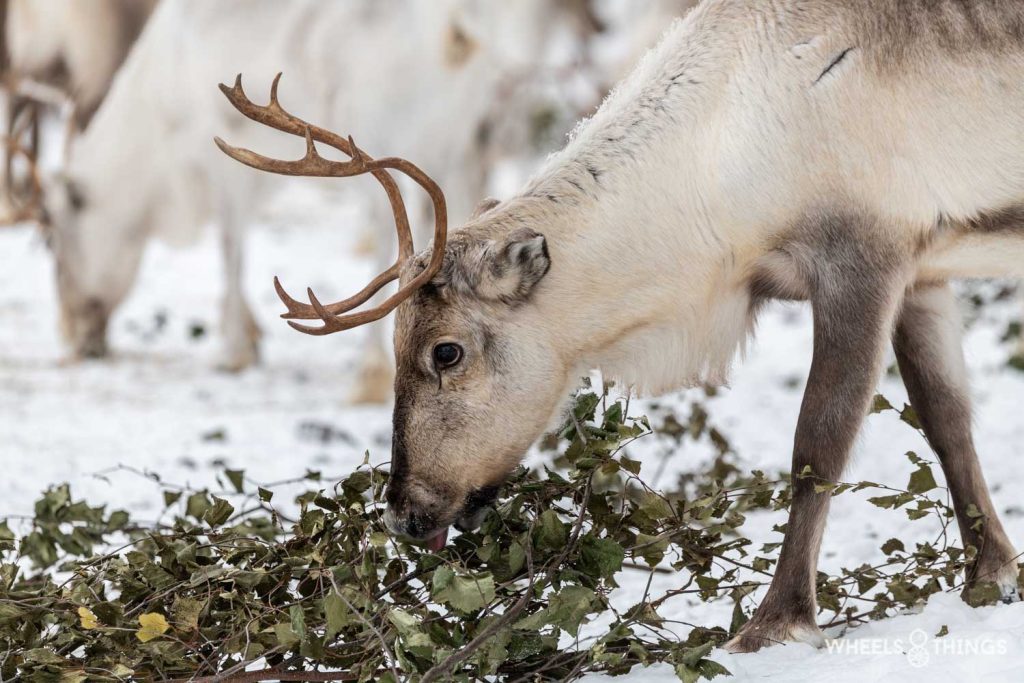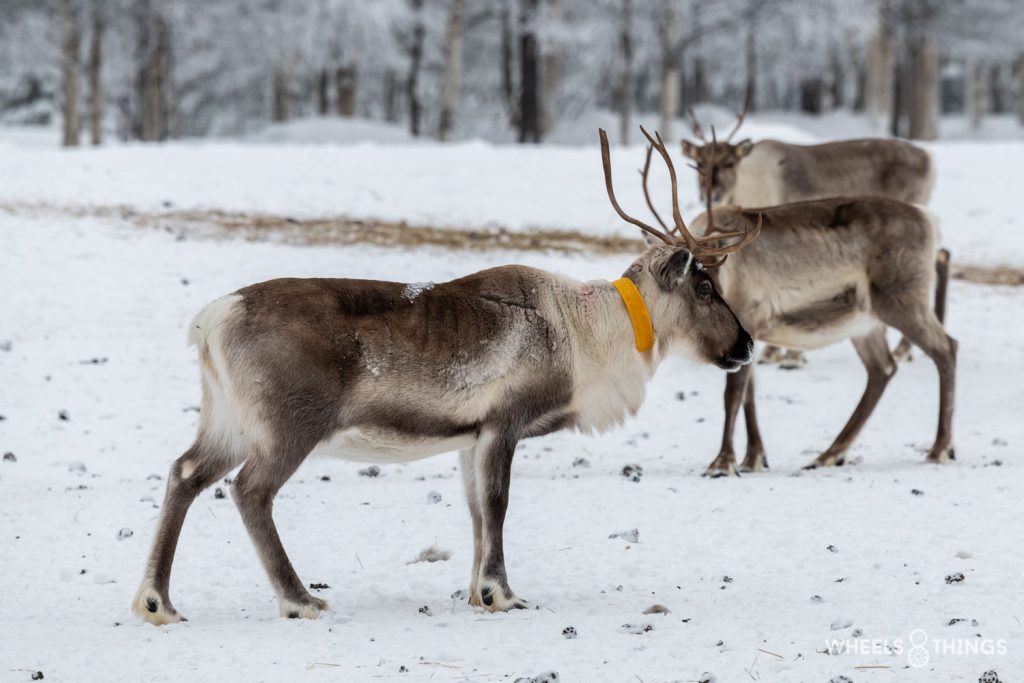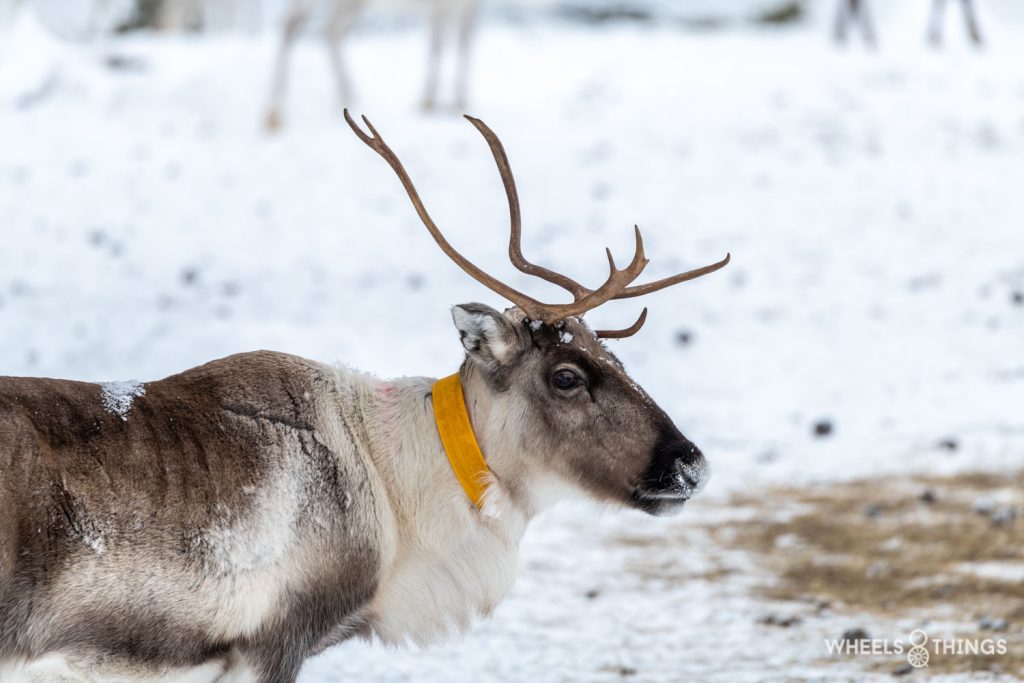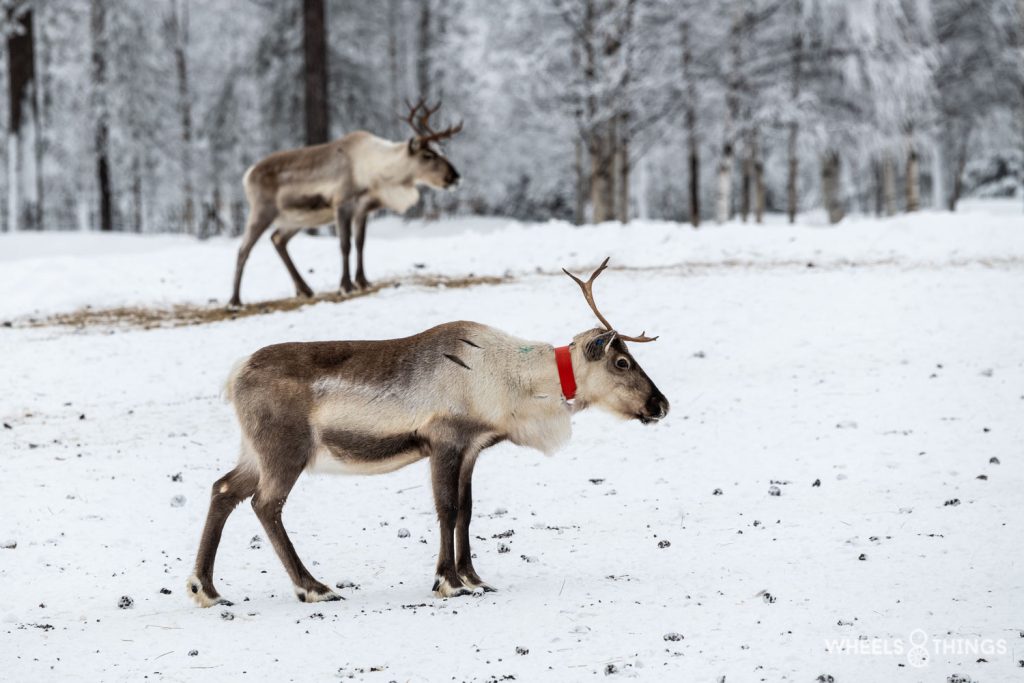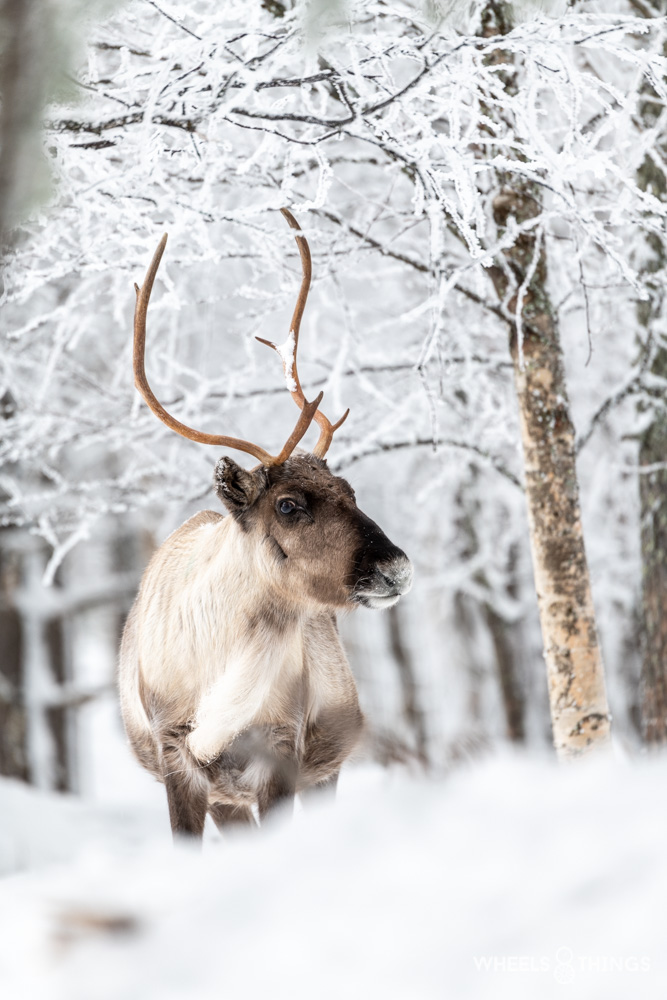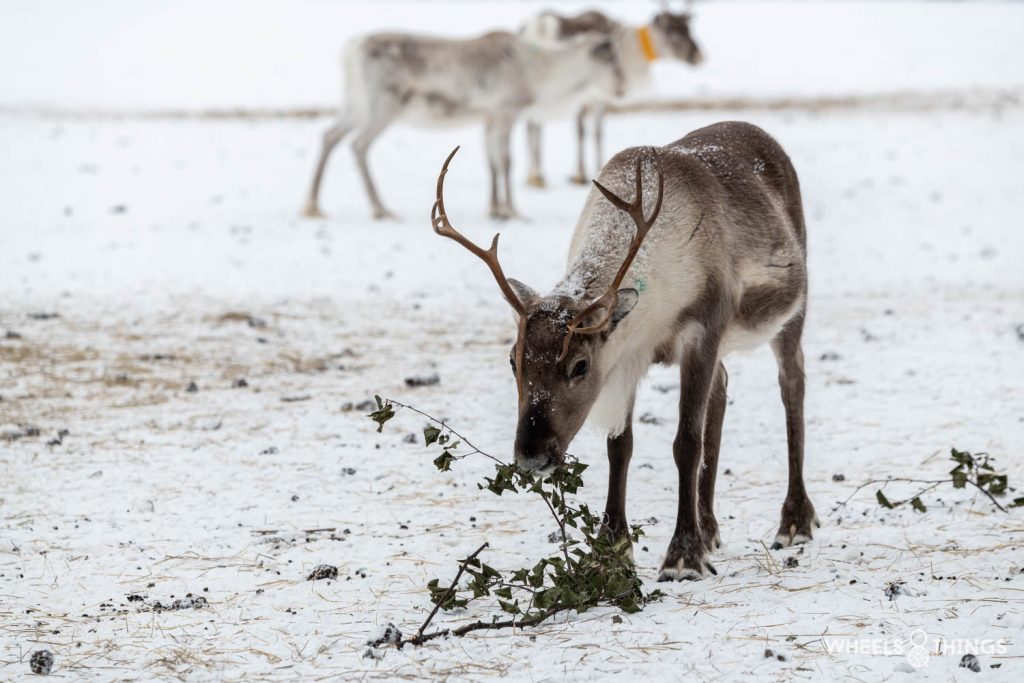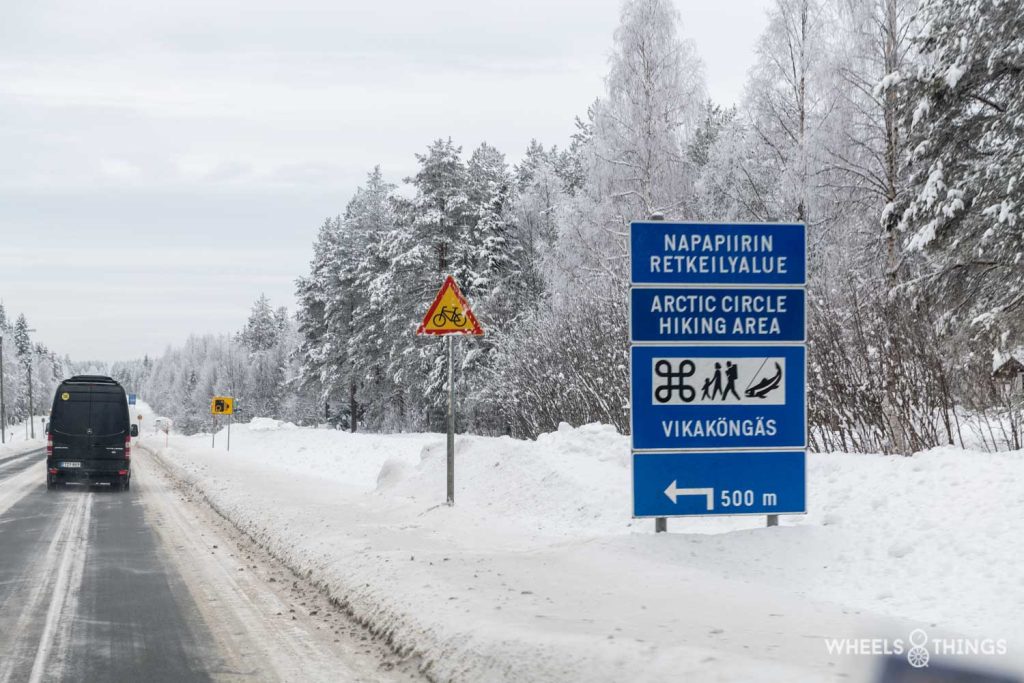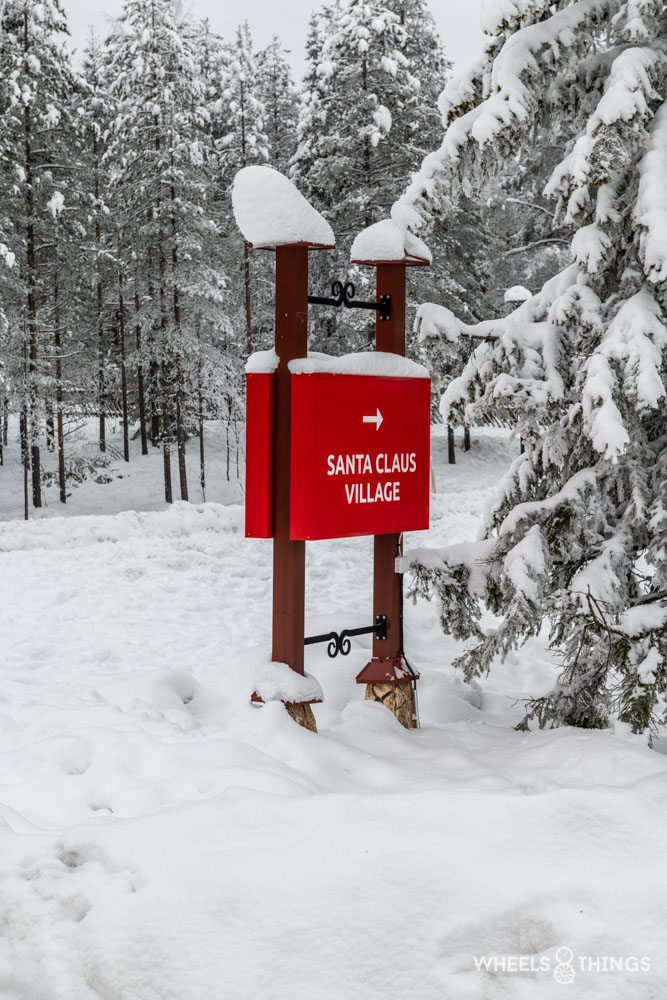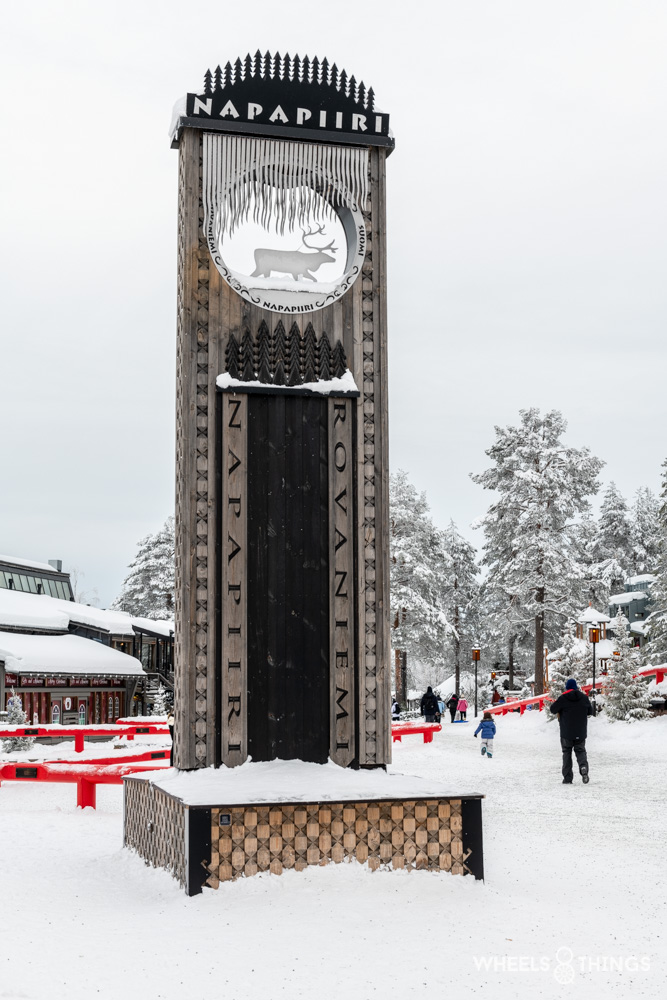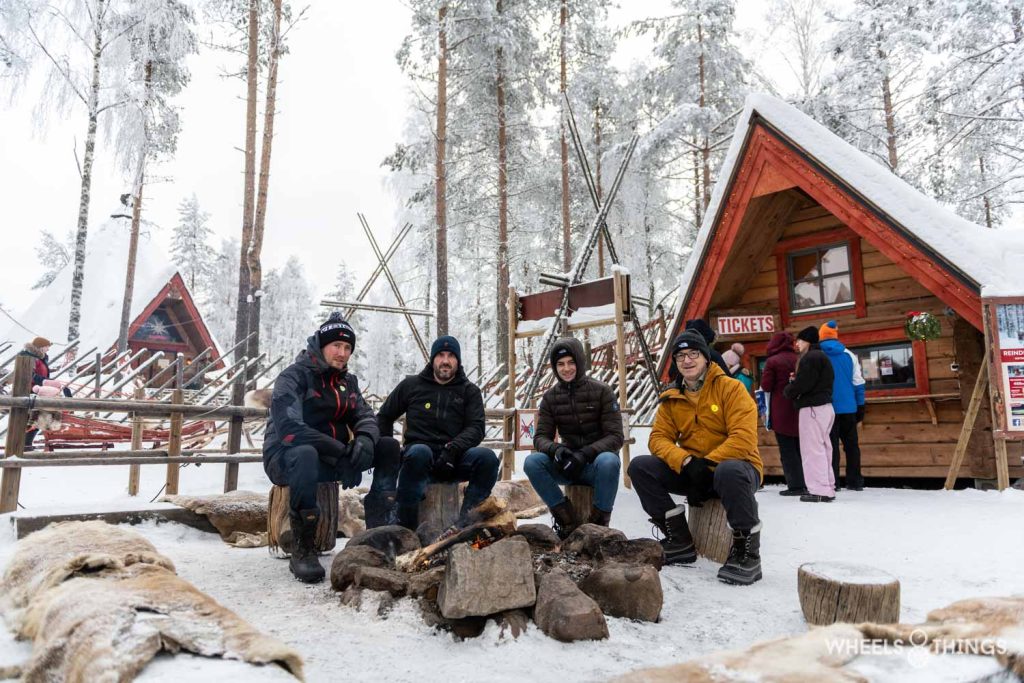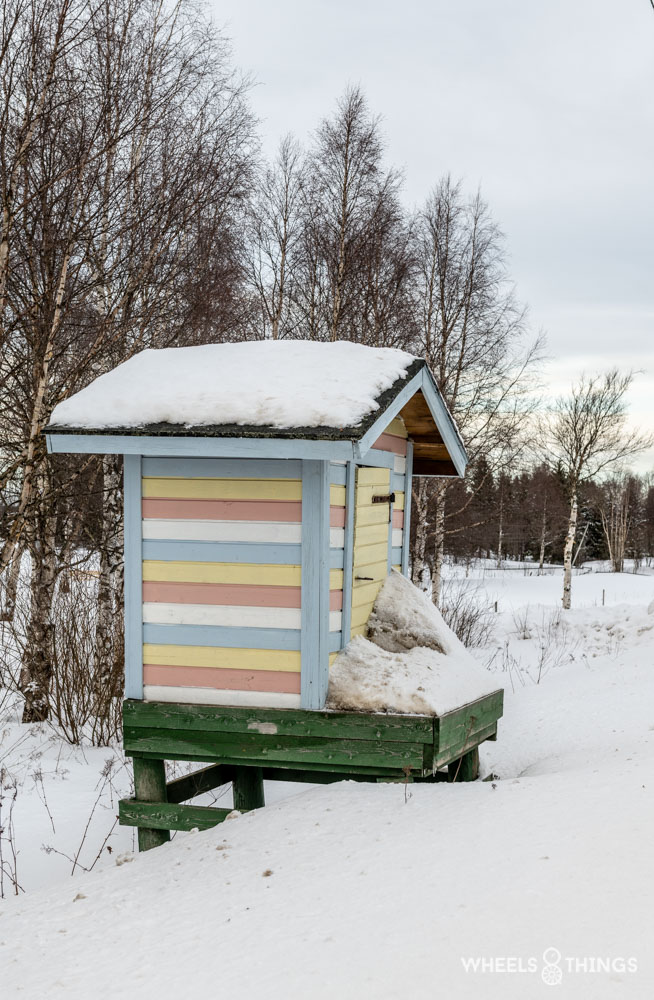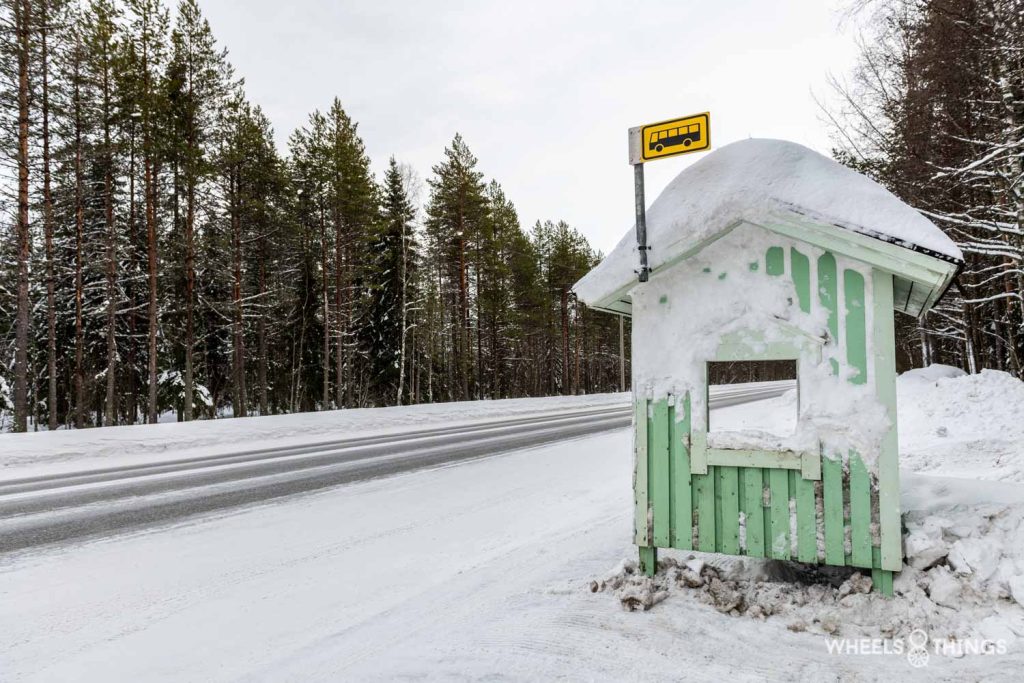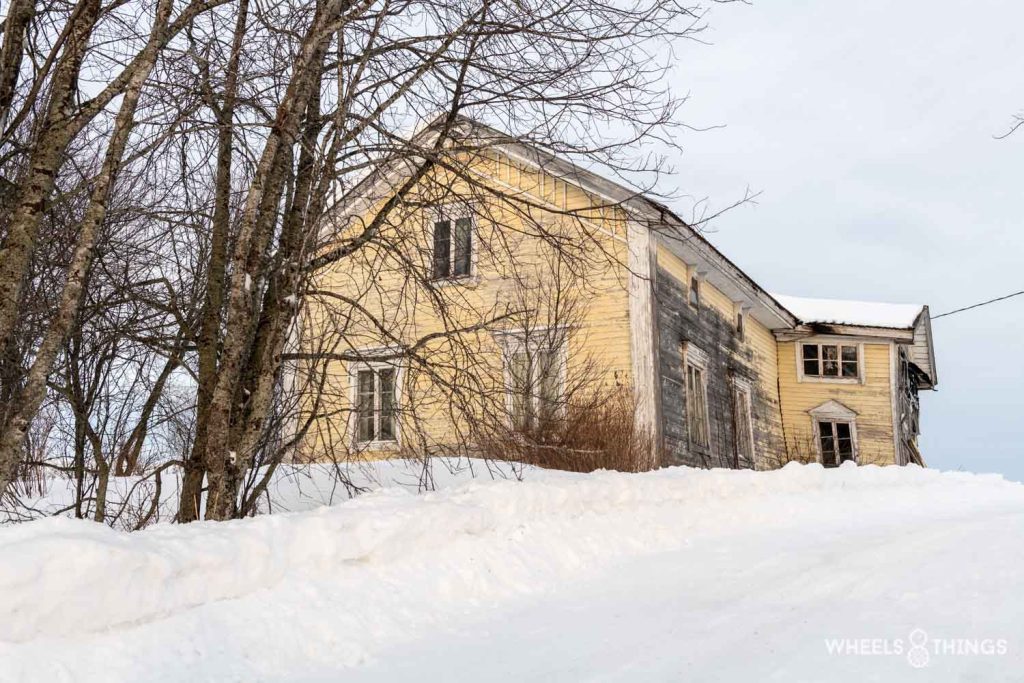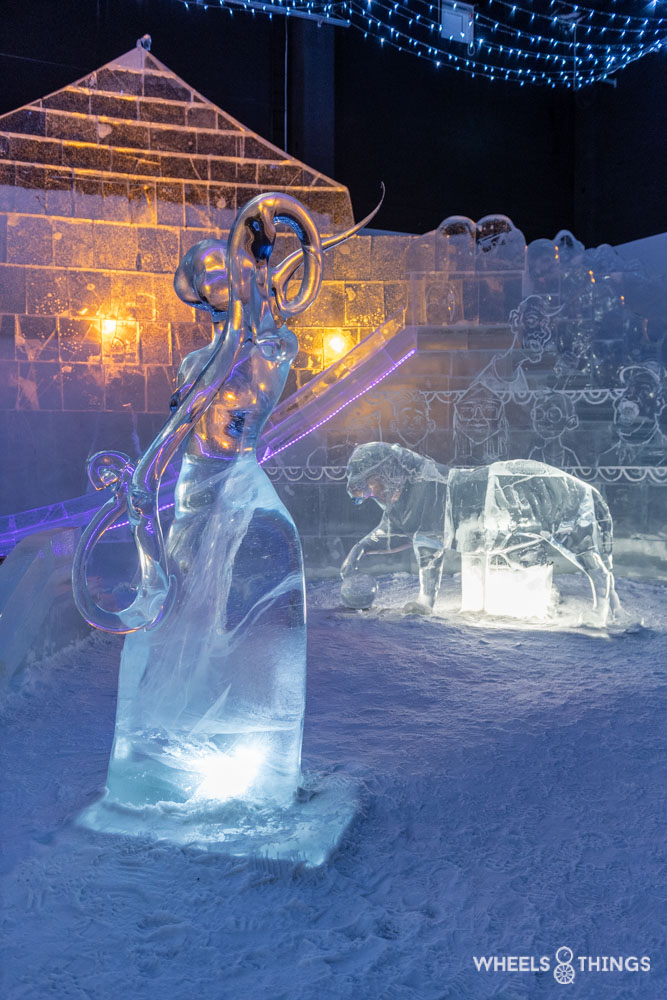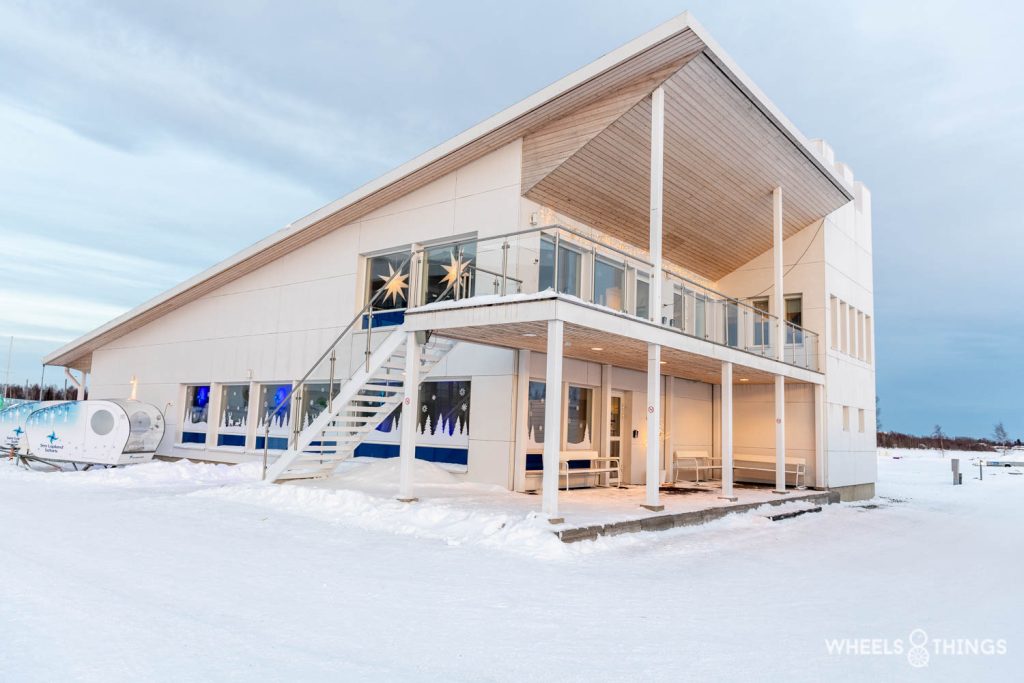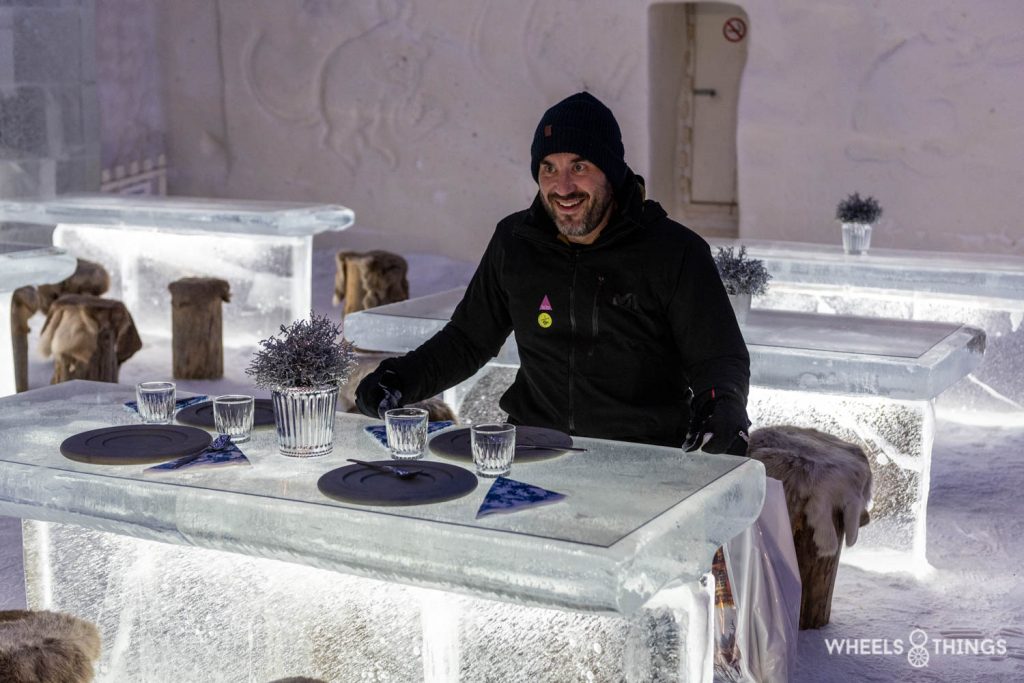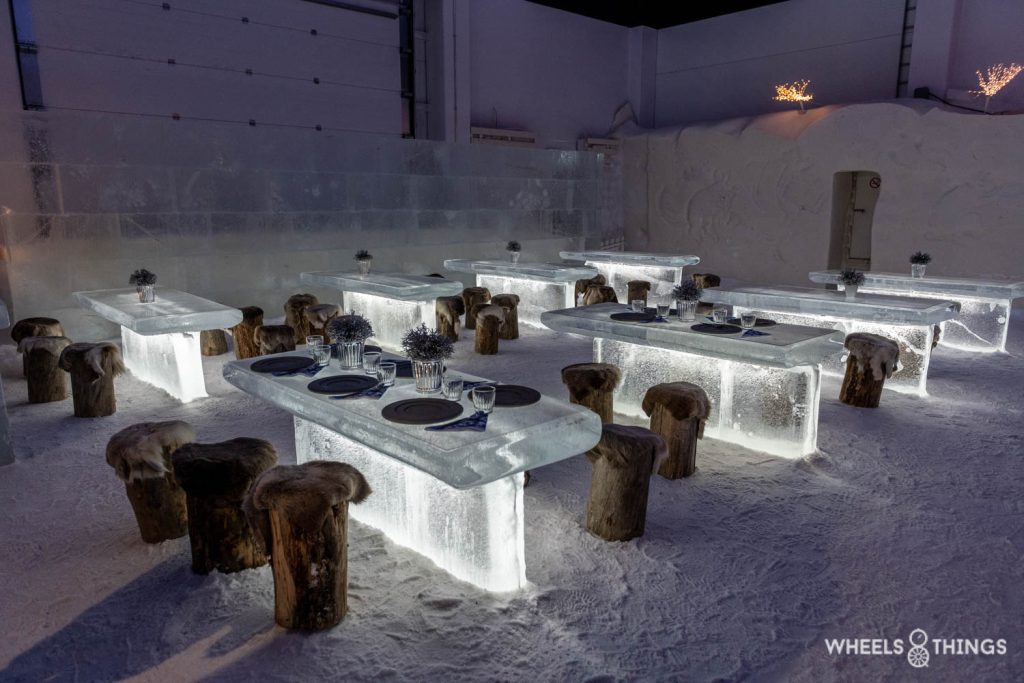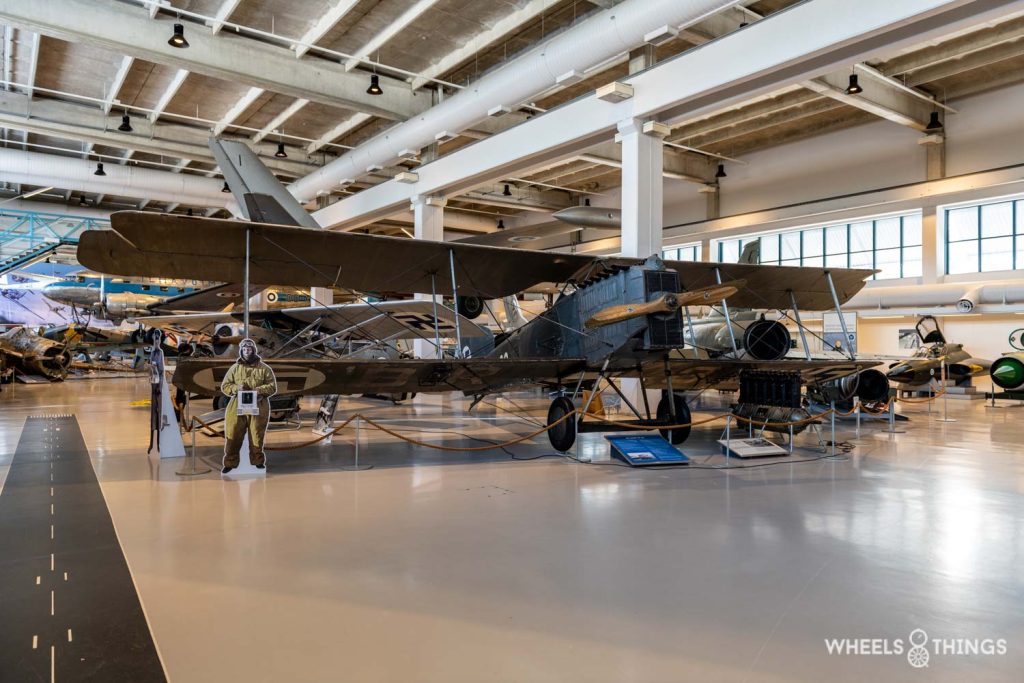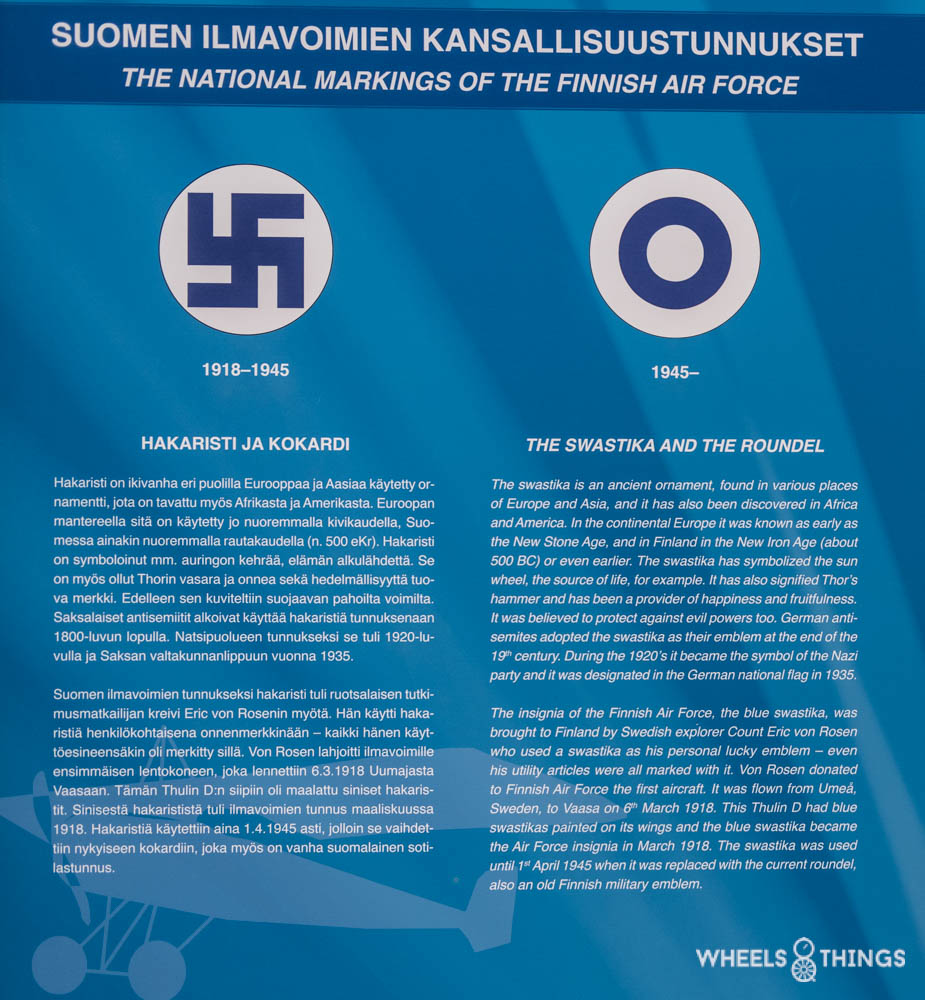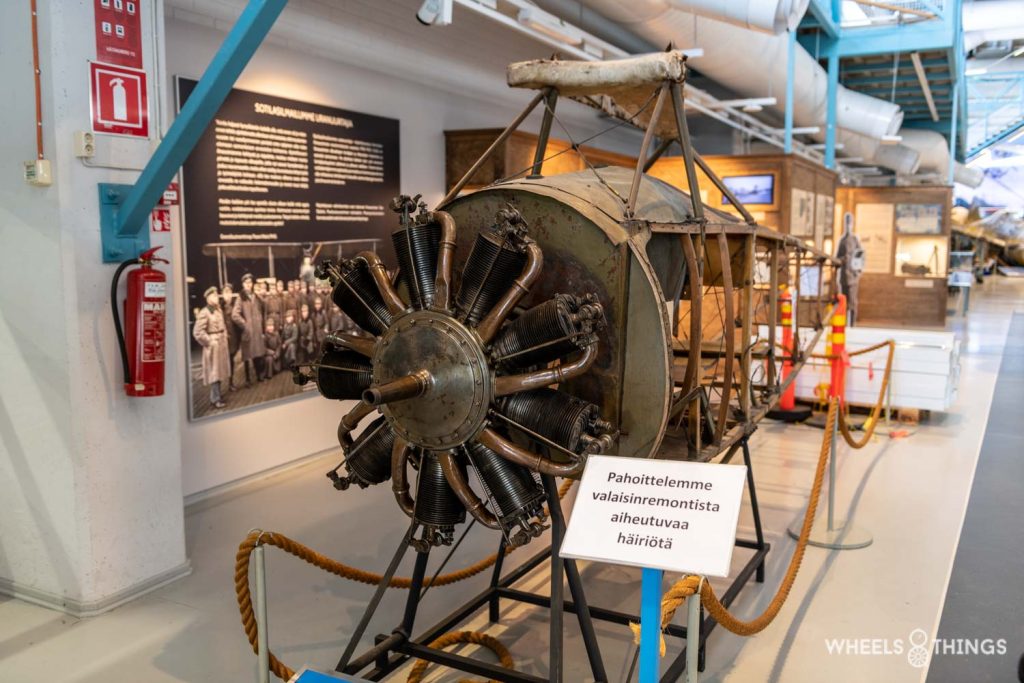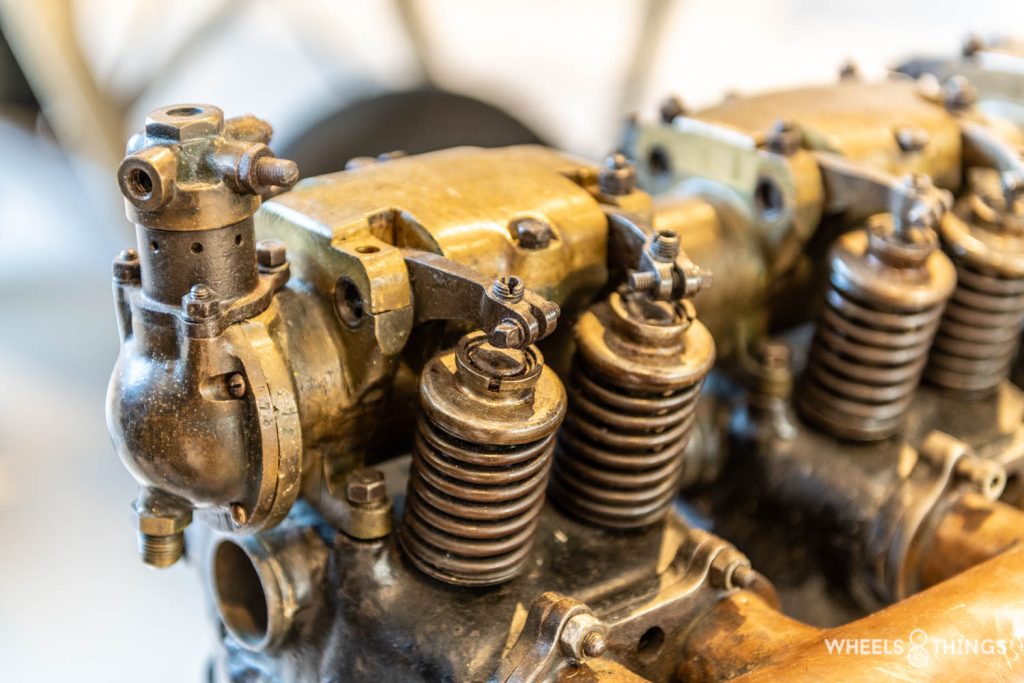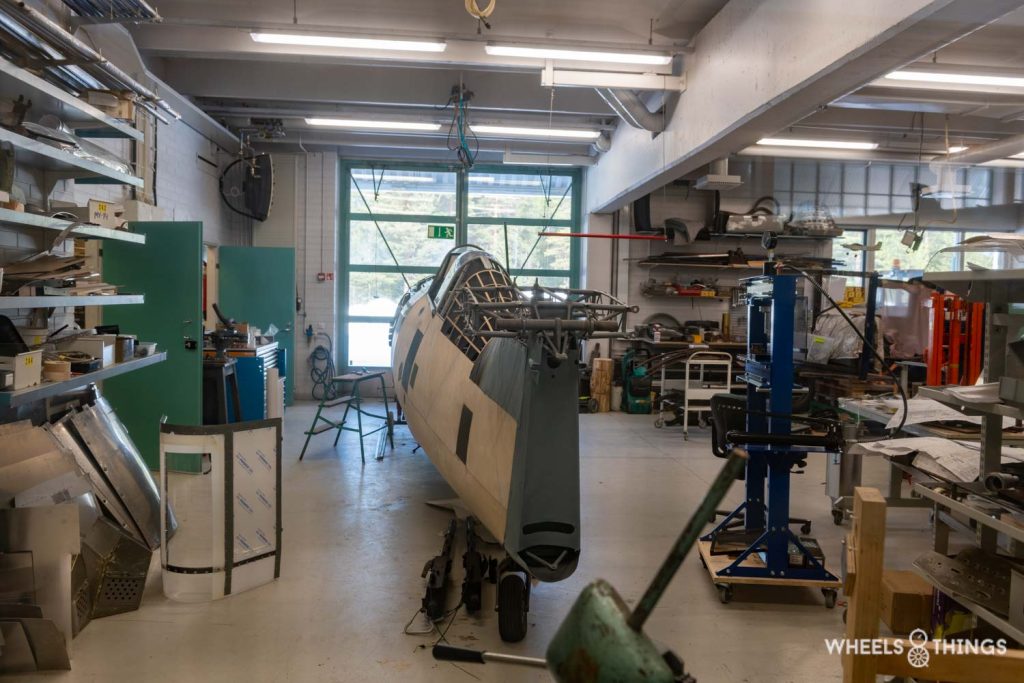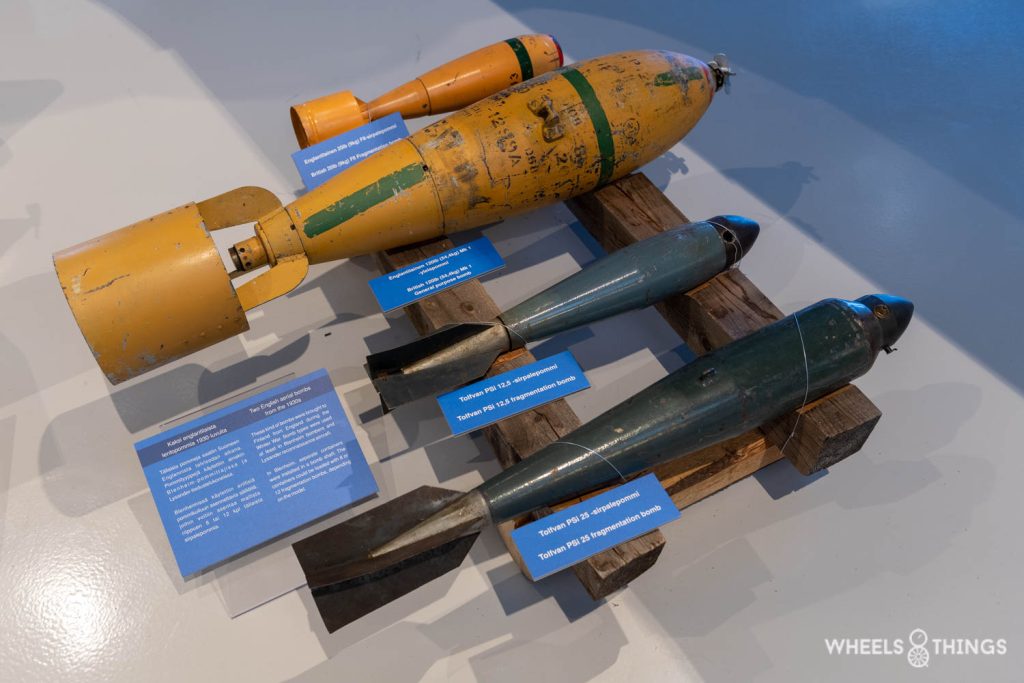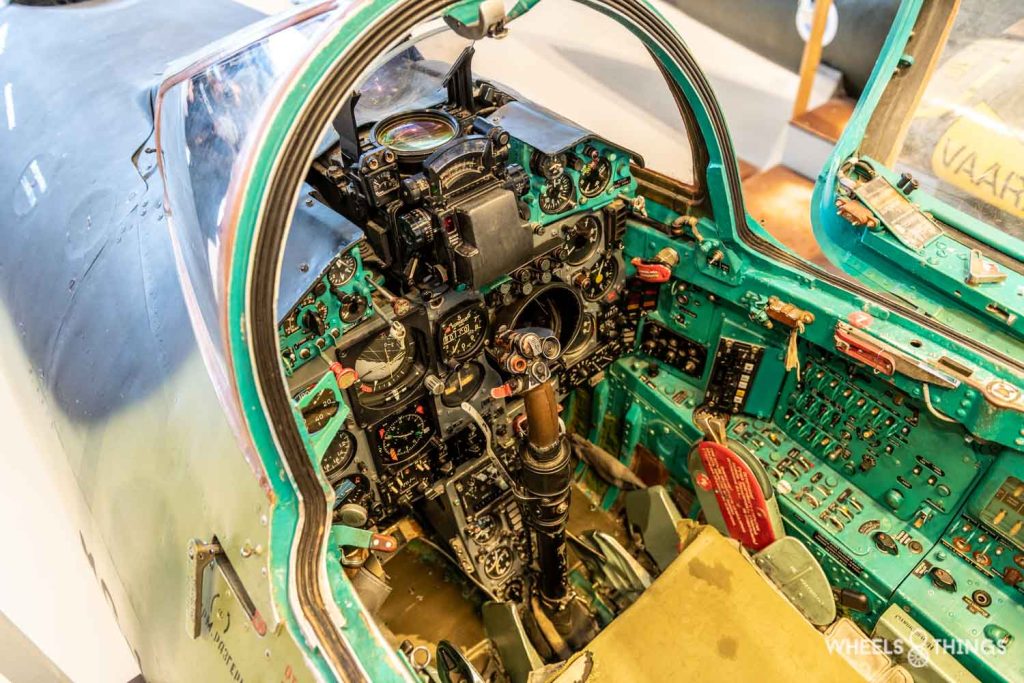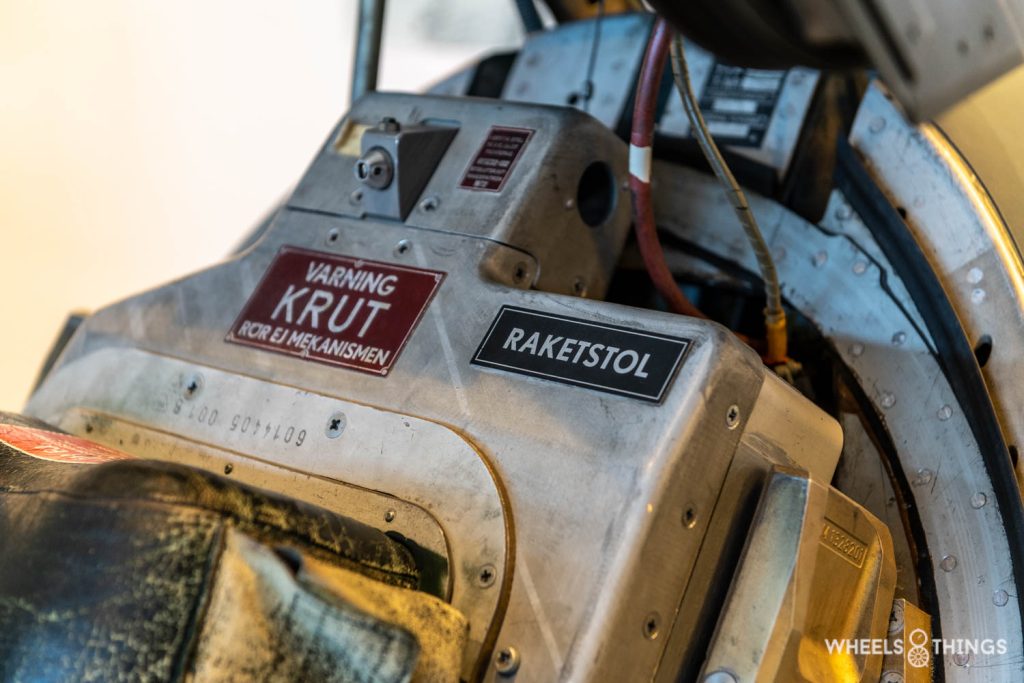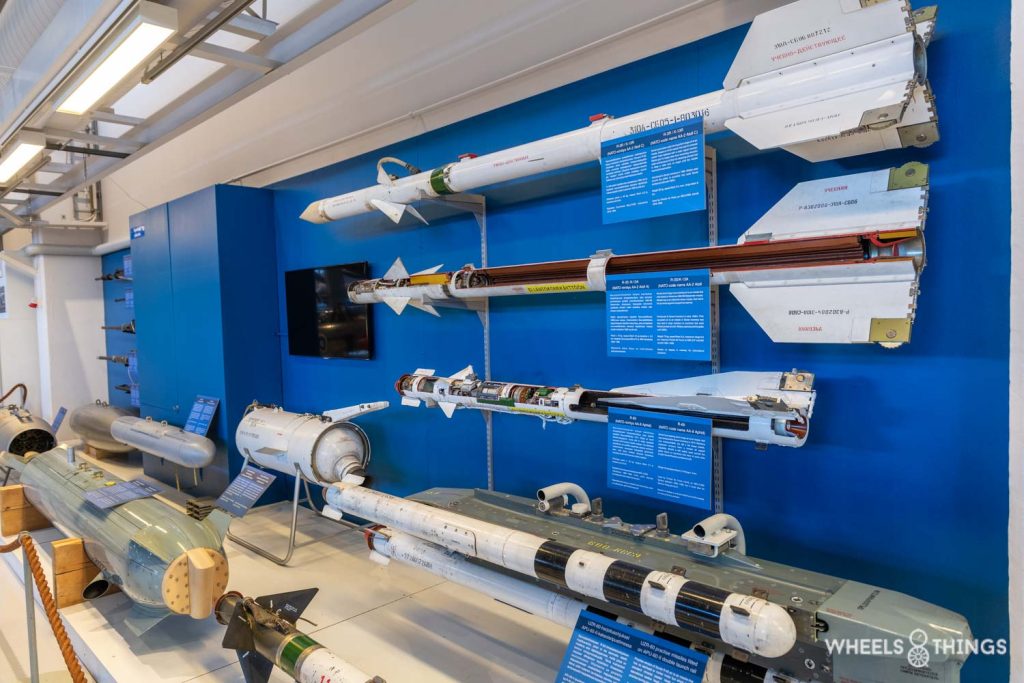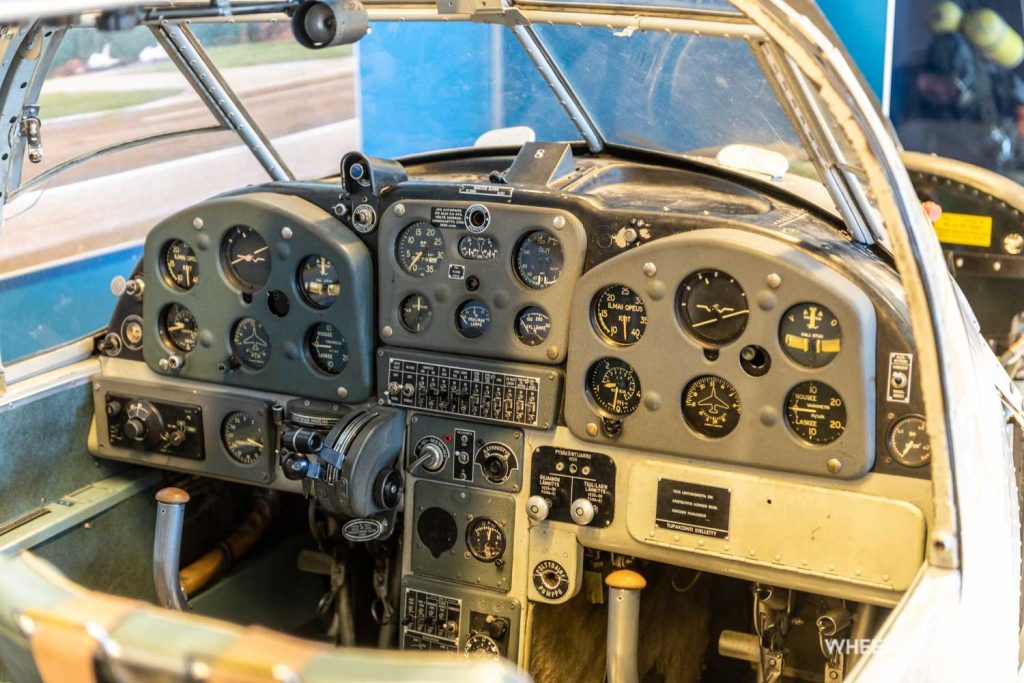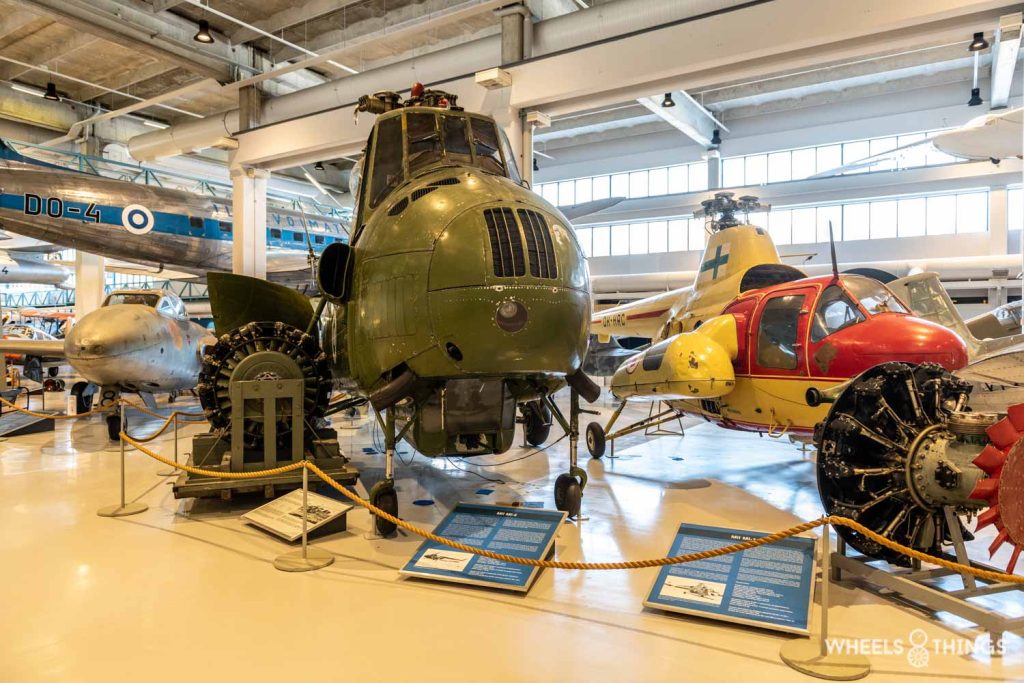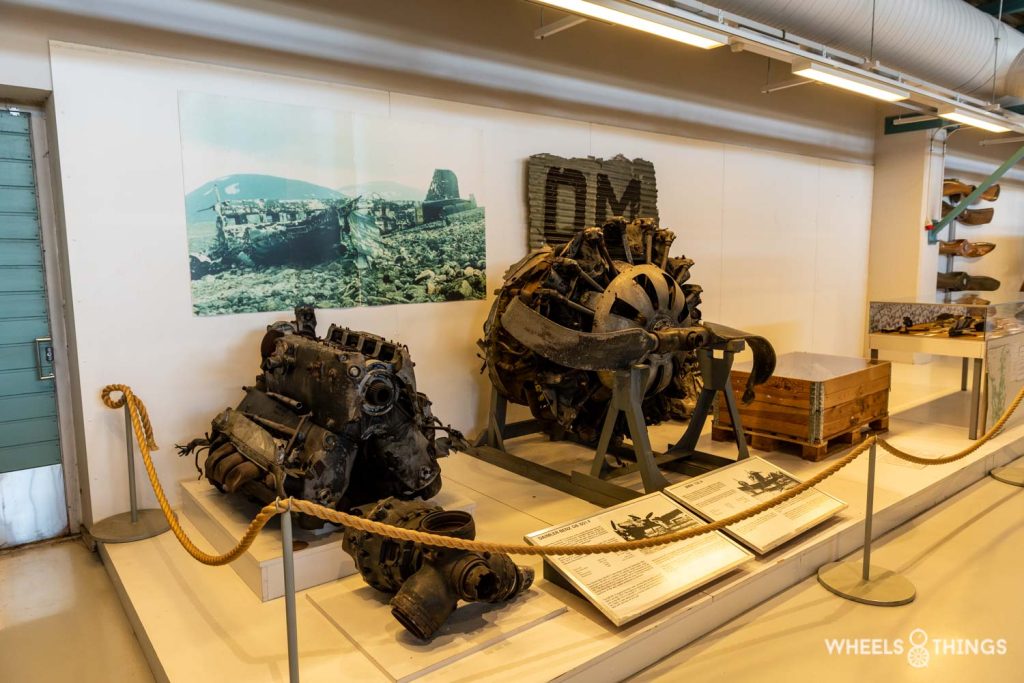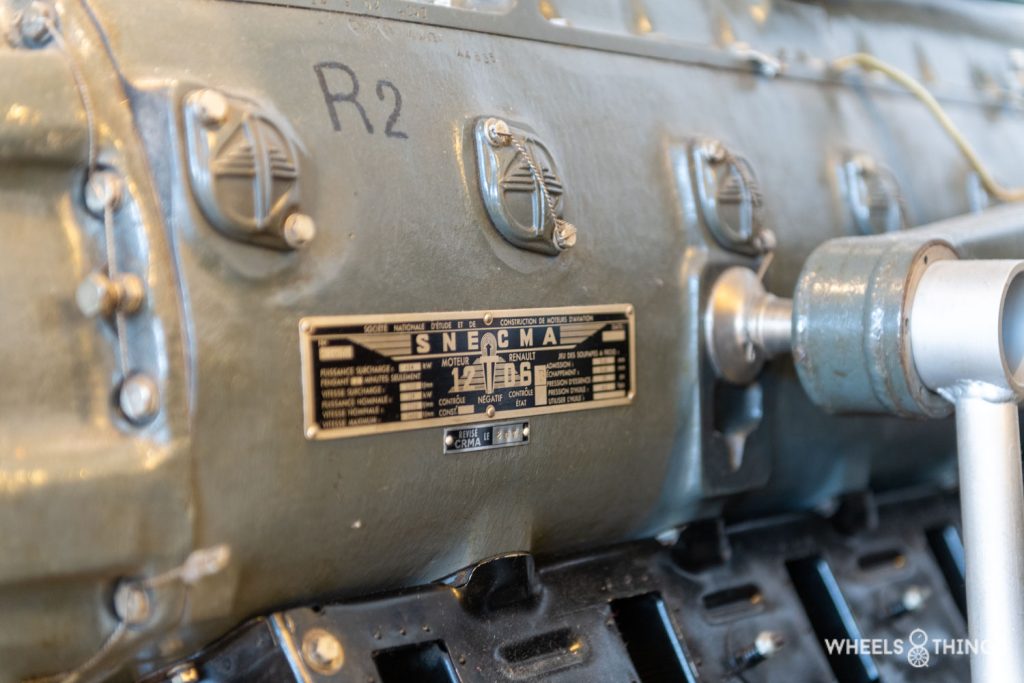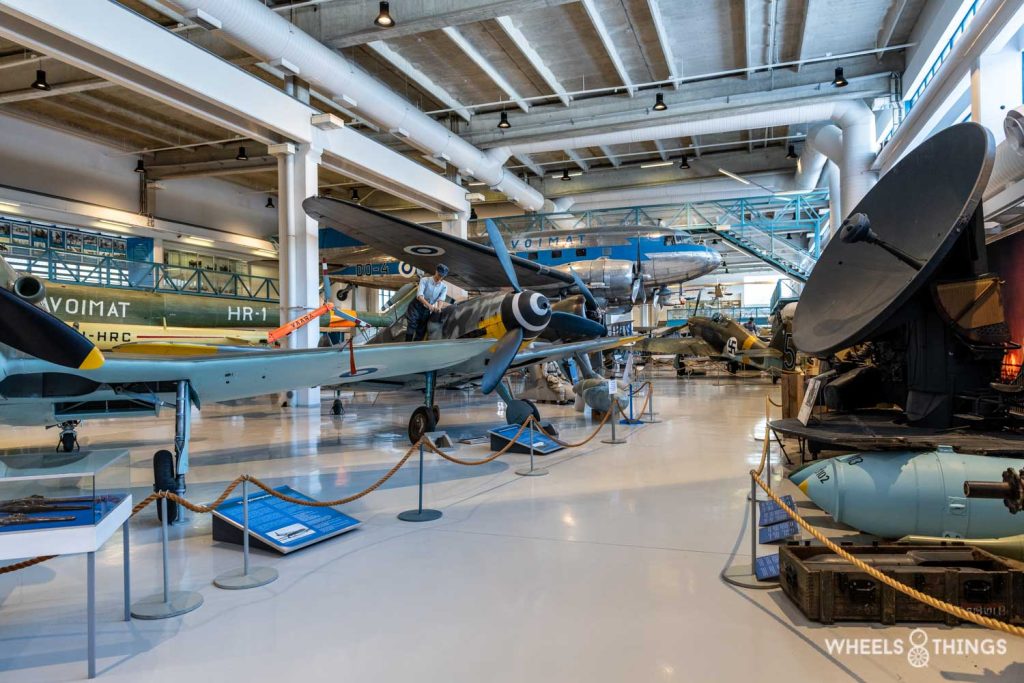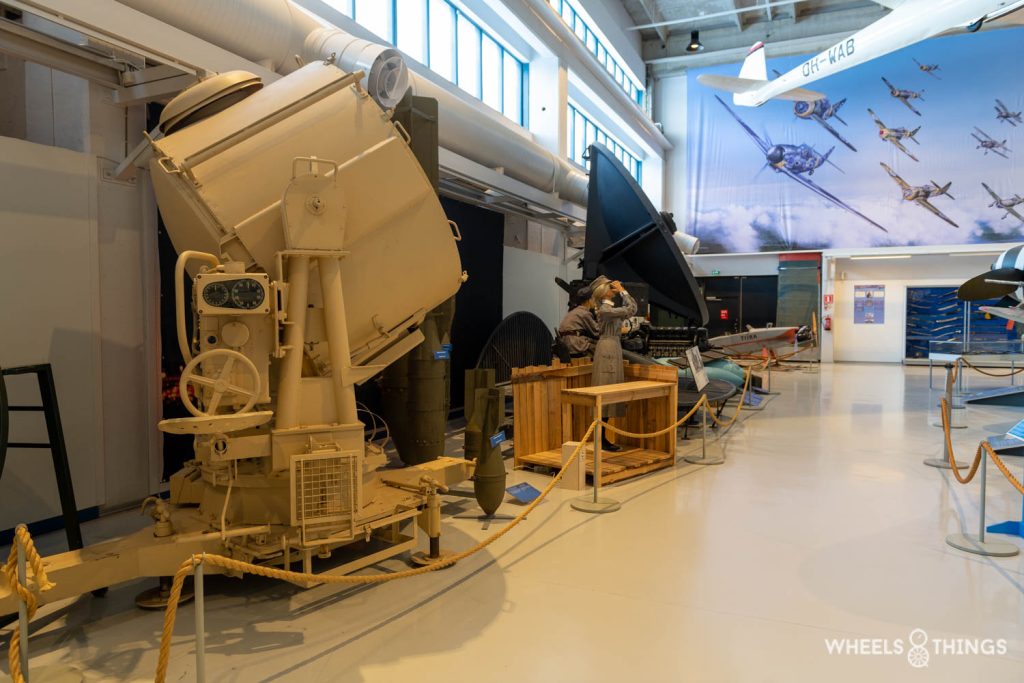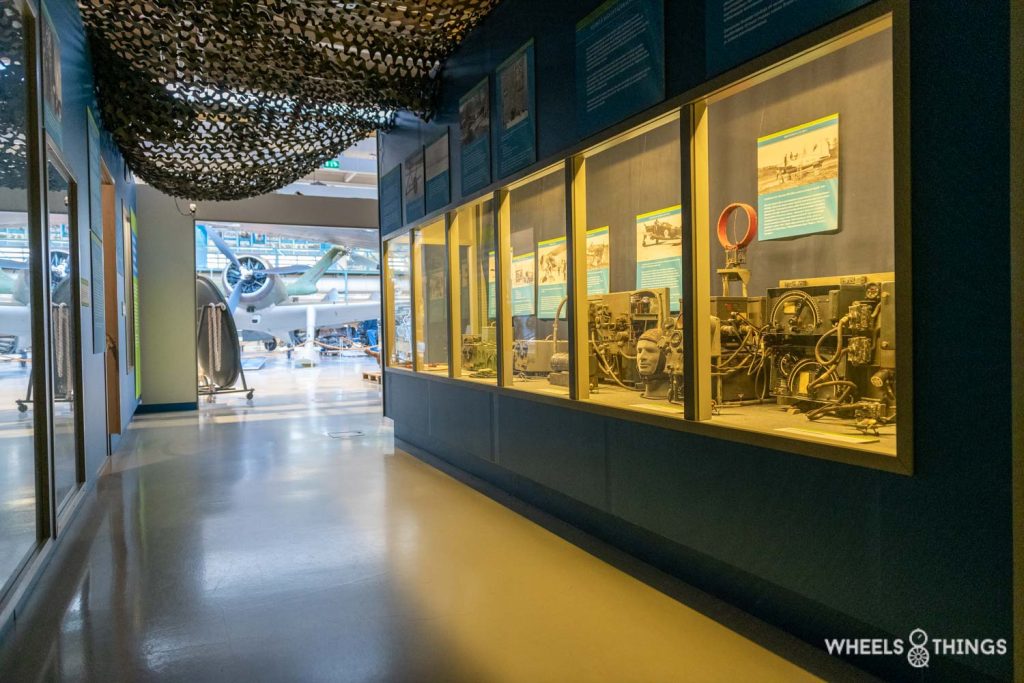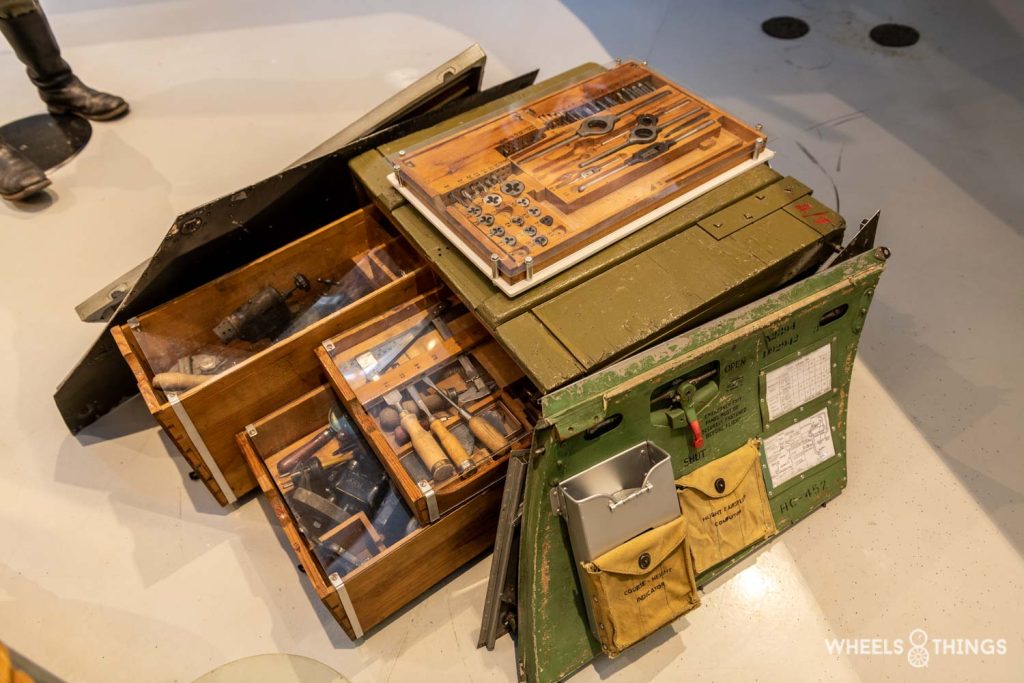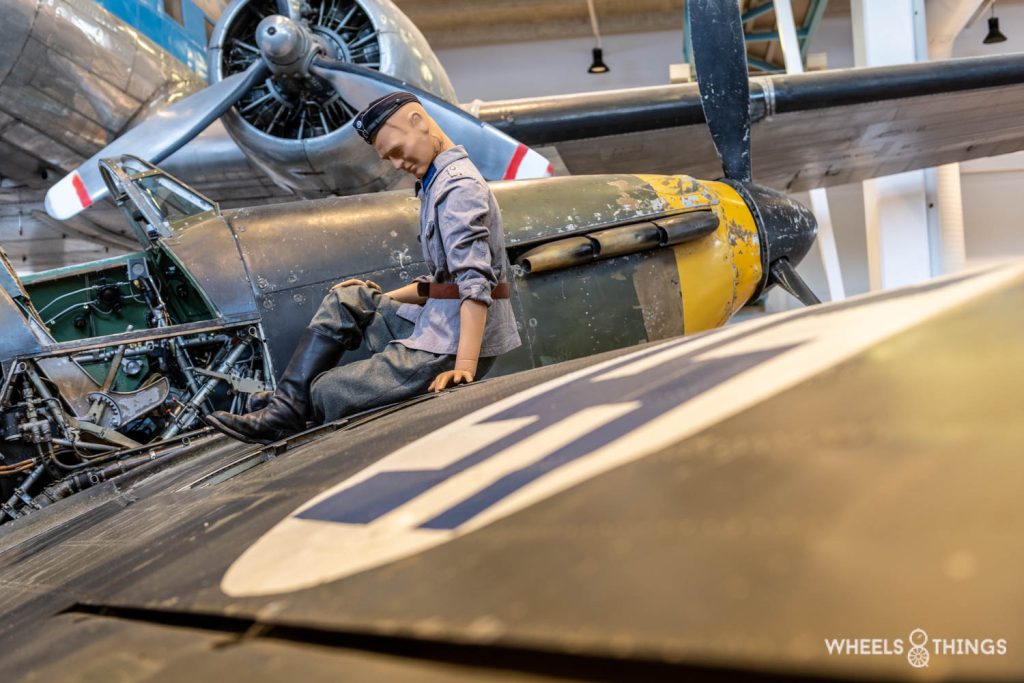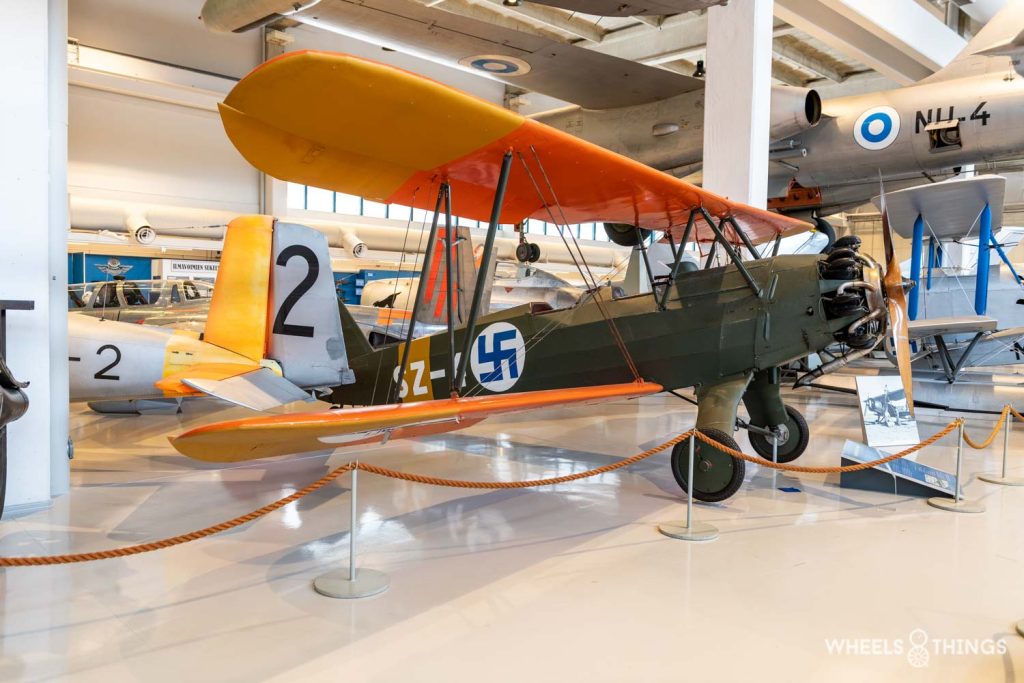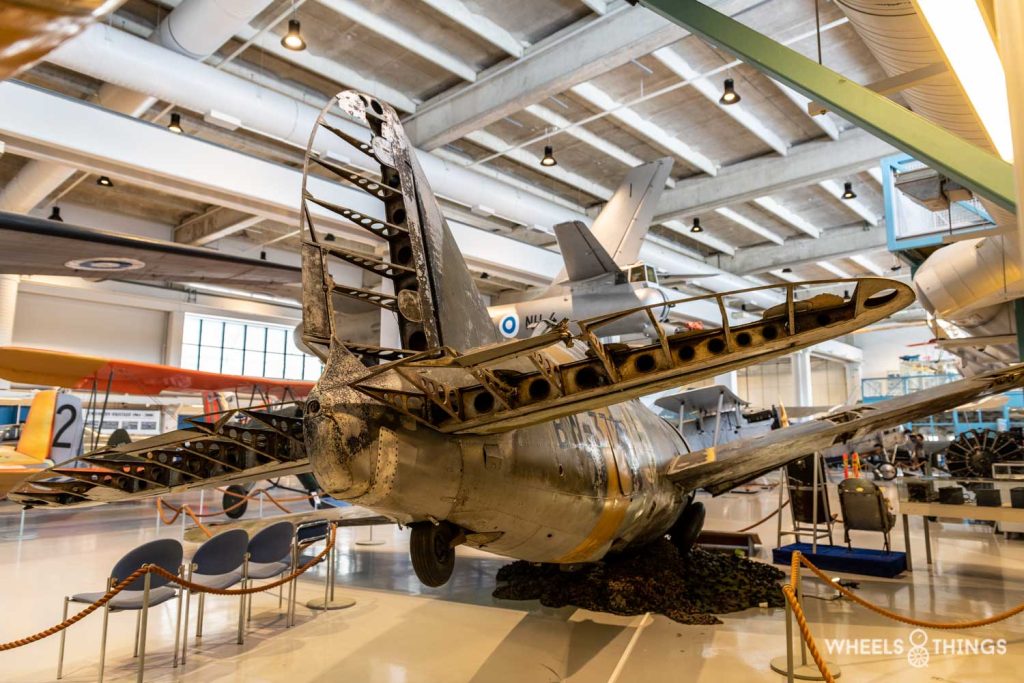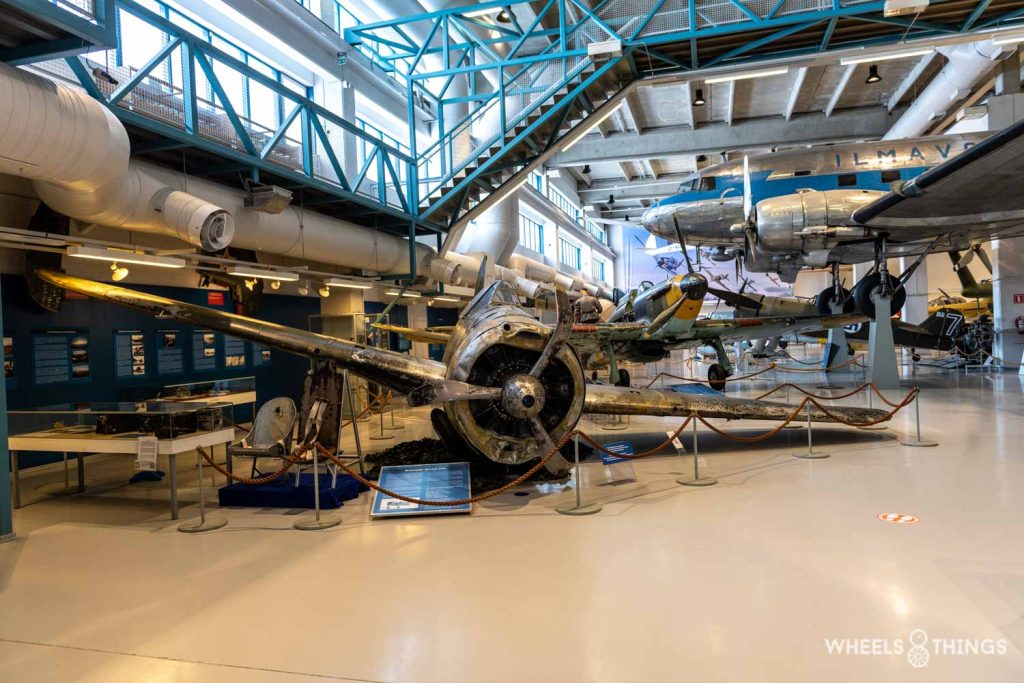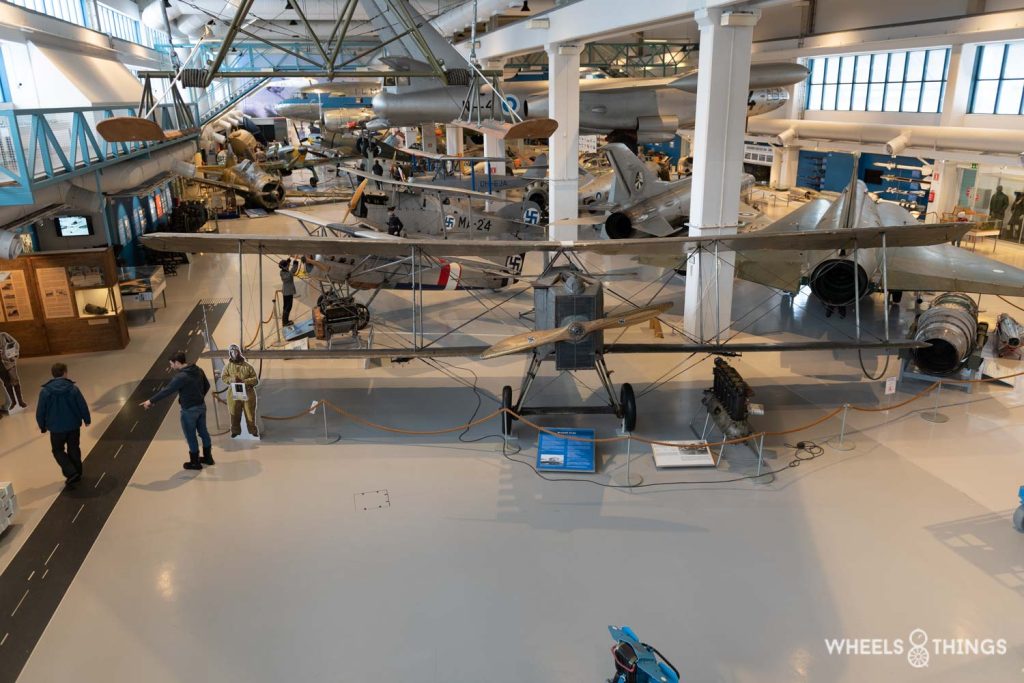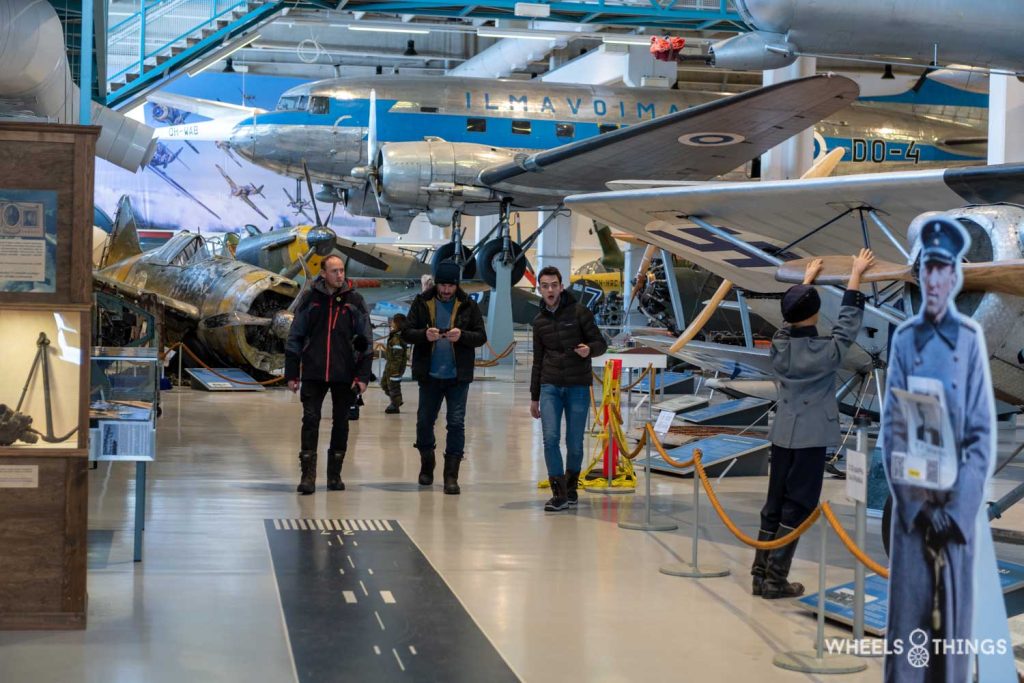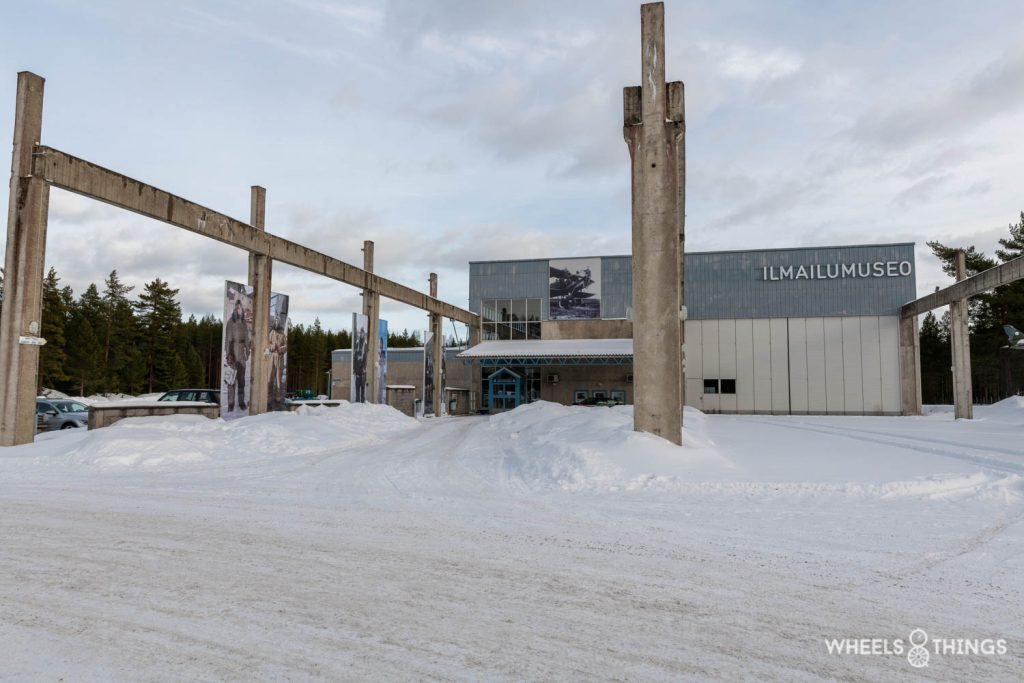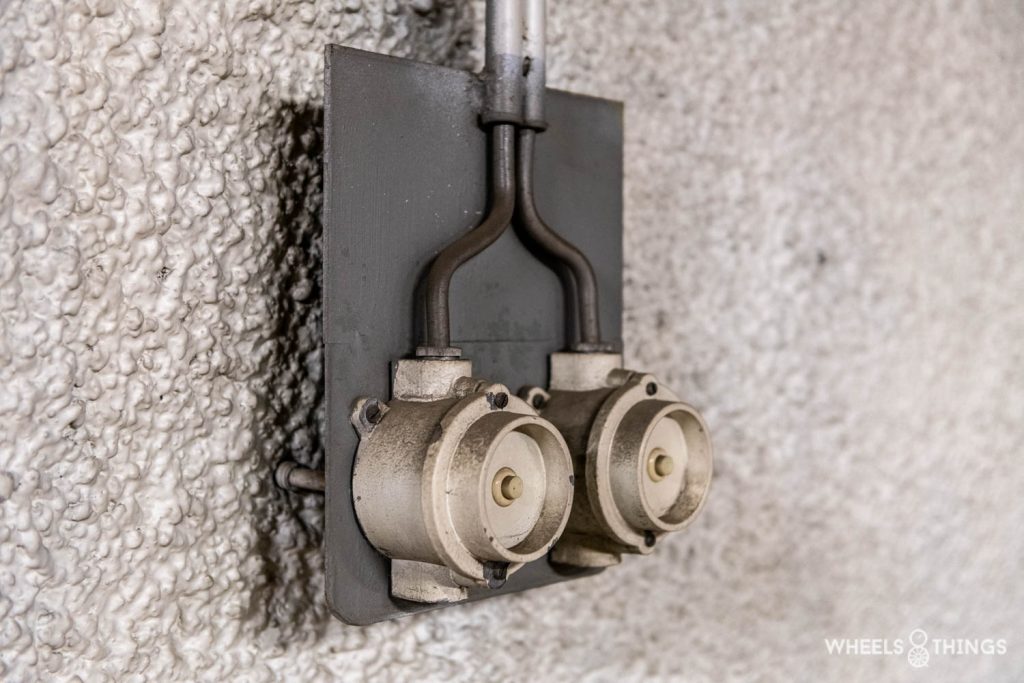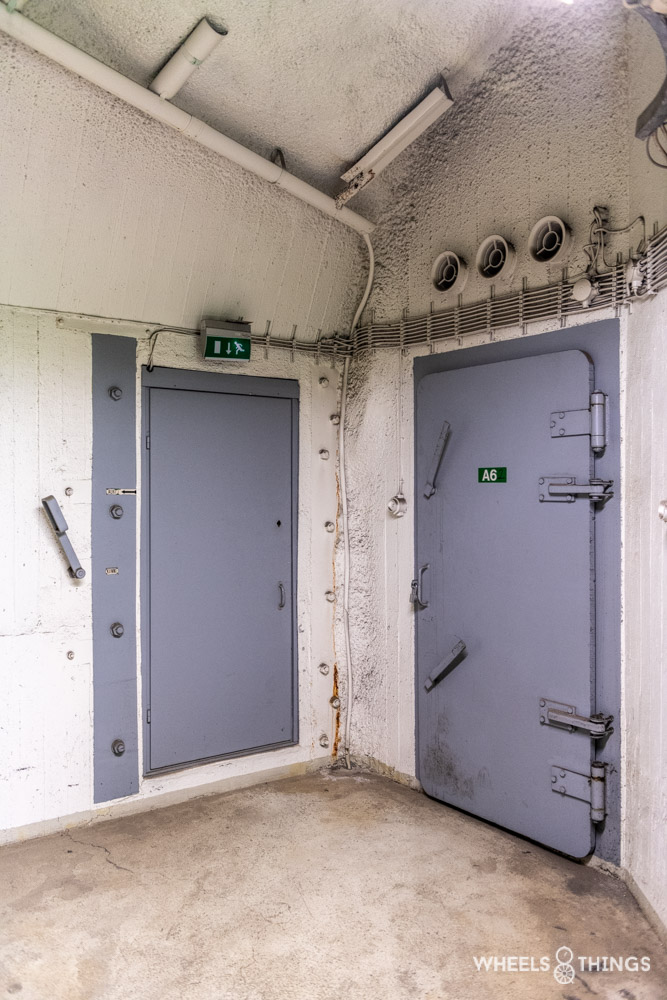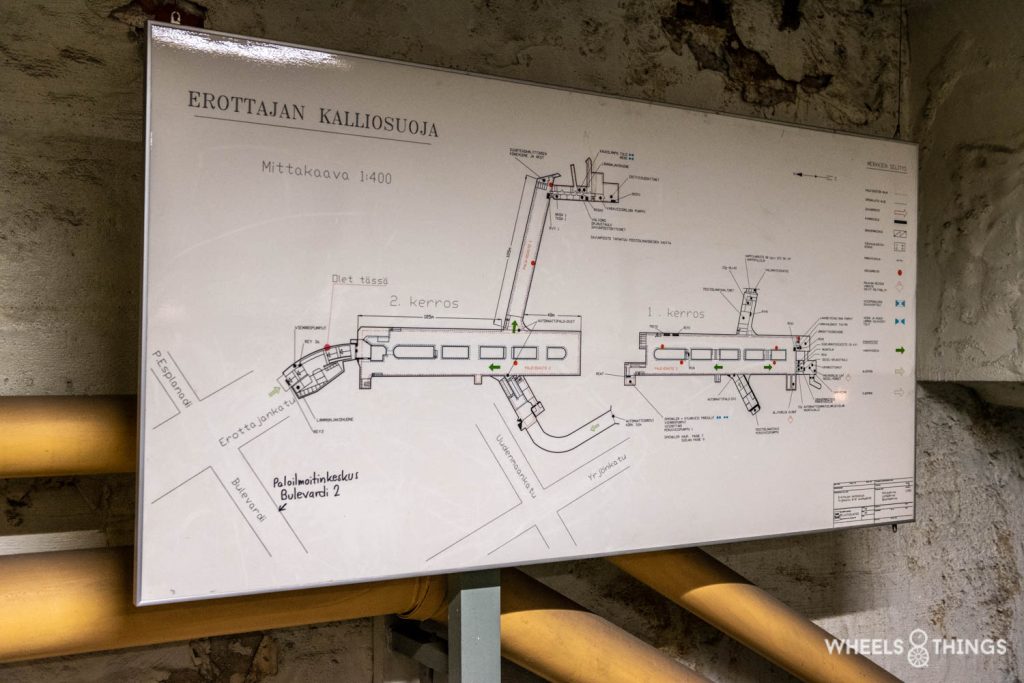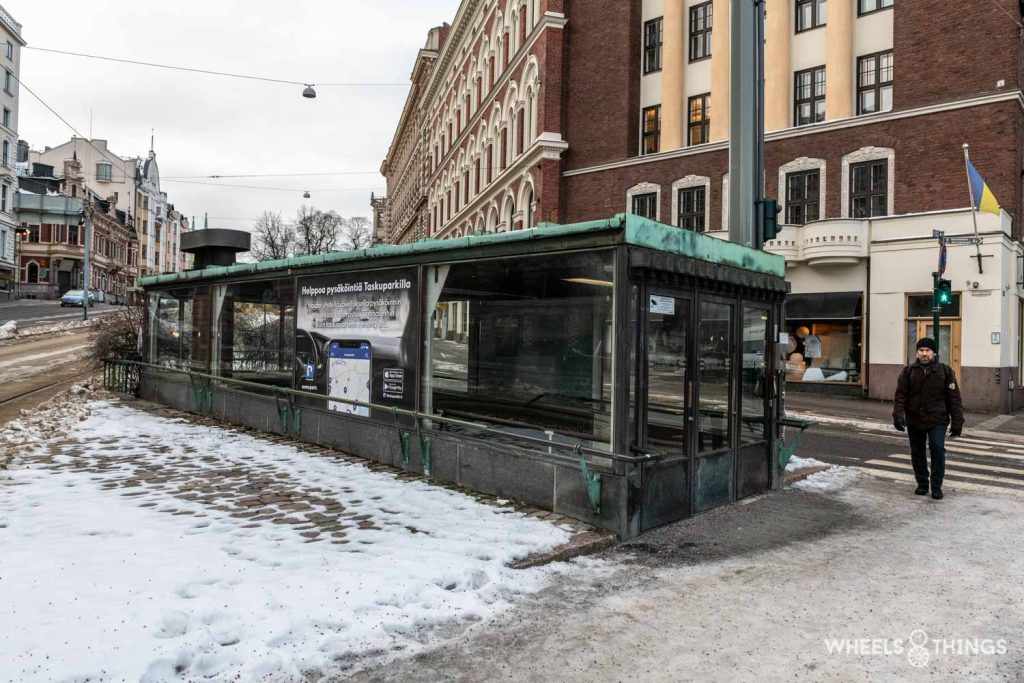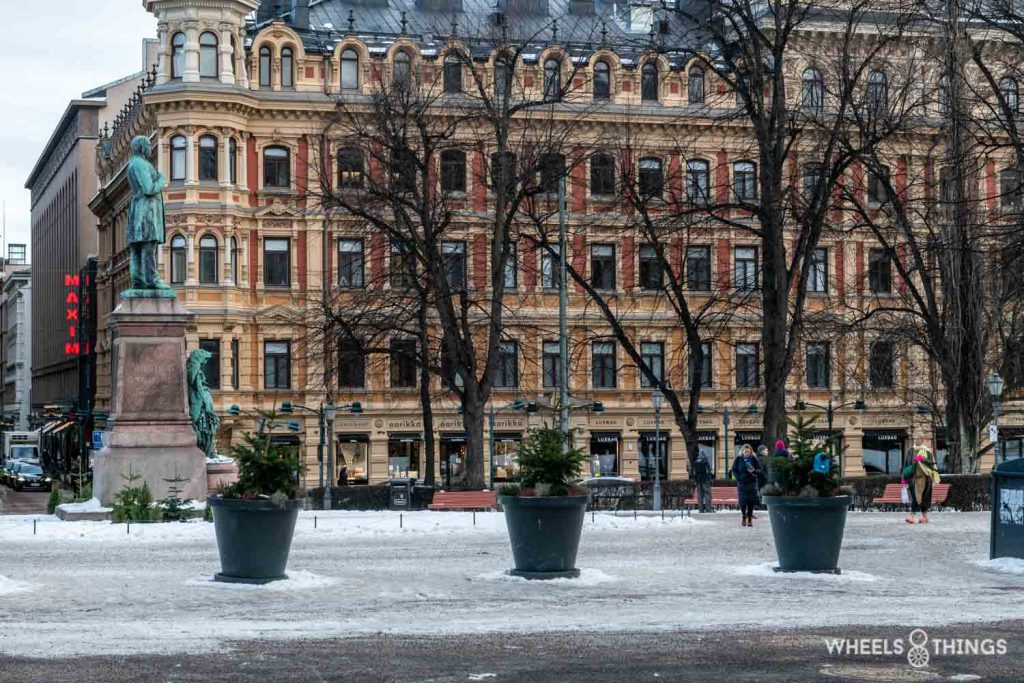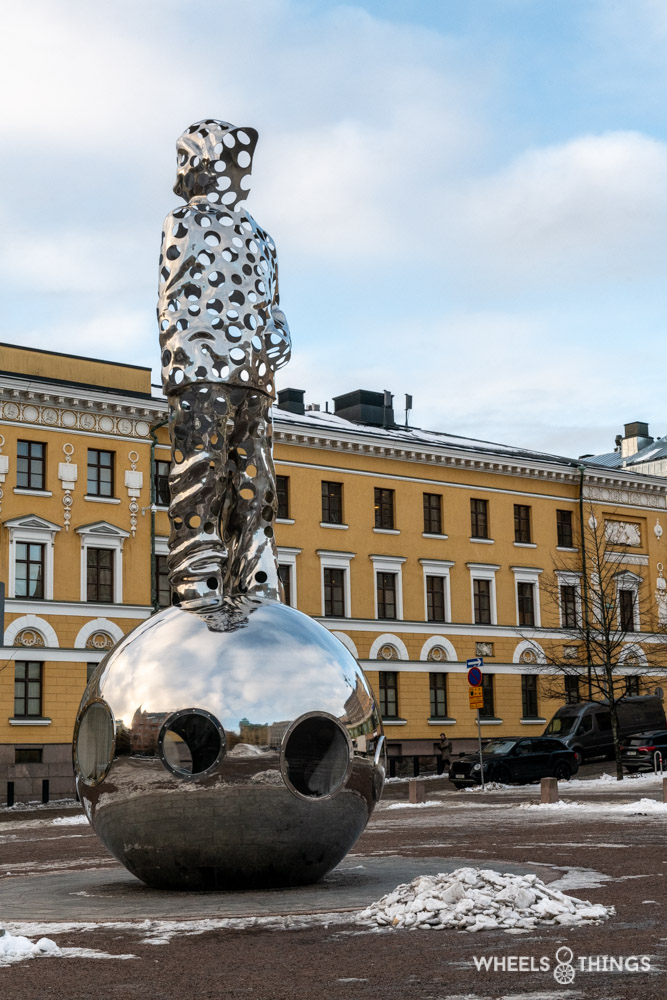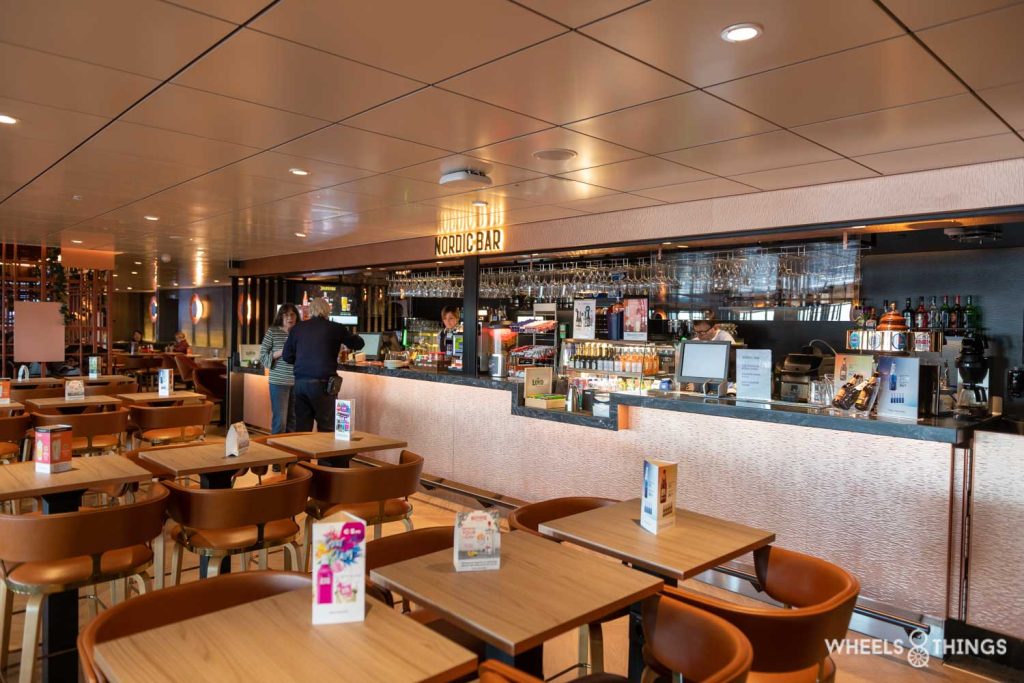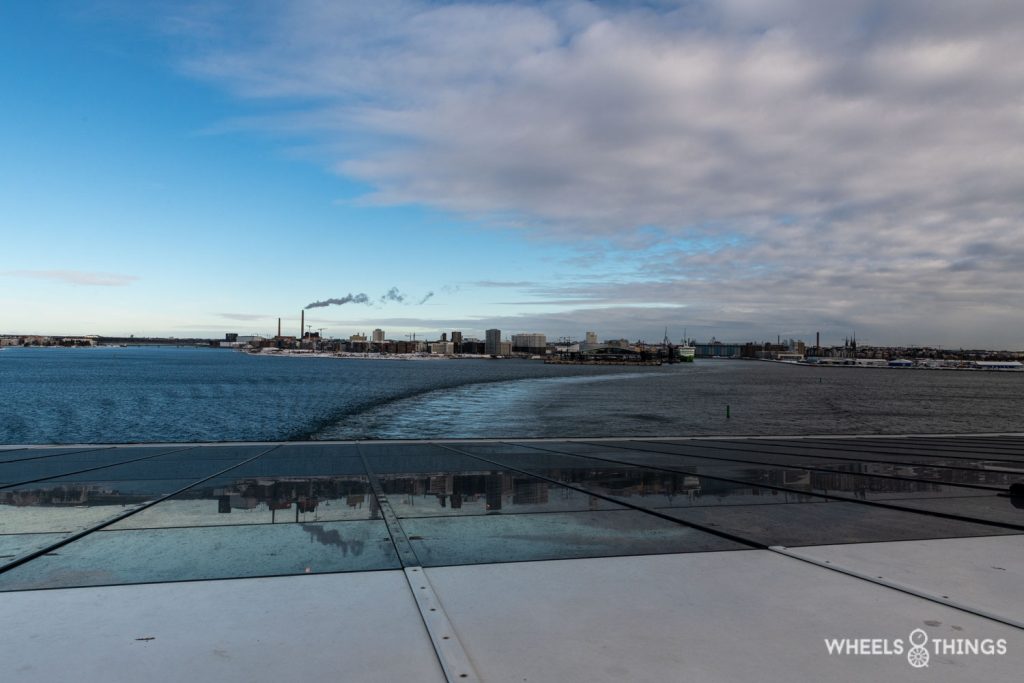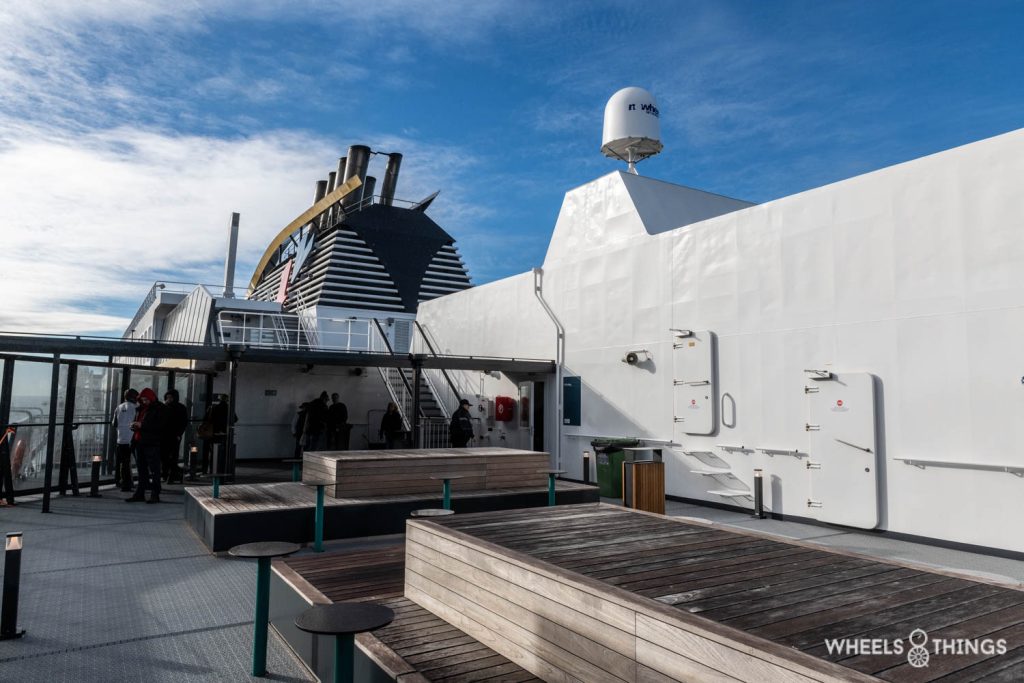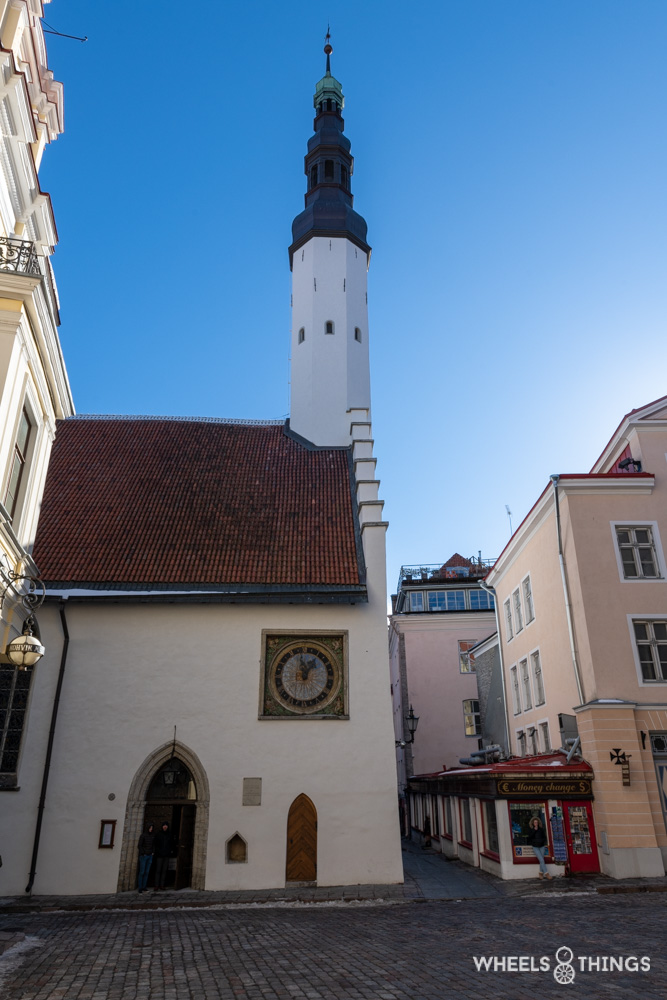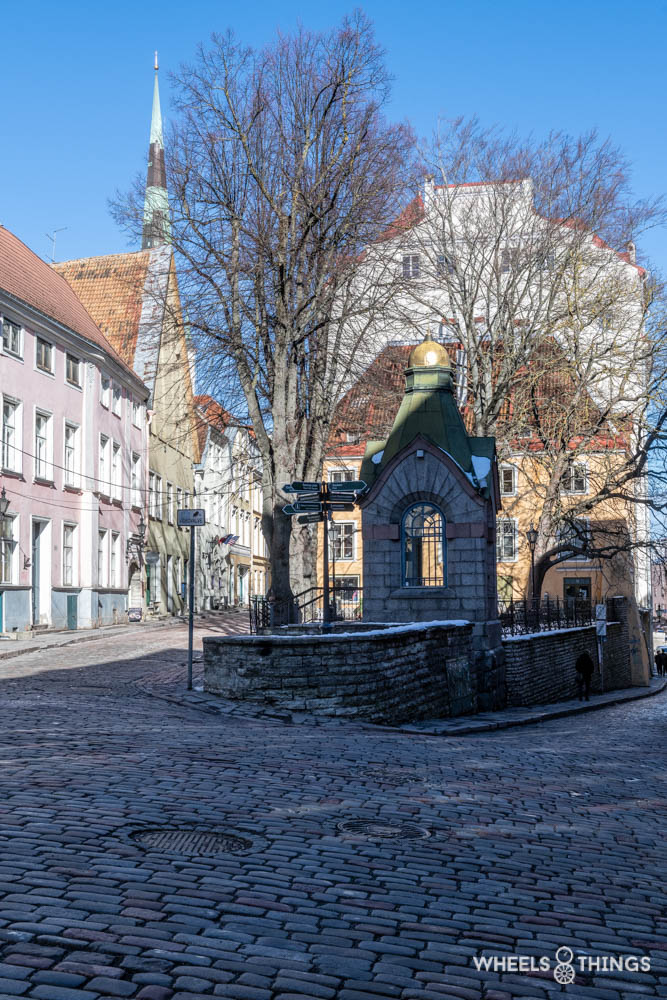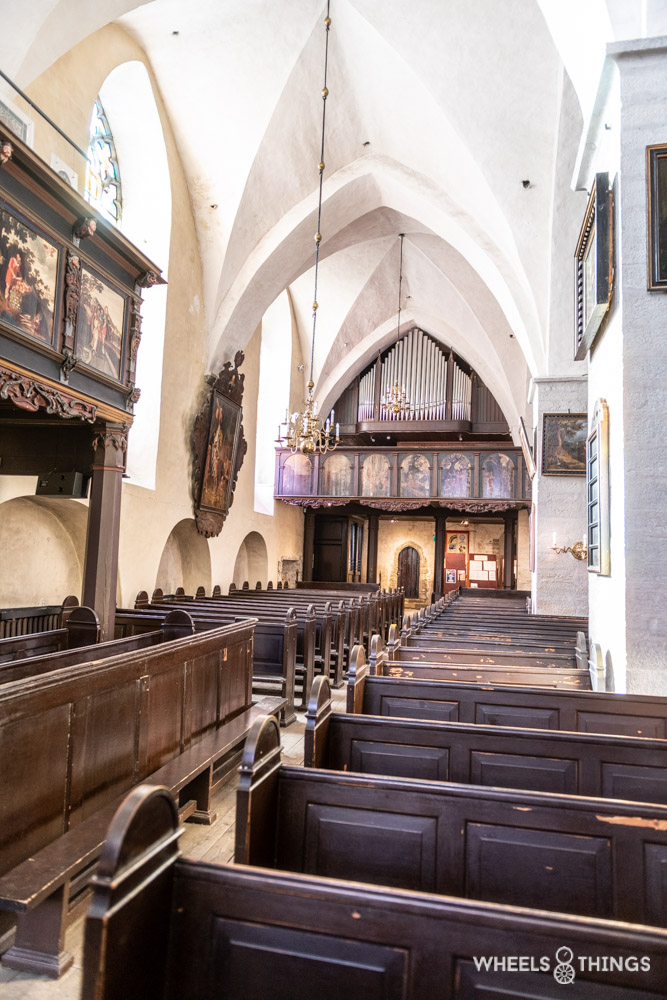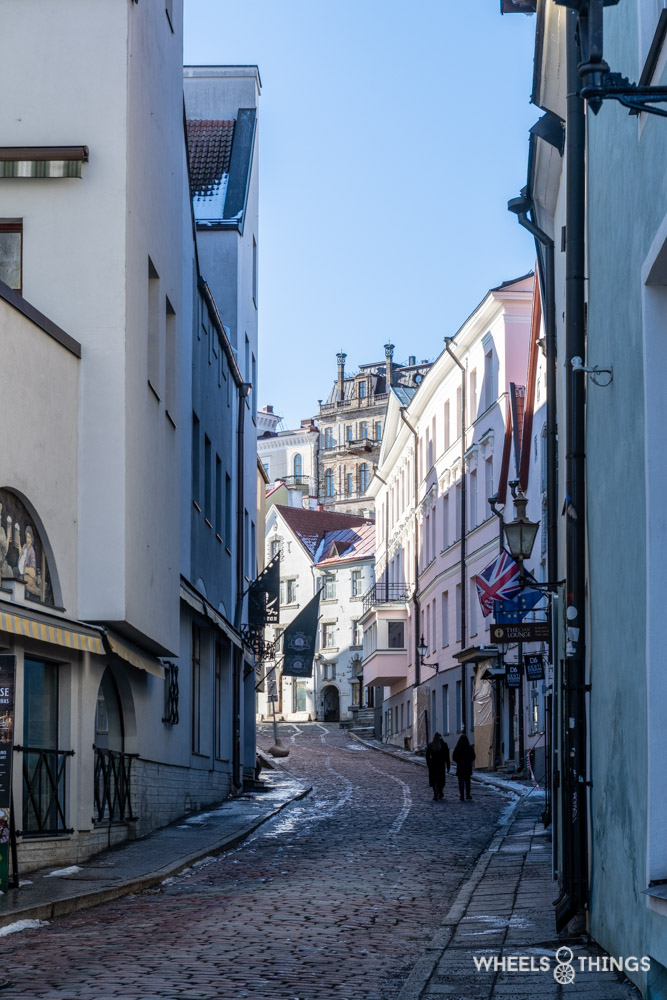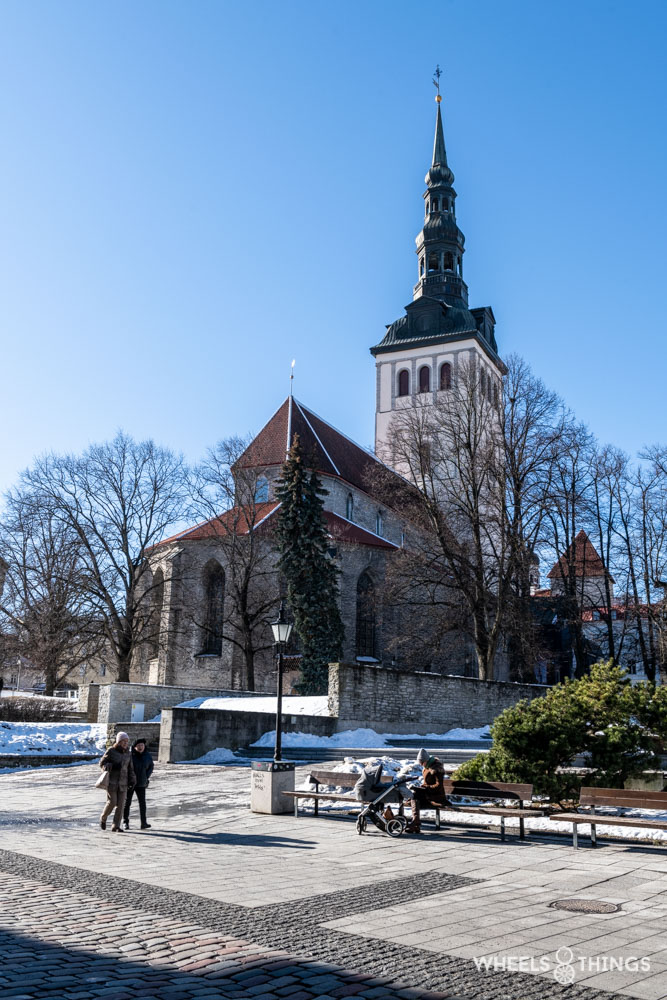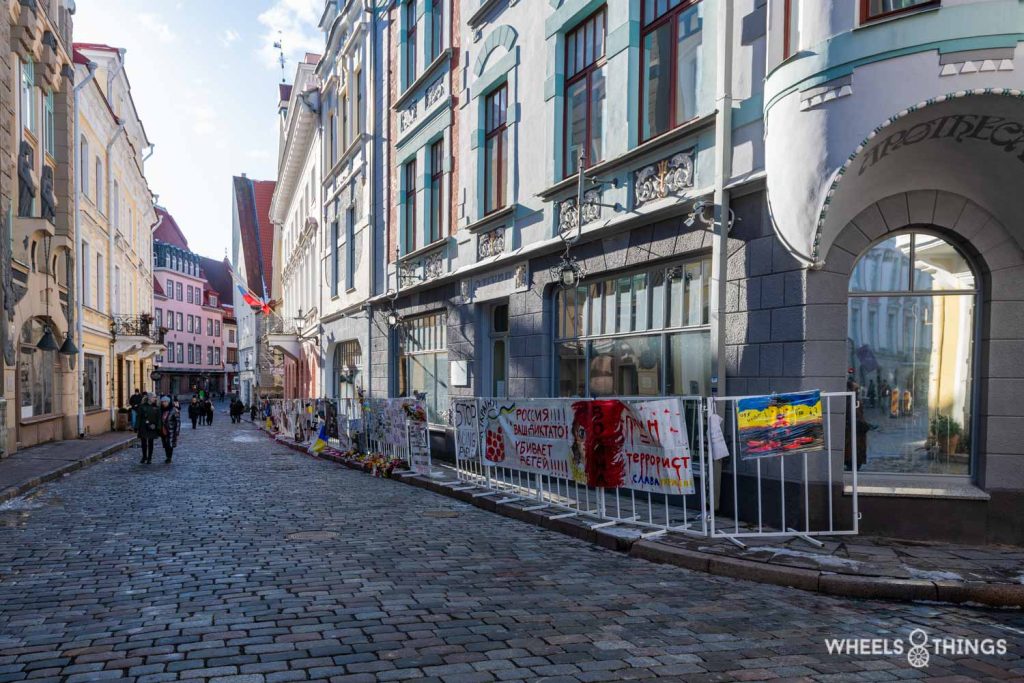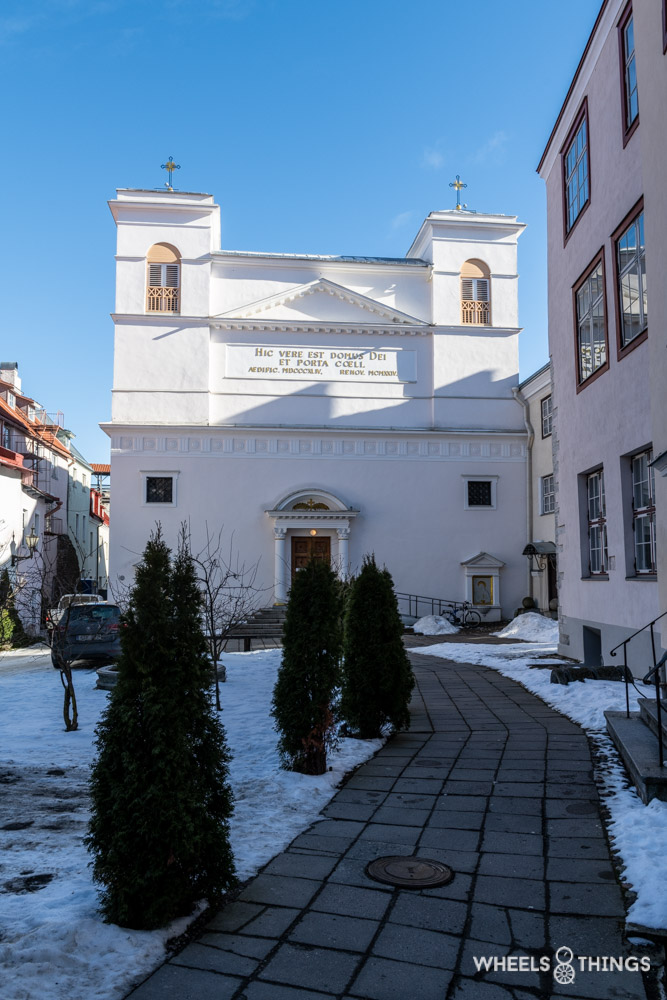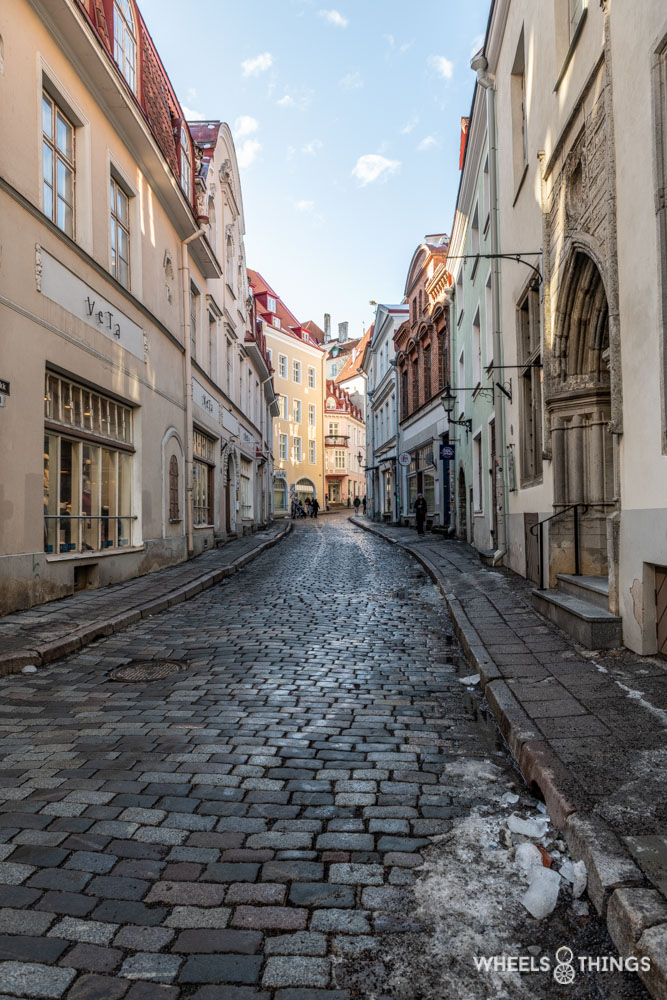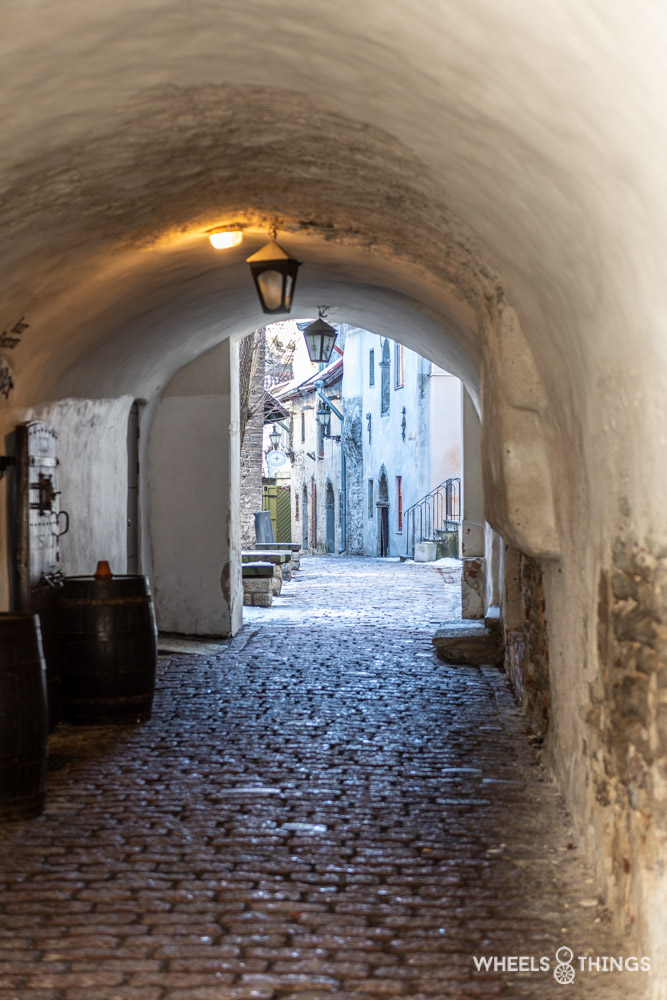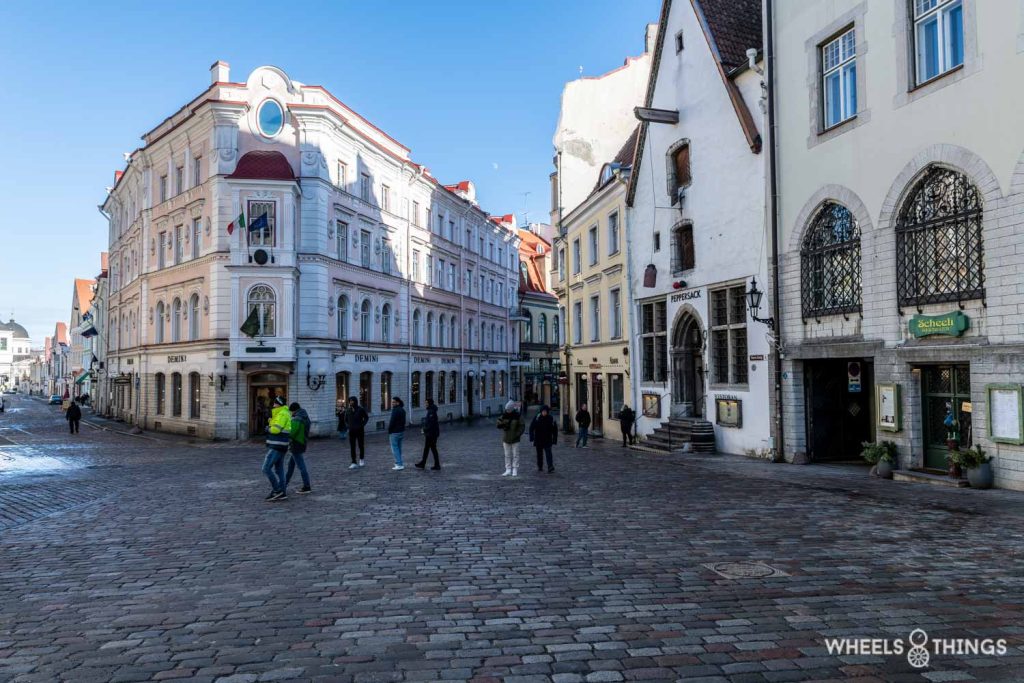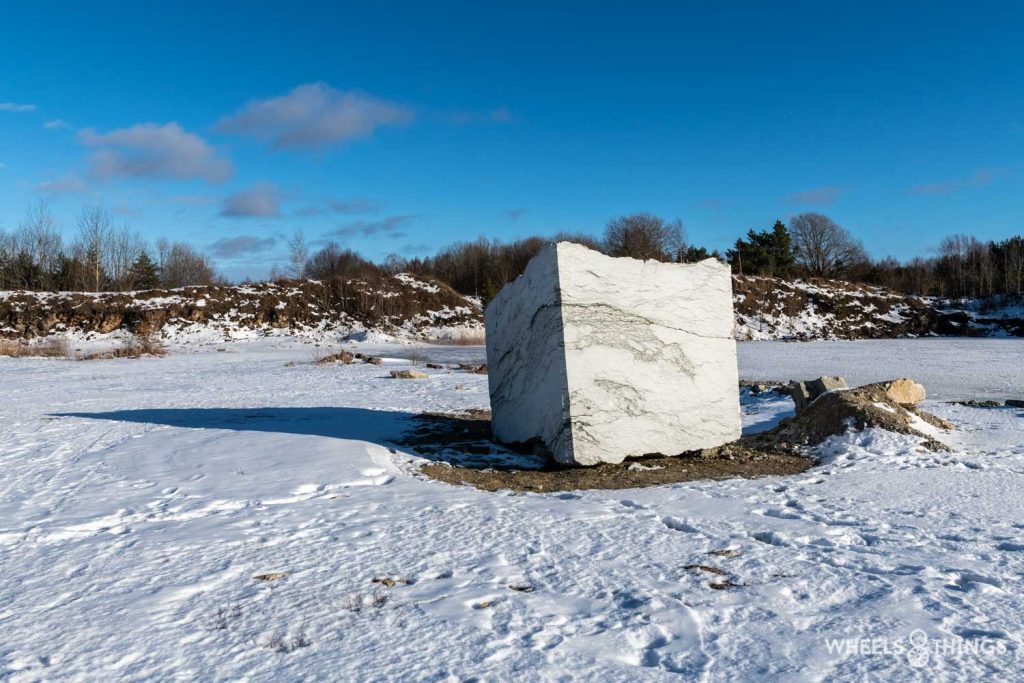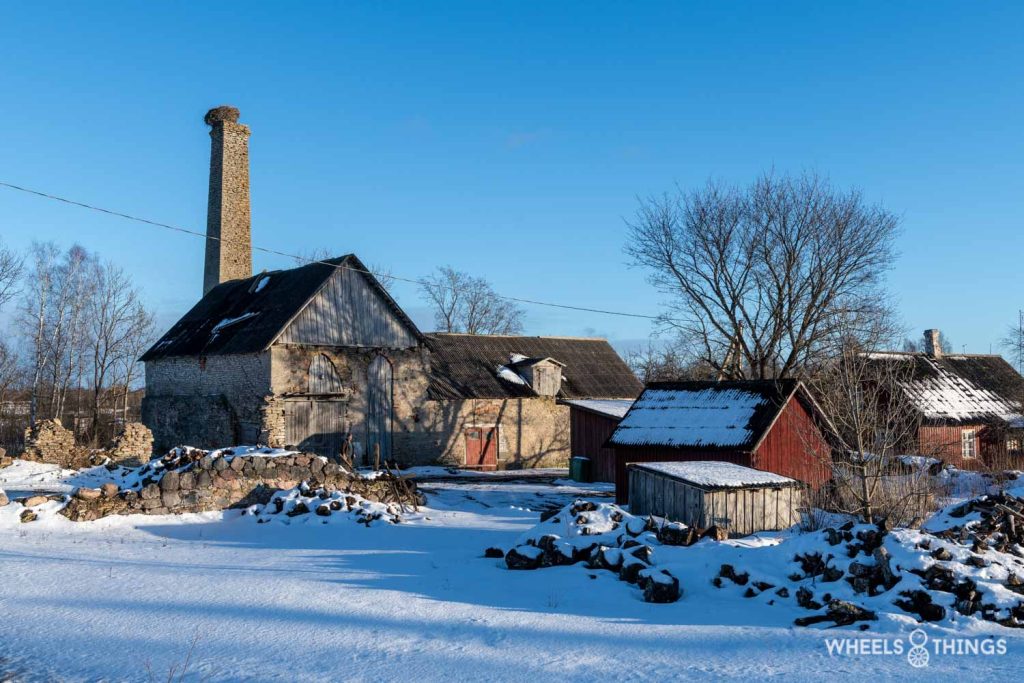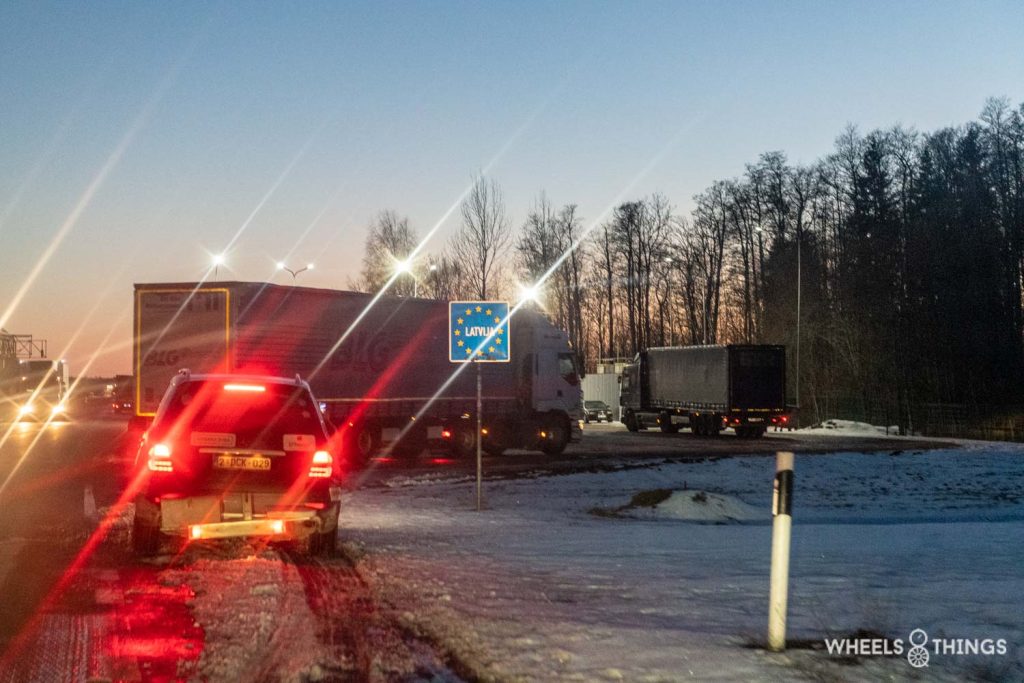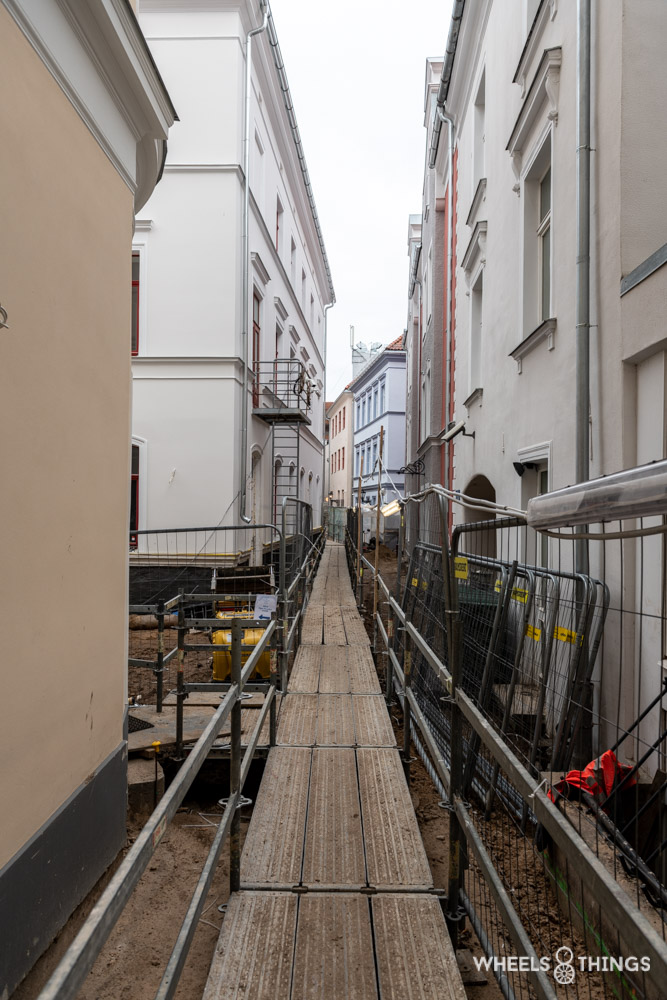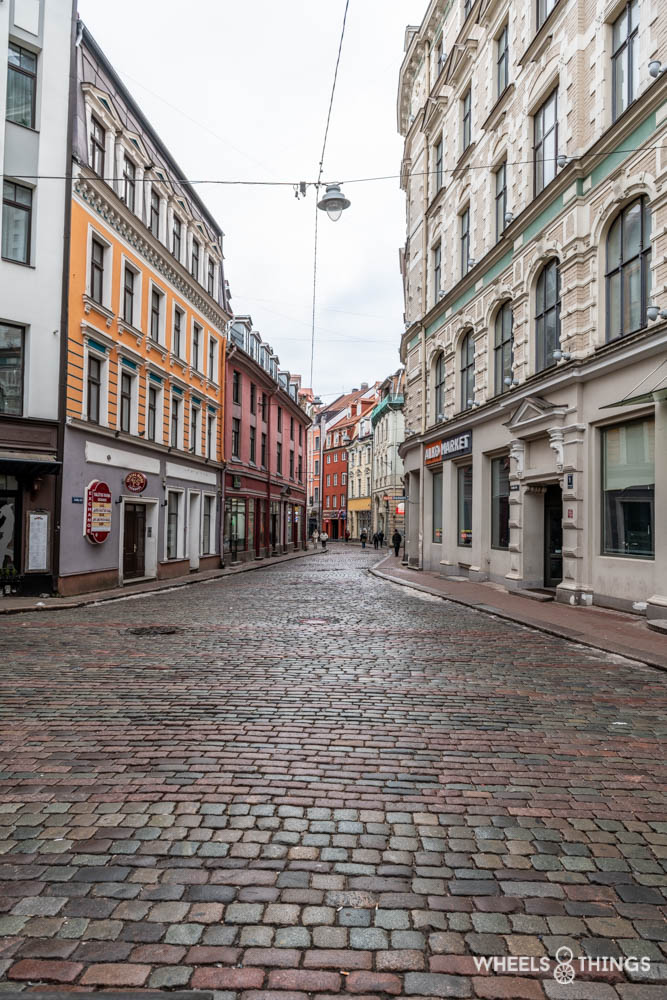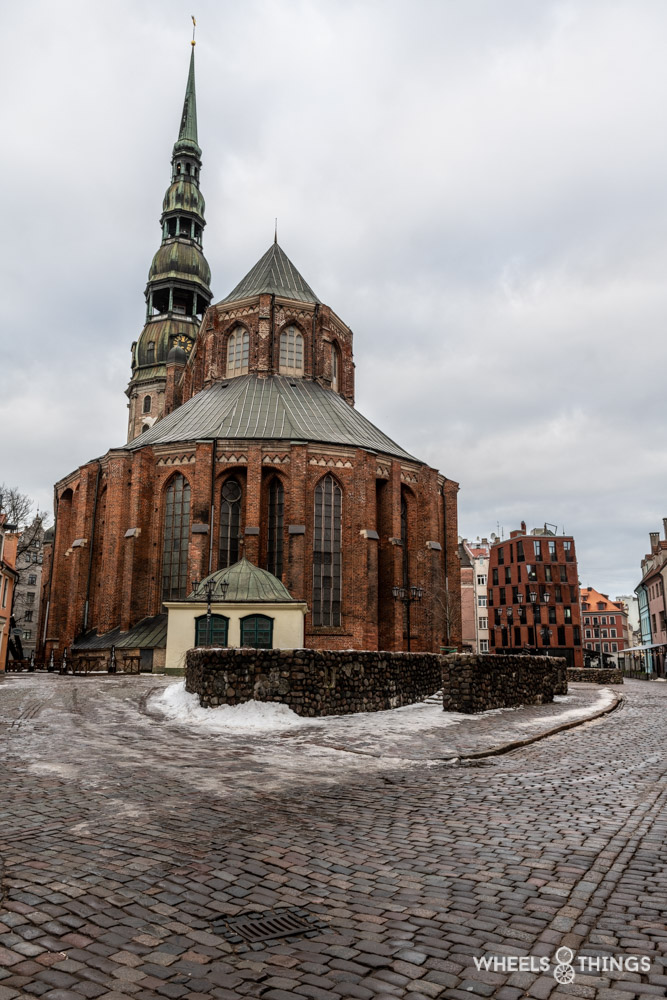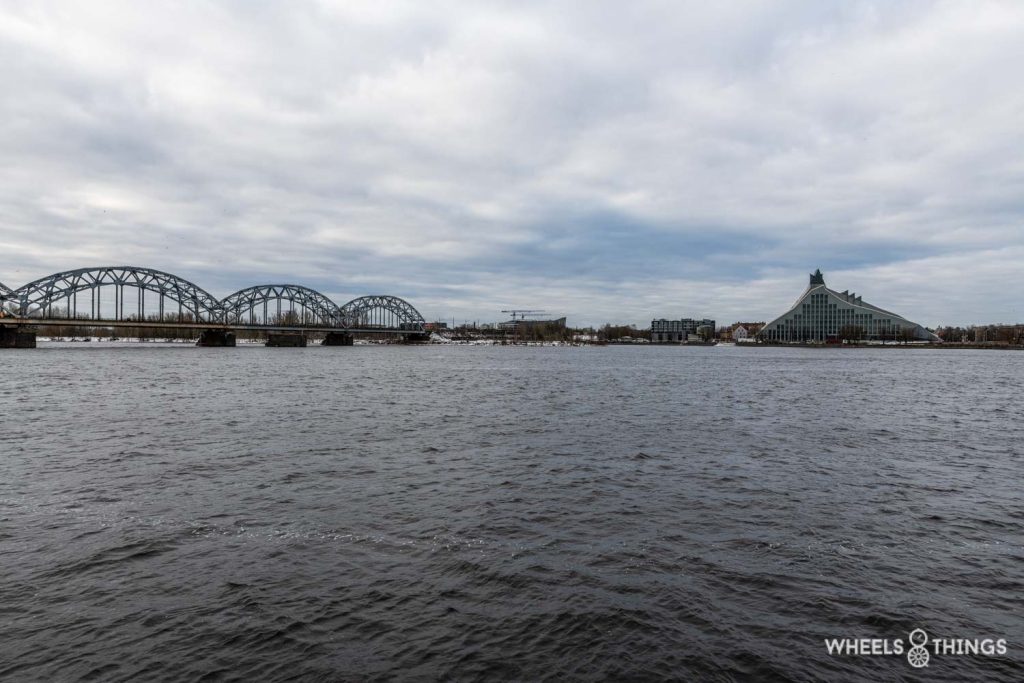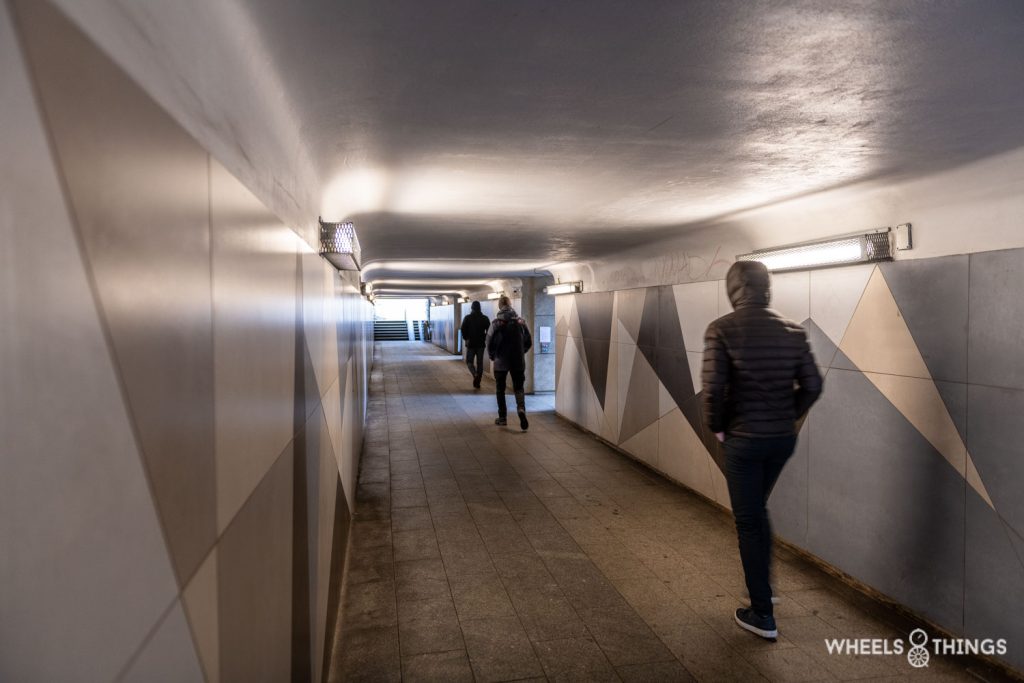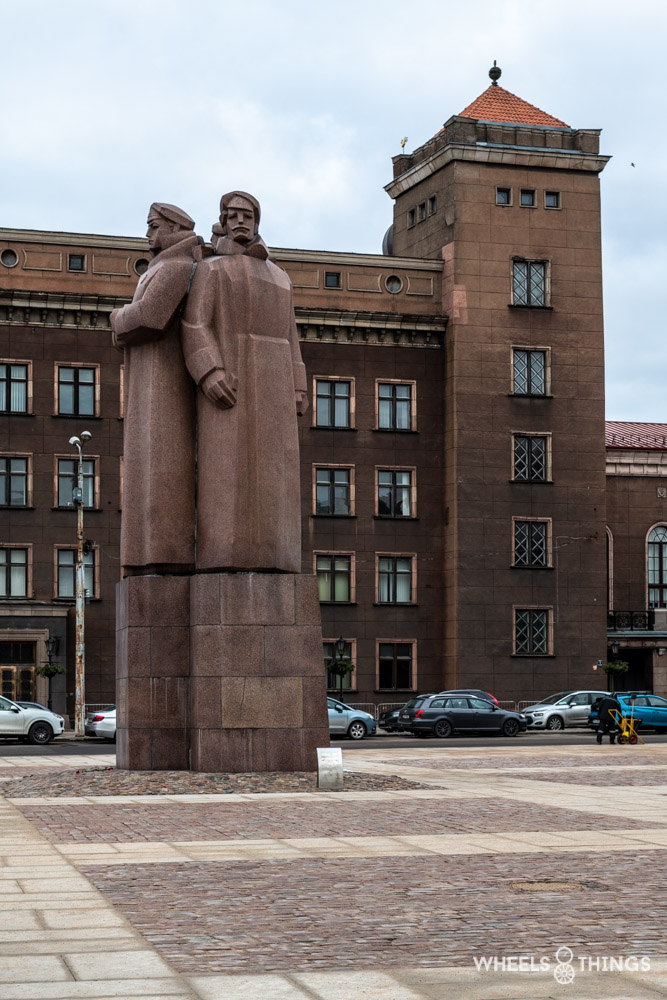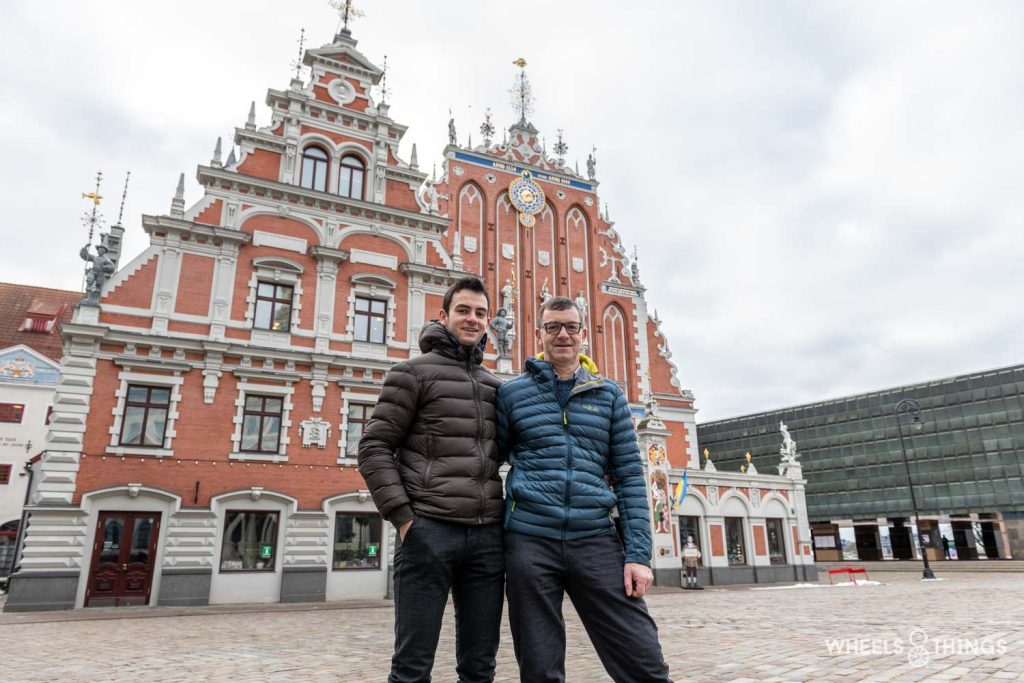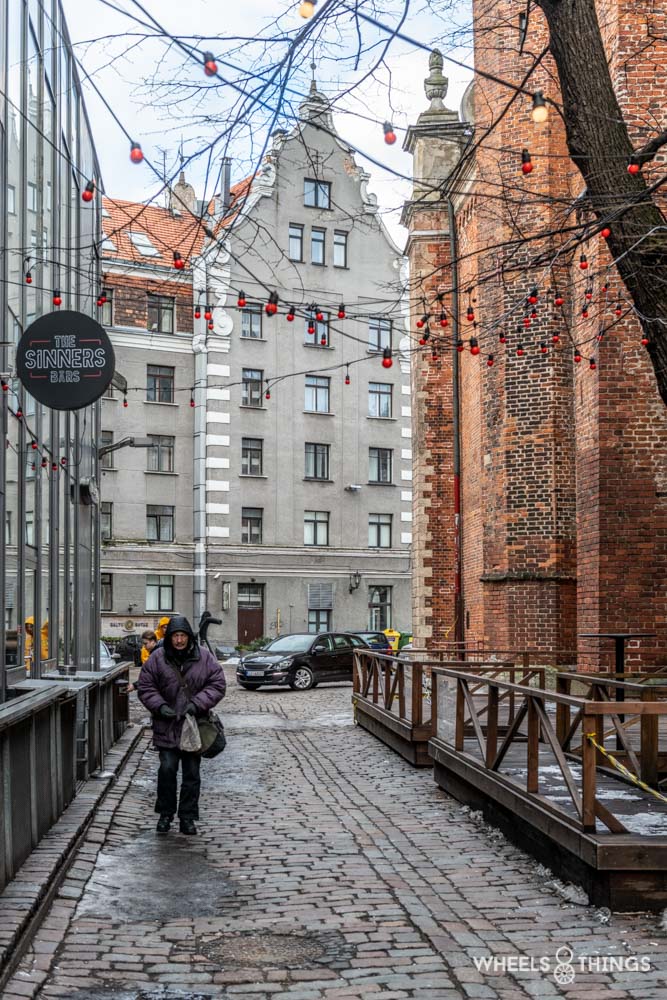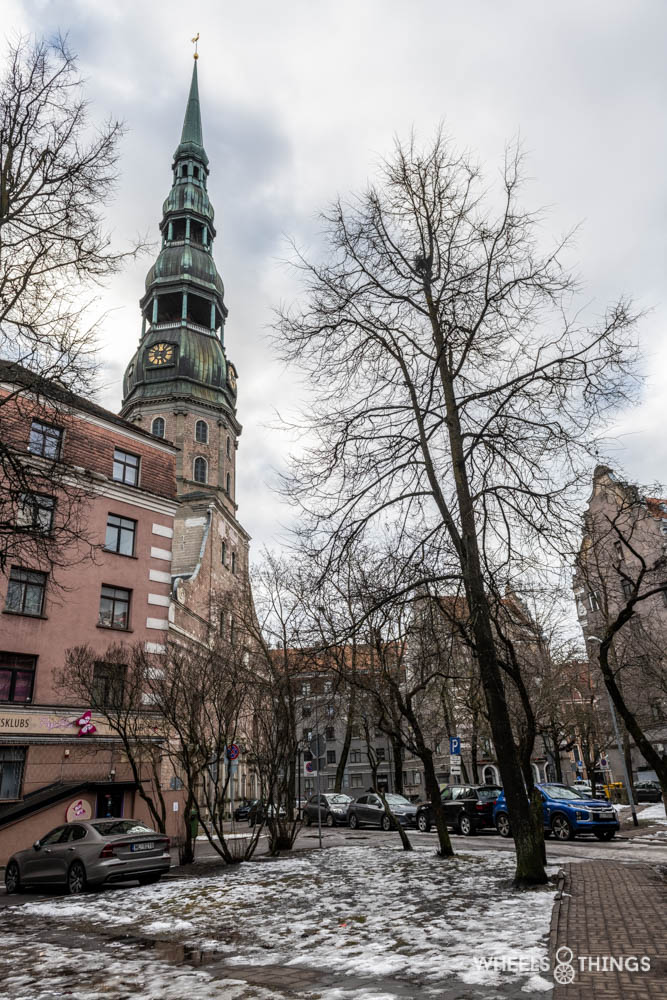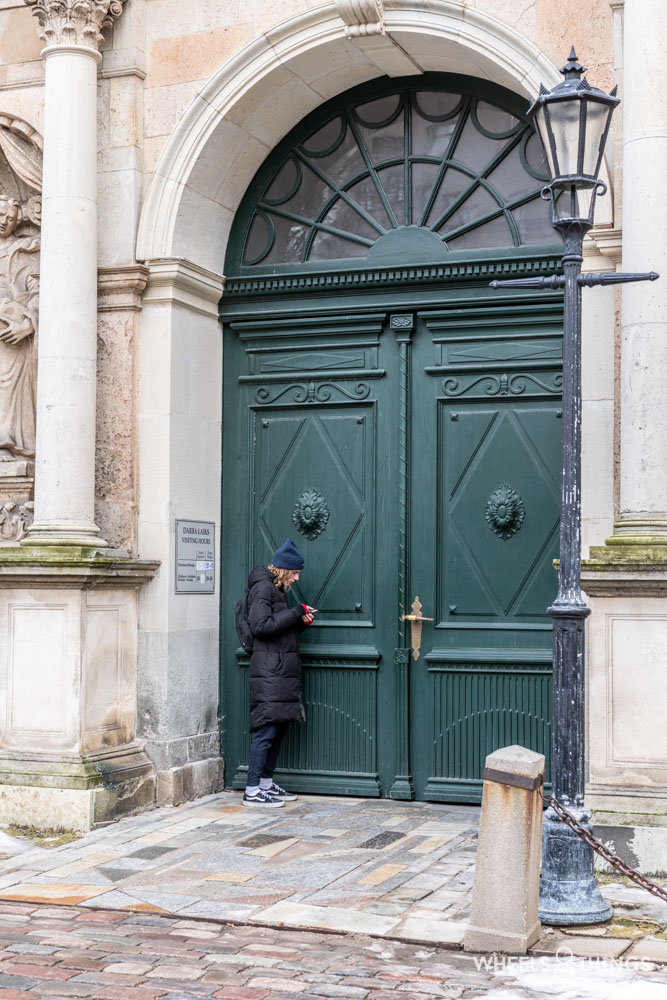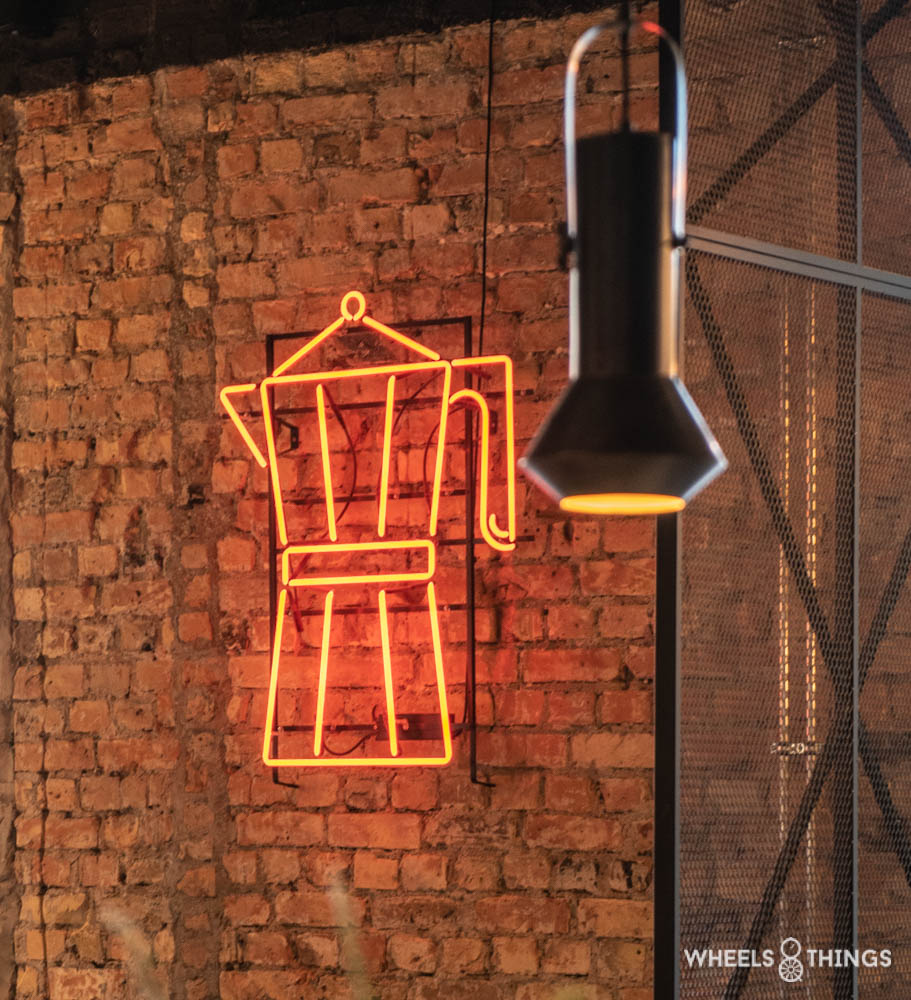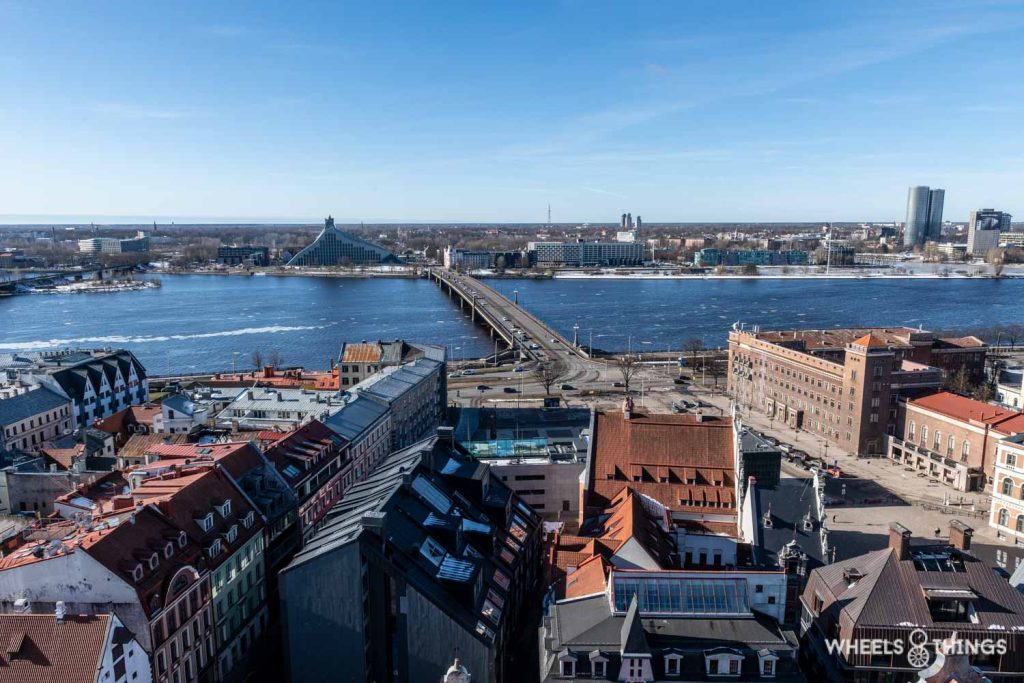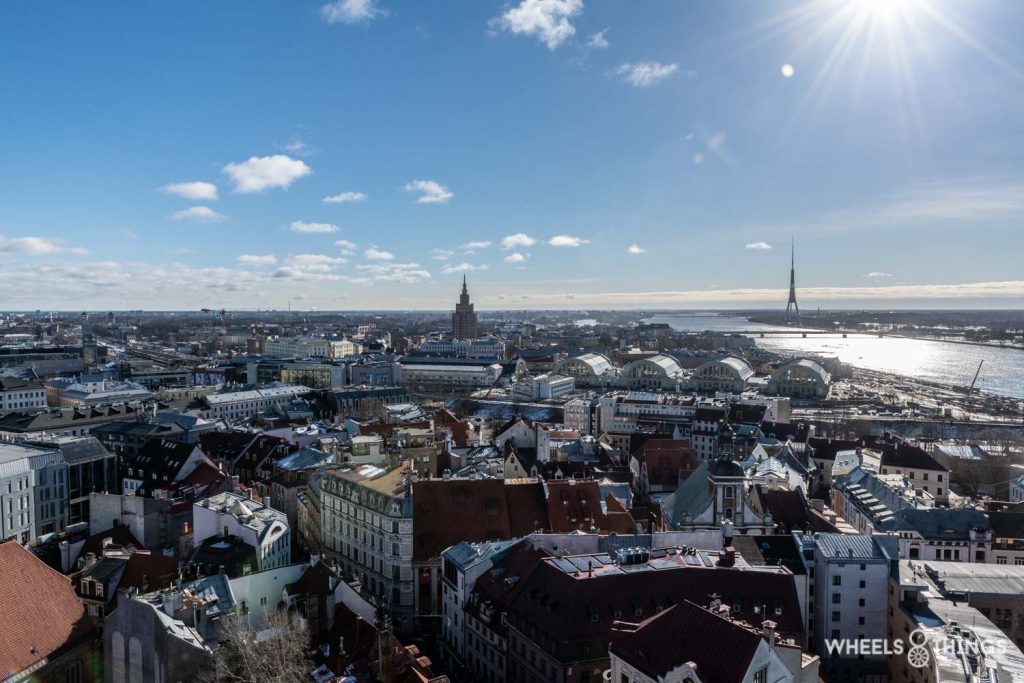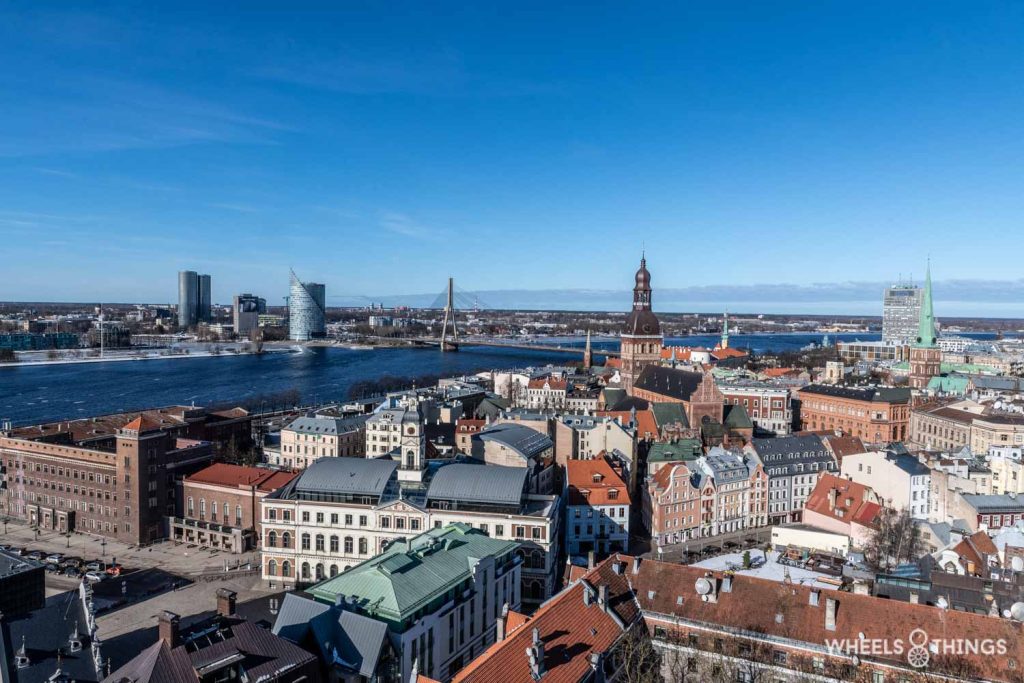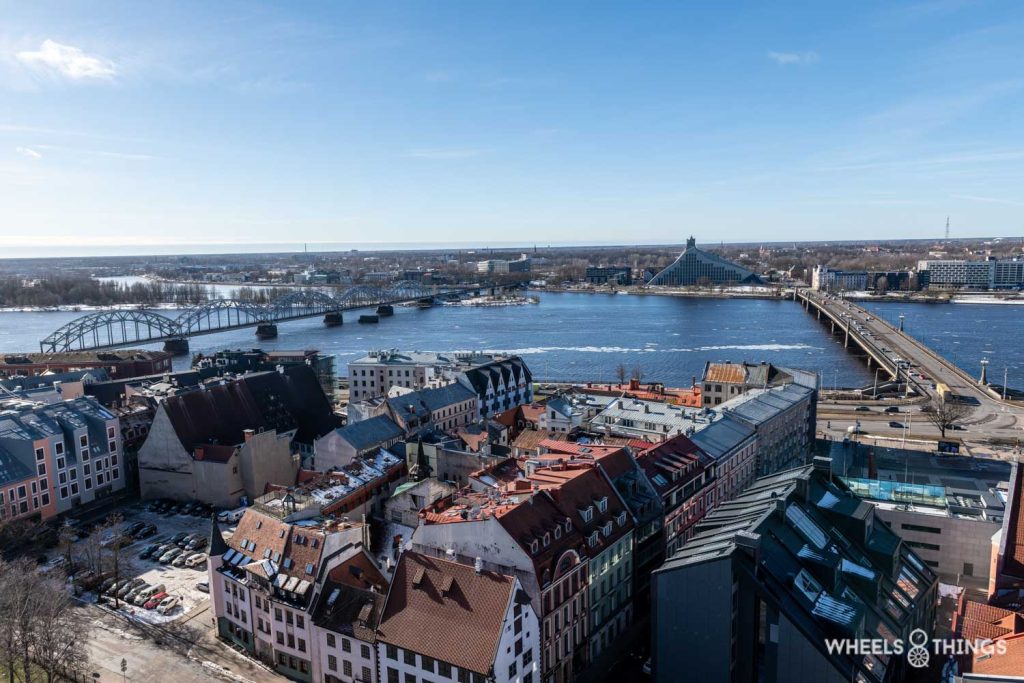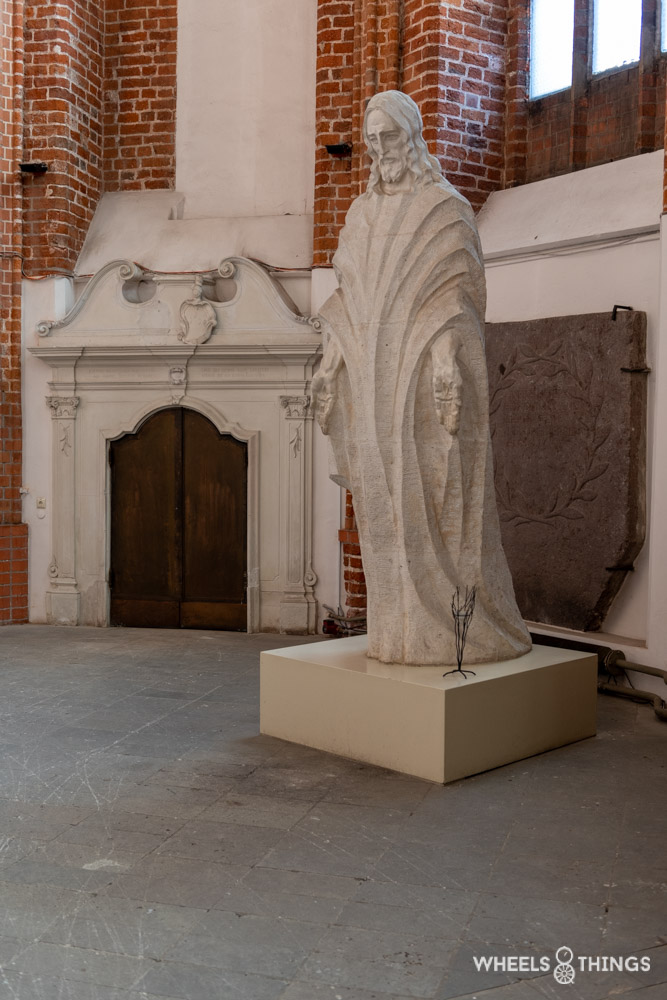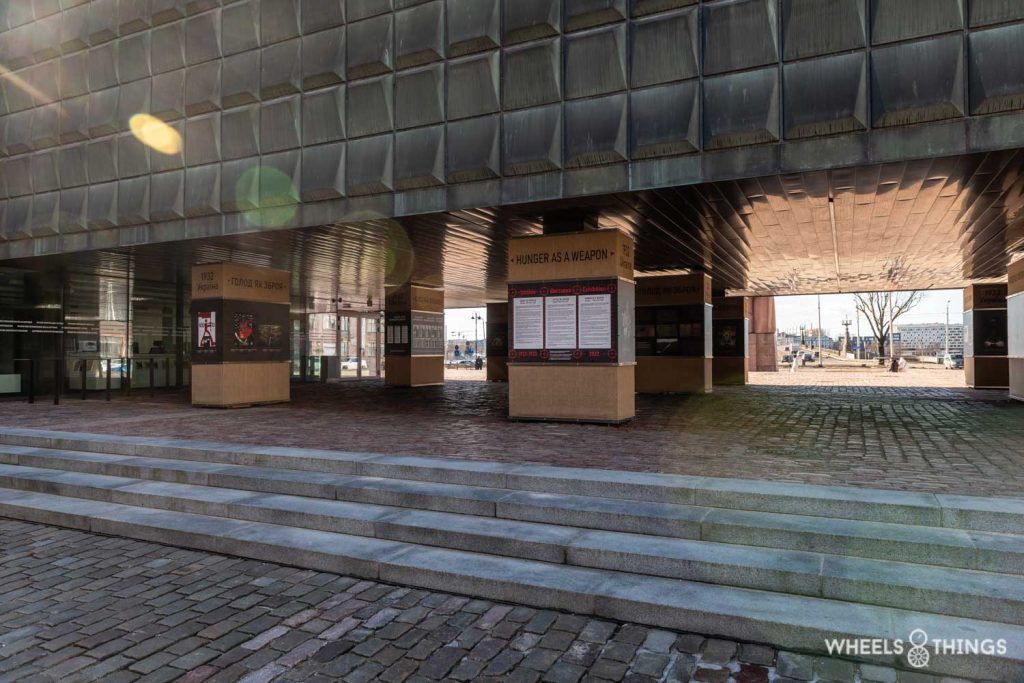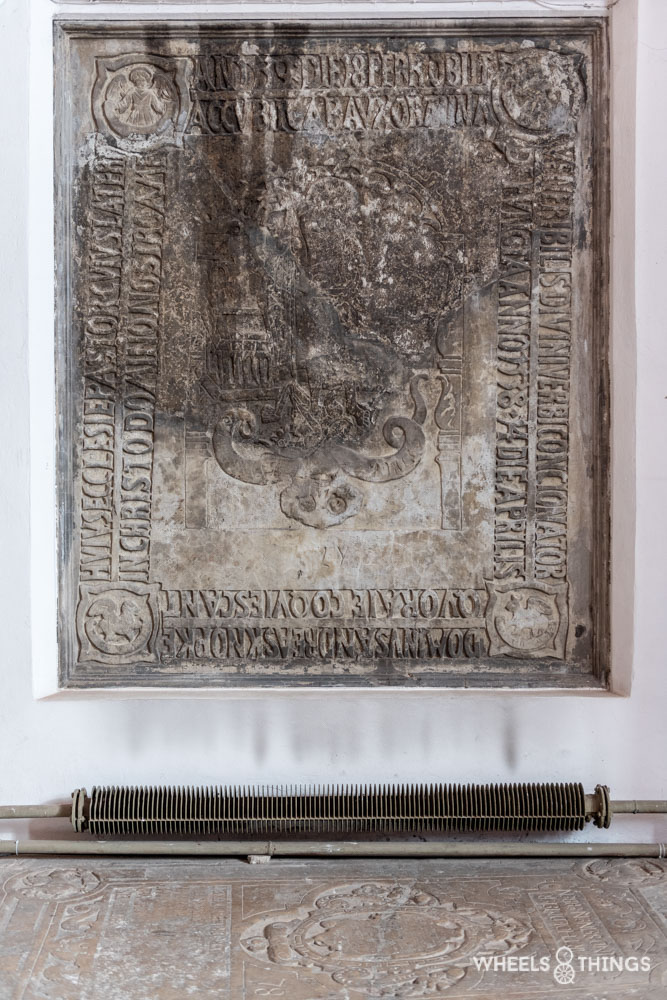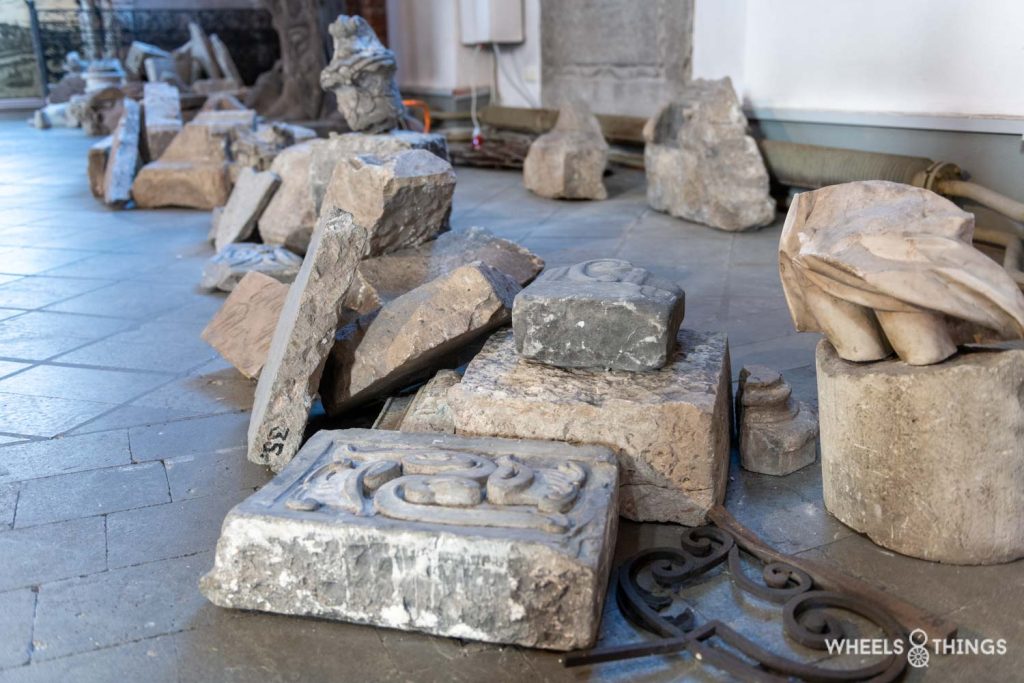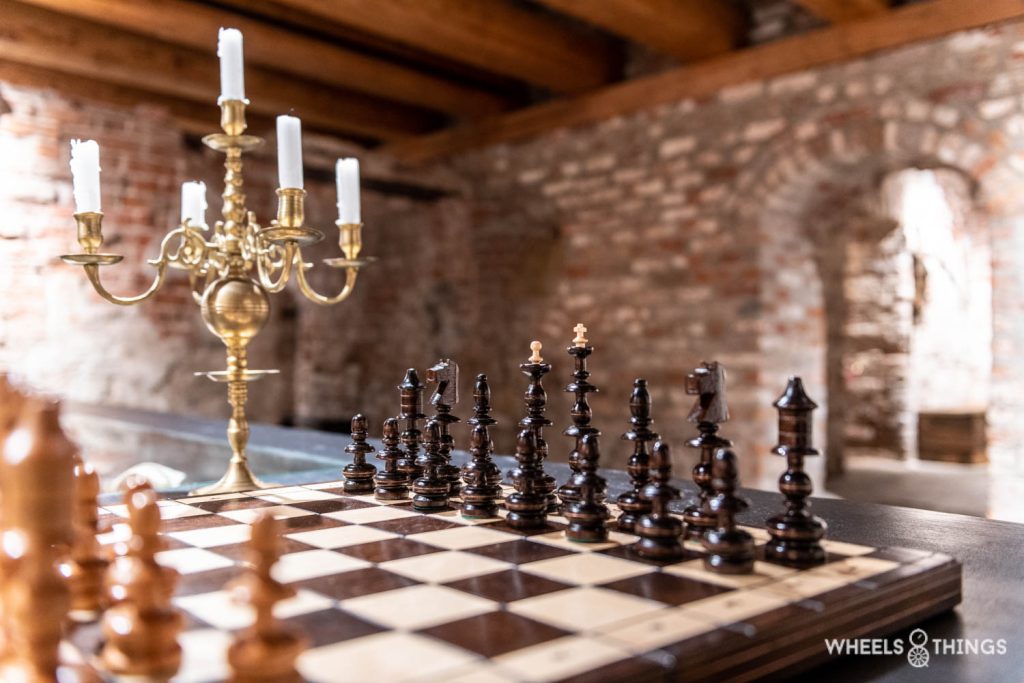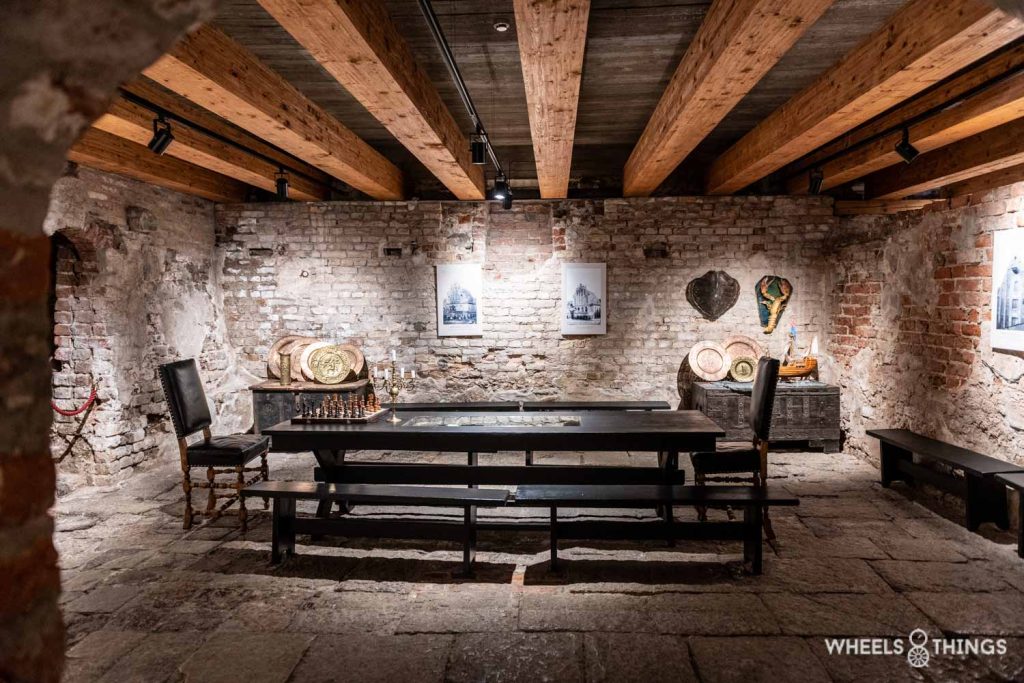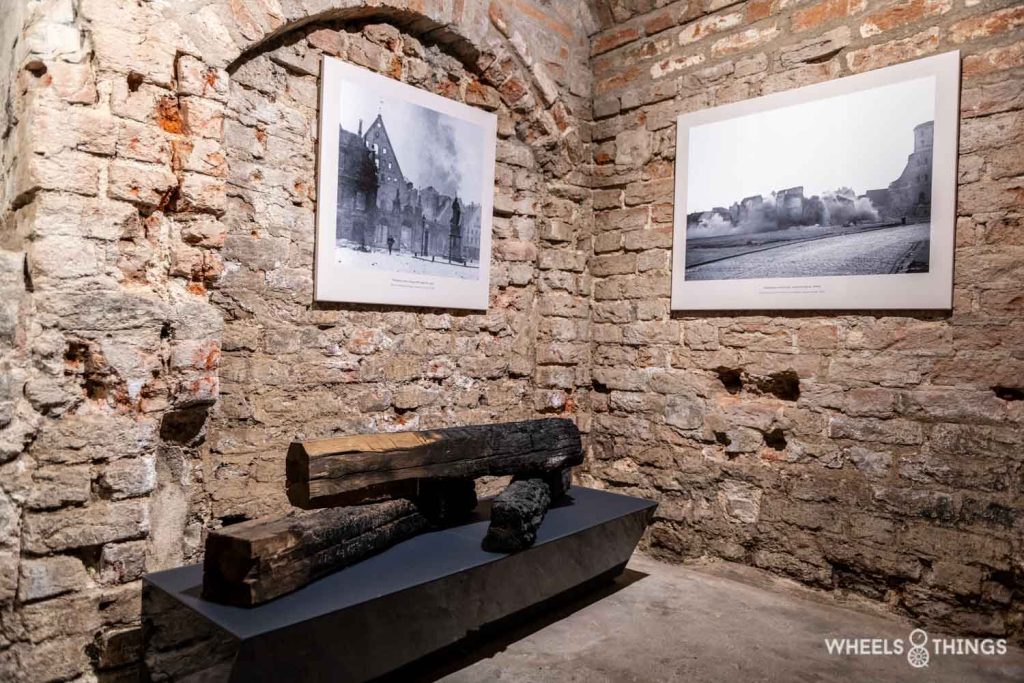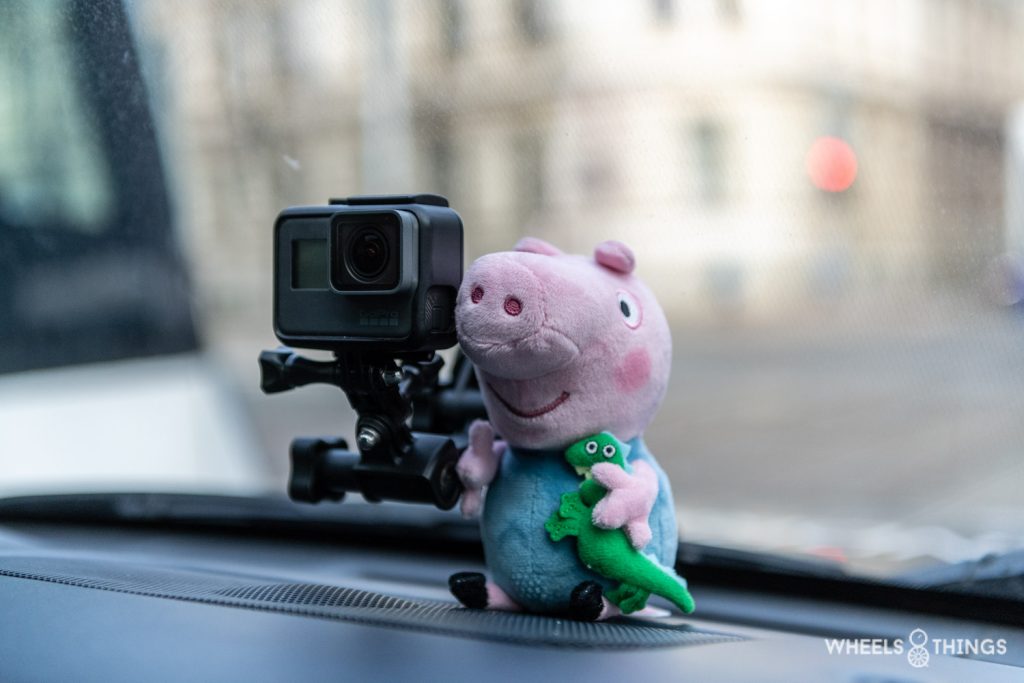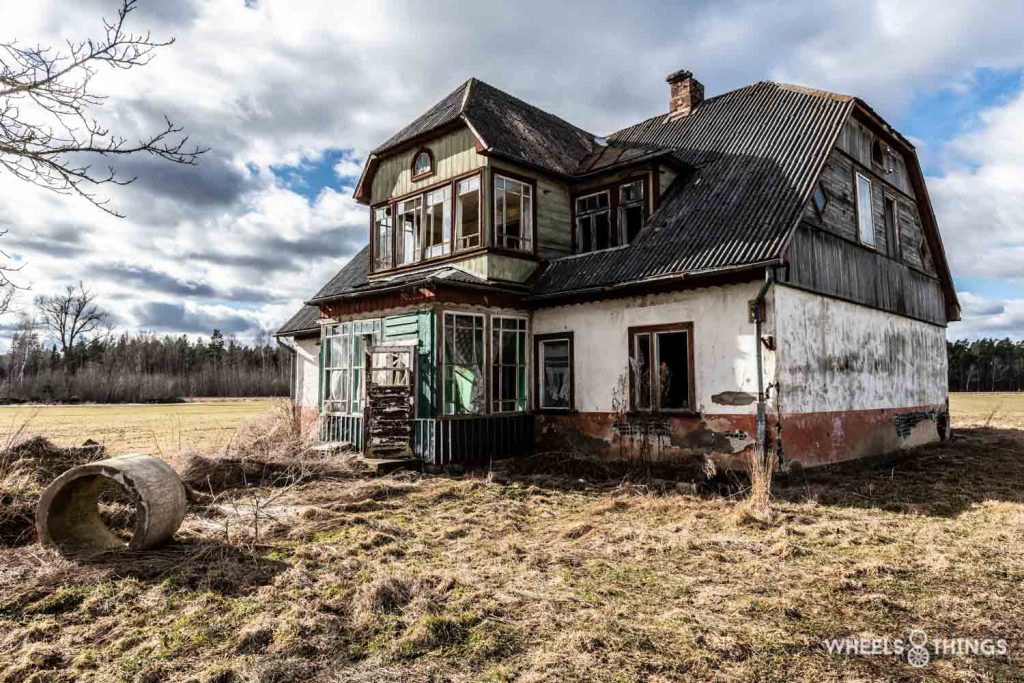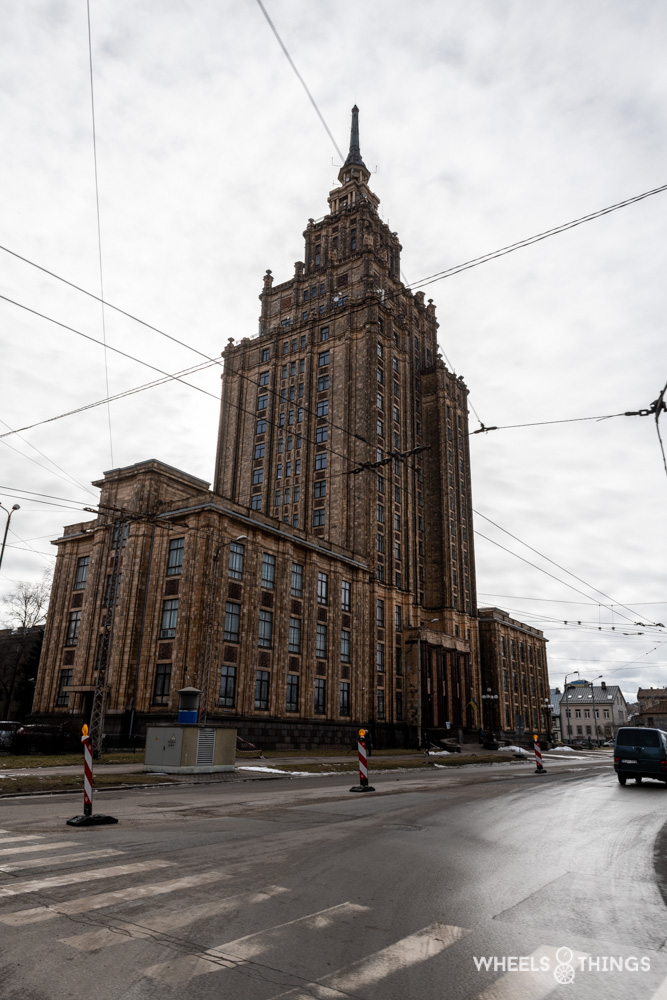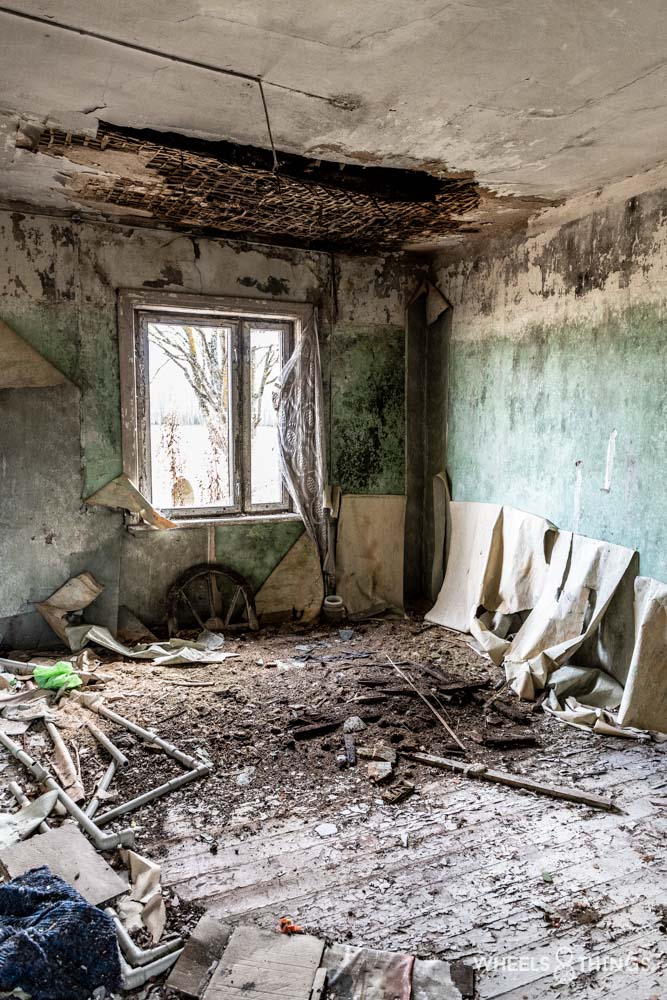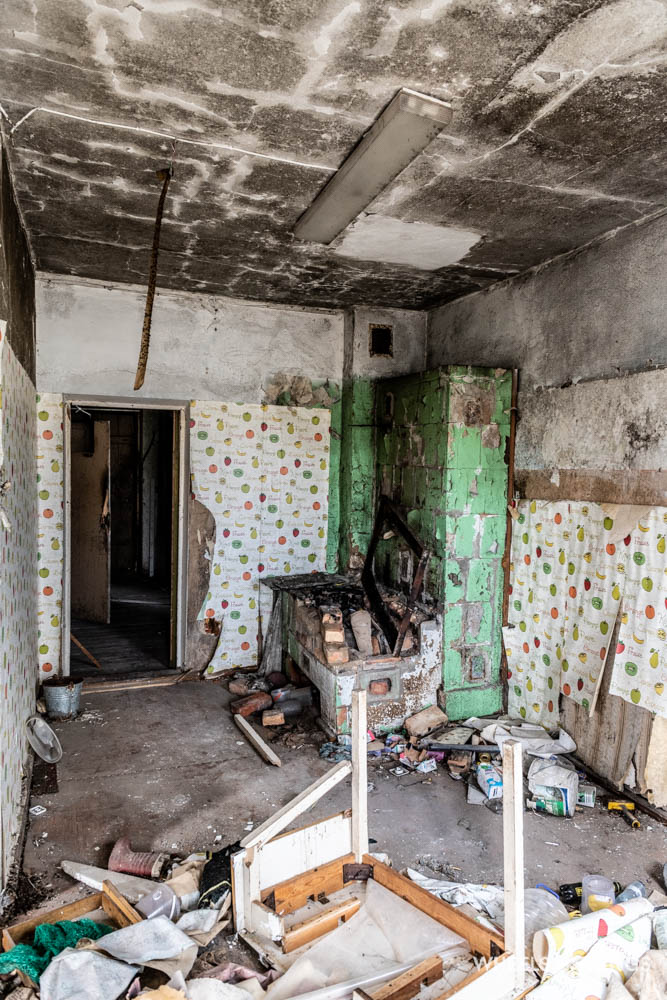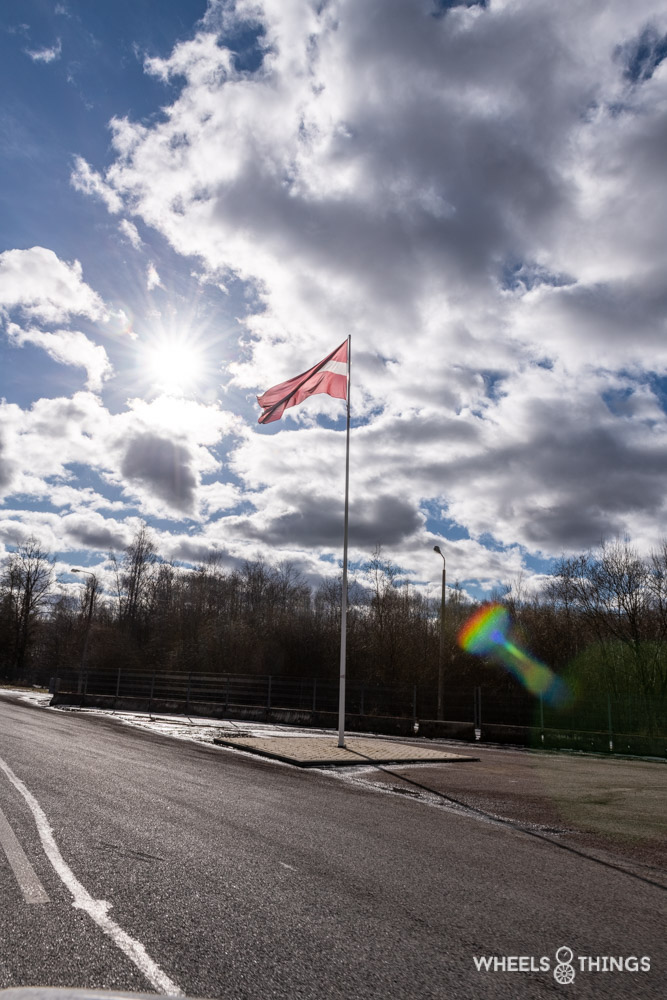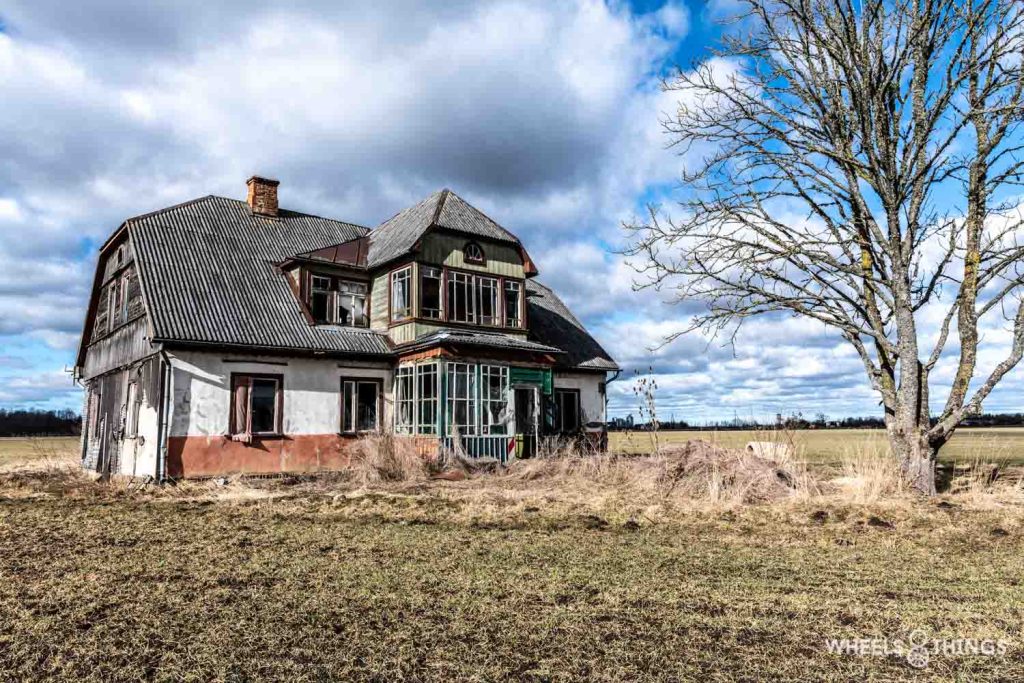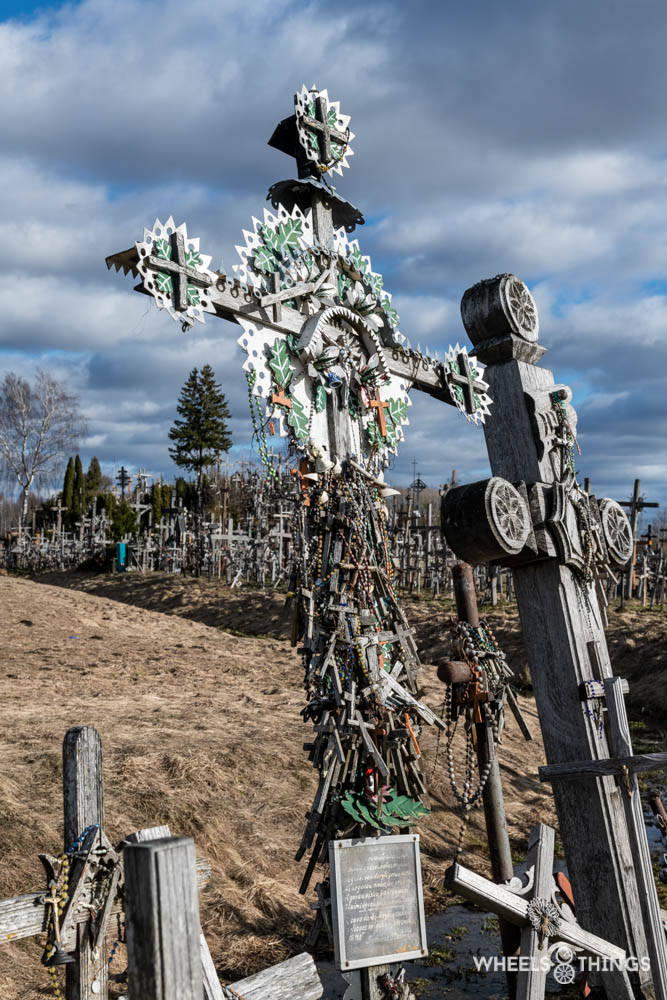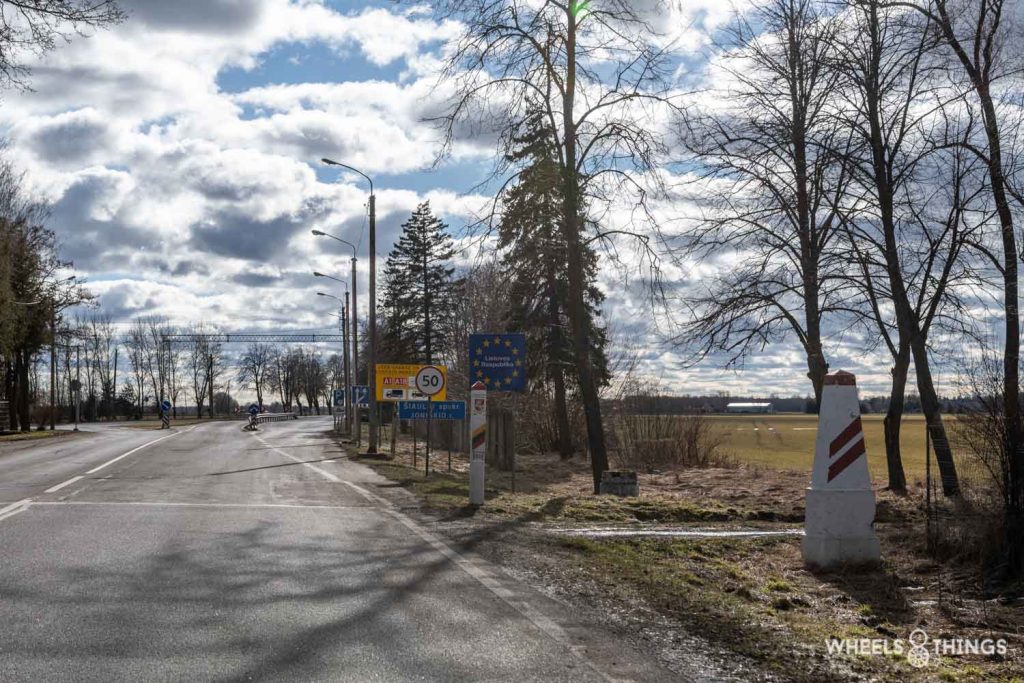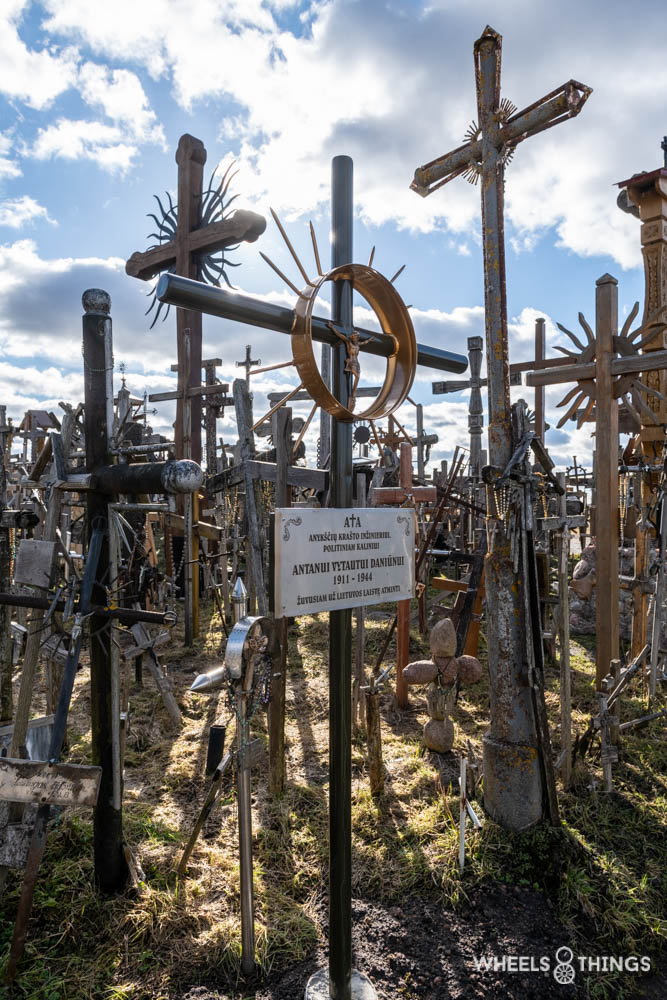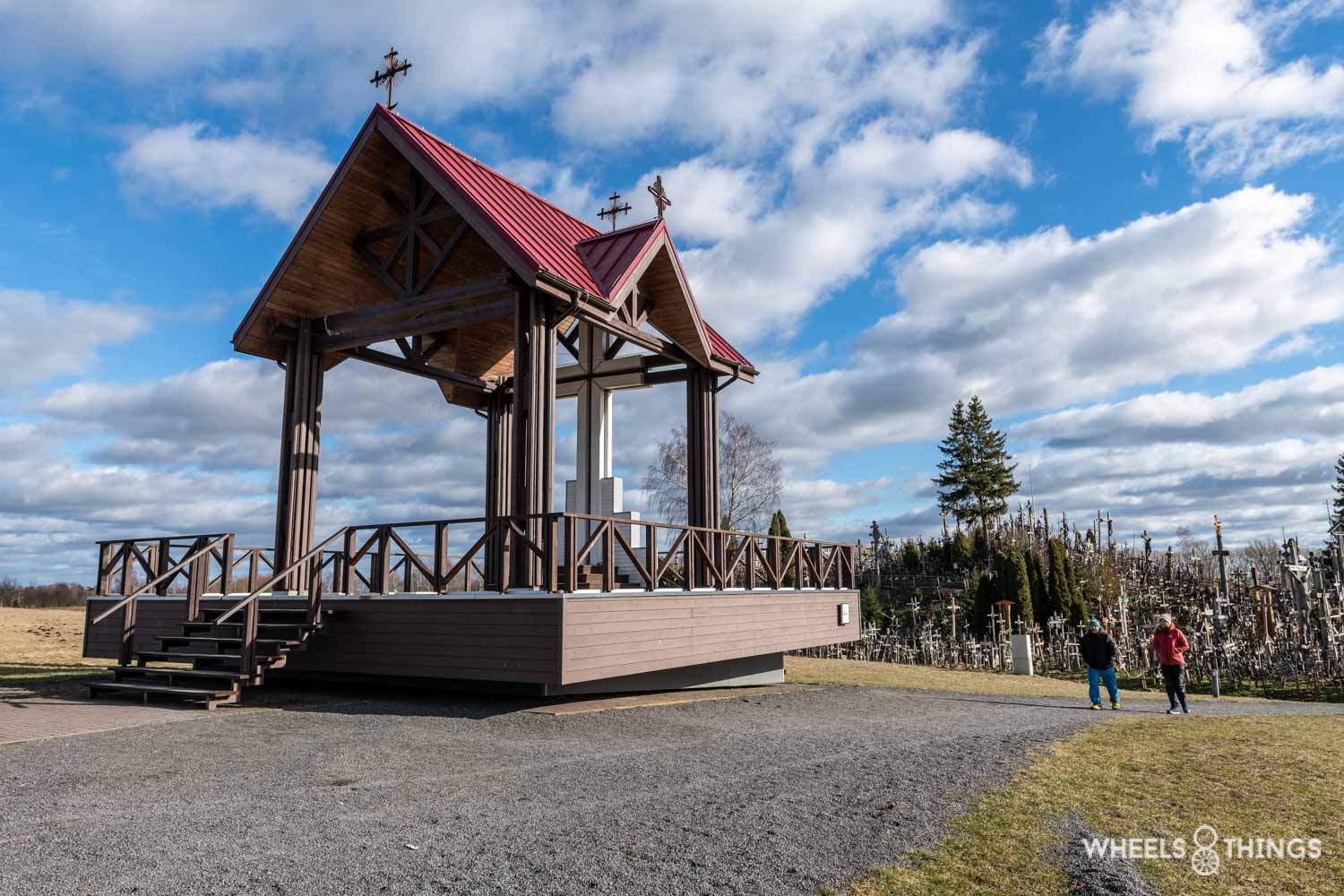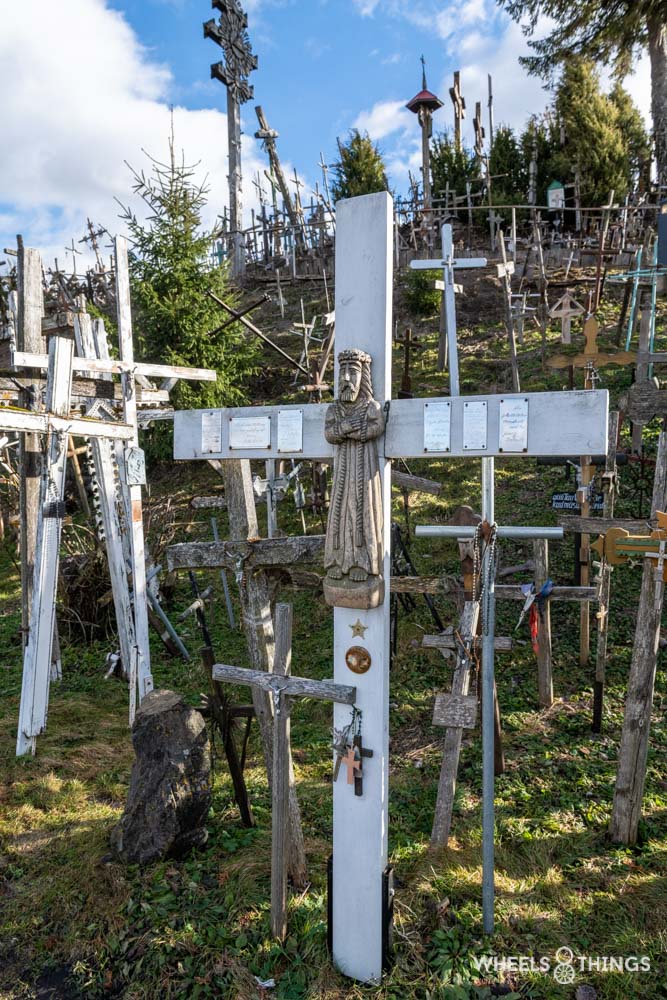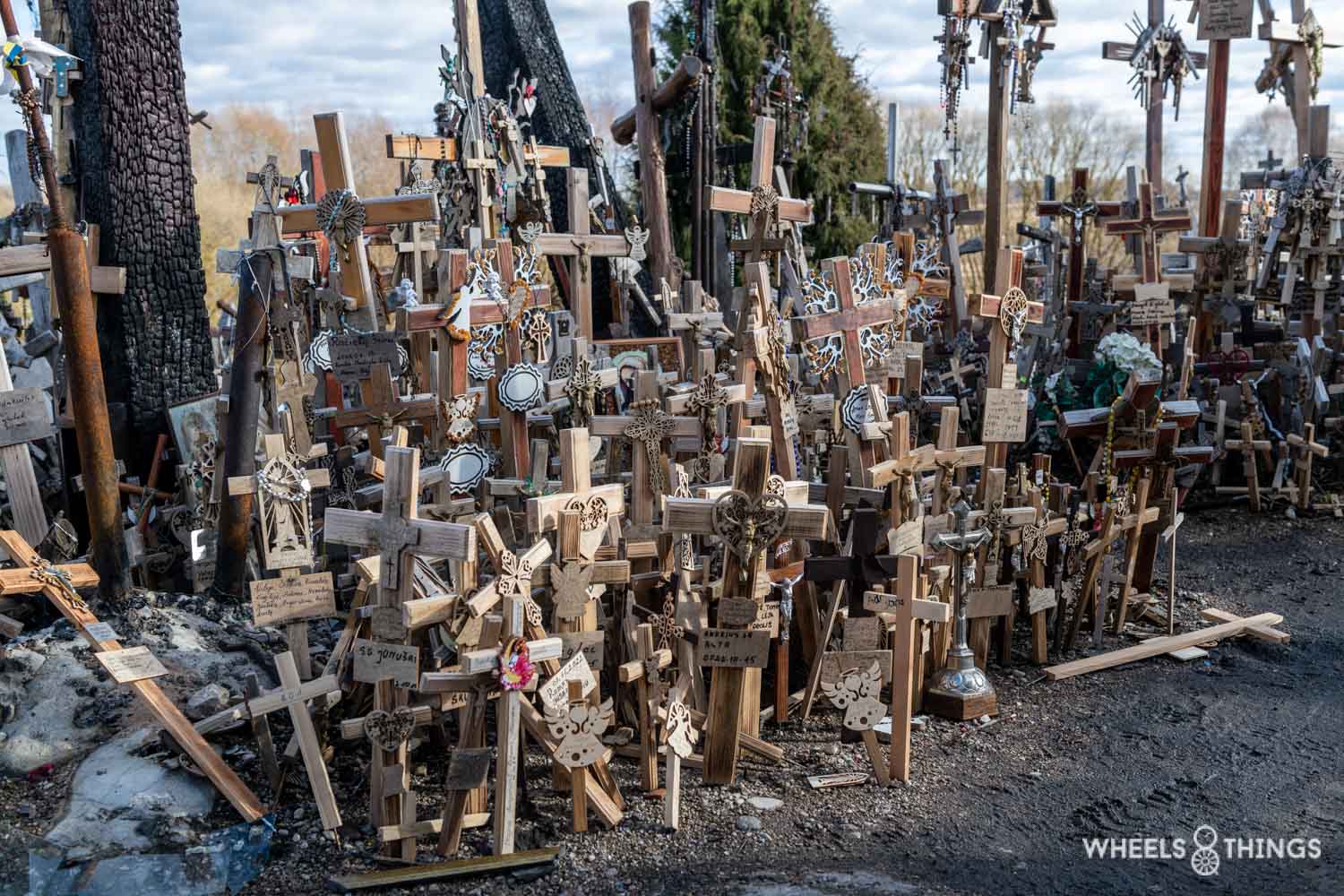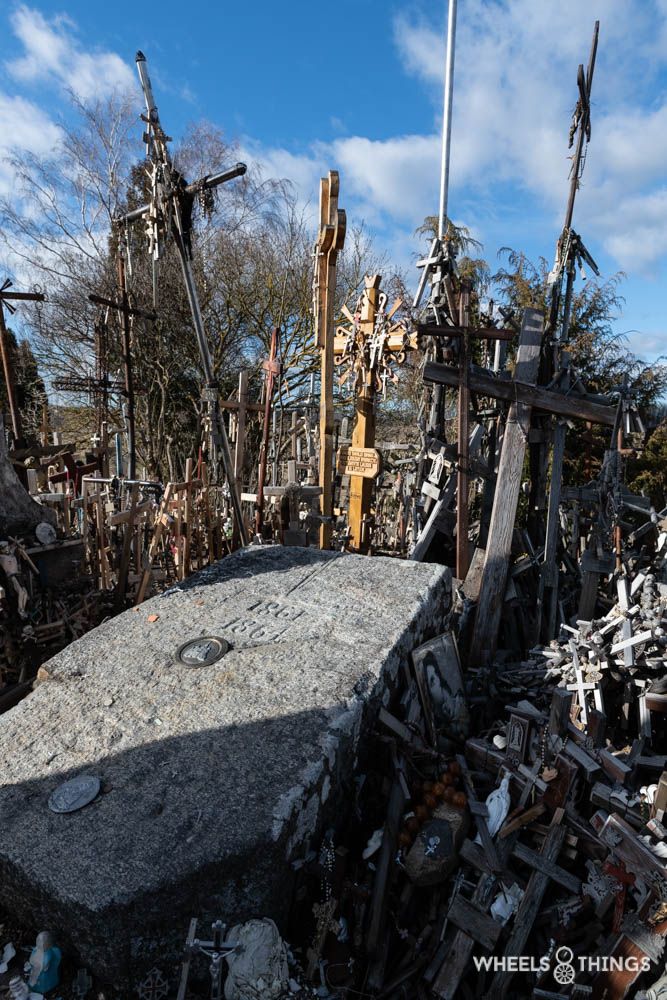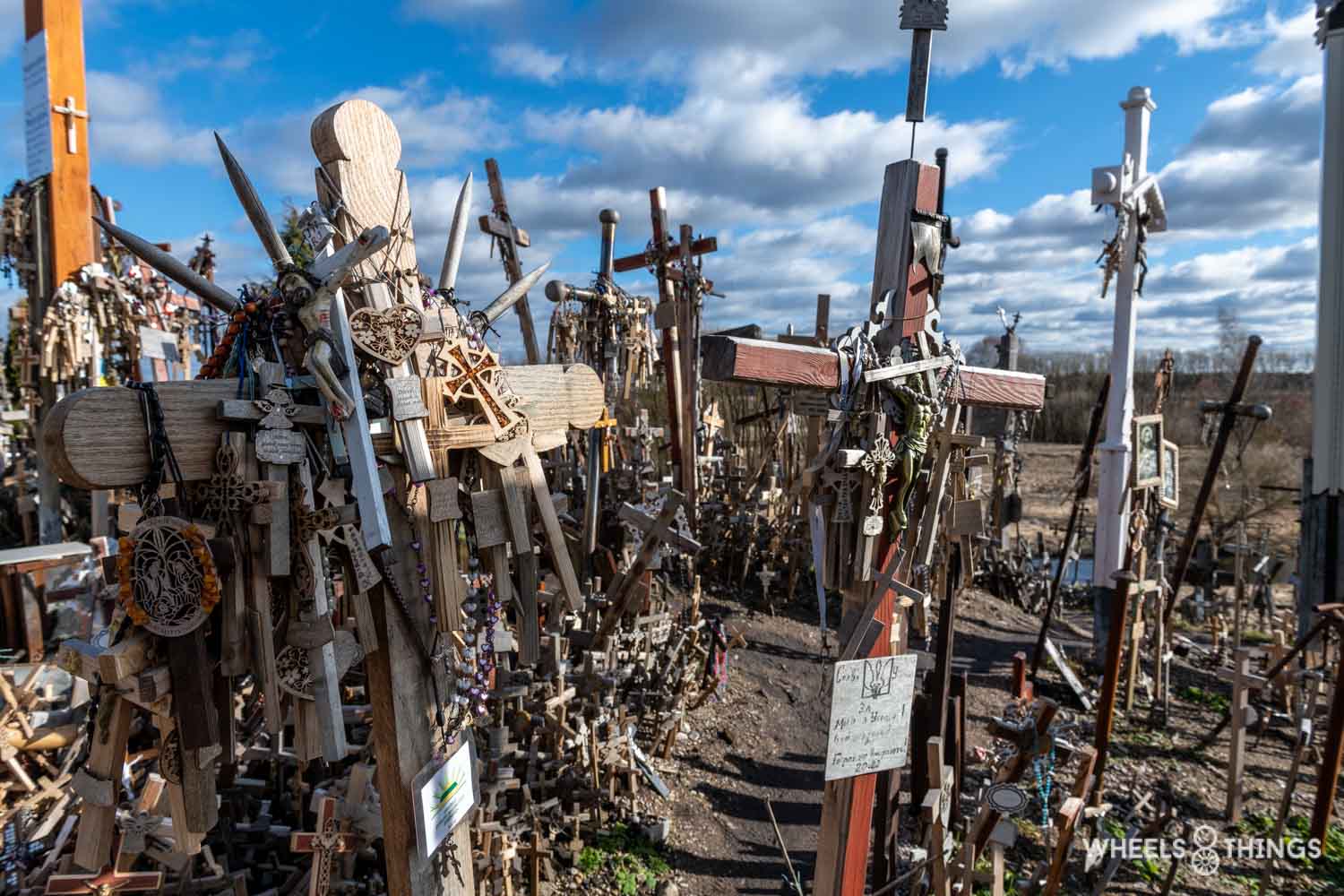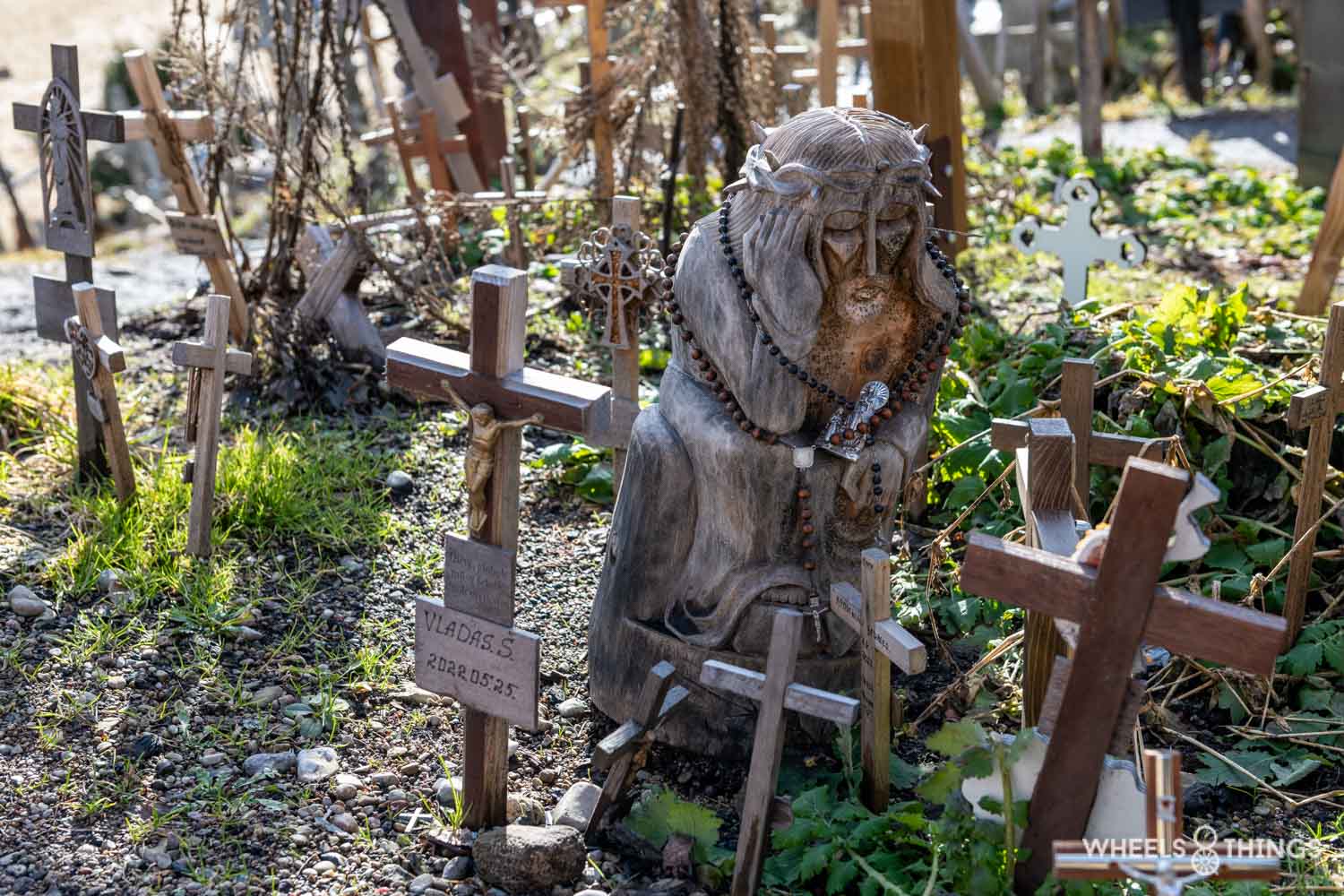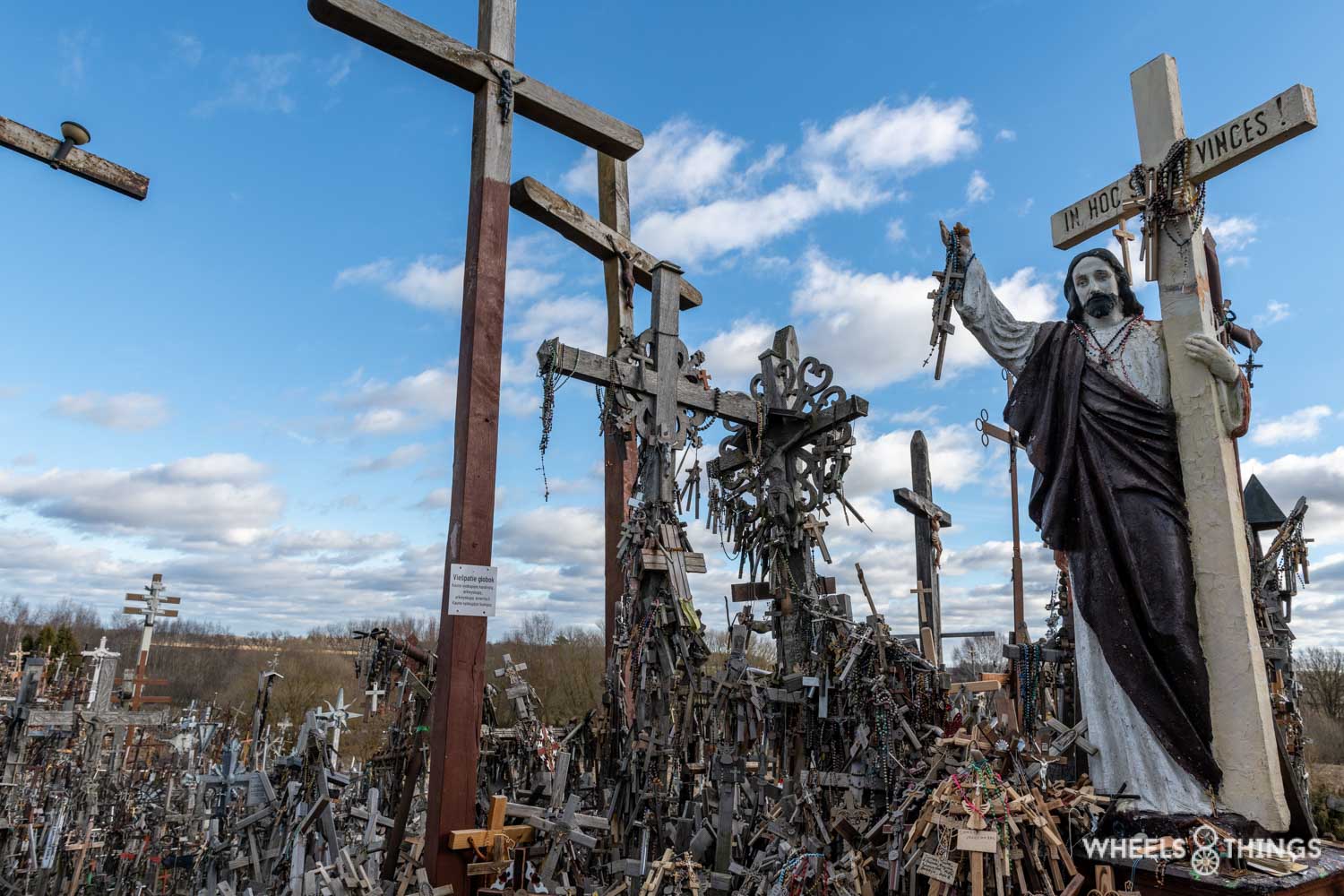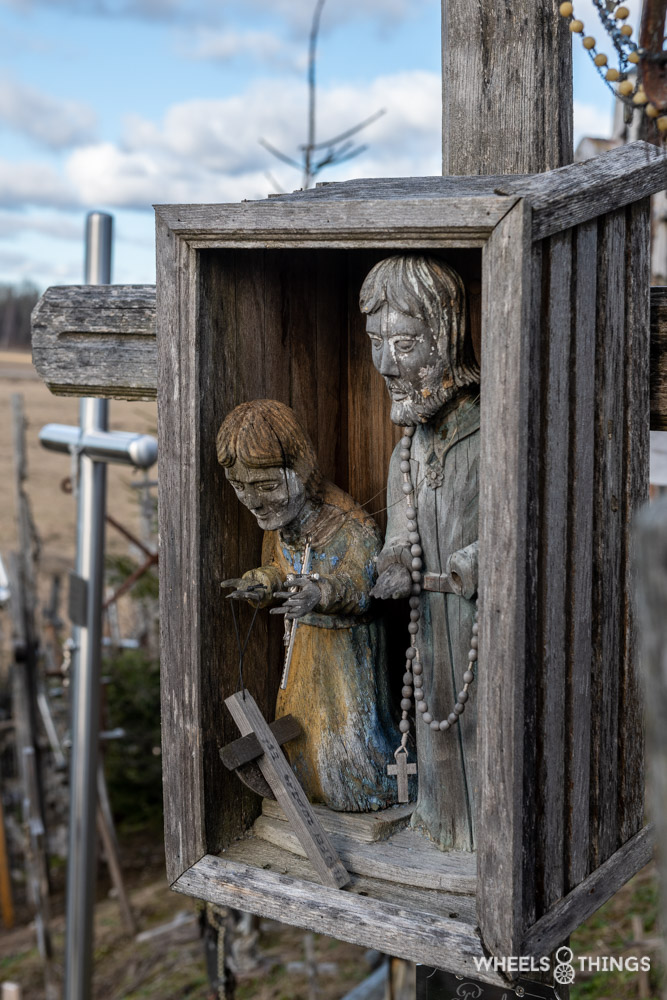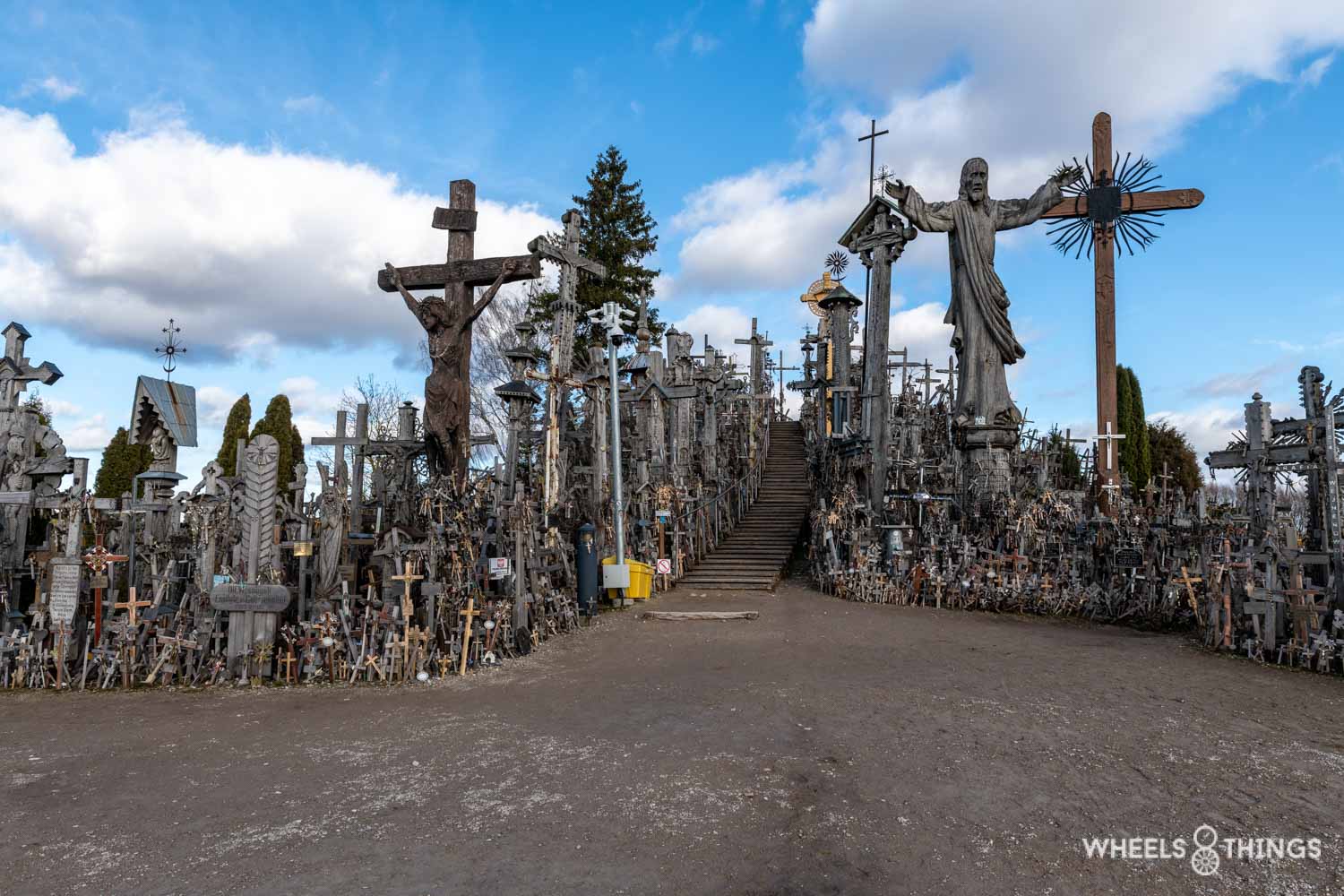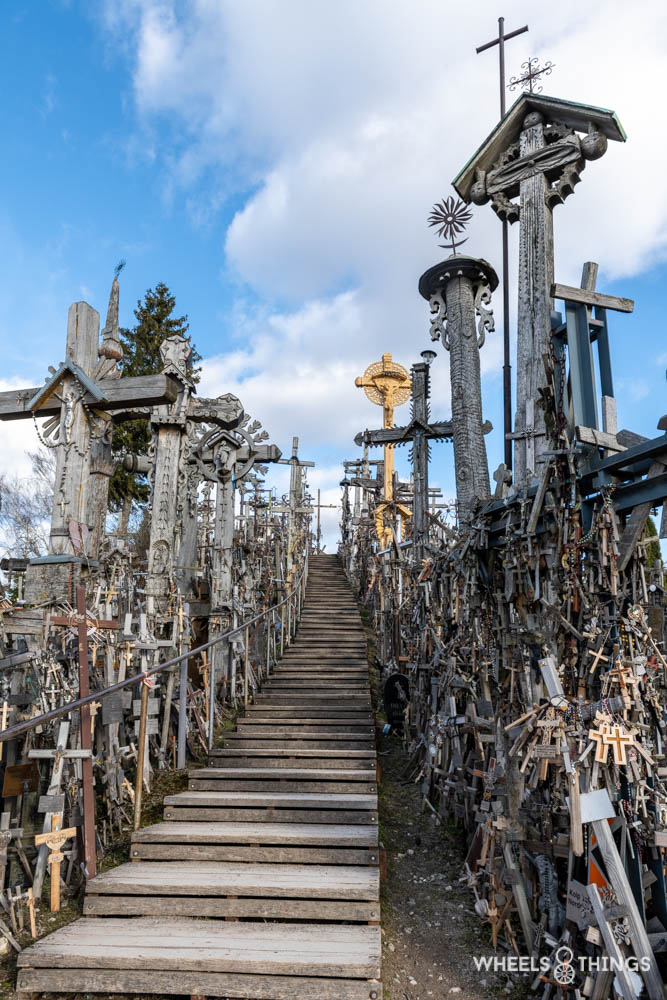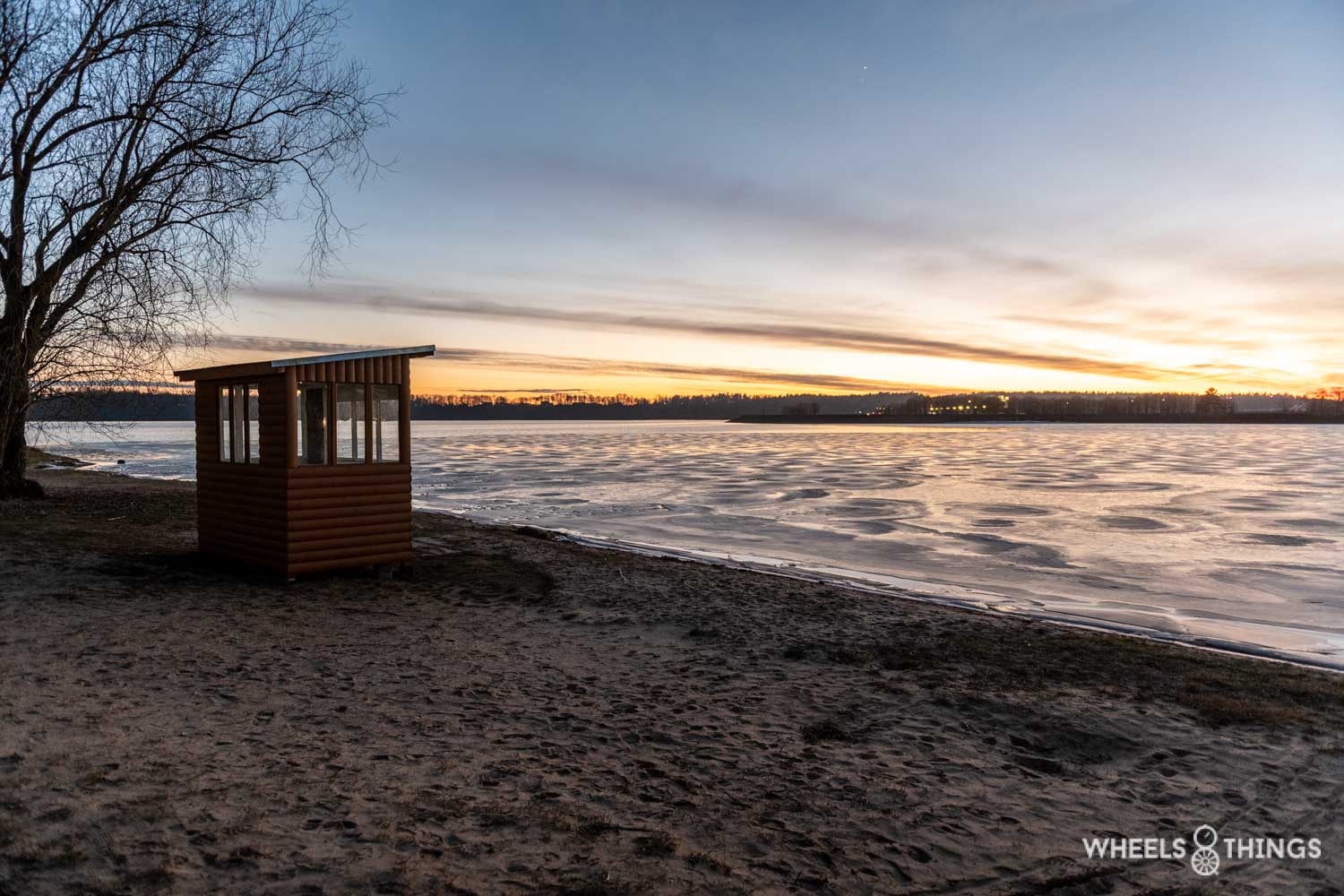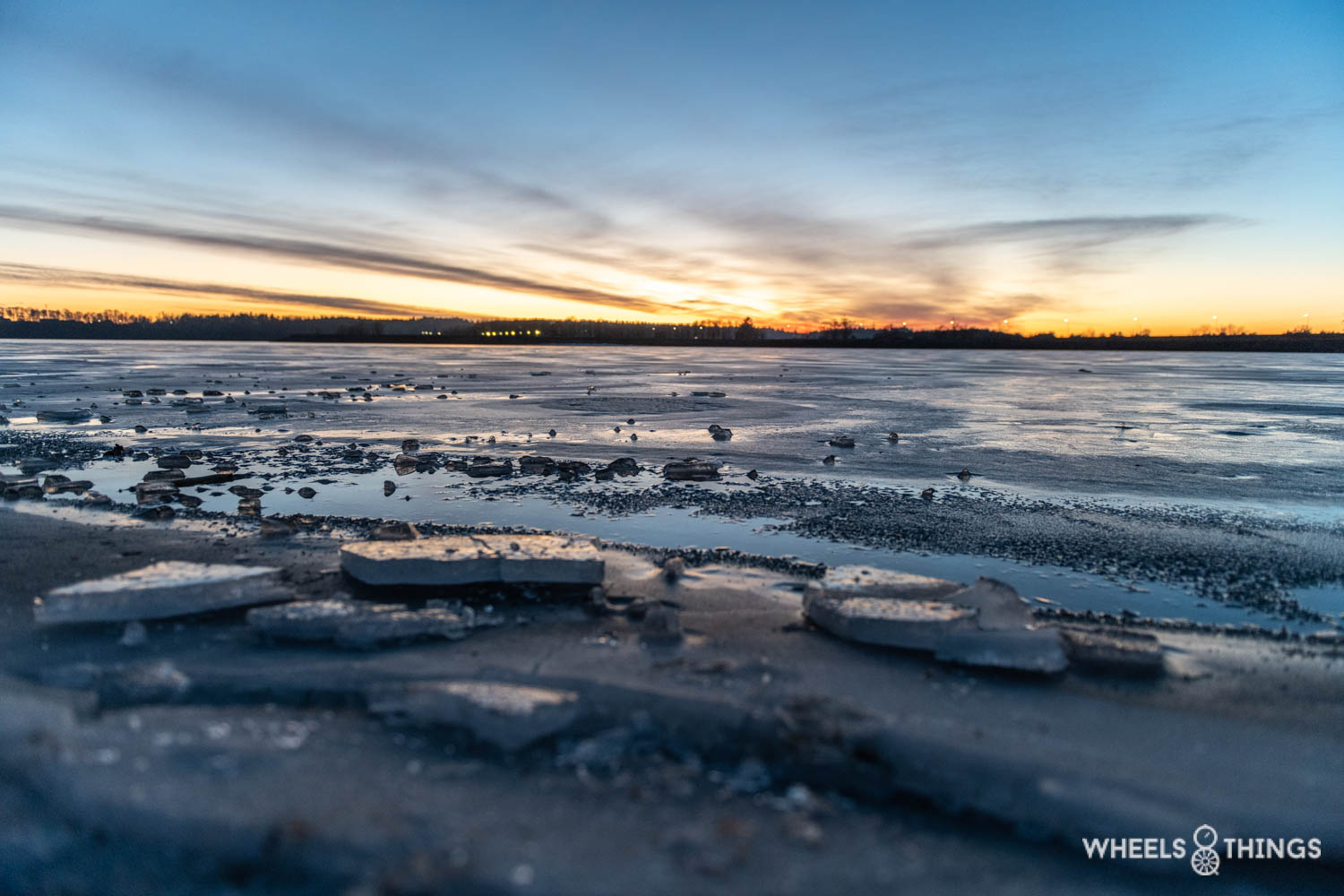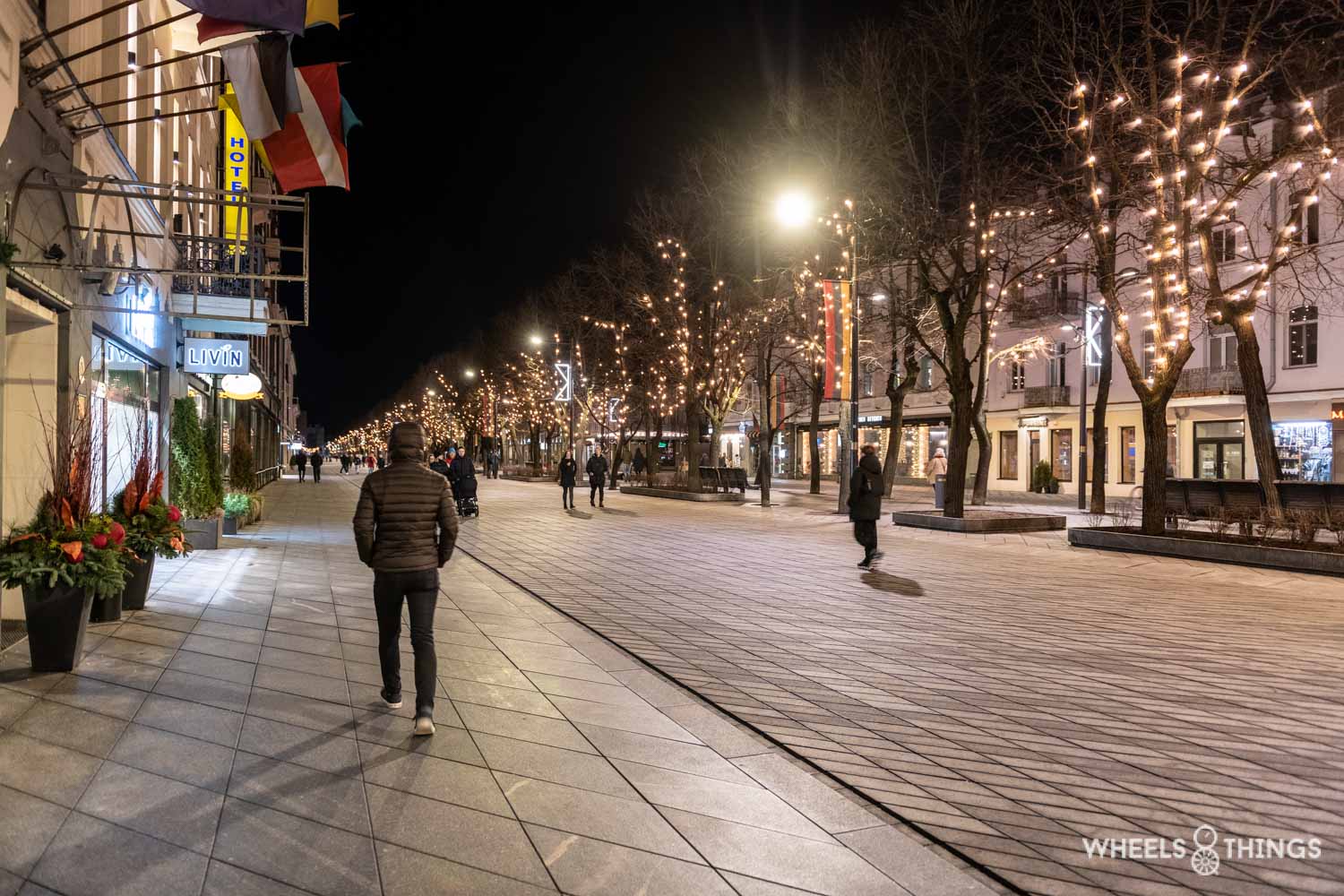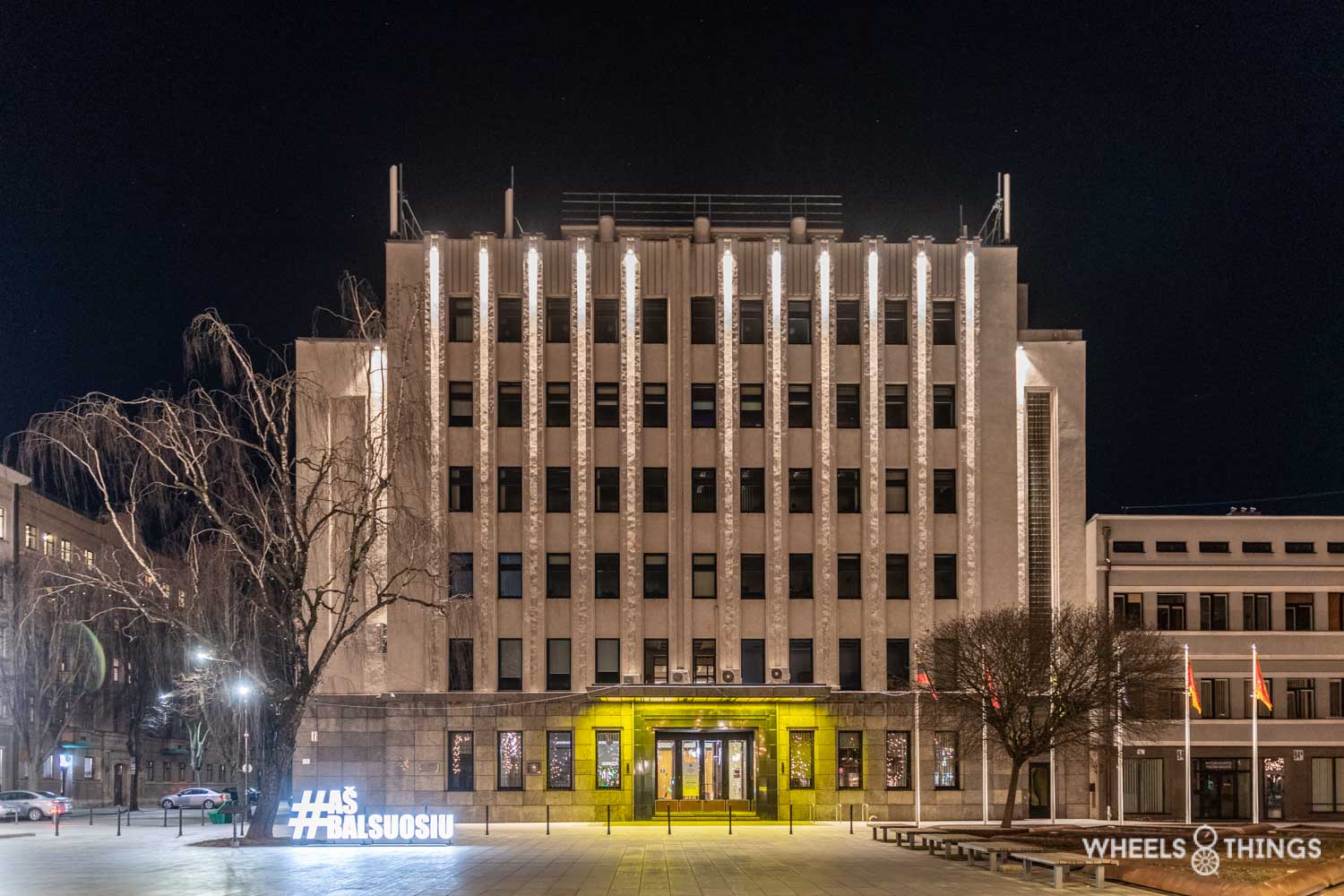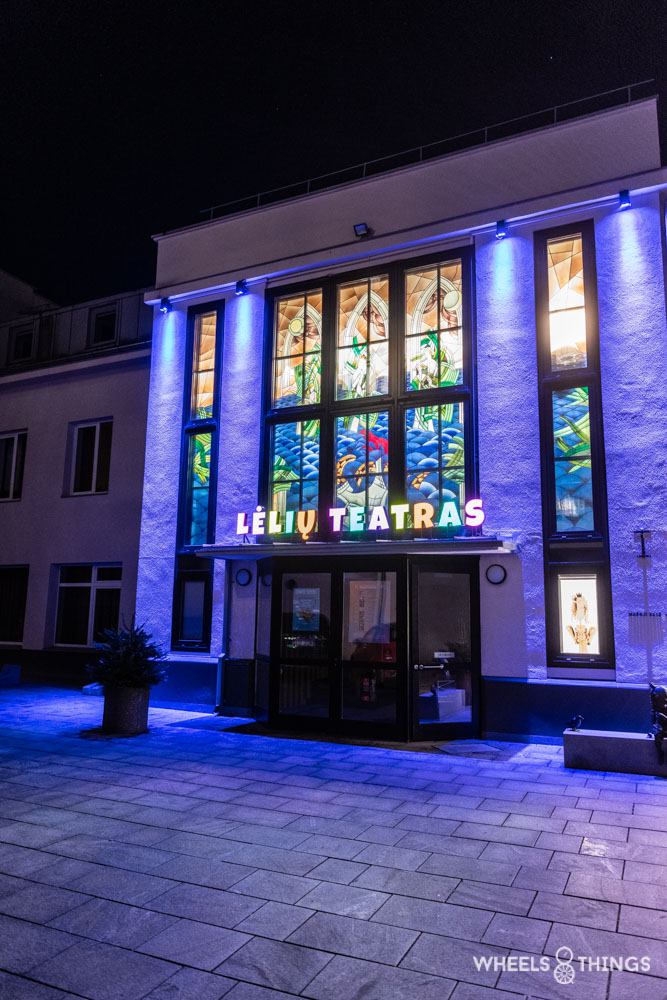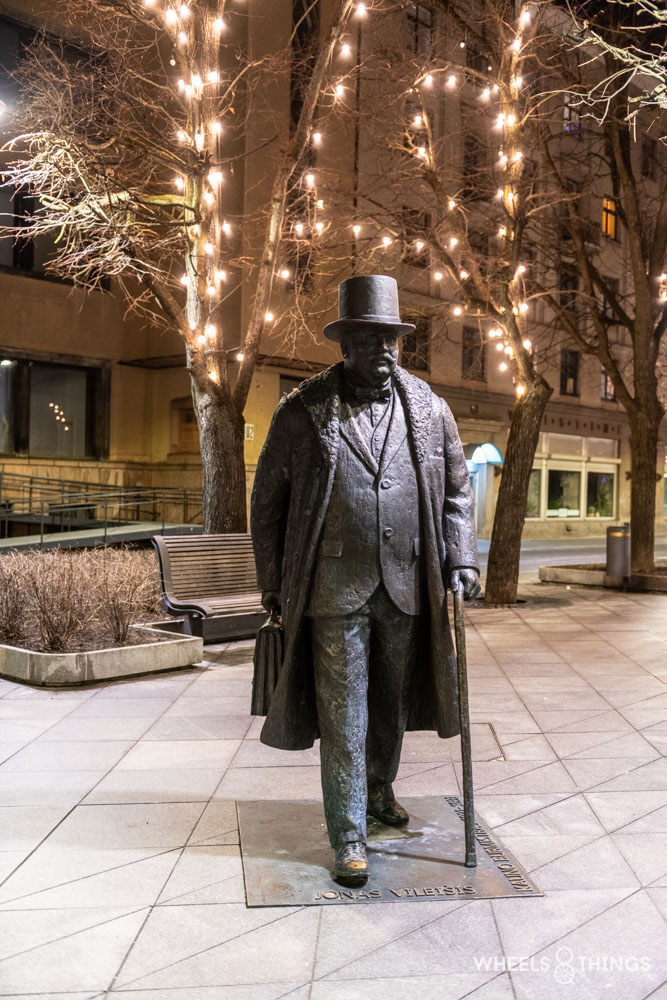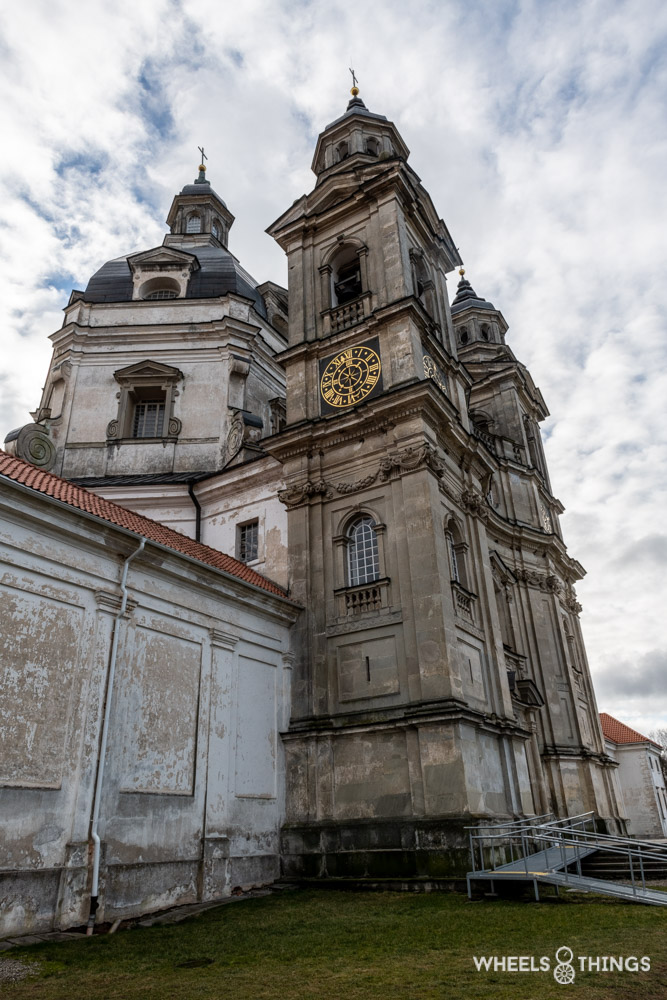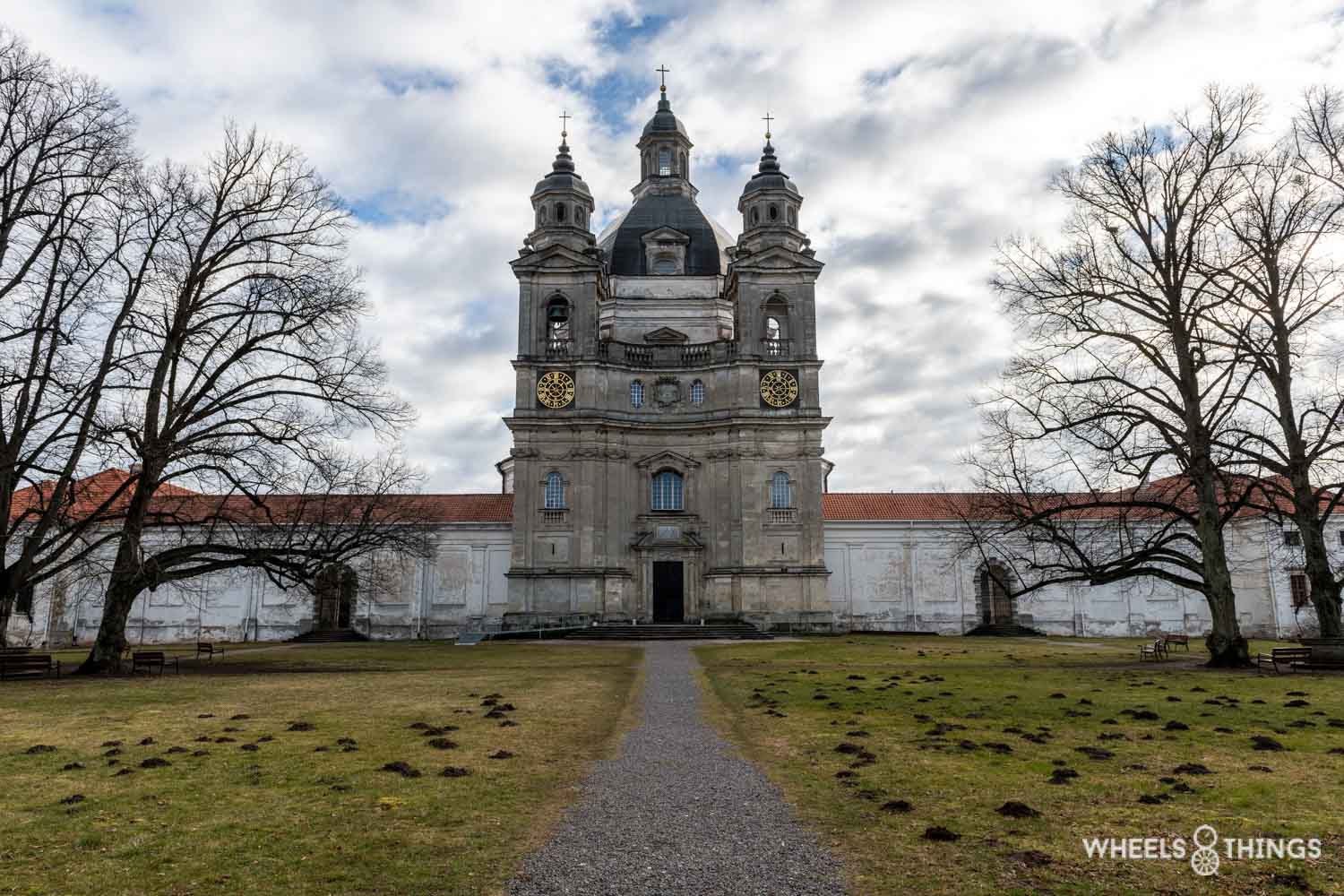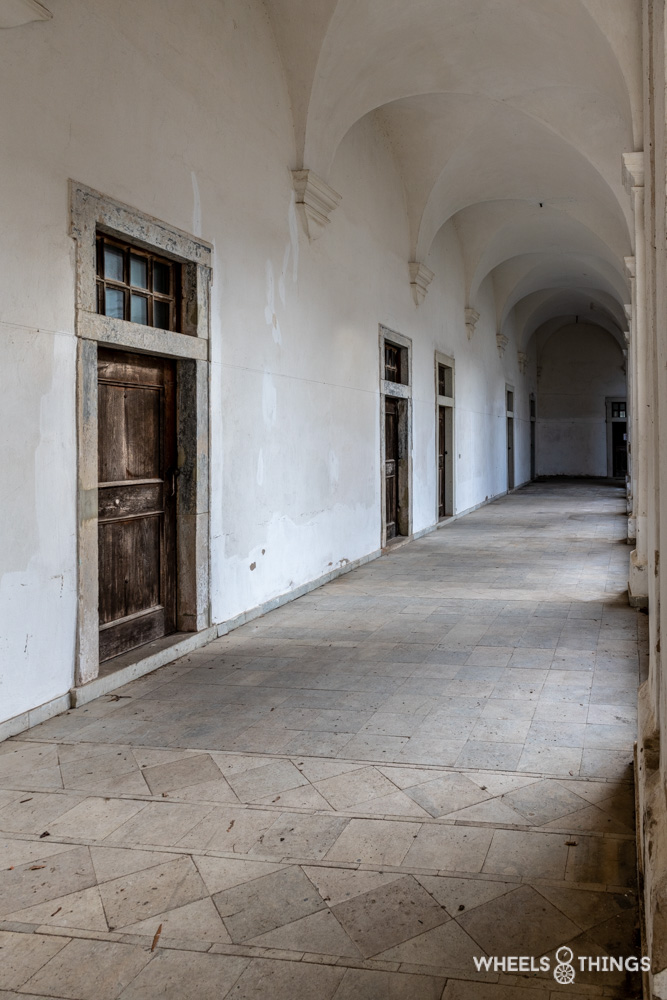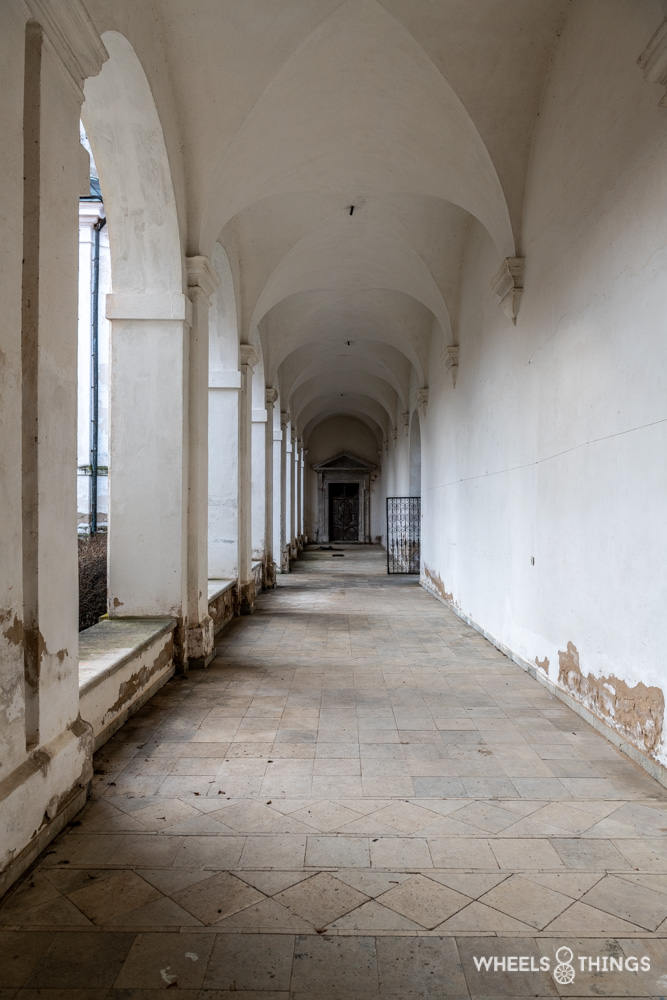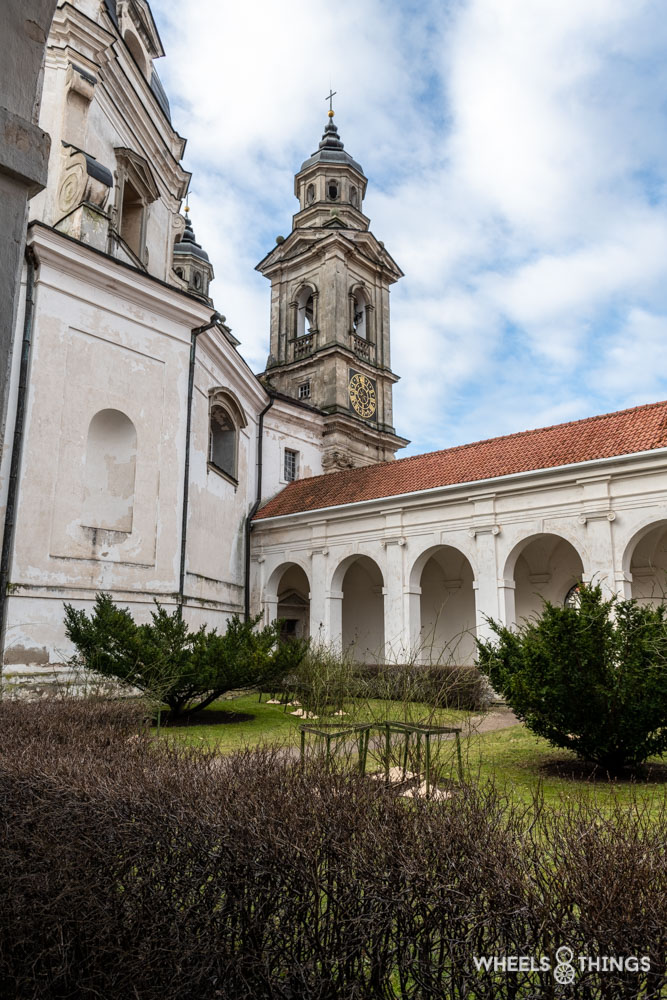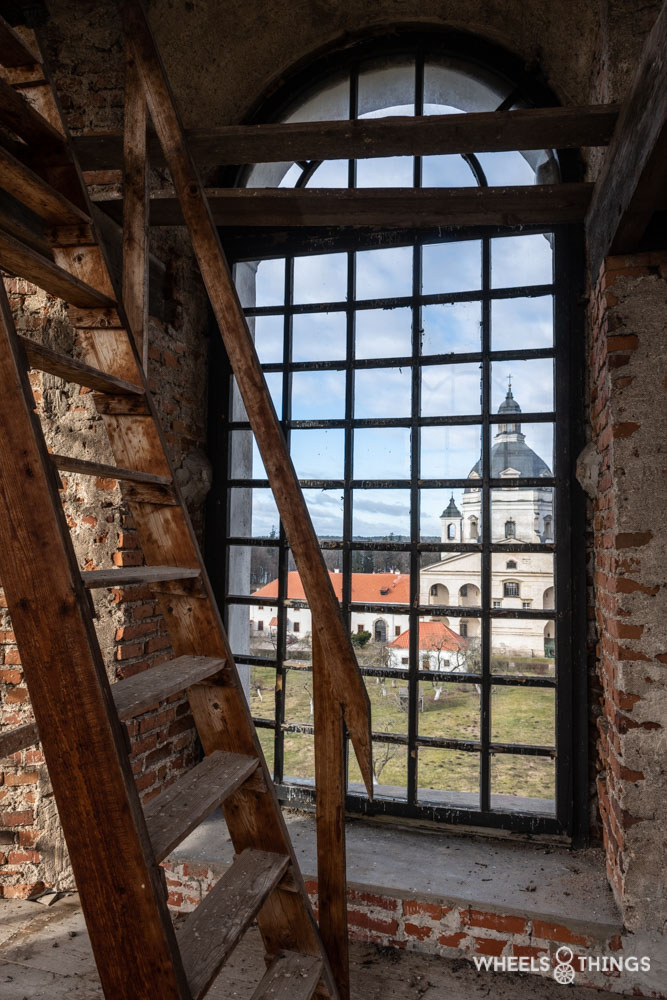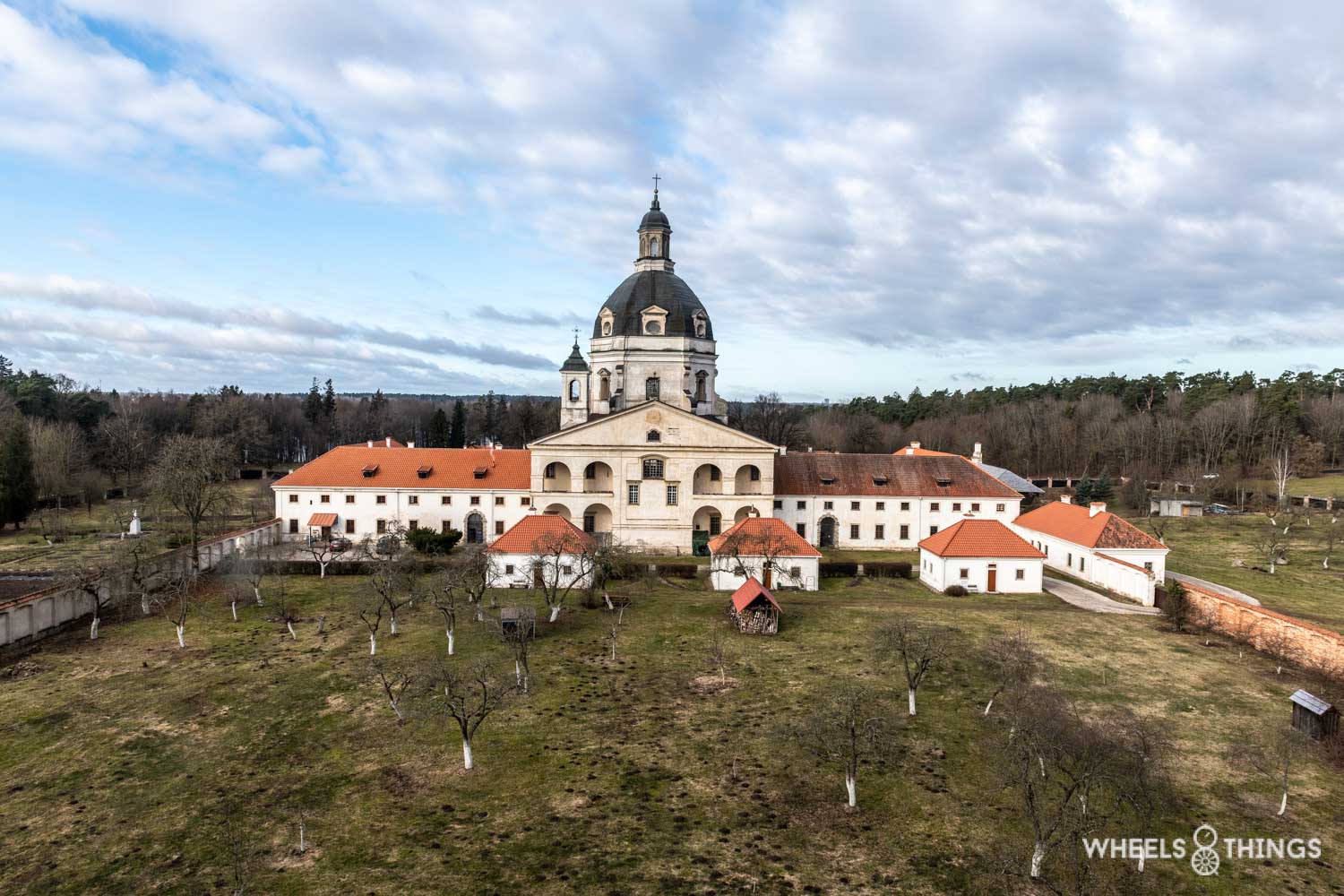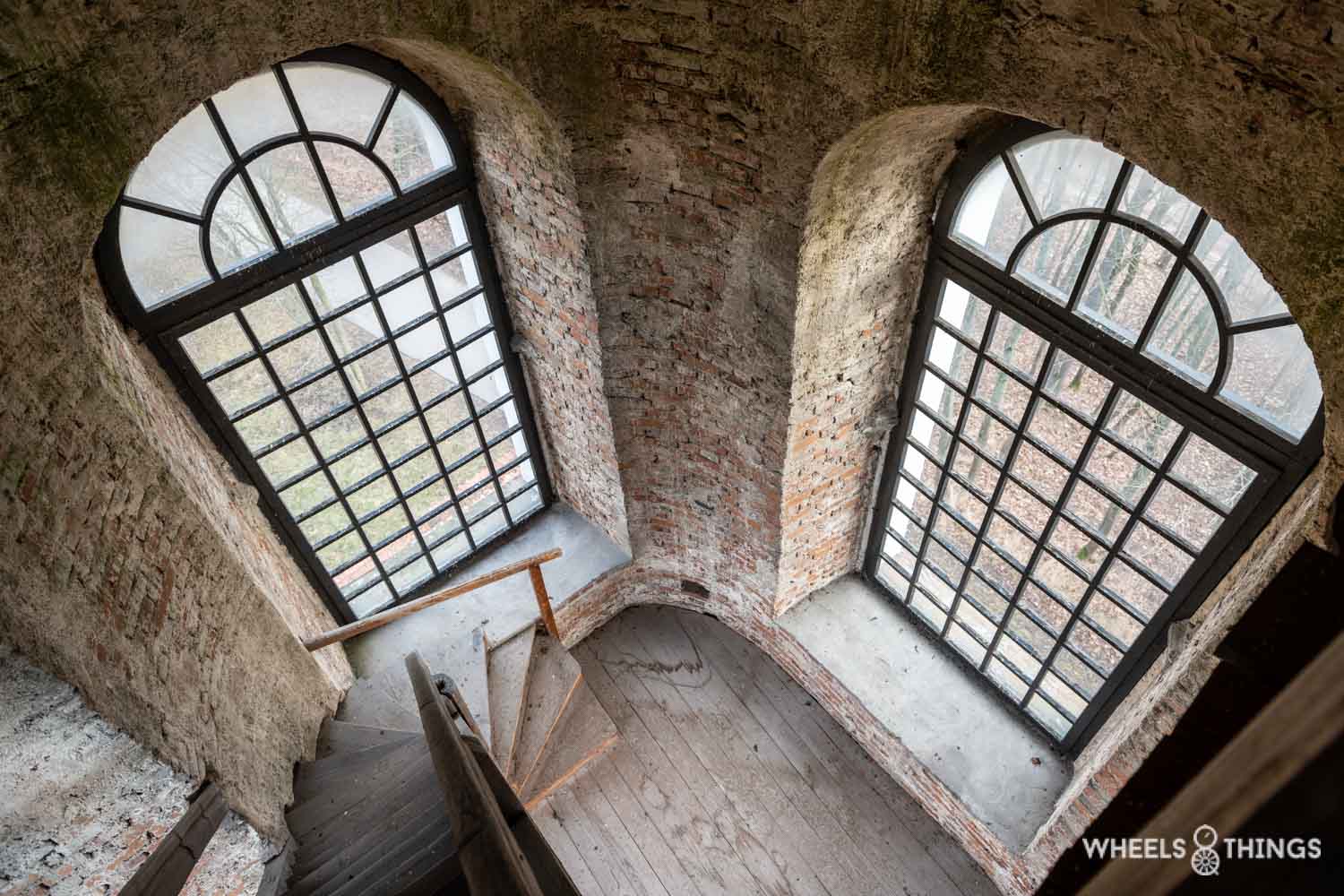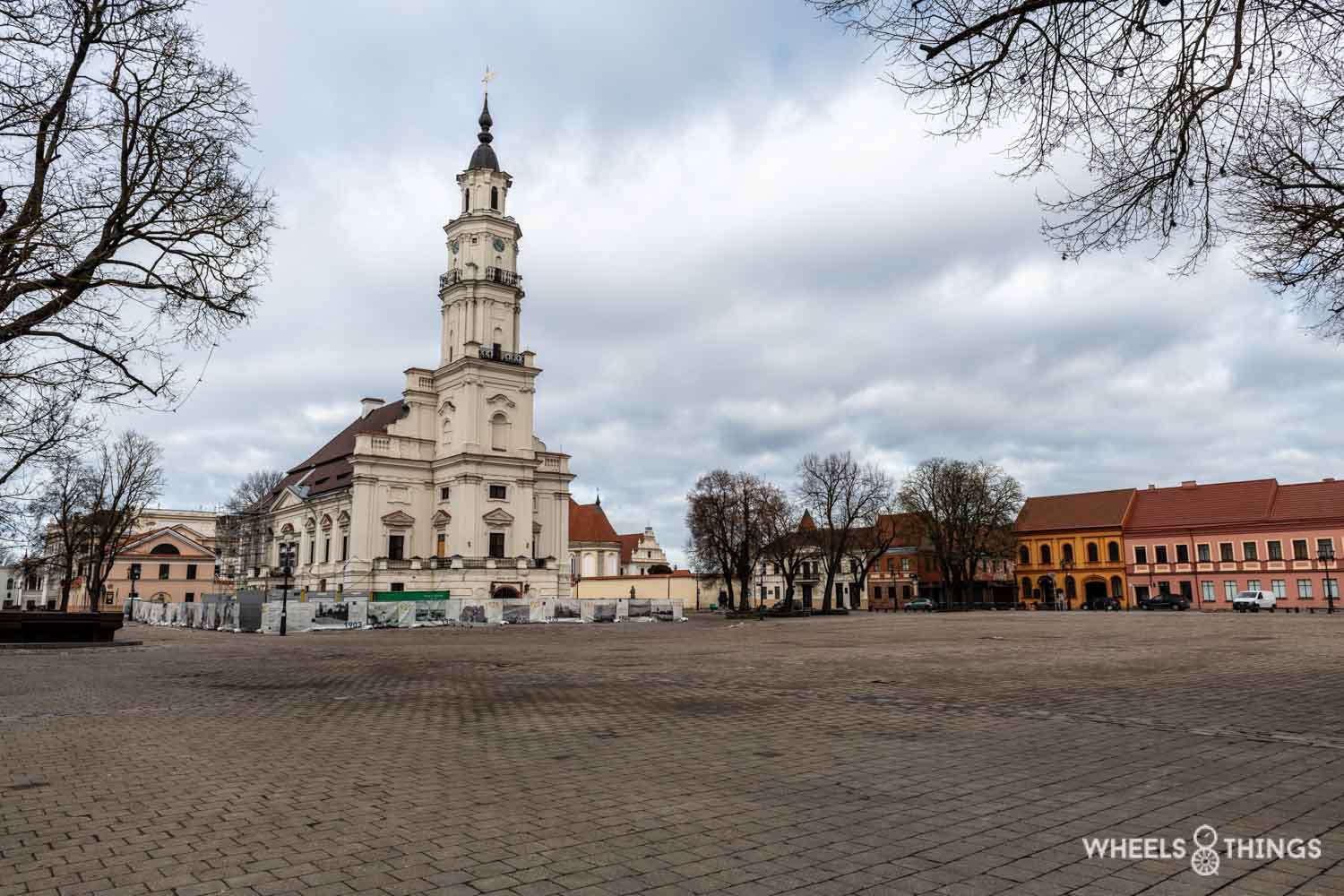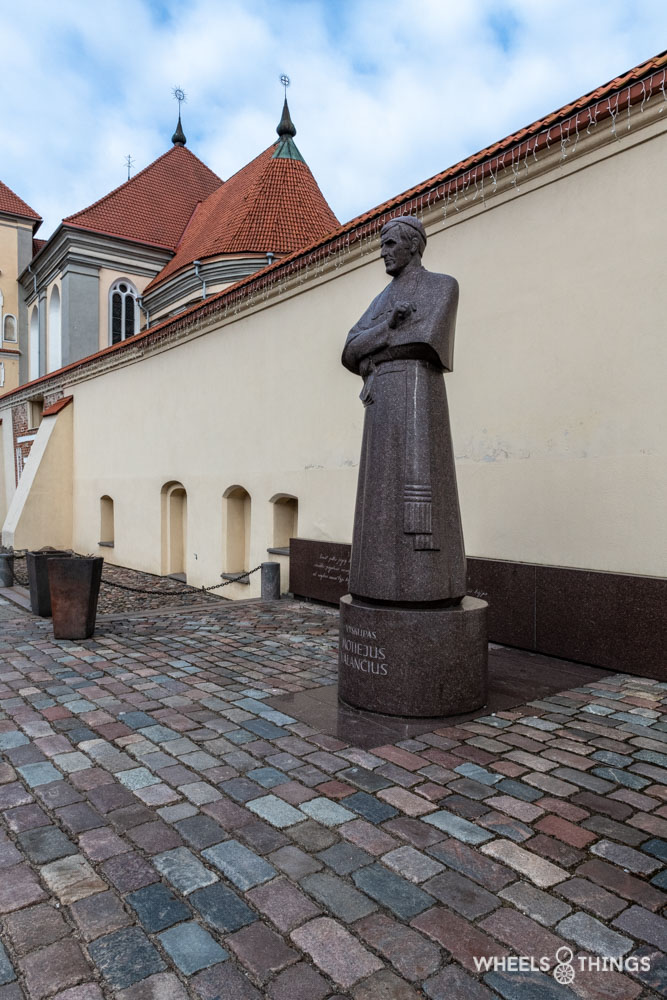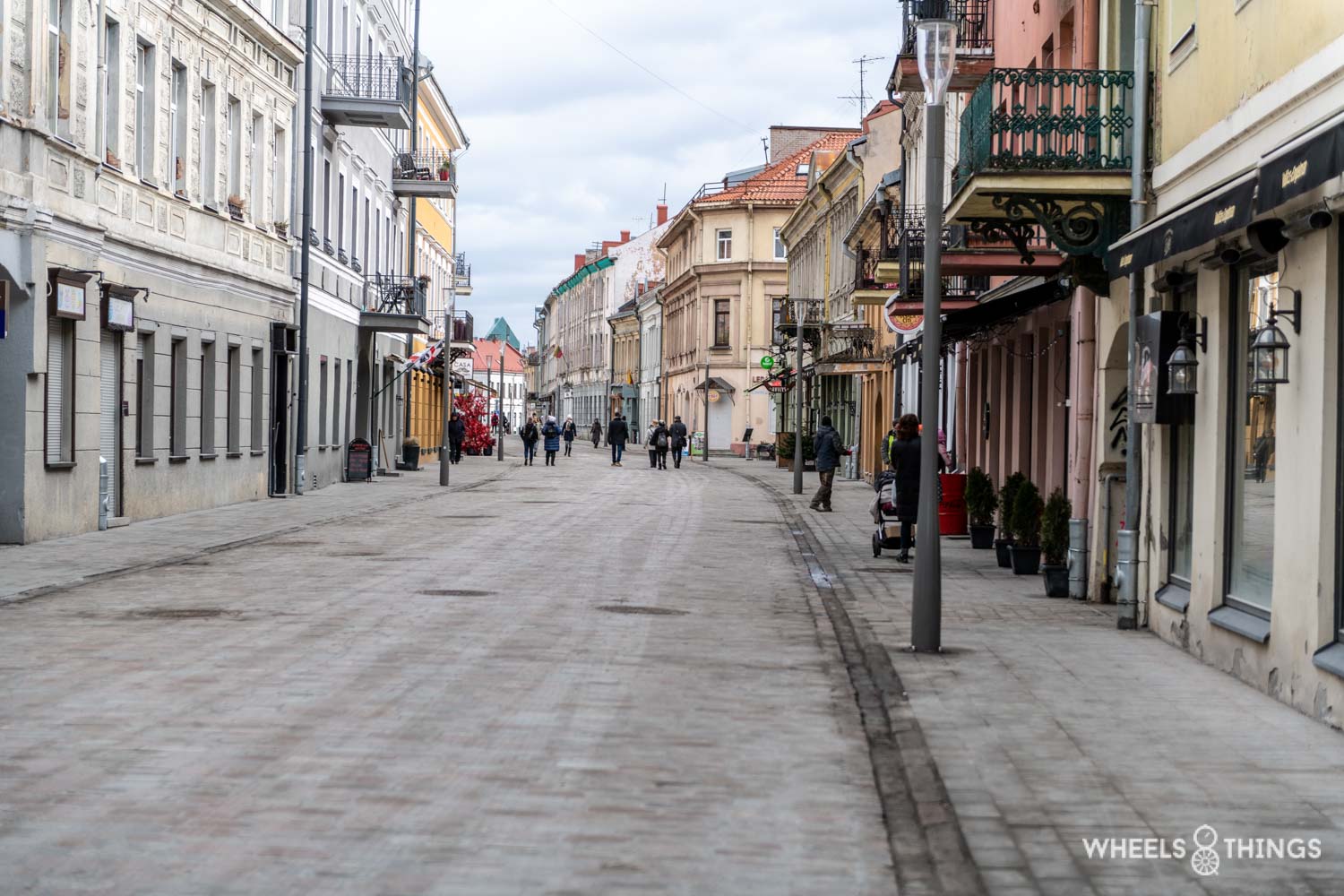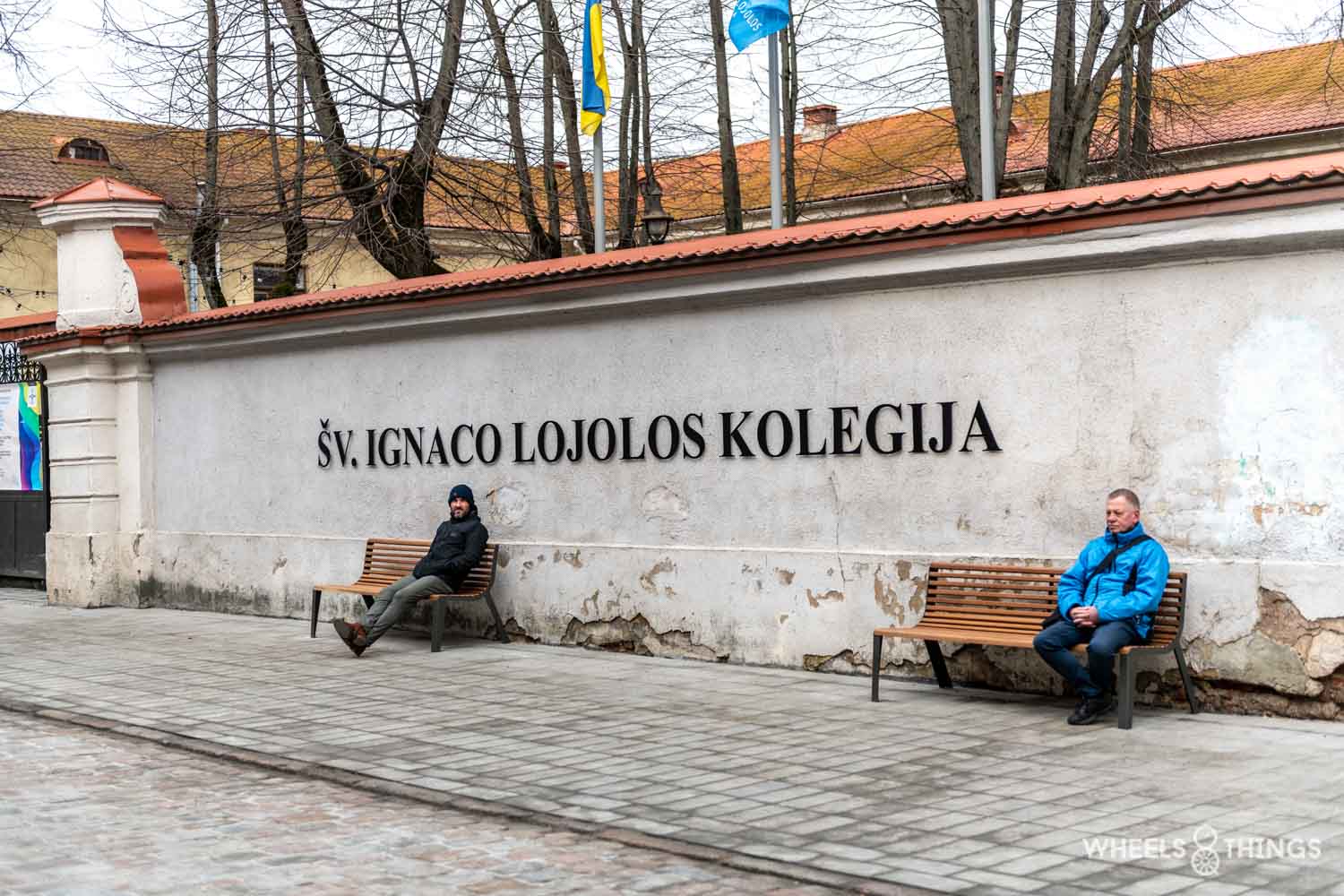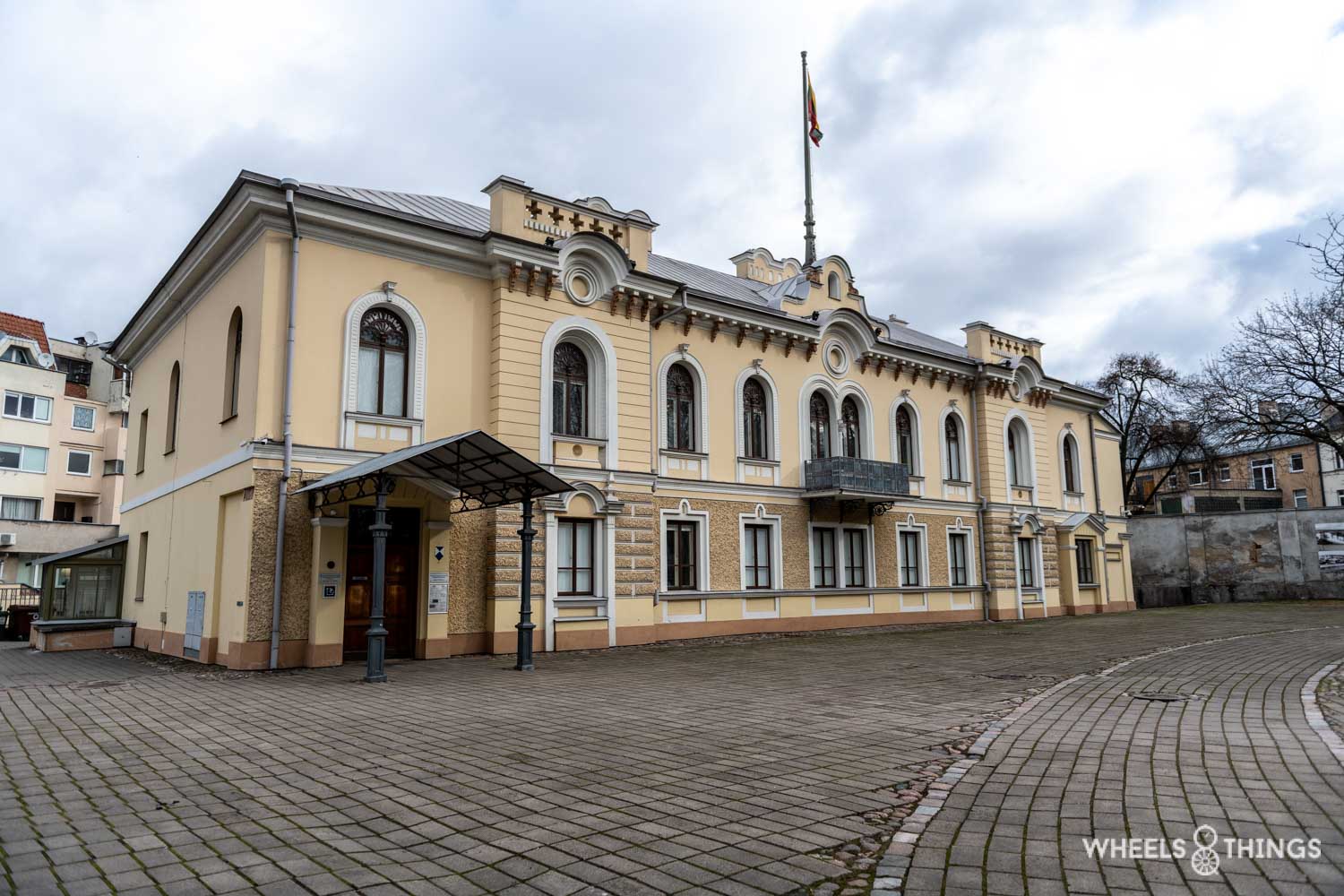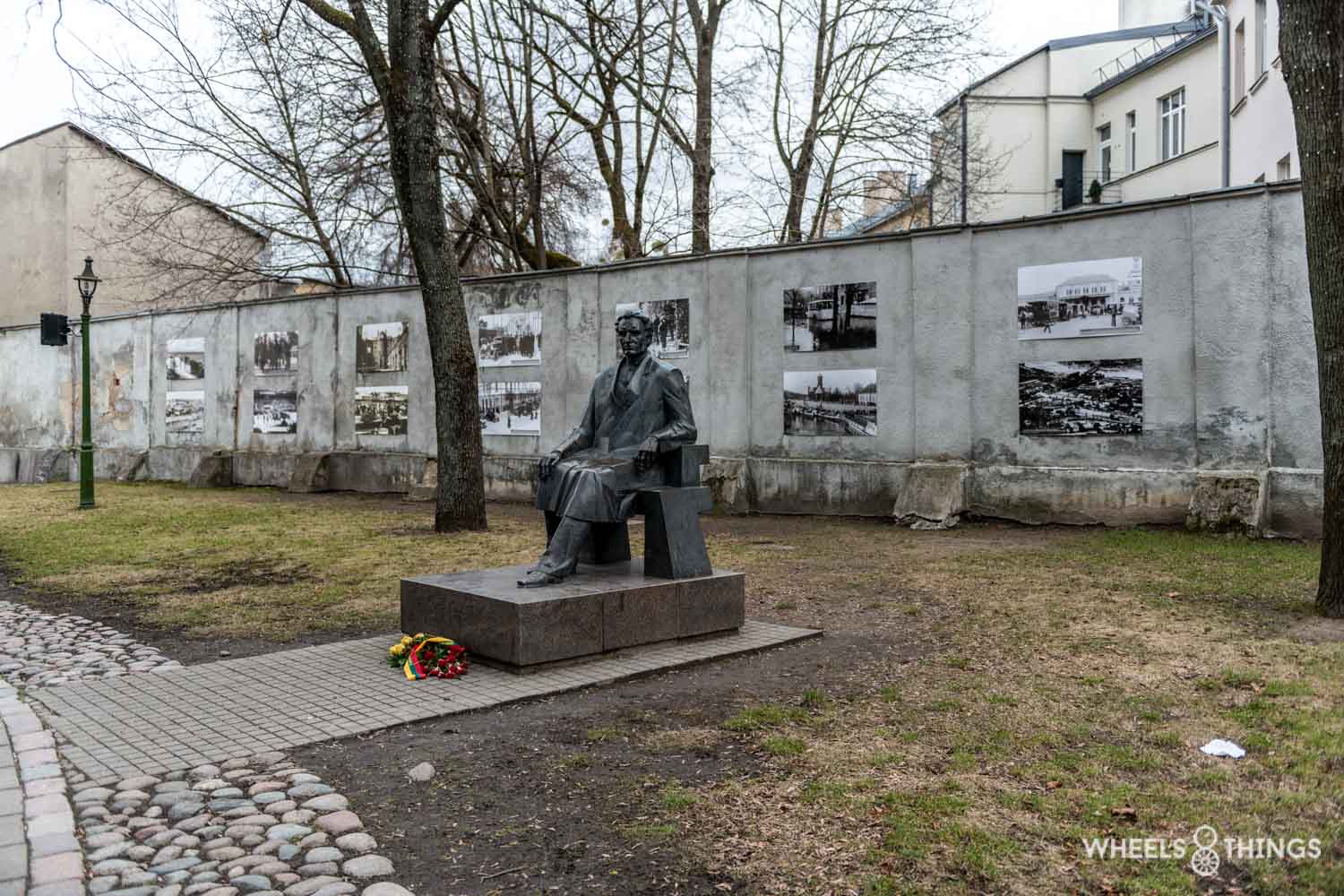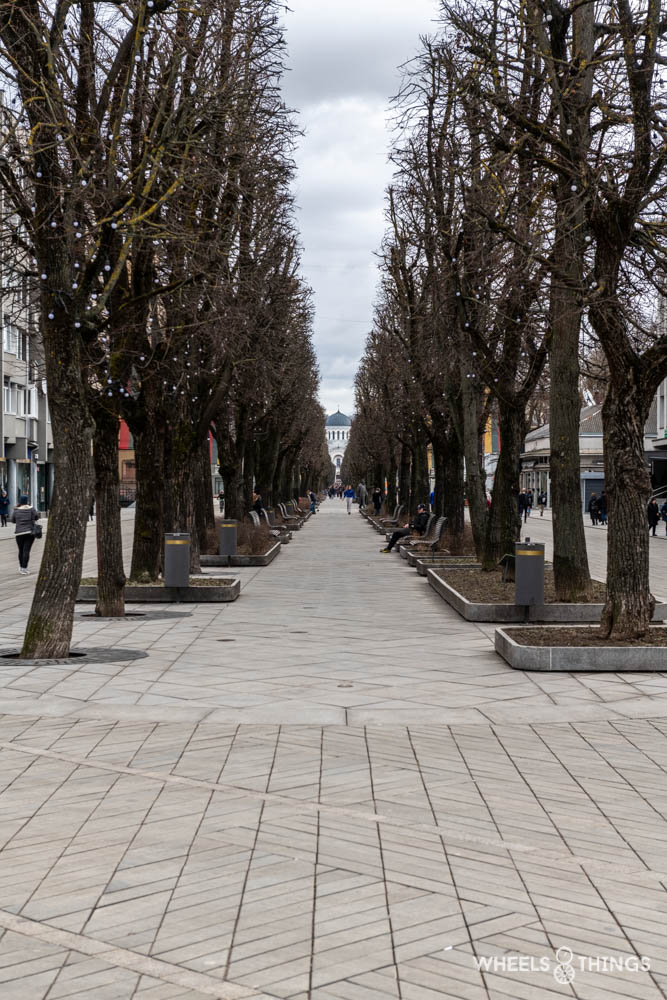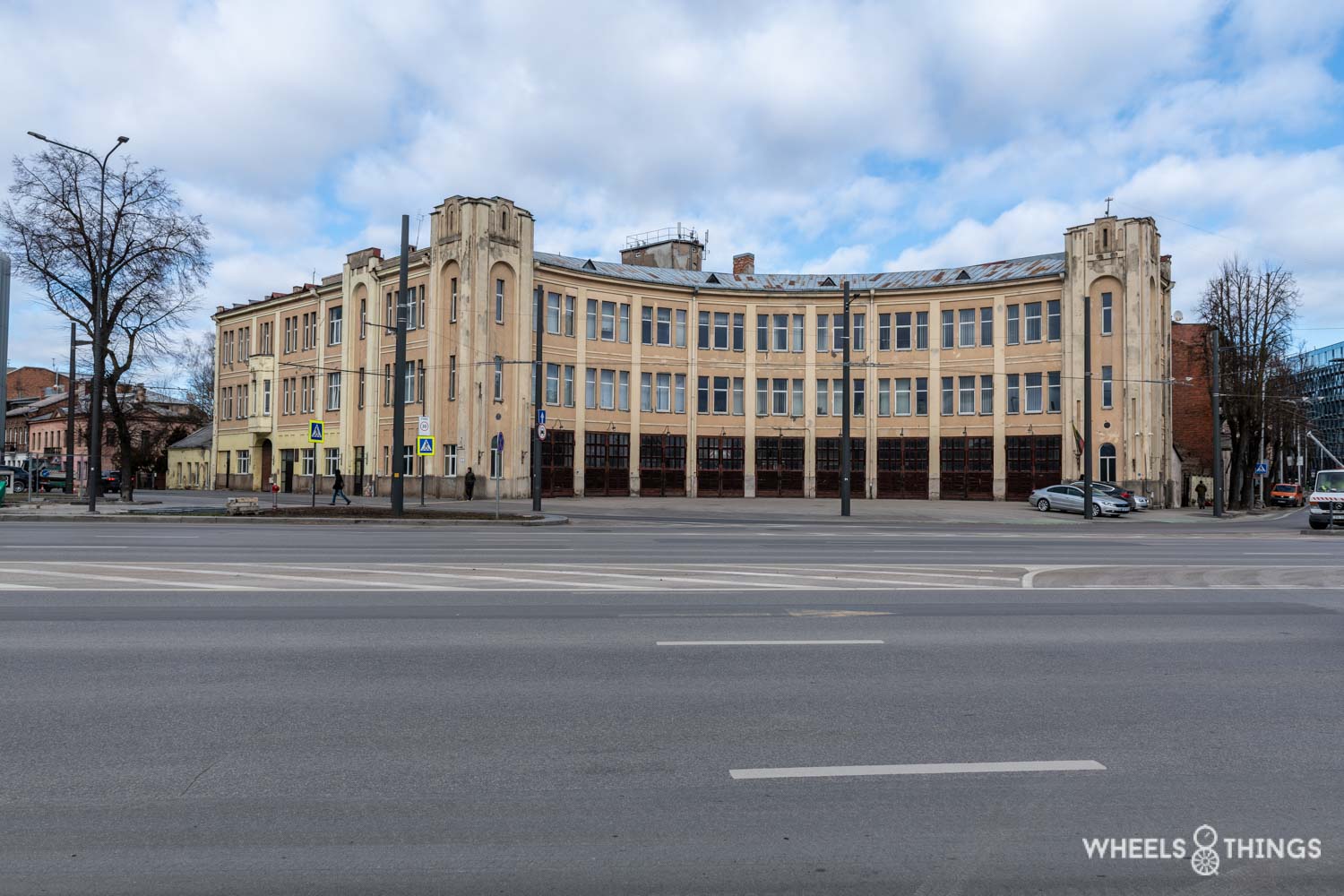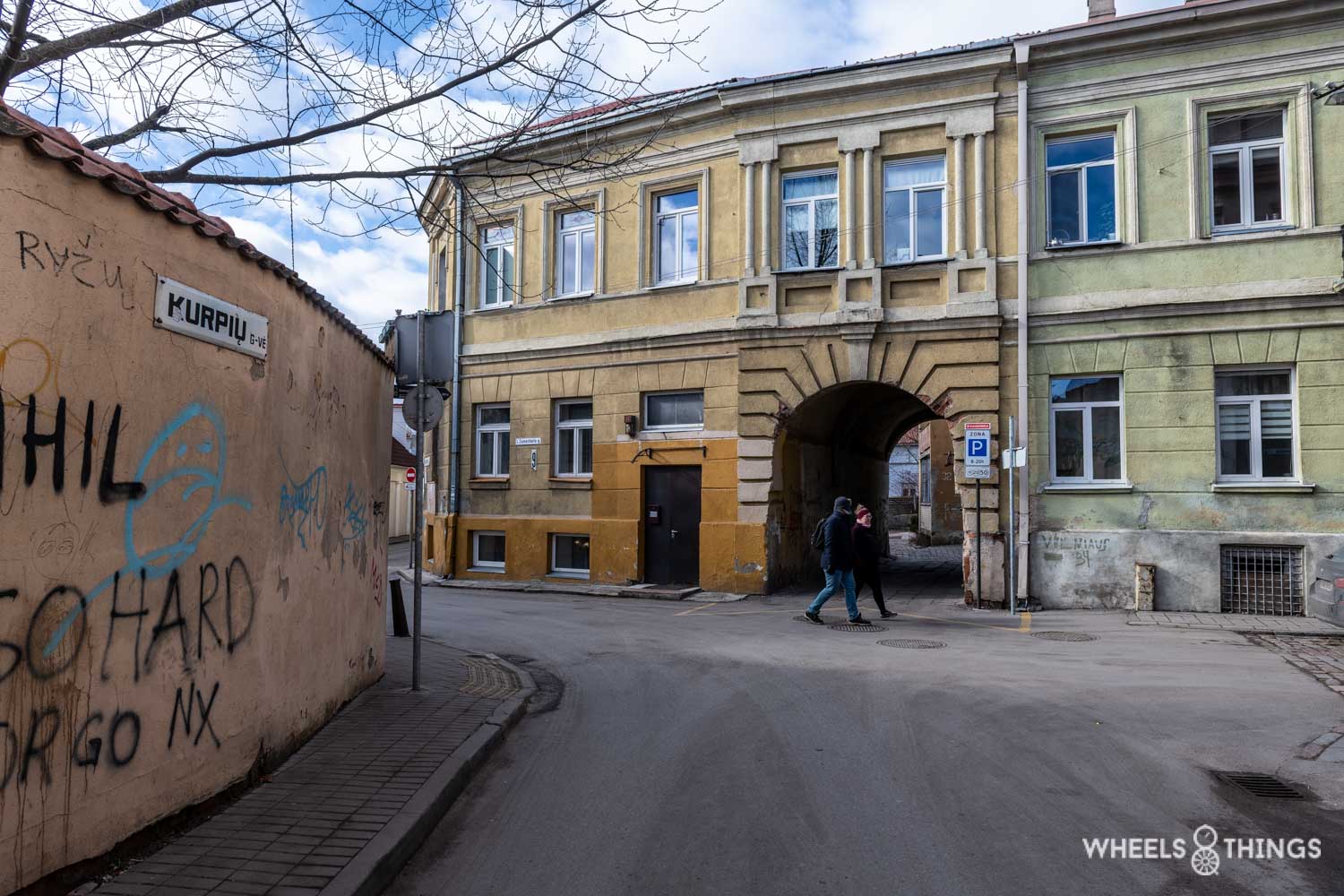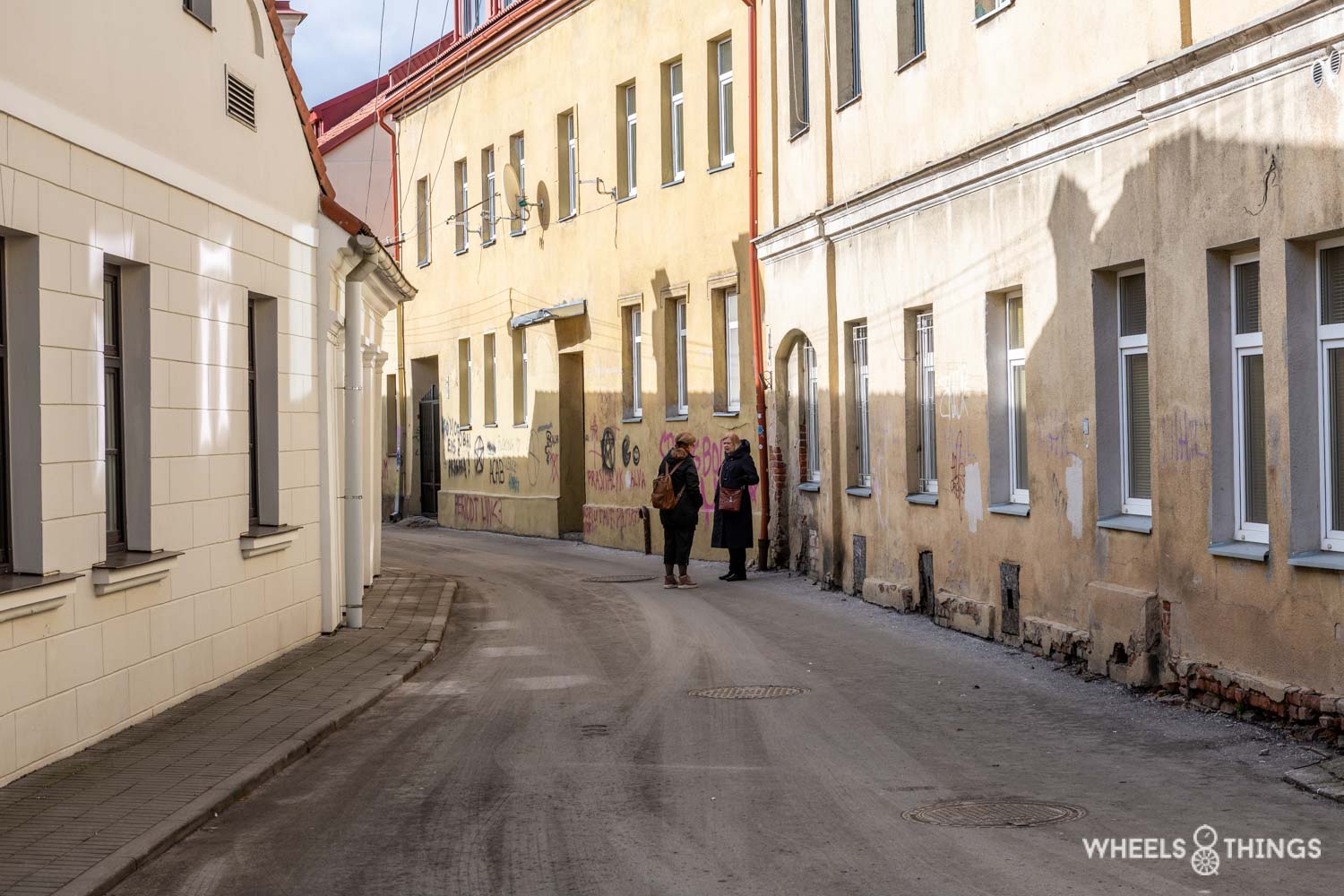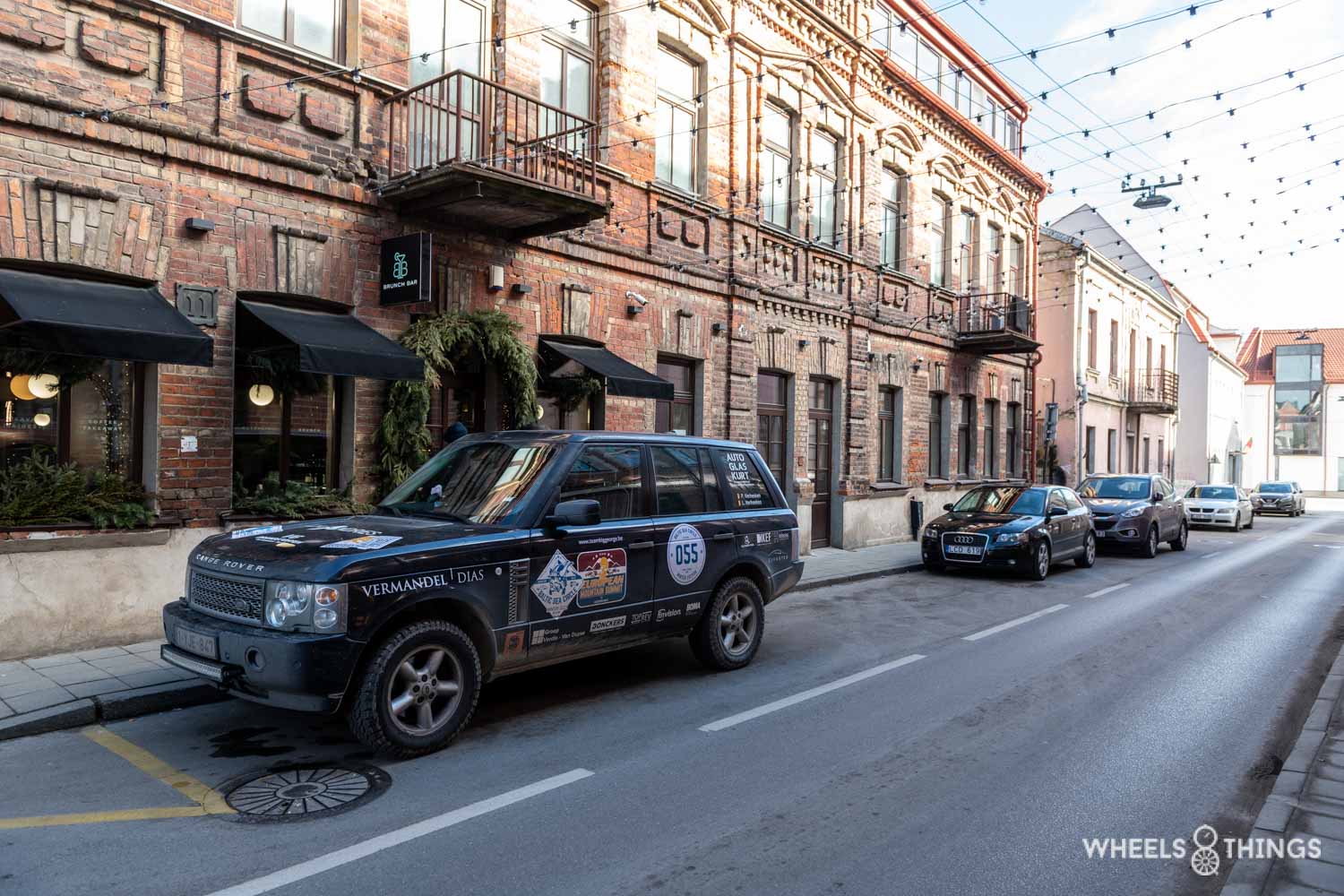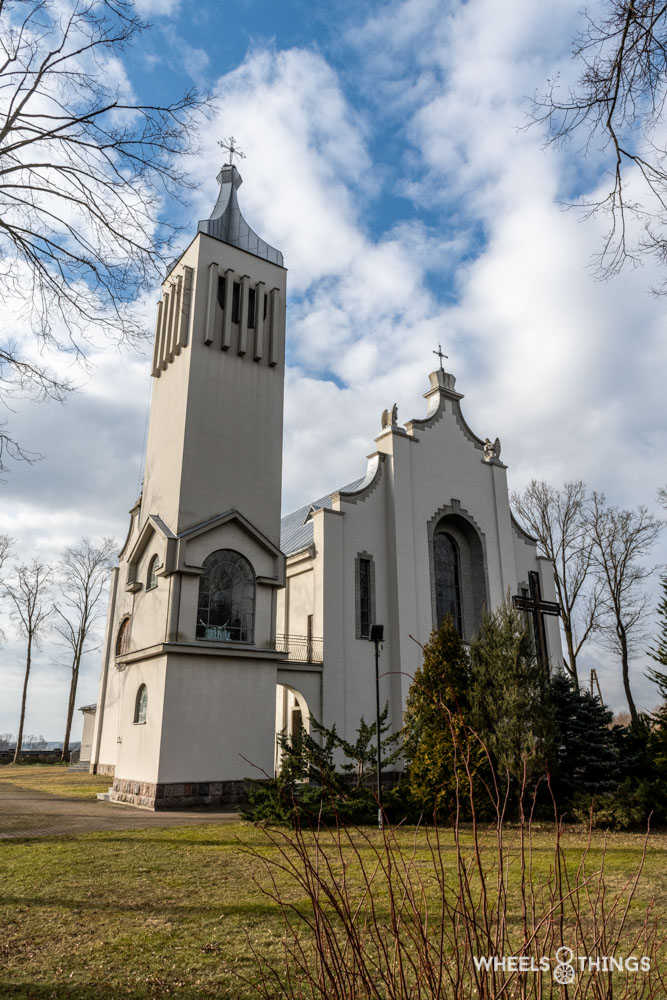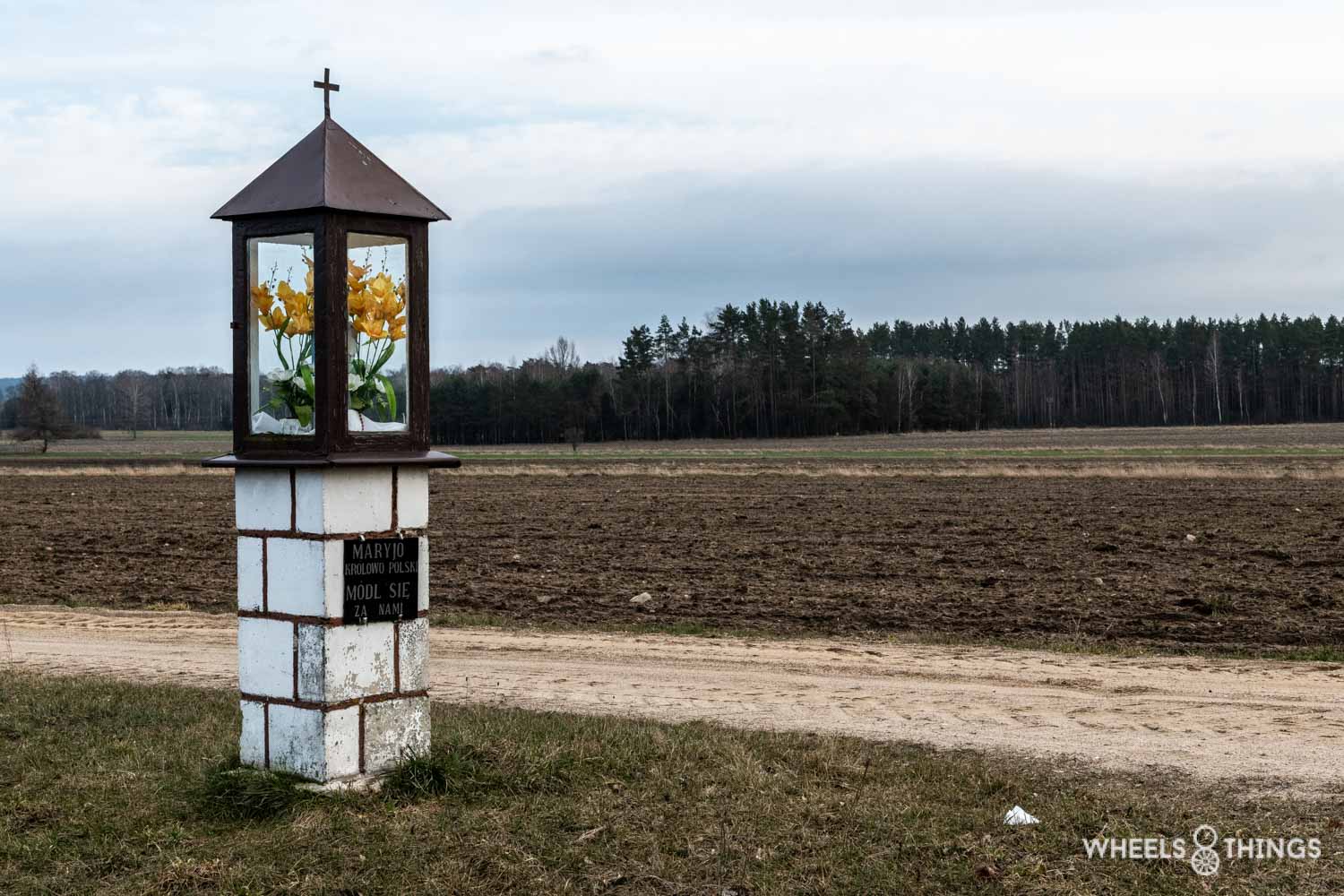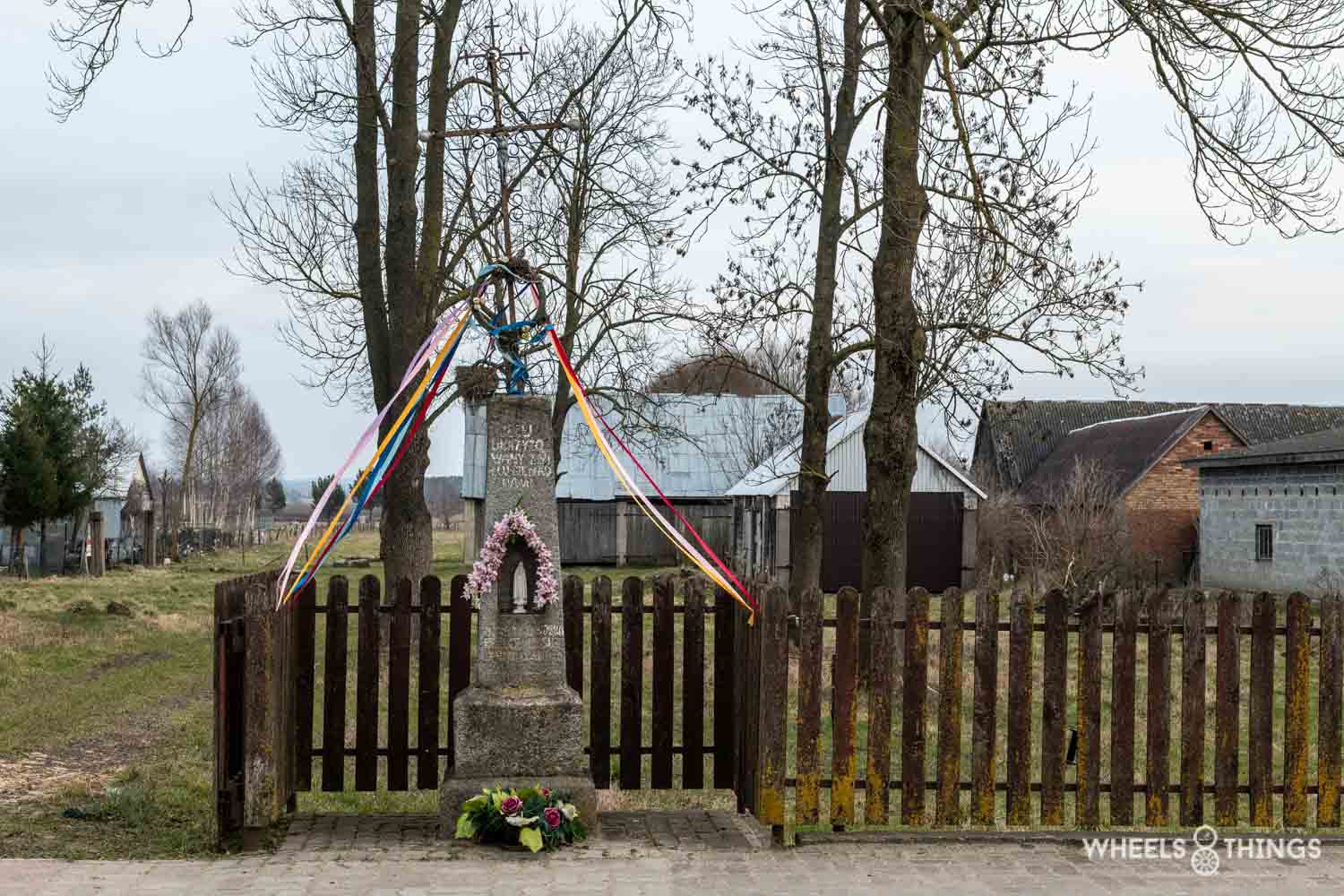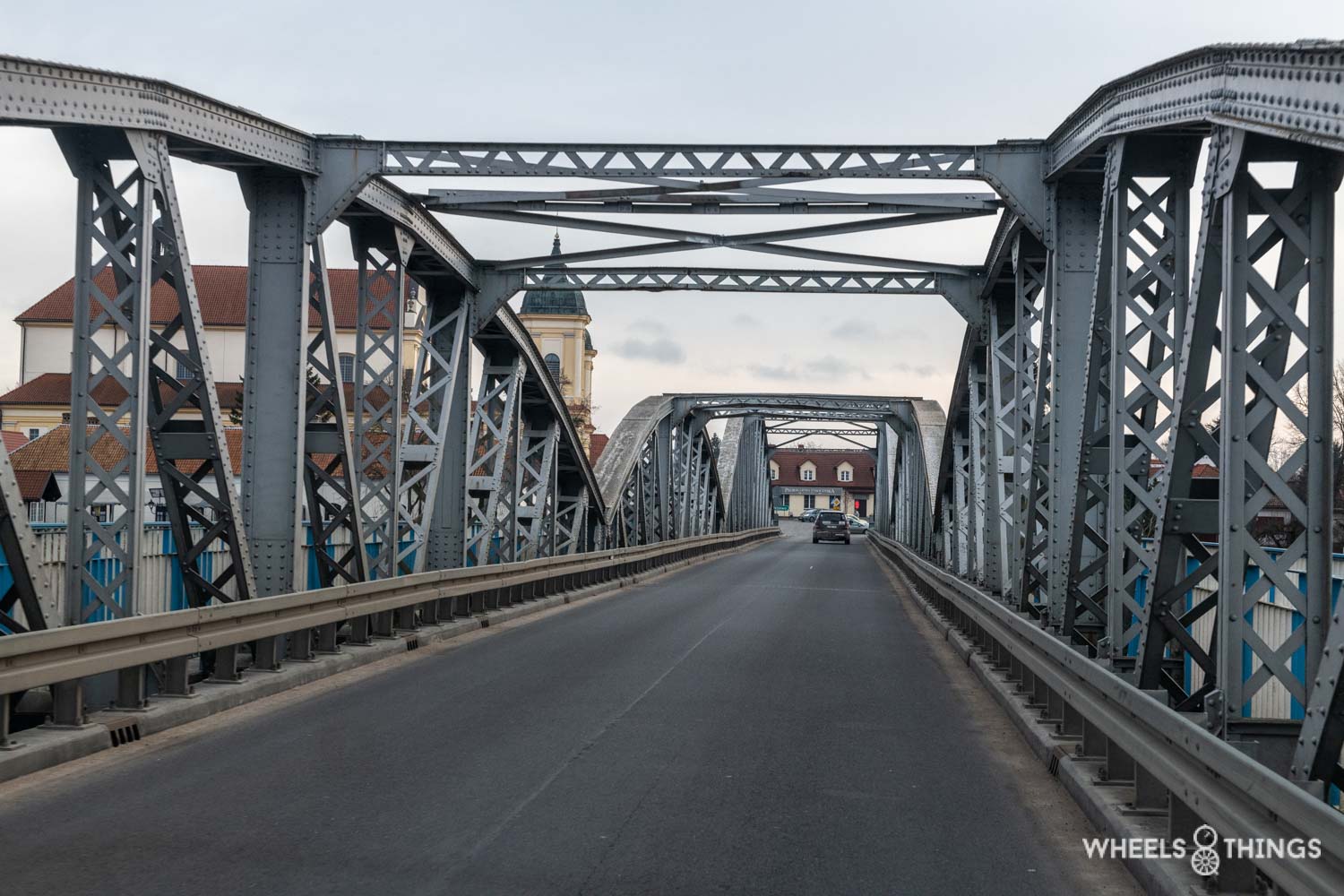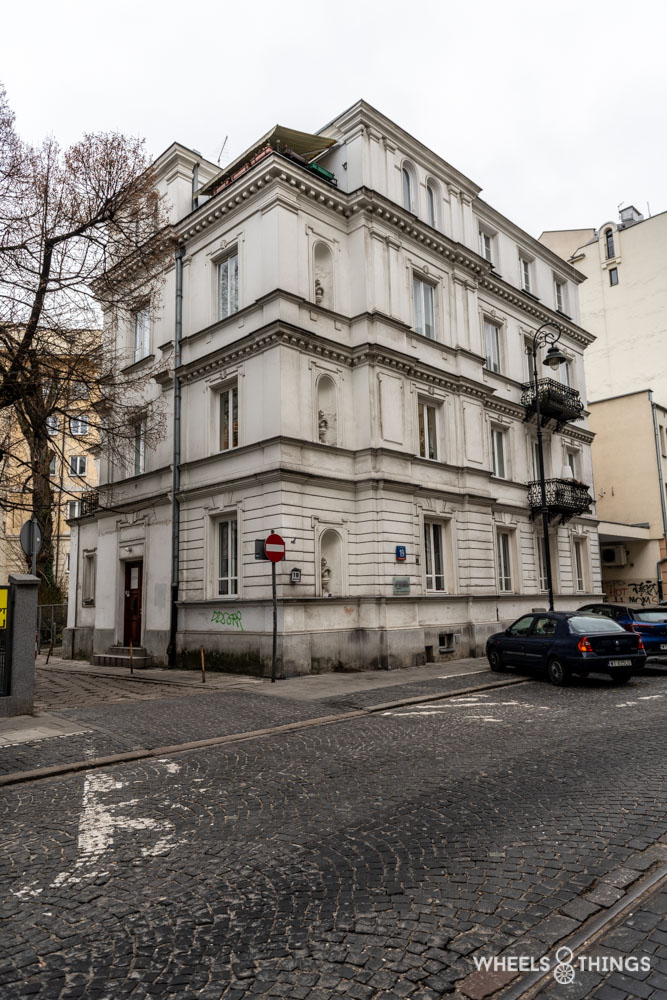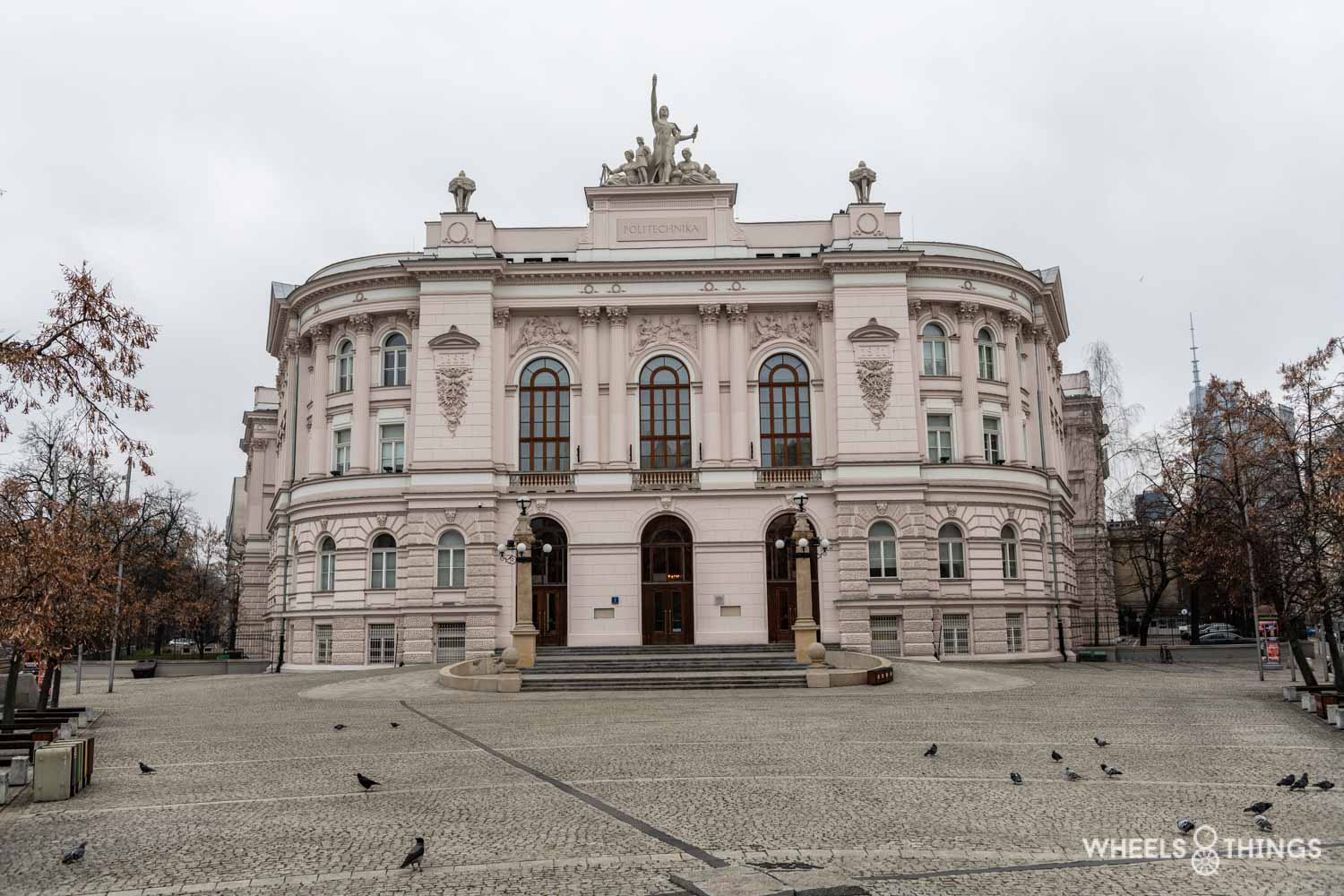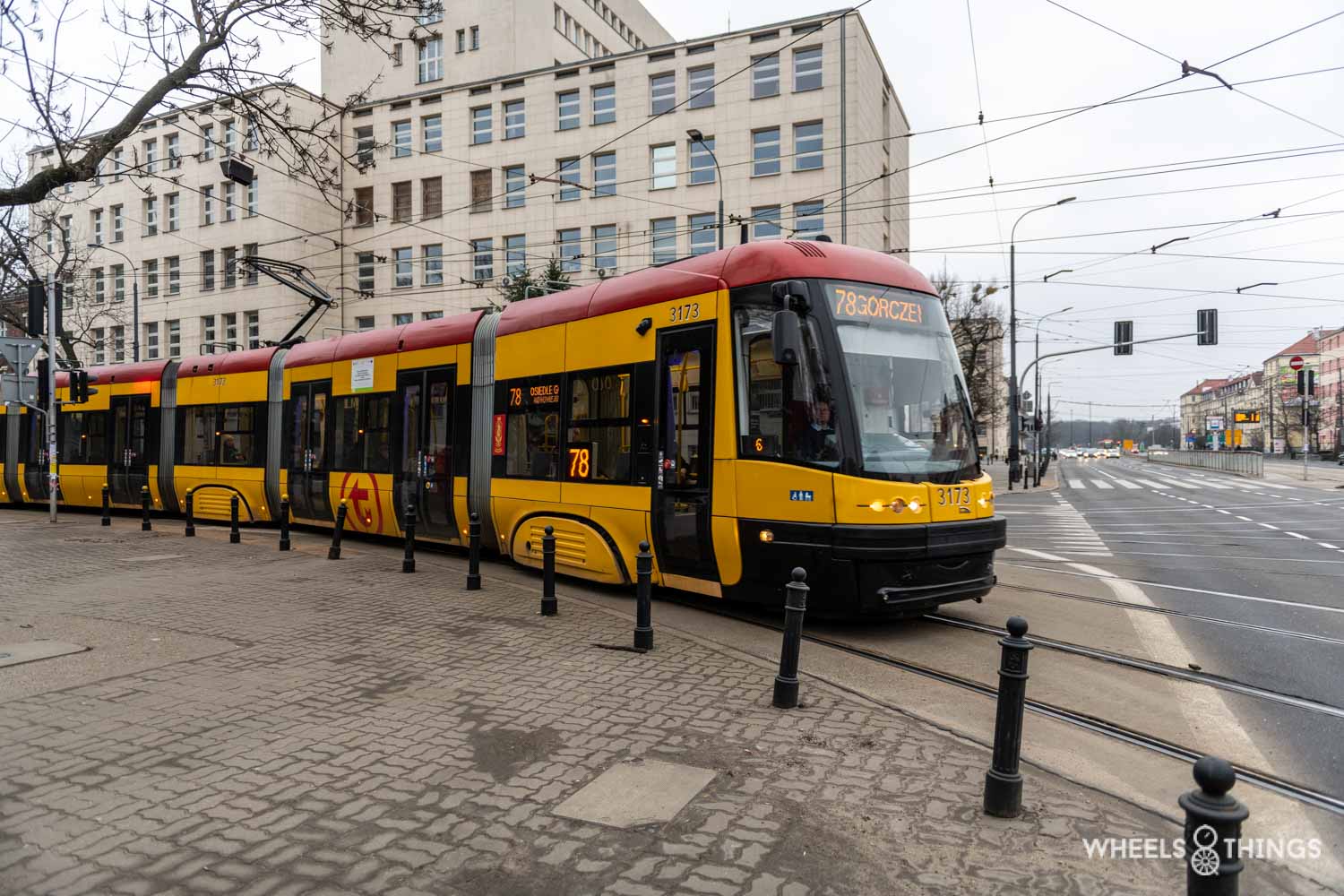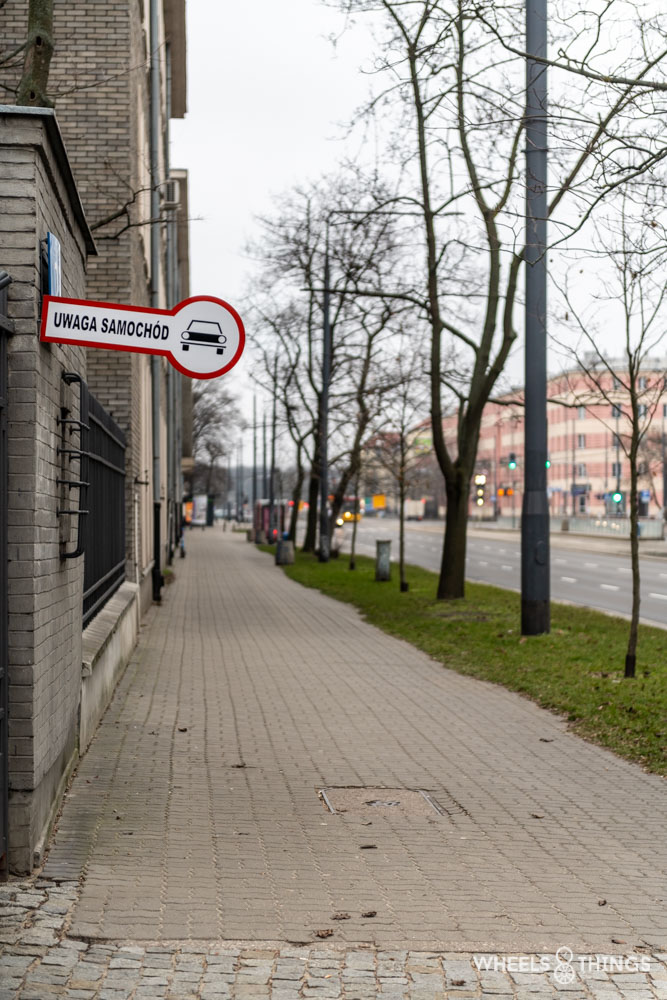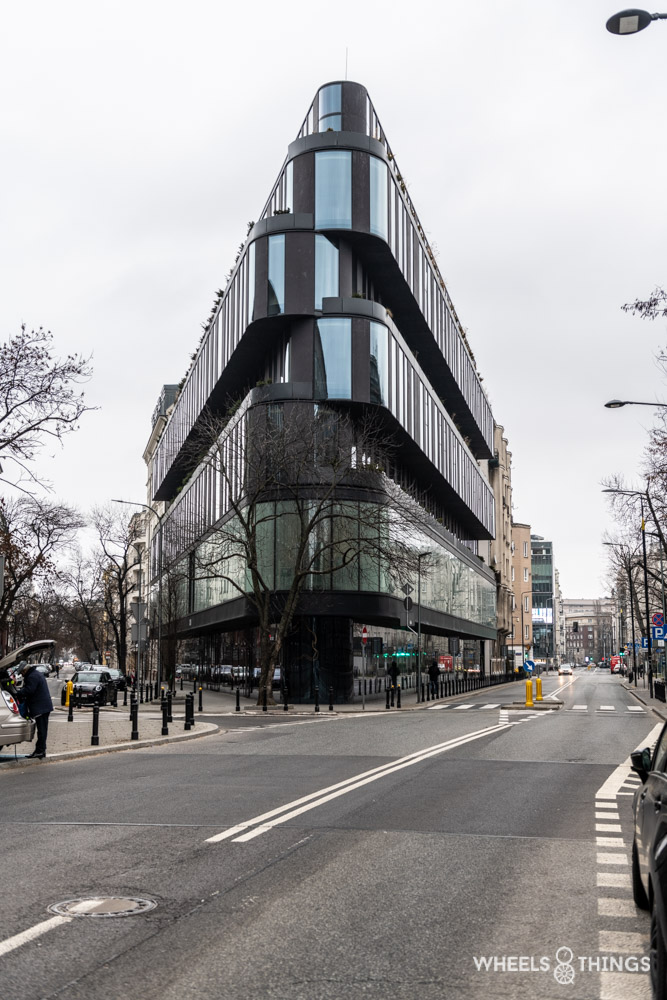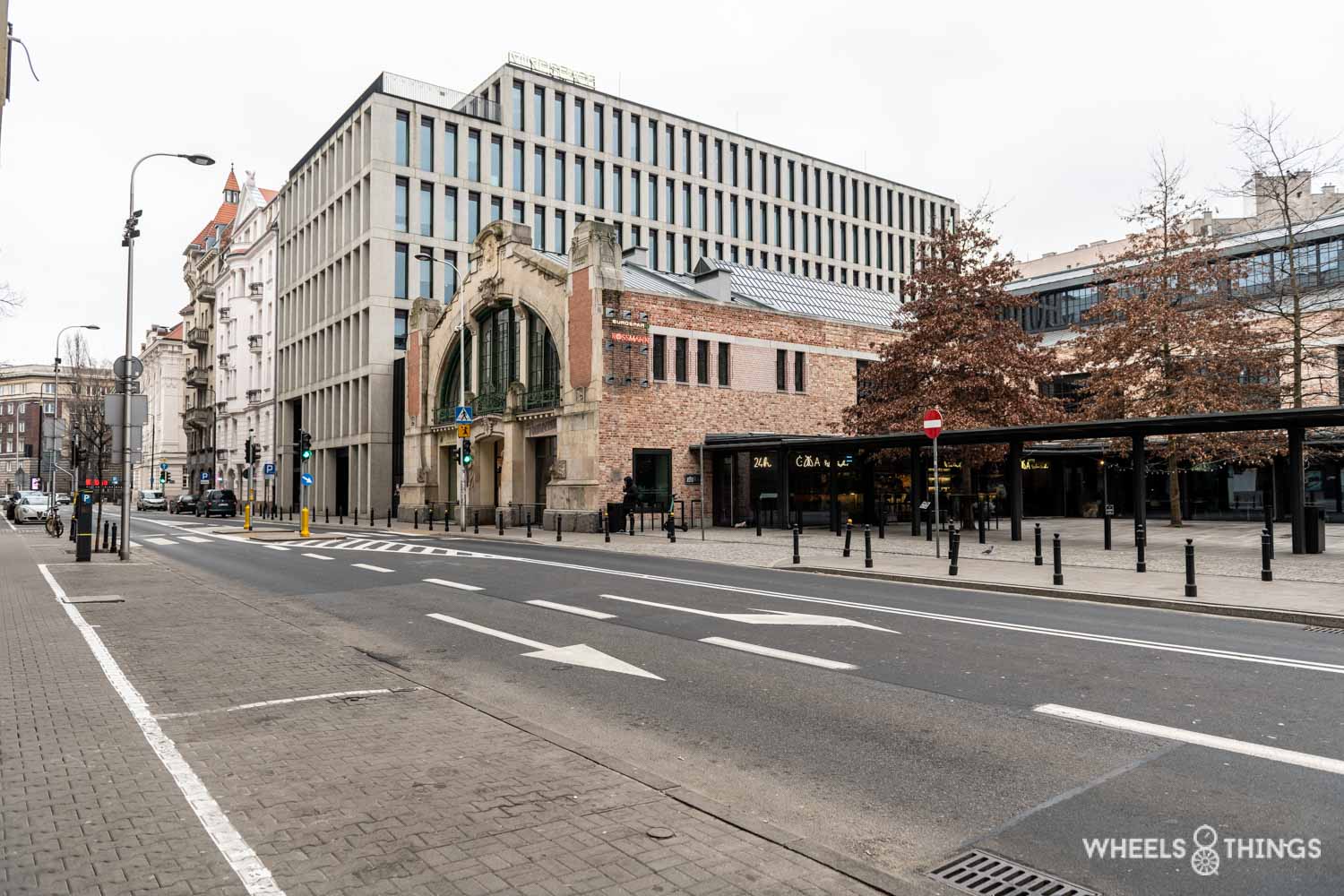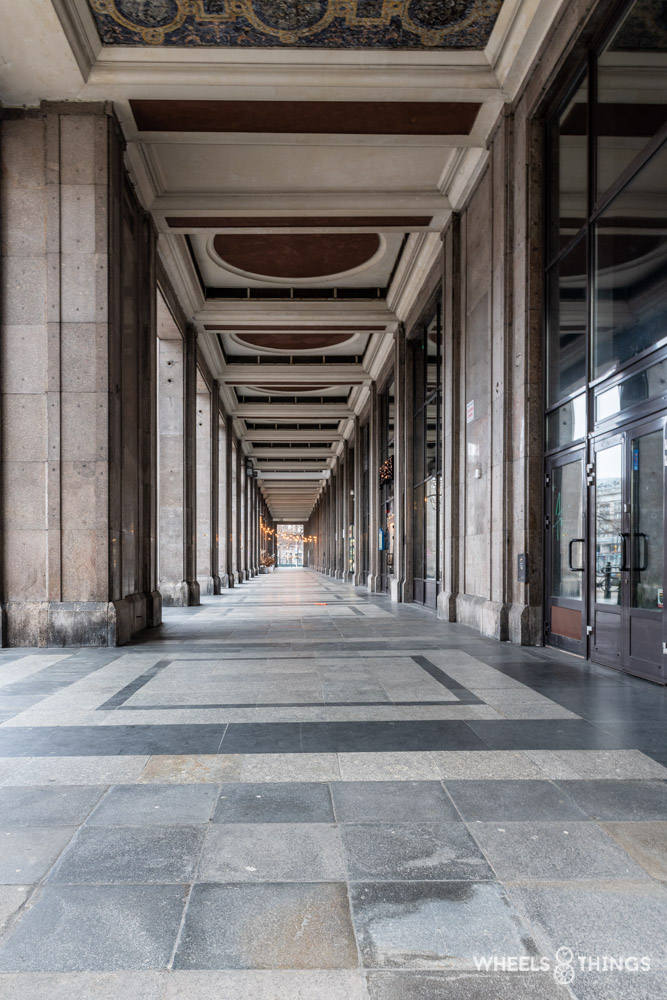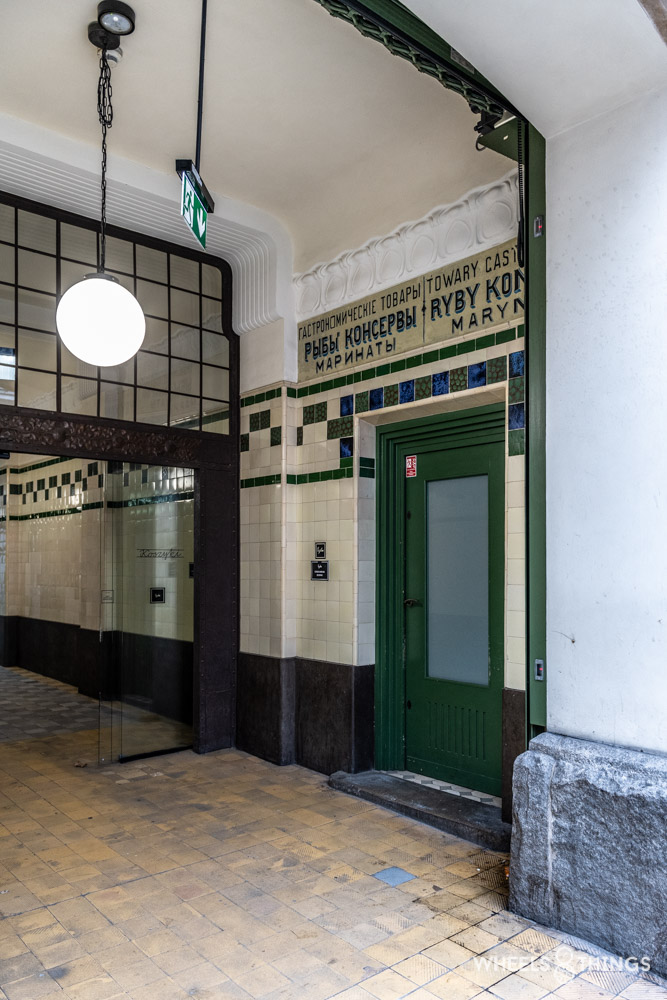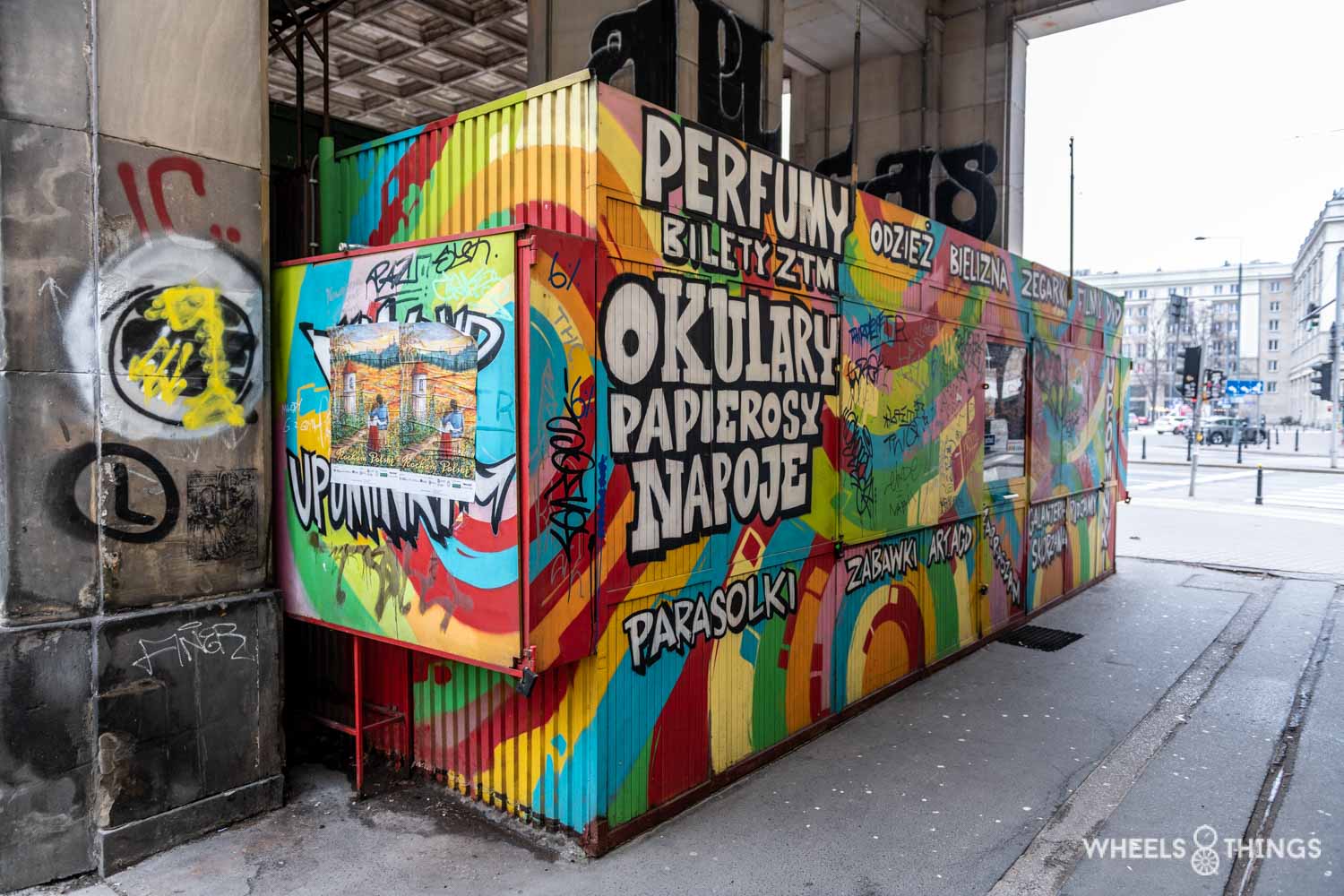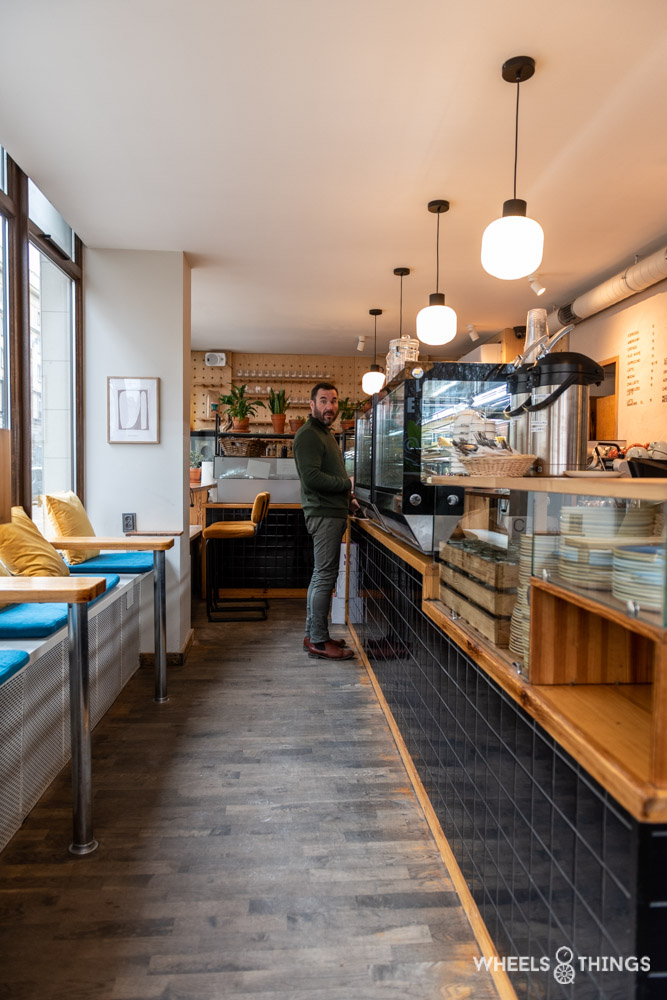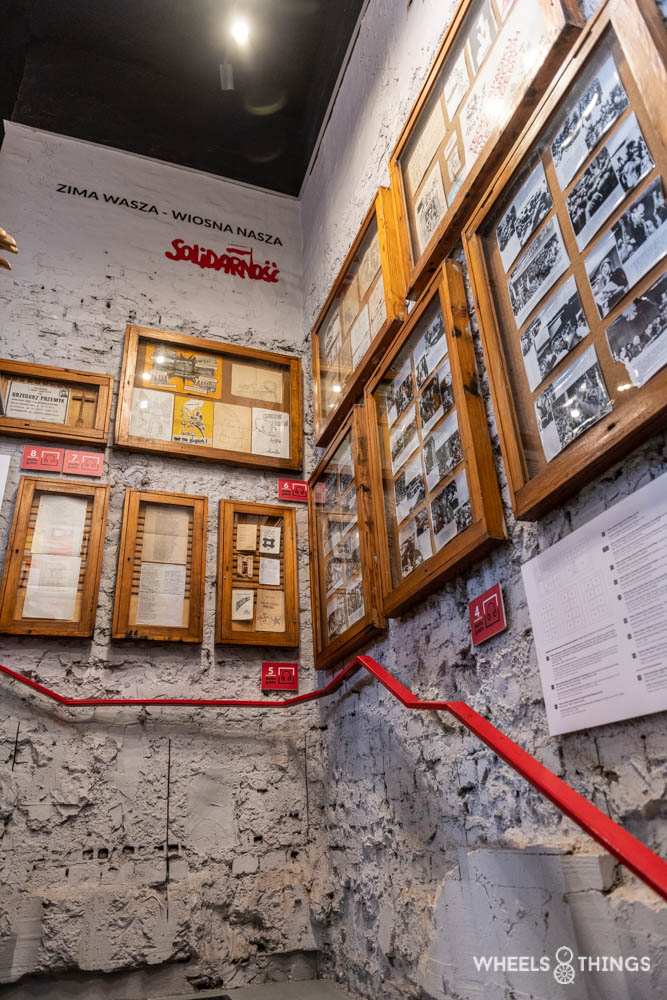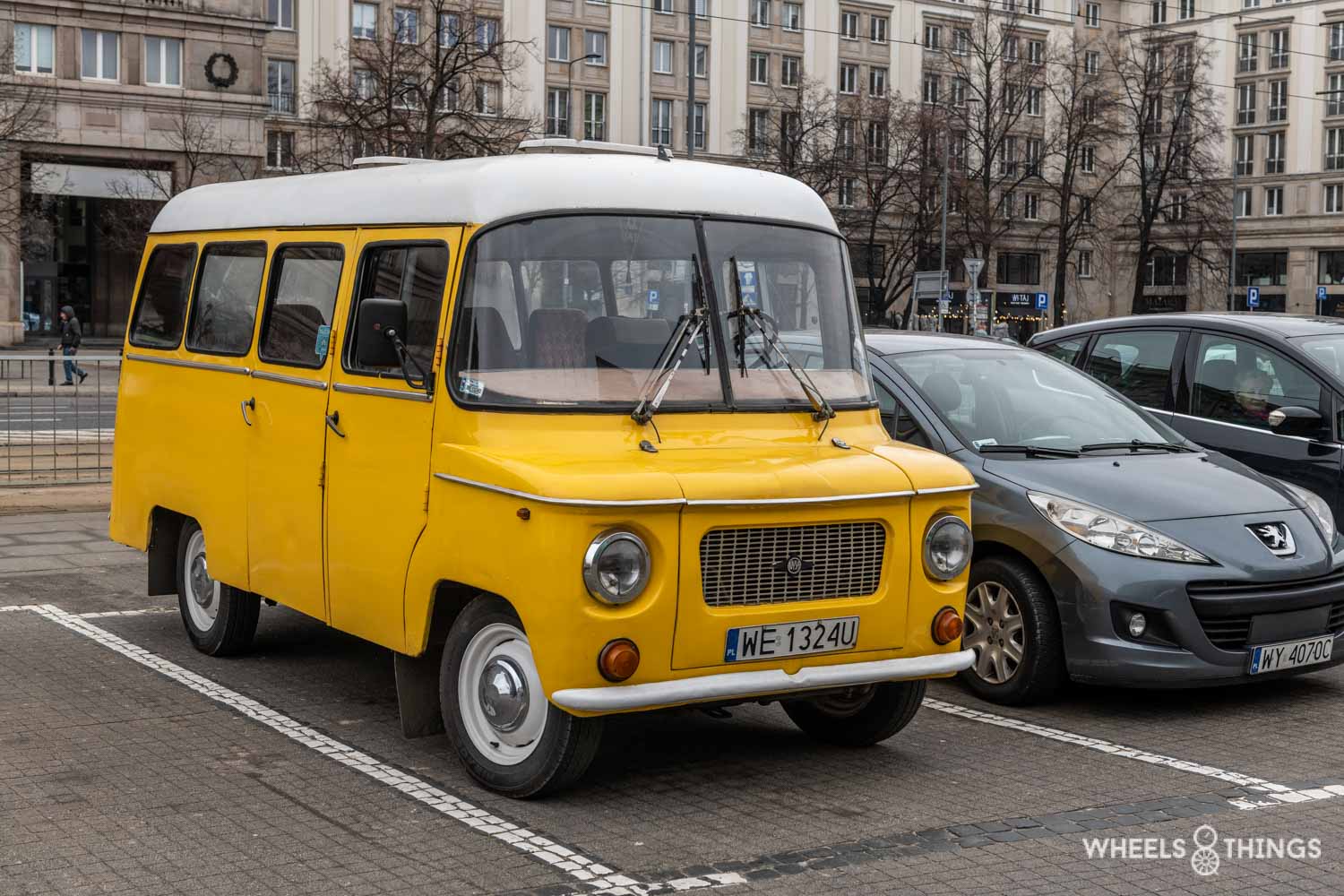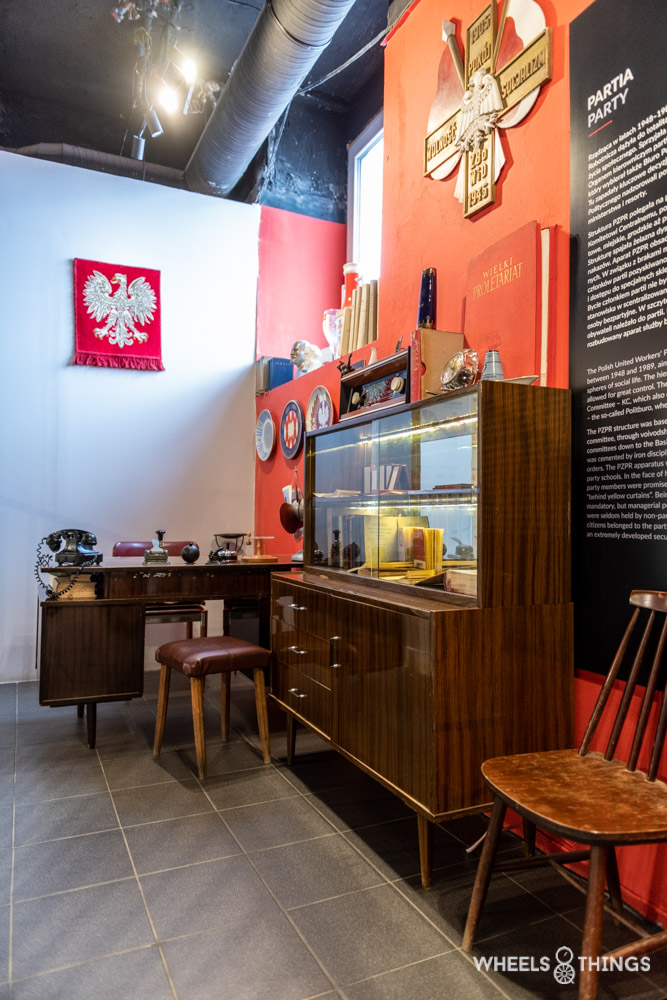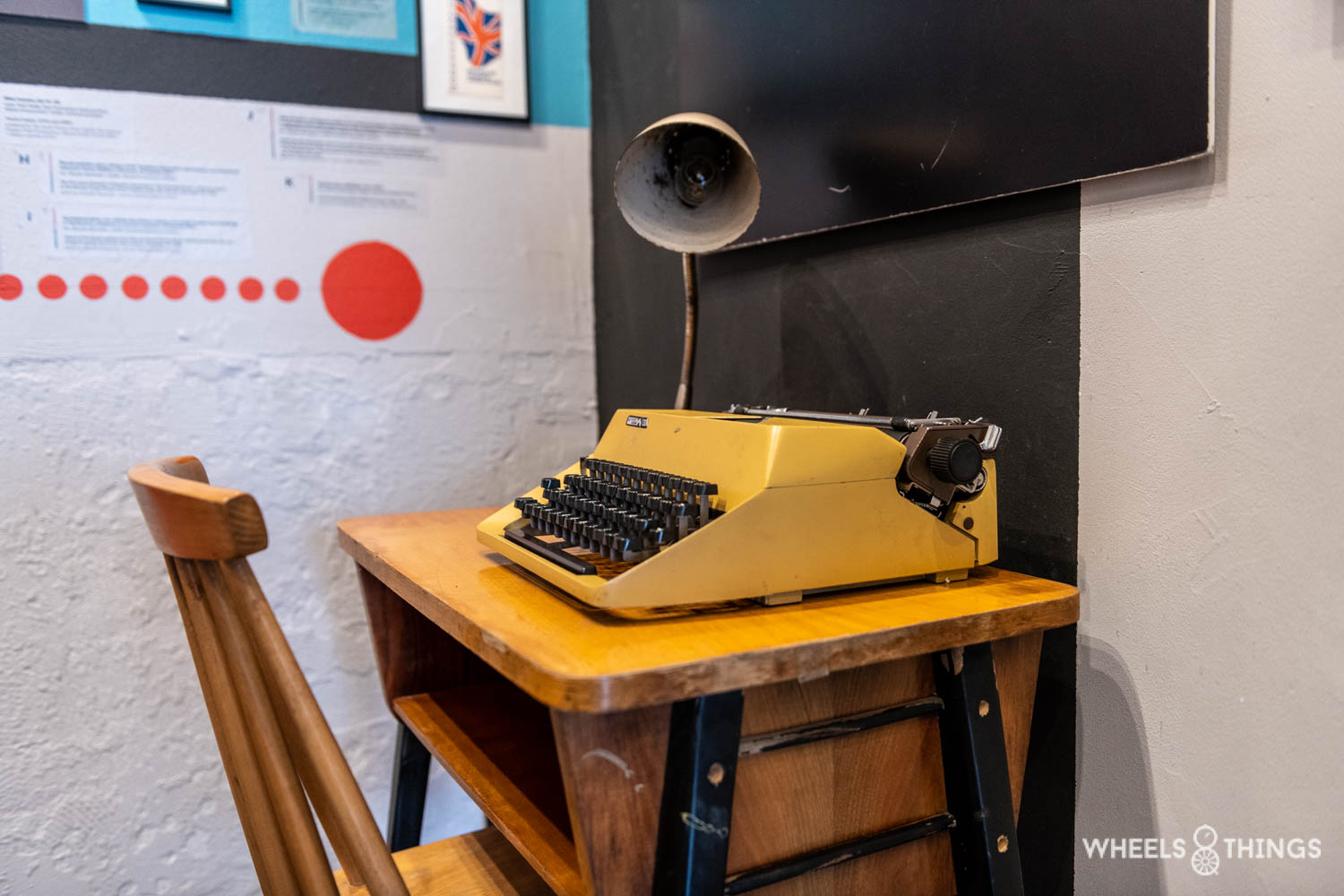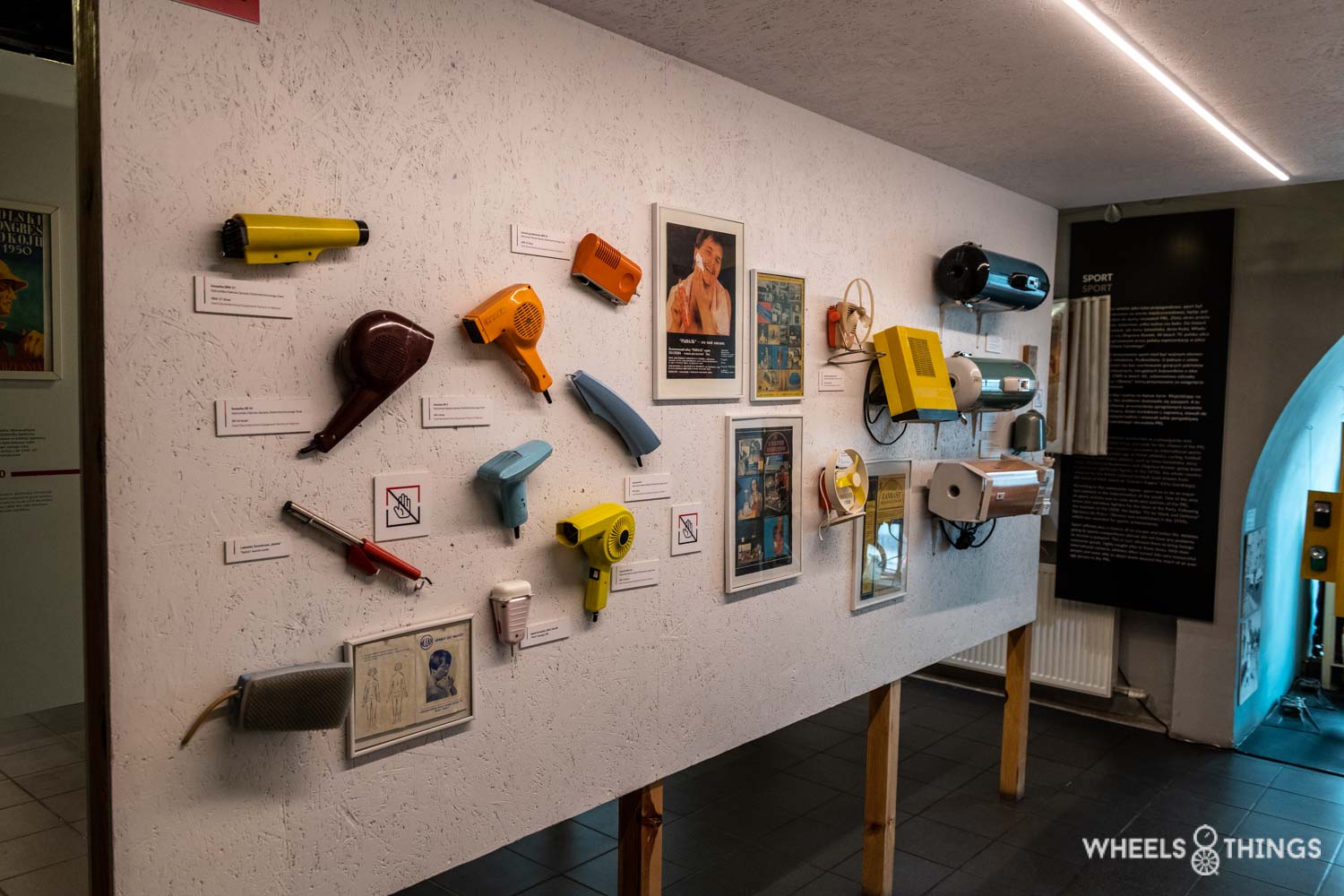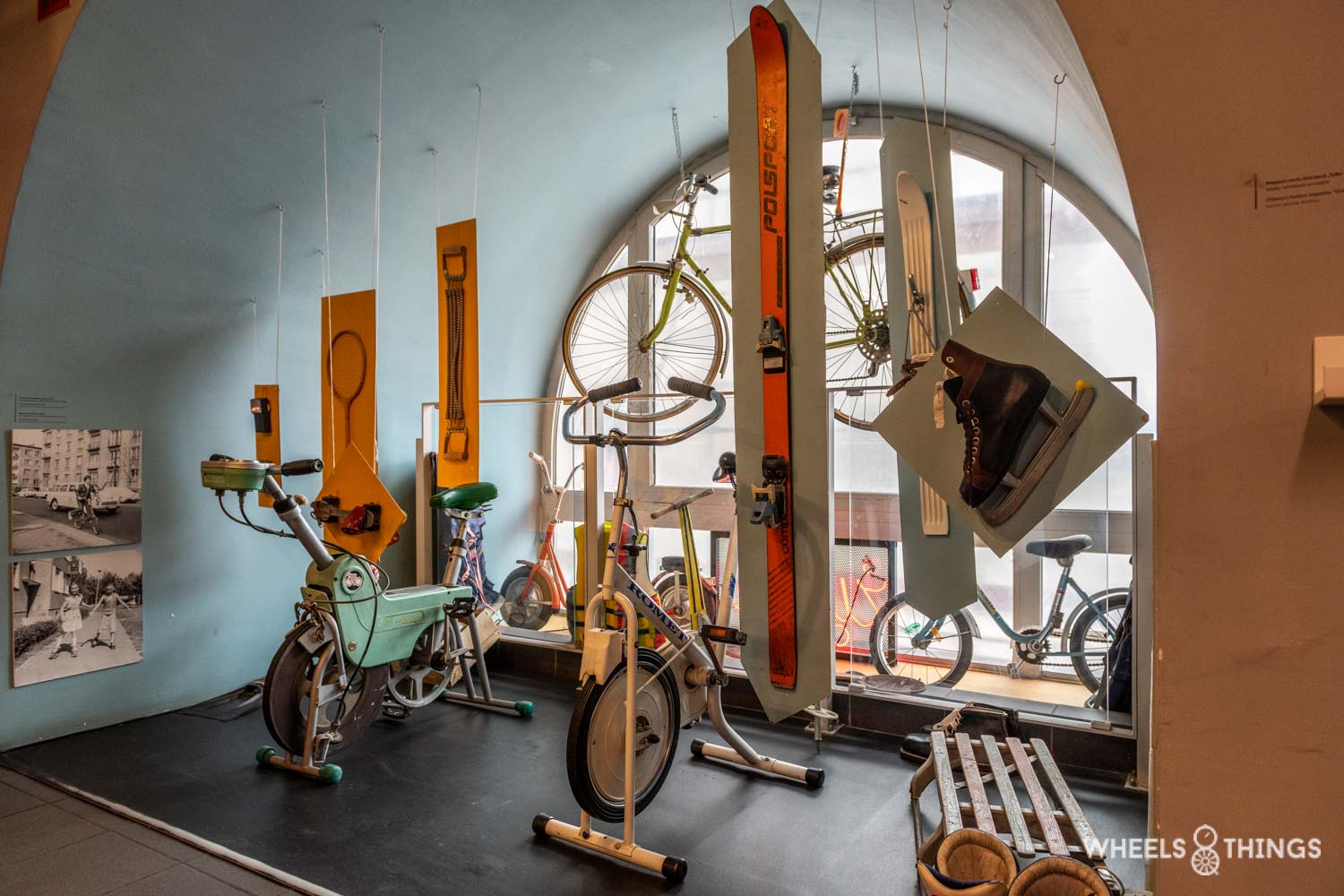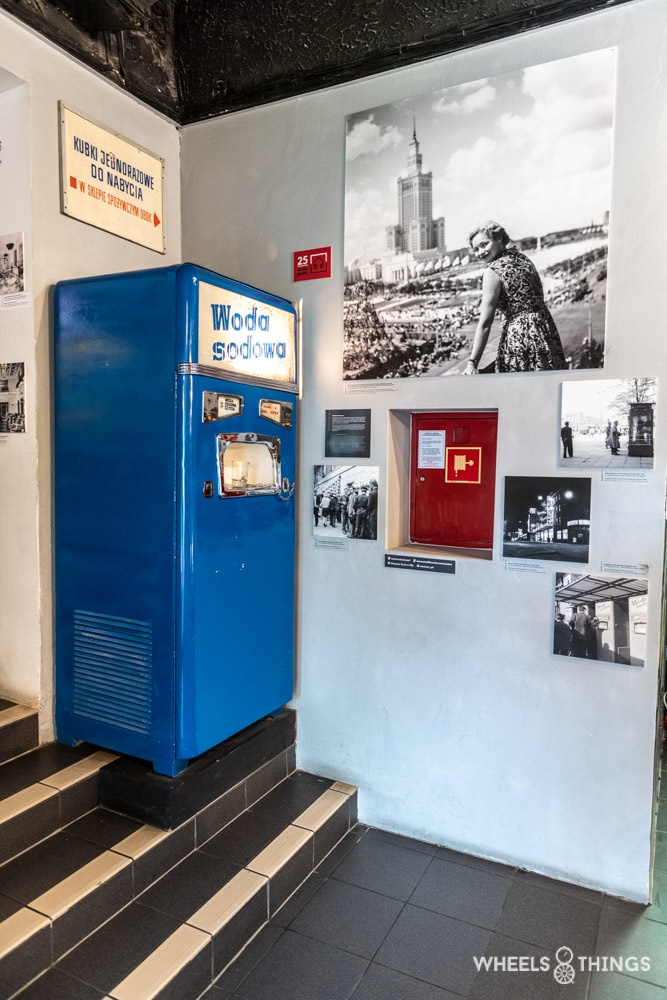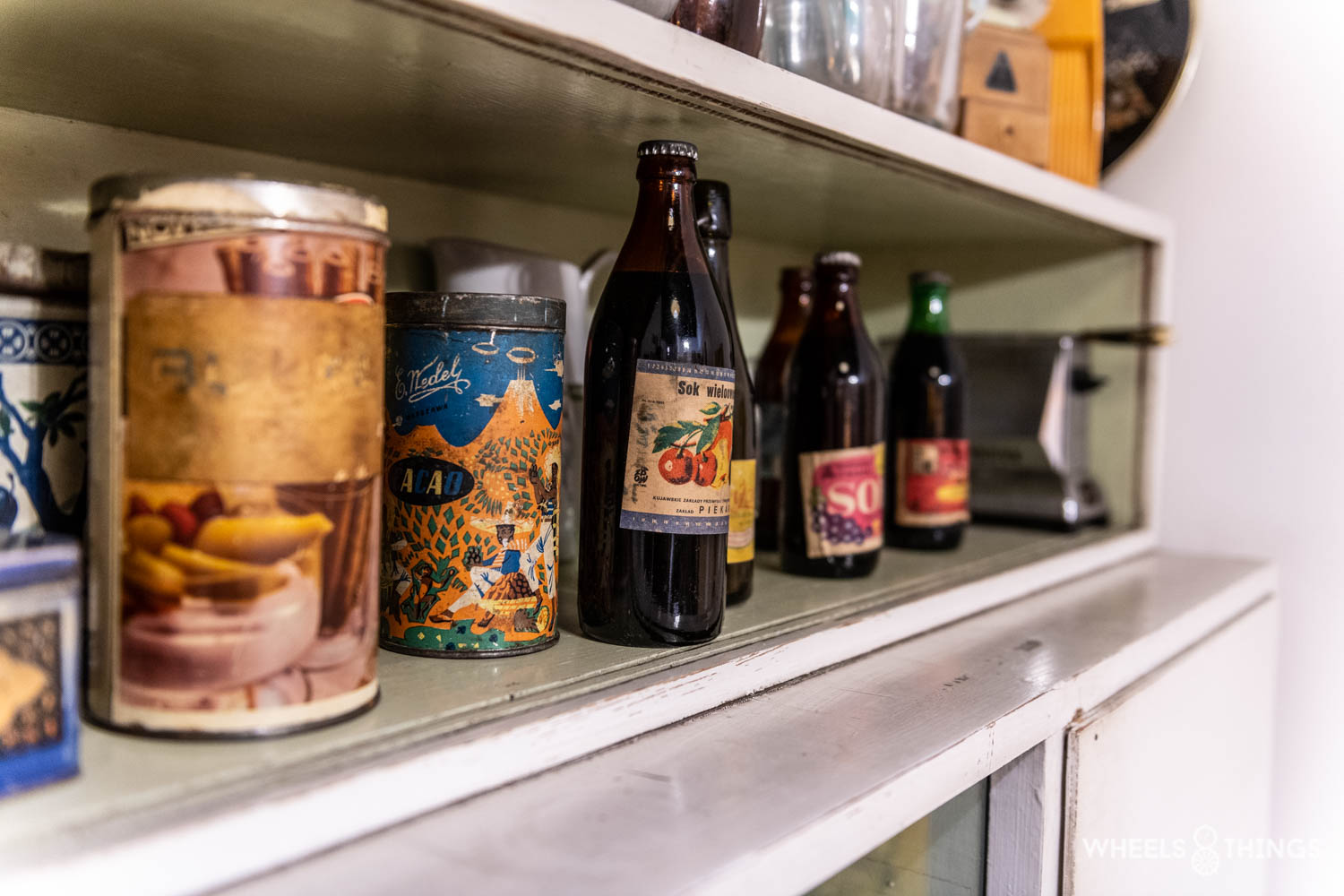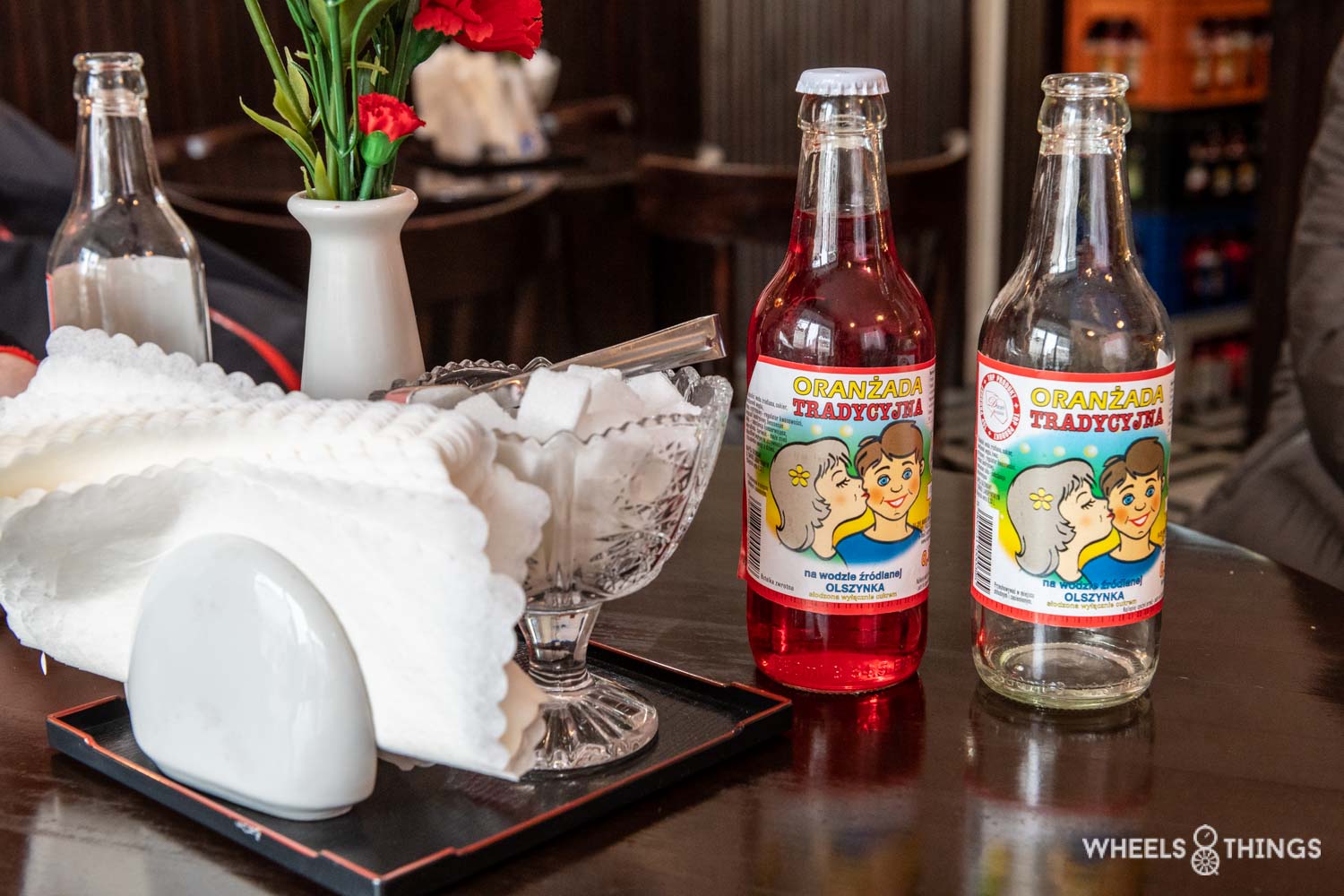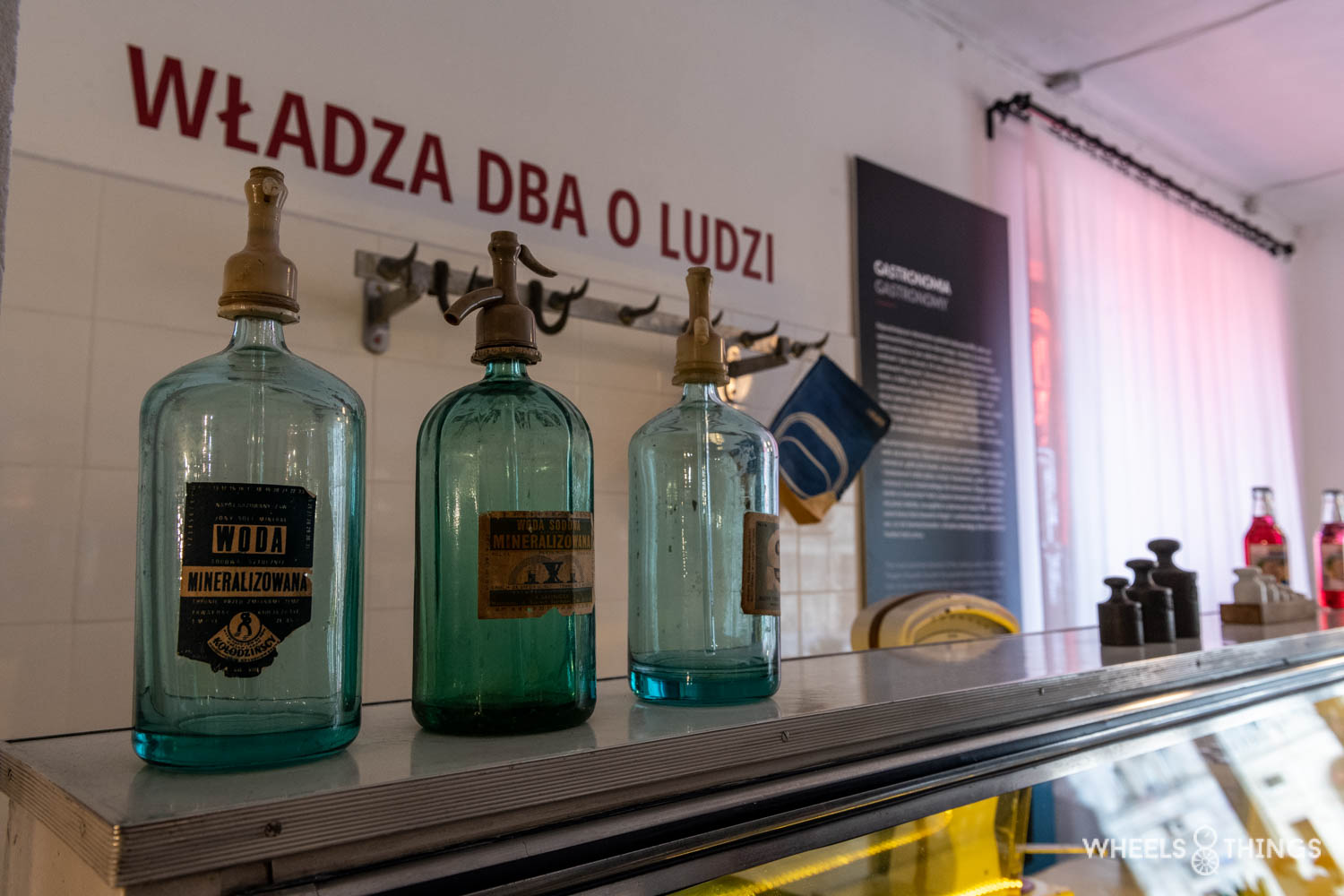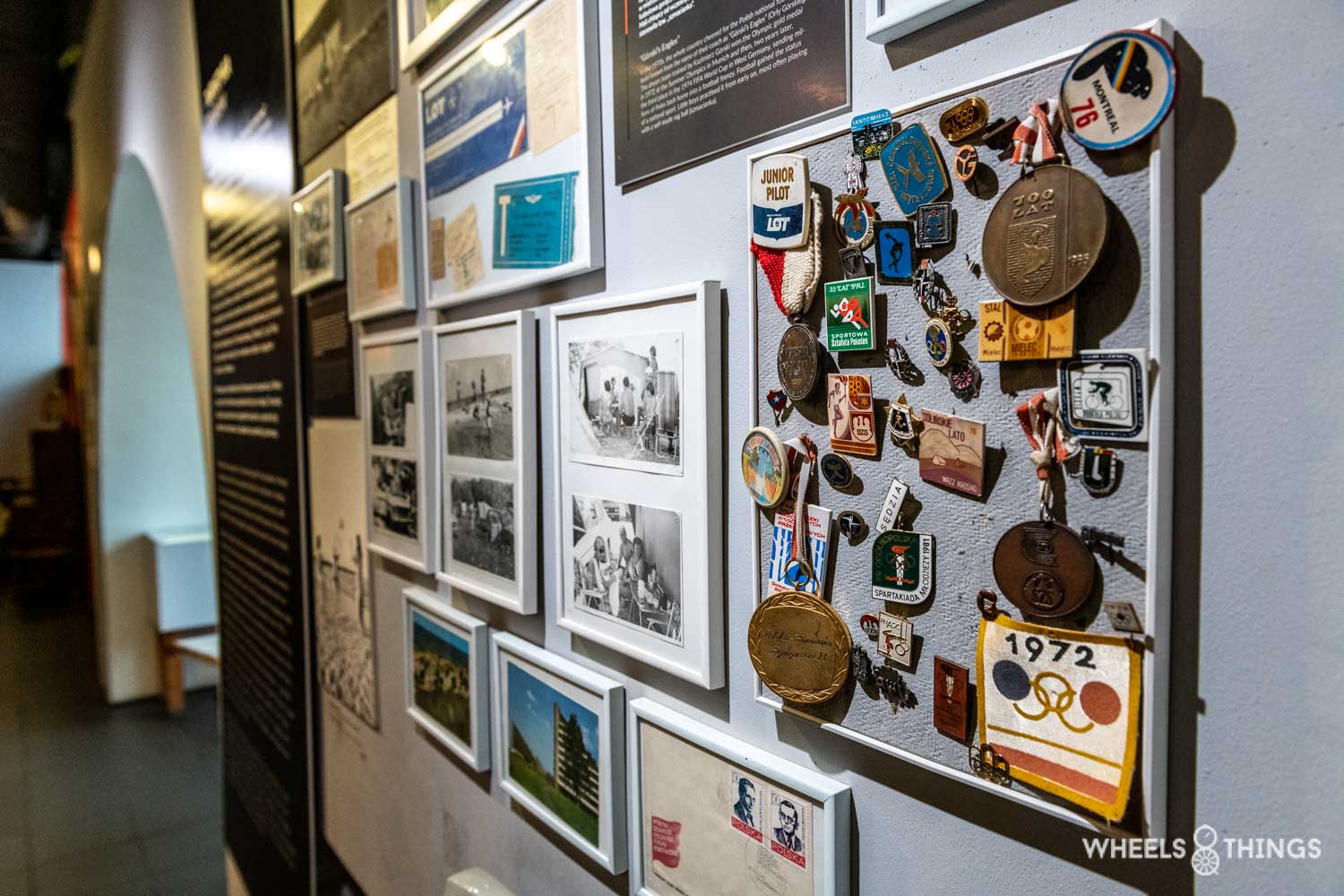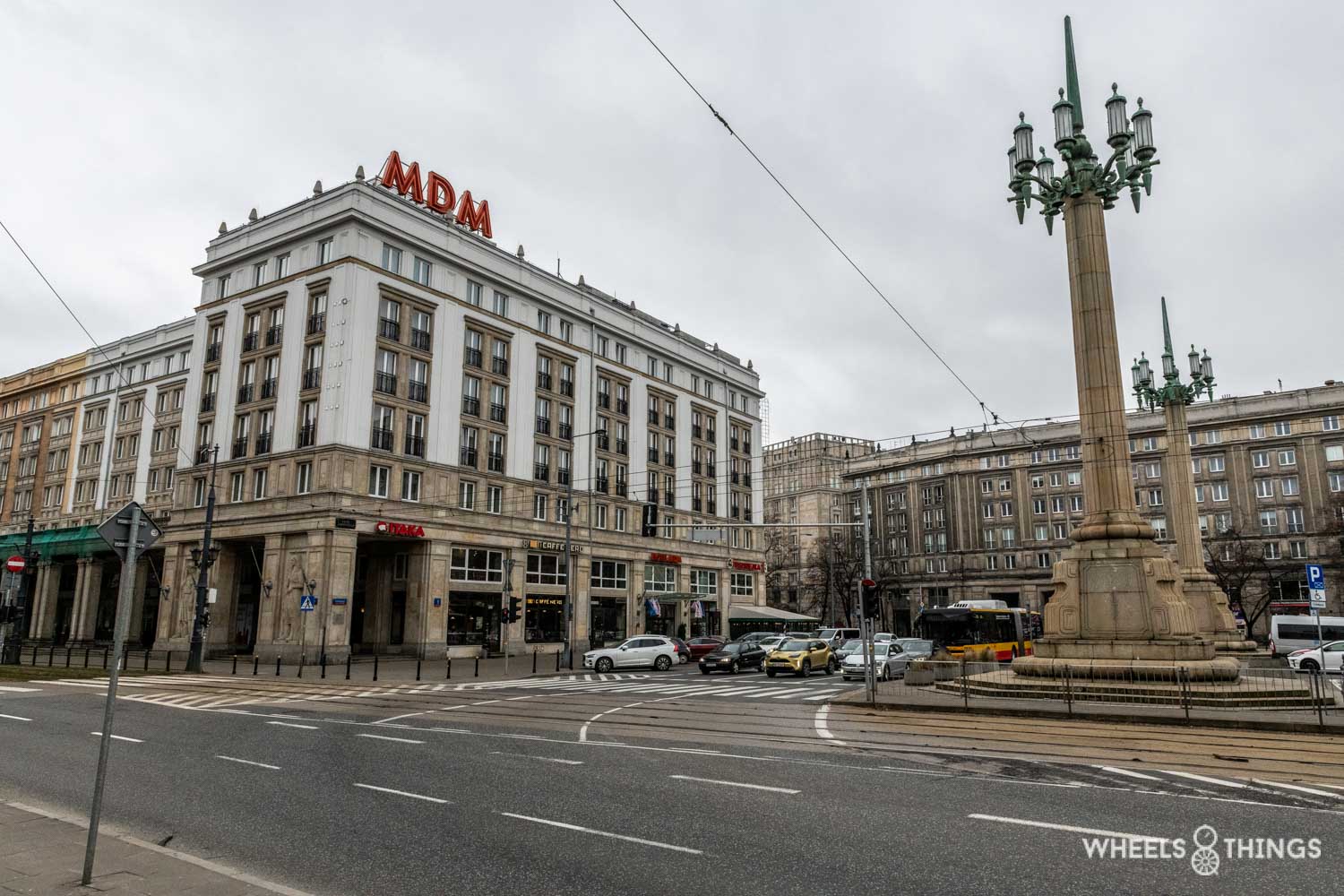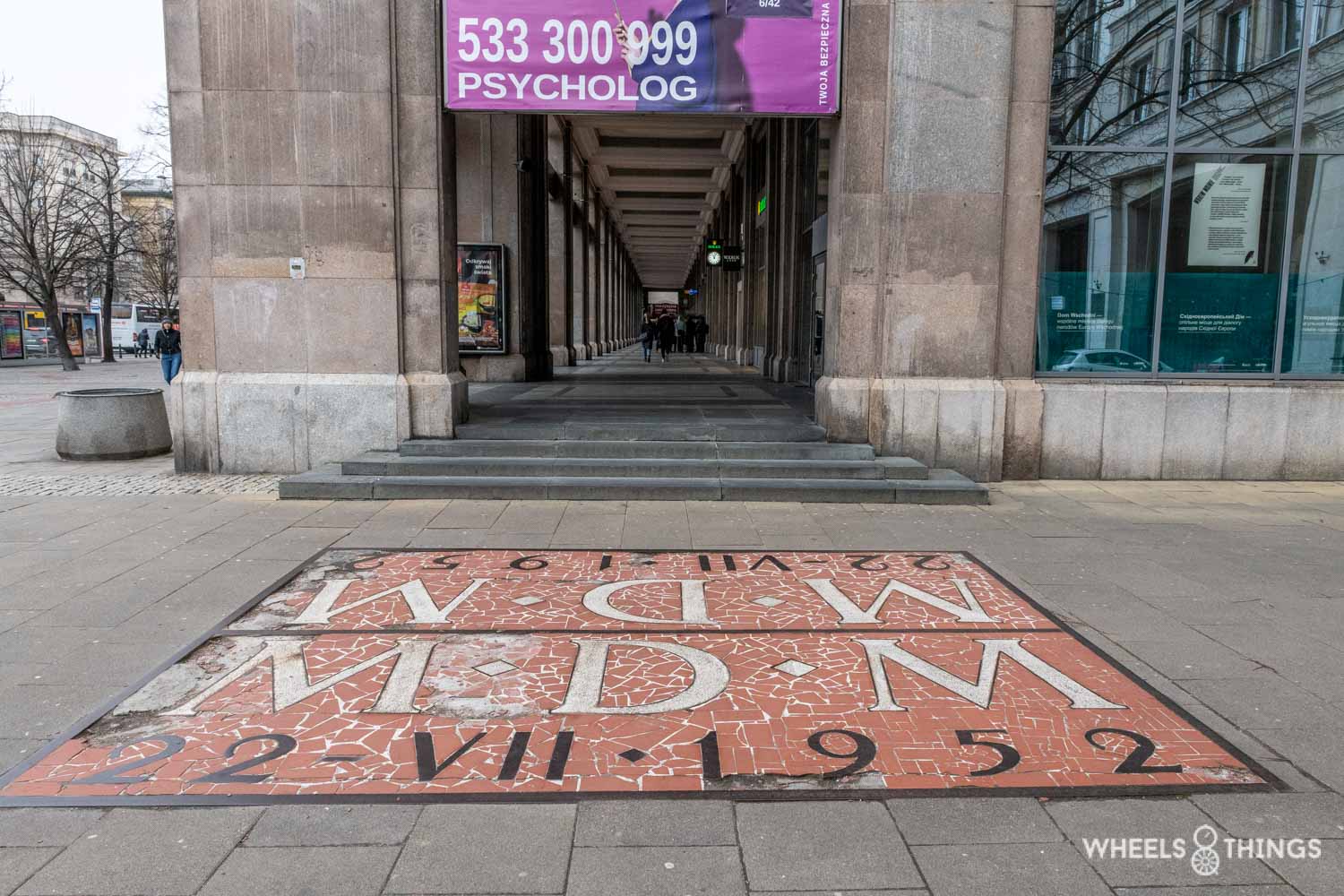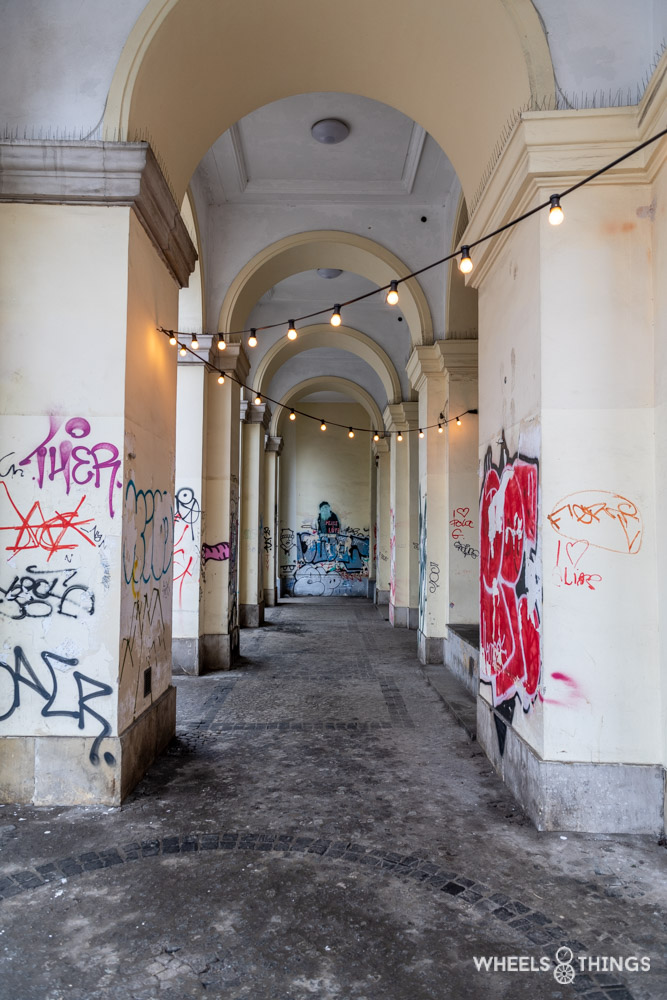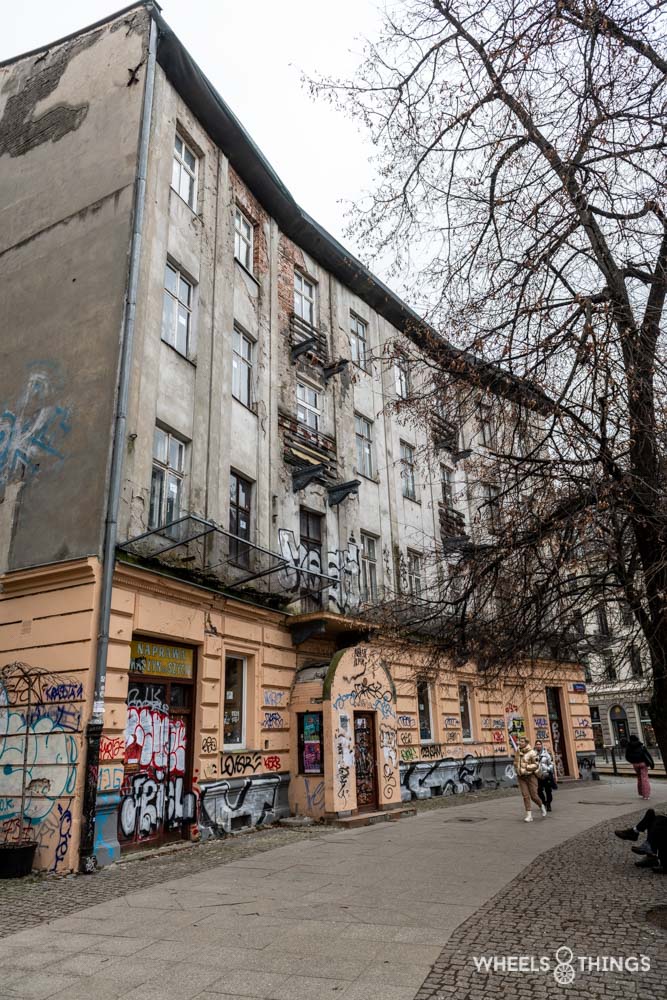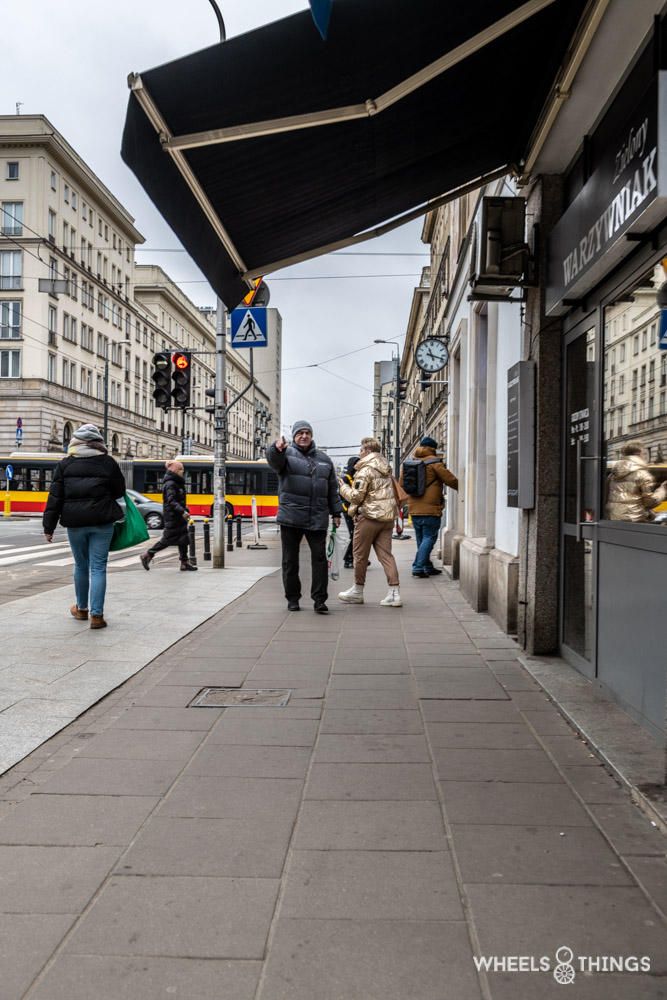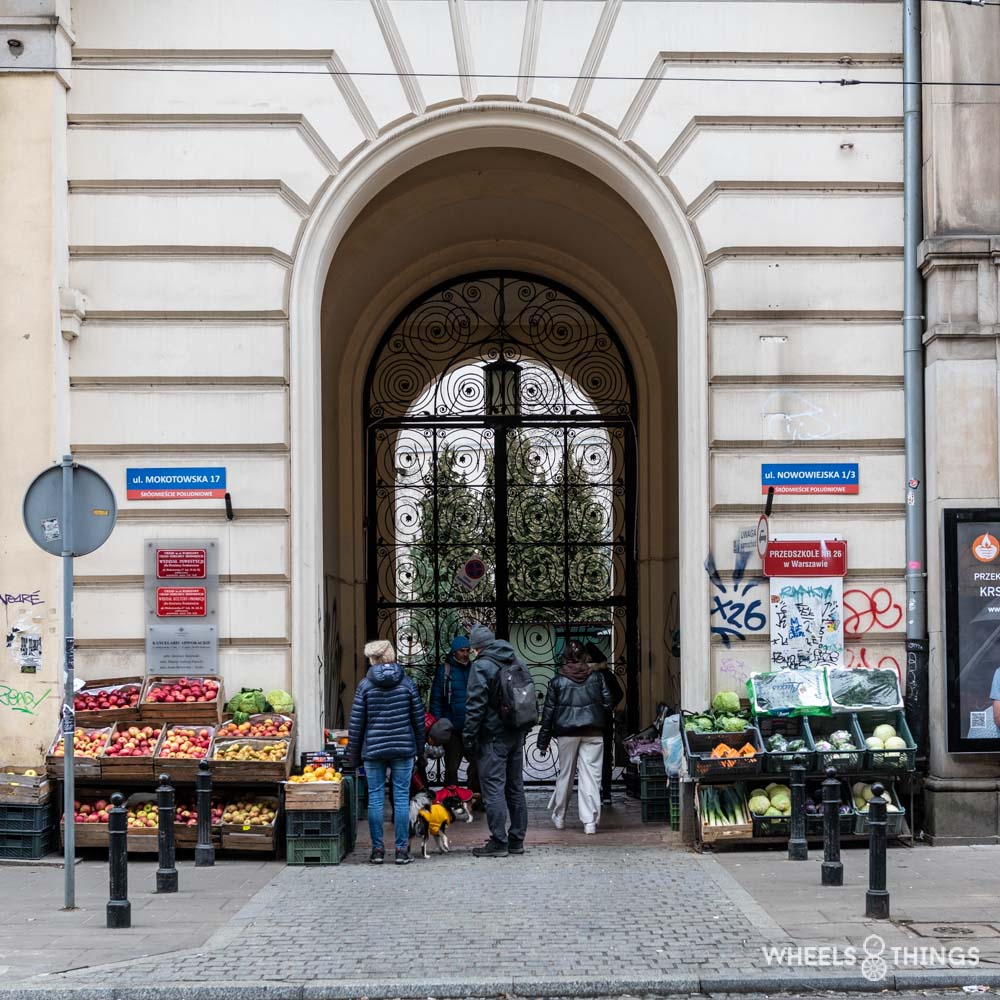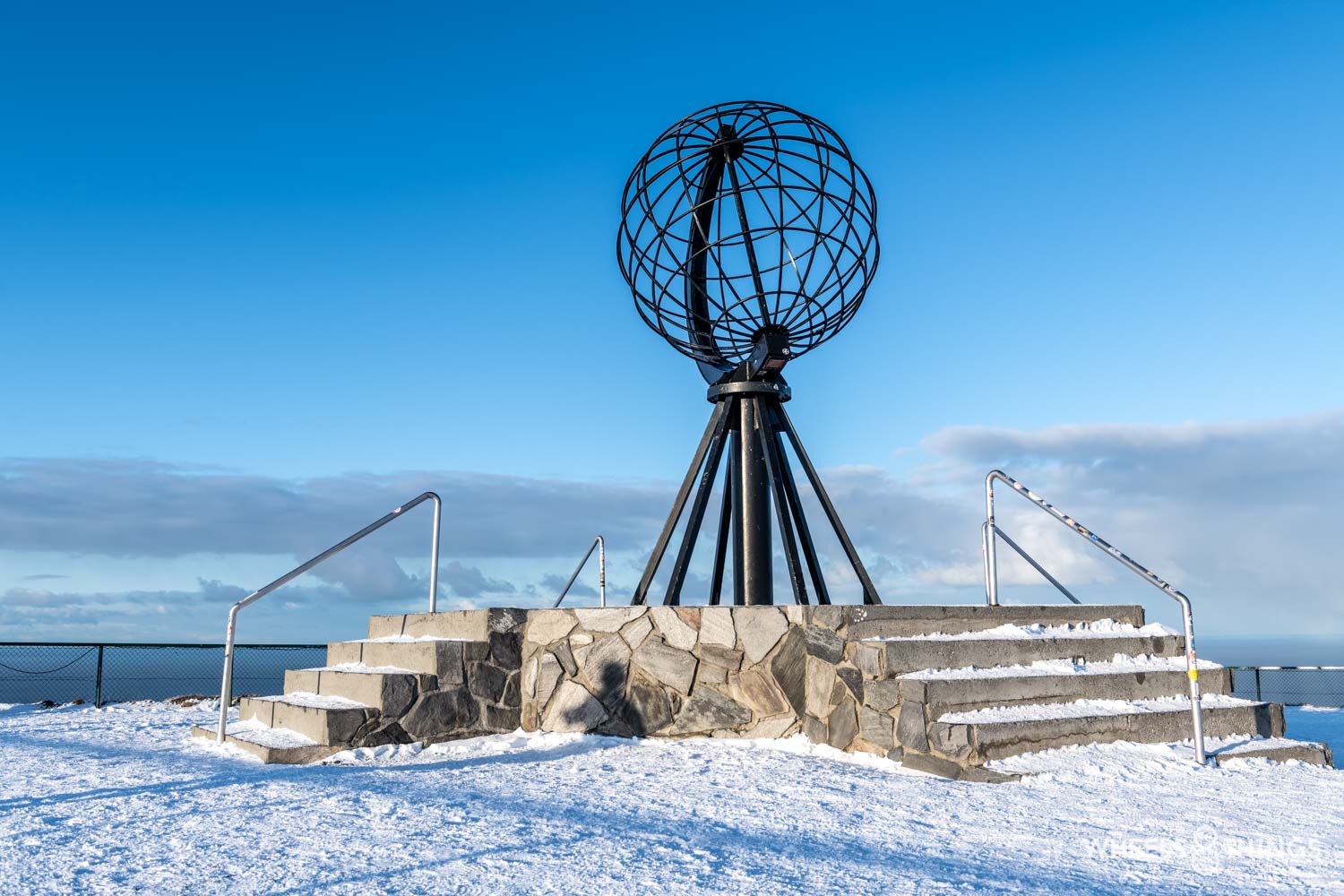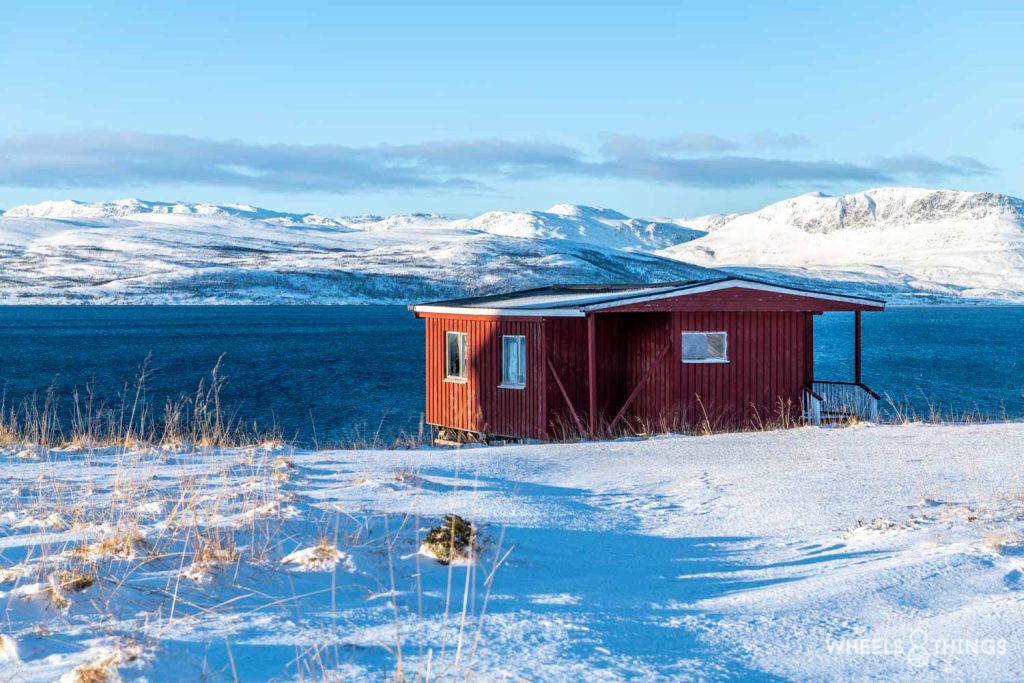
25-02-2023: Alta region – Honnigsvåg 243km
Today a short trip, from Hammerfest we drive to Honnigsvåg and then towards the North Cape. Naturally, there was some back and forth about last night’s accommodation fiasco. This we were fortunately able to do while enjoying a delicious breakfast at the hotel we managed to score last night at 10pm.
Hammerfest harbour is also home to some perhaps fishing-related industry. Hammerfest has just over 7000 inhabitants and is the northernmost city in the world (70°39’N).
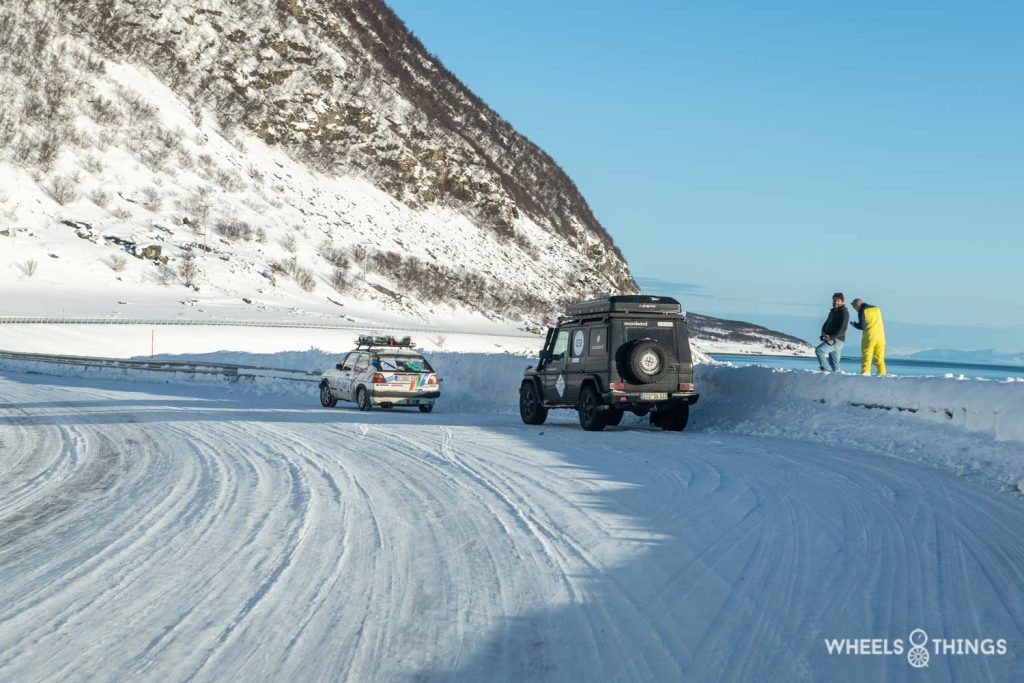
Before reaching Honnigsvåg, we had to pass through the North Cape tunnel. This is because Honnigsvåg and the North Cape are located on an island. The tunnel is 6875 metres long and goes to 212 metres below sea level.
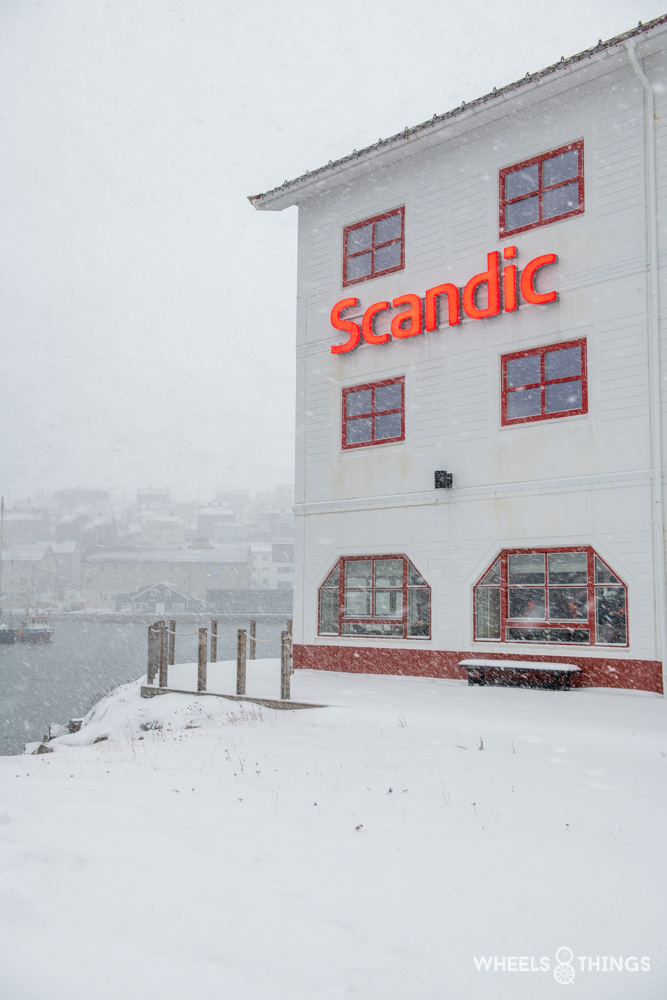
The hotel in Honnigsvåg is the only one we had booked well in advance. Honnigsvåg is a small village and is the closest place to the North Cape where you can still stay. Since there are only a few hotels and we were a total of 117 teams anyway, we did not hesitate and booked something right away.
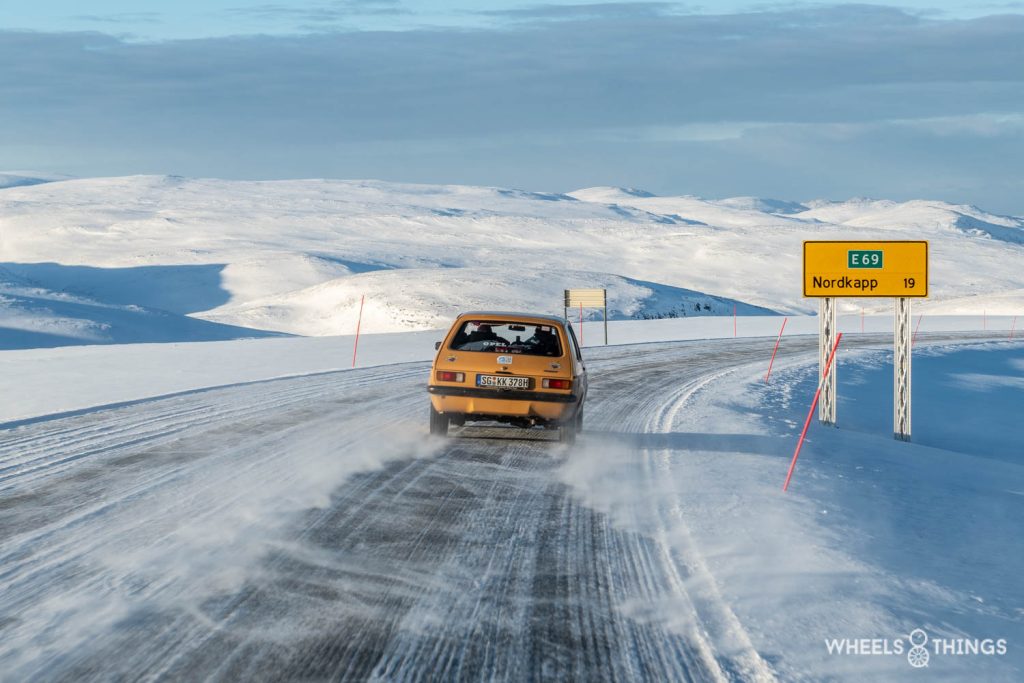
In the morning, we received a message from the organisation urging us to visit the North Cape on Saturday instead of doing it together on Sunday. This was because bad weather was expected for Sunday with the risk of the road to the cape being closed then. A large number of teams experienced this last year.
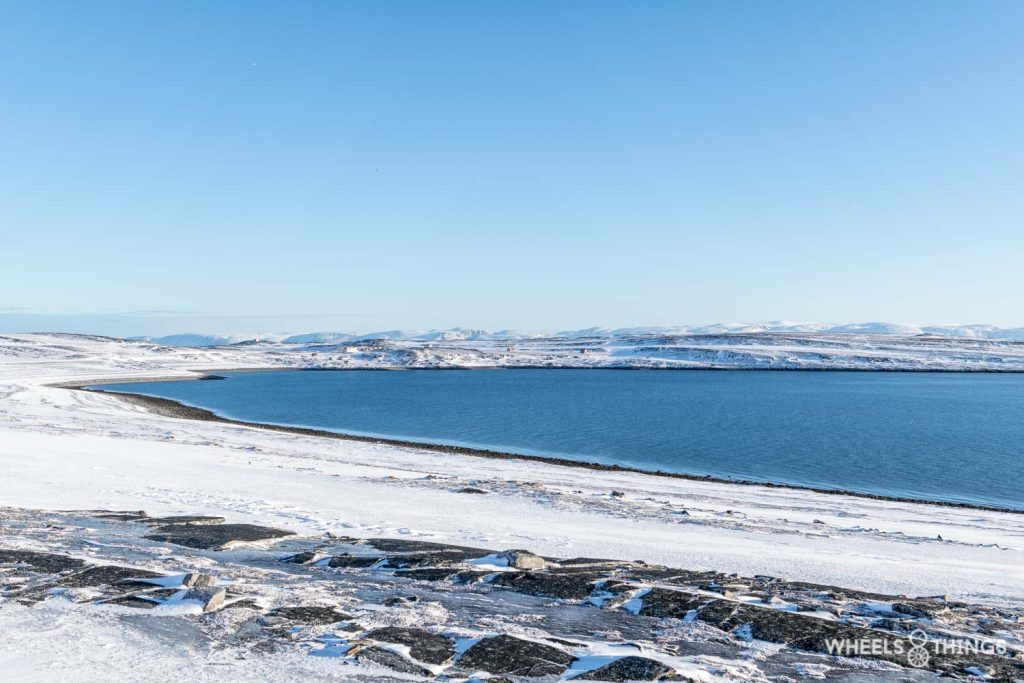
We were well on time in Honnigsvåg so we were able to drive on quickly to yet one of the highlights of the rally, the visit to the North Cape.
The drive from Honnigsvåg to the North Cape passes through – I’ll say it again – breathtaking scenery. Perhaps the trip will also be very beautiful in summer but there is something magical about the just over 30 kilometres through a snow-white landscape. Under a beaming sun, Big George pulled himself up nicely as the North Cape turns out to be quite high. More precisely, the globe stands against a 307-metre-high precipice. Snow chains are a mandatory item to have with you on this route but we didn’t even have to put them on. Driving on snow and ice is actually not that bad, in our opinion braking was the most delicate thing and provided that we acted with some feeling, this did not cause any problems.
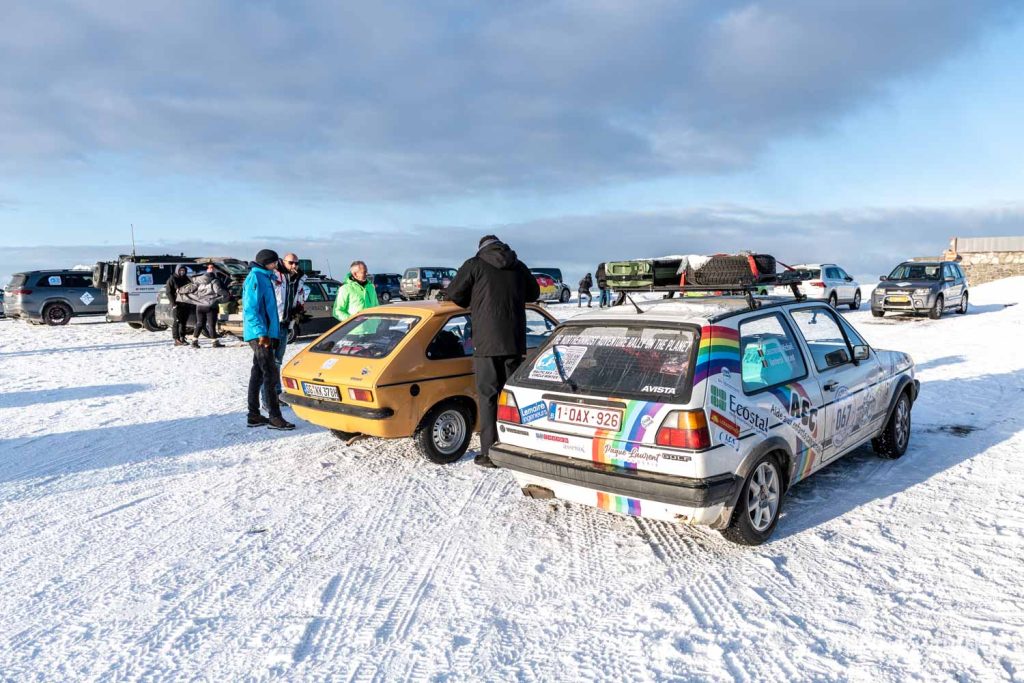
It may have been low season, but you are not alone at the North Cape. In the large car park, which is free by the way, there were a fair number of other team members. However, it was not an overrun as you sometimes see on summer images. In itself, we can understand this because the conditions to get here are not always obvious.
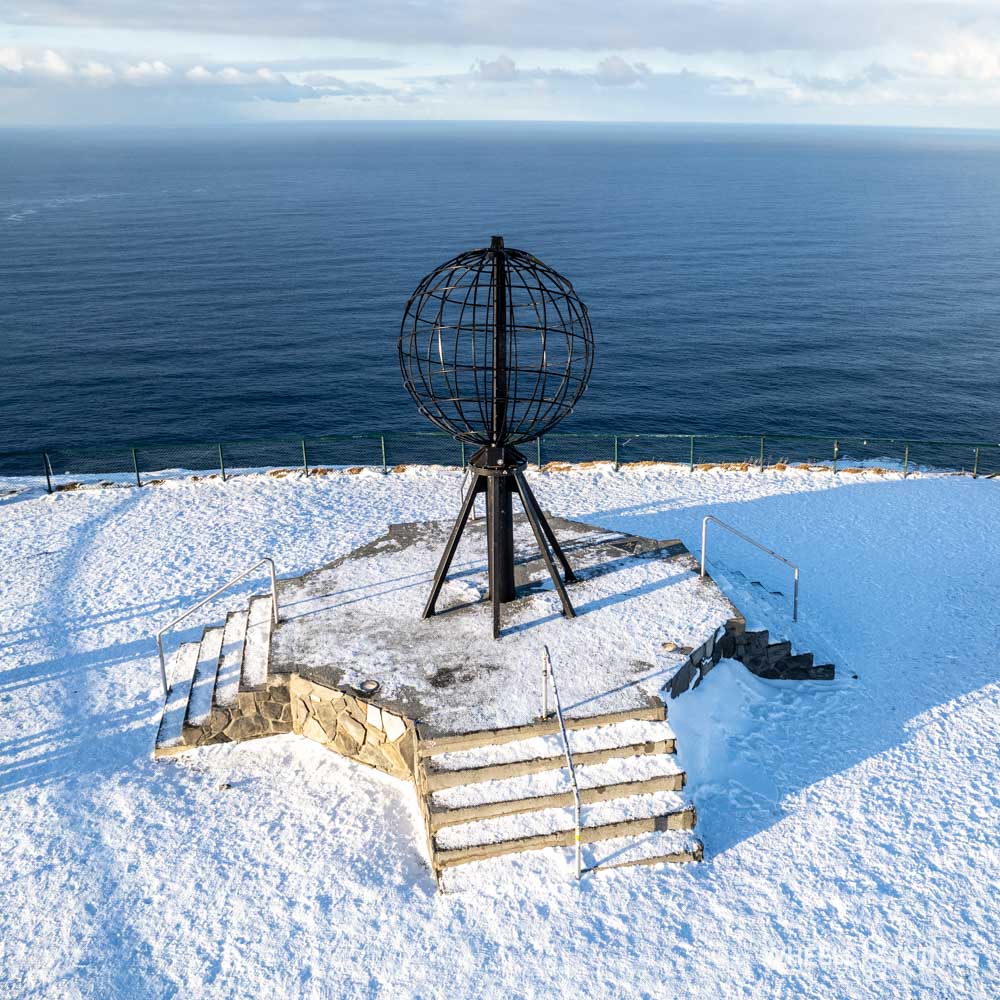
A pity we would say because in the snow it is really beautiful ánd I had the opportunity to photograph the monument without anyone being there. In summer, an absolute utopia.
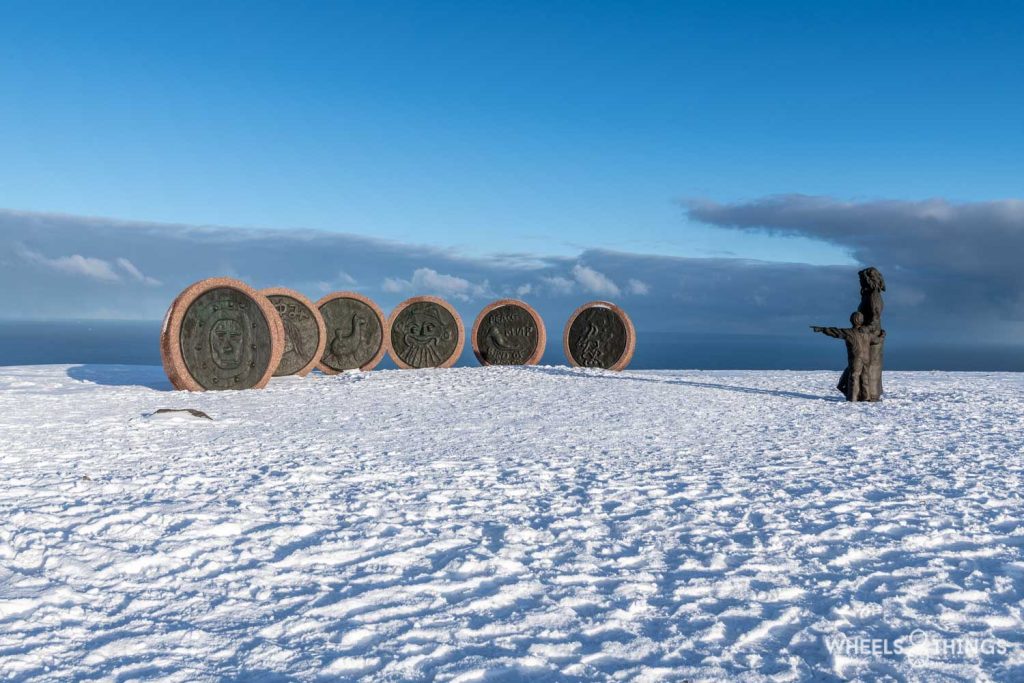
Apart from the famous monument, there are a few more memorial stones and a large and very modern visitor centre.
Then again, to visit the visitor centre, restaurant and shop, you do need a ticket (310 NOK or just under 30 euros p.p.). In return, you can go and see a film and visit some exhibitions. Needless to say, we ticked all this off. By the way, the restaurant was also okay for a small bite to satisfy our hunger.
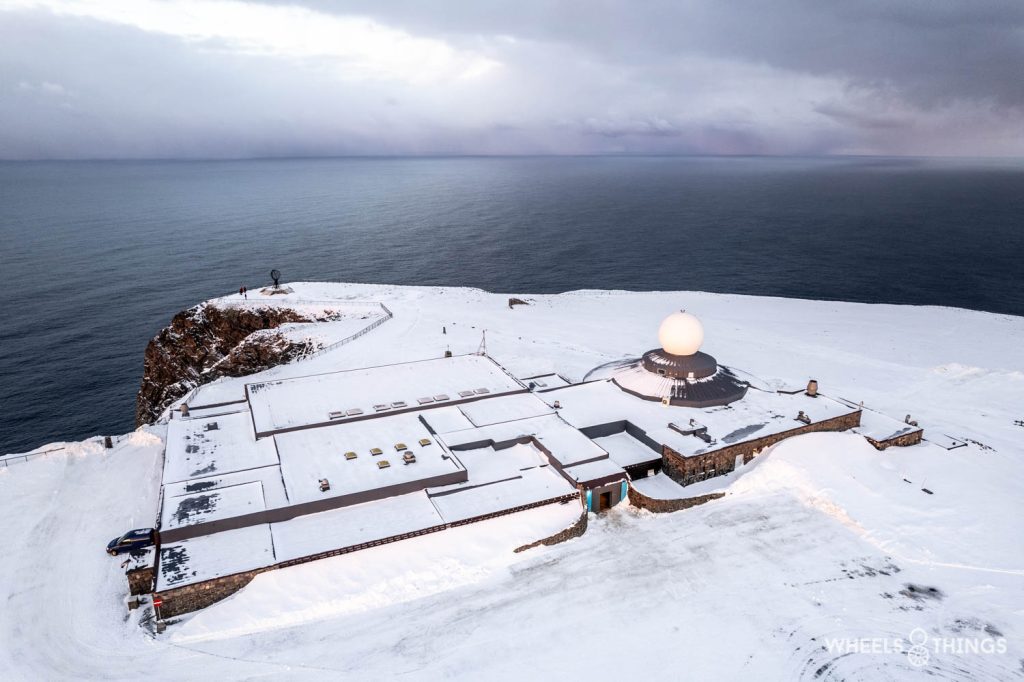
As we did in many places during our trip, we spoke to someone here. The person managed to tell us that we were really lucky with the weather. There had been no access all last week due to heavy snowfall. The day after our visit, access might be closed again as a snowstorm was expected.
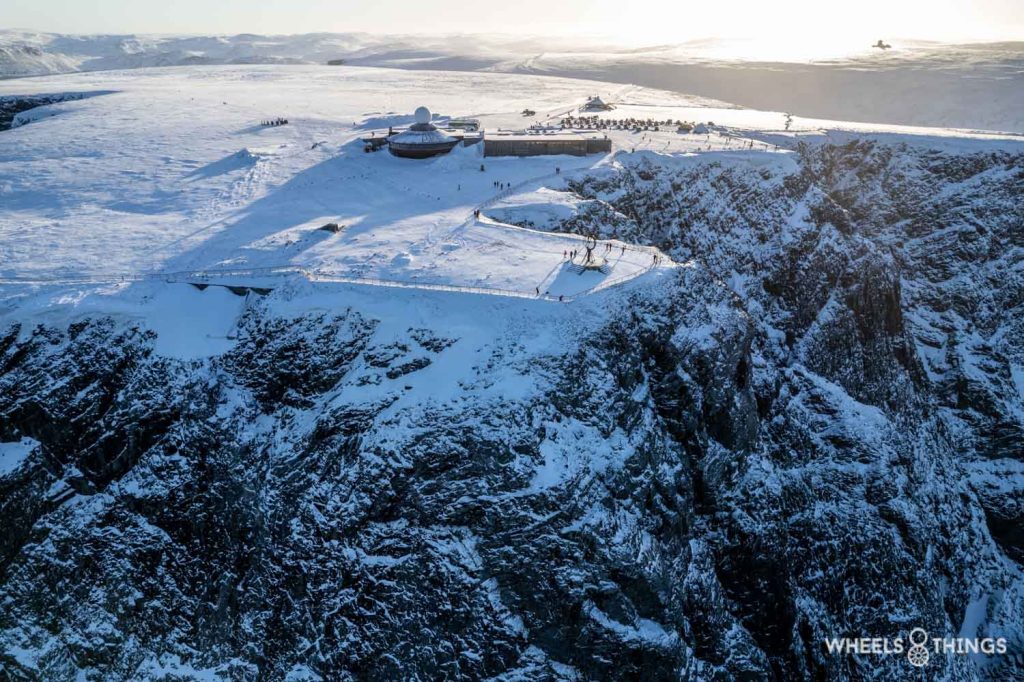
Without noticing, we turned out to have walked around the North Cape for a total of over three hours. Taking photos with the drone was allowed to my surprise so that was a bonus.
Satisfied, we could start the drive back to Honnigsvåg to have something nice to eat in the village and enjoy a quiet evening in our hotel. We also had some impressions from that day to digest.
26-02-2023: Honnigsvåg – North lapland region 396km
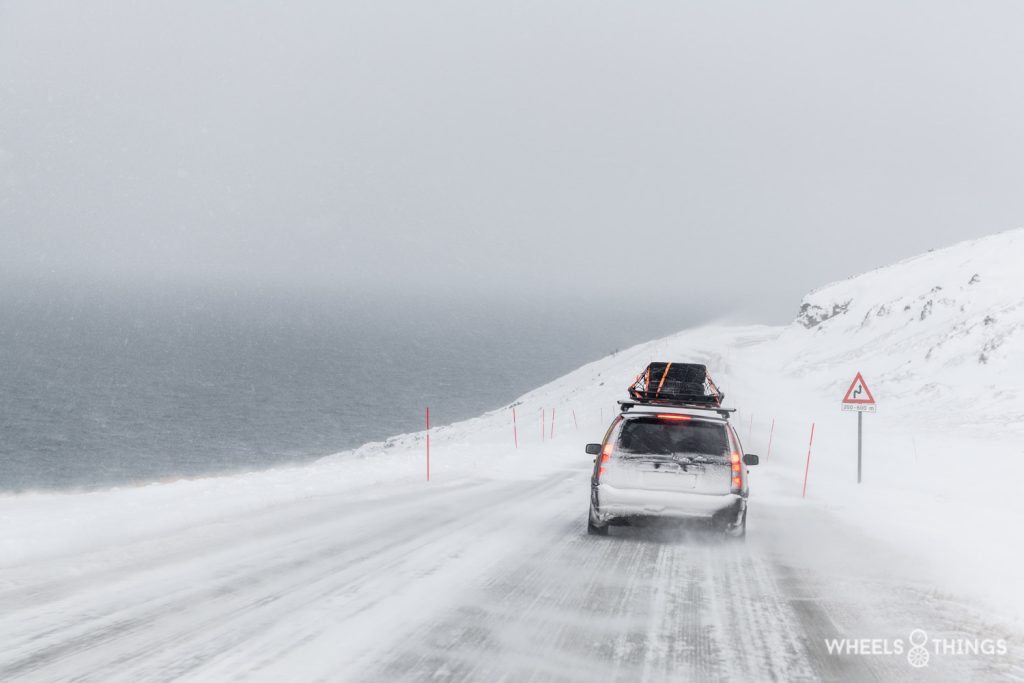
Since we had visited the North Cape a day ahead of schedule, we could set sail for Finnish Lapland in the morning. The woman at the North Cape turned out to be right about the weather. When we awoke, we were in the middle of a blizzard. A tight wind caused the snow to fly horizontally, which promised for the ride ahead as visibility was really limited.
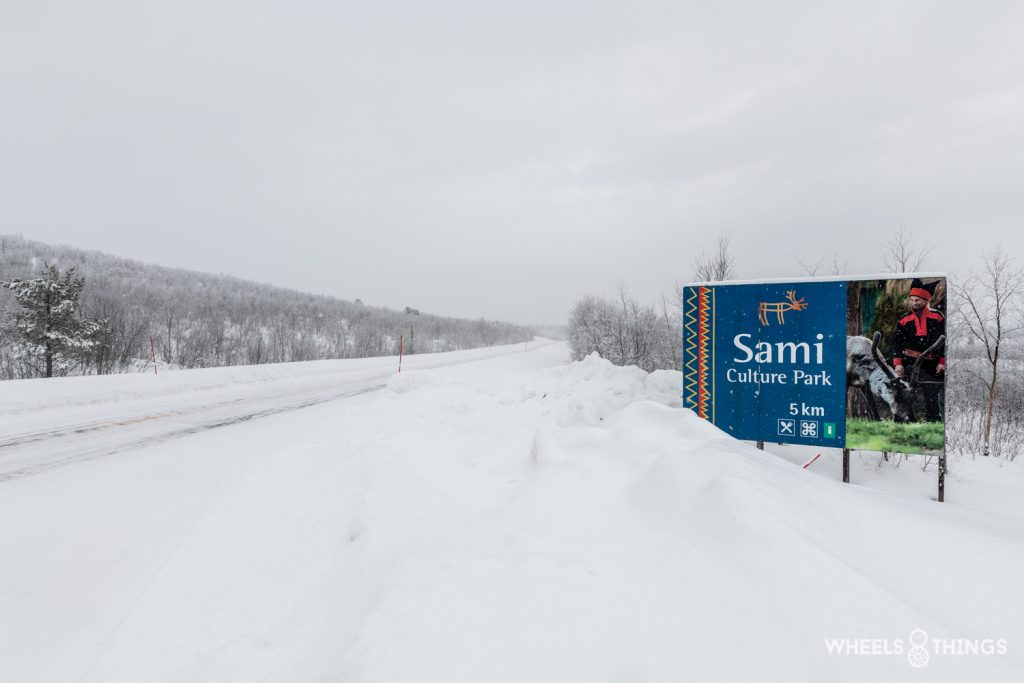
Just before entering Finland we passed the municipality of Karasjok. Even though the municipality has only 2,700 inhabitants there is something to tell about it. In January 1886, for instance, a temperature of -51.4°C was recorded here, which to this day is the lowest temperature ever recorded in Norway. But the seat of the Norwegian Sameting, which is the Sami parliament, is also located here. The Sami parliament was only opened by King Olaf V in 1989, we will come back to that later. It was on my to-do list to photograph Sami in their traditional costumes. Since there is a Sami museum in the municipality, this seemed like a good place to start. Unfortunately, it turns out nothing is open on Sundays, not even a museum.
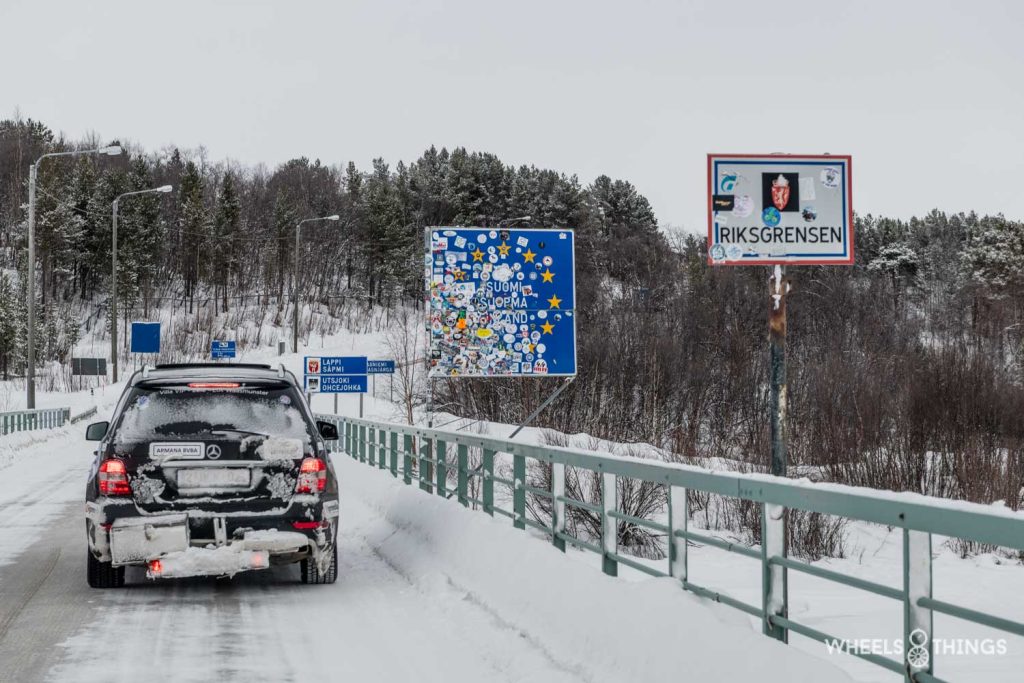
The wild landscapes of Norway were soon exchanged for endless pine forests in Finland. So we drove through Stabbursdalen National Park, this pine forest is the northernmost in the world.
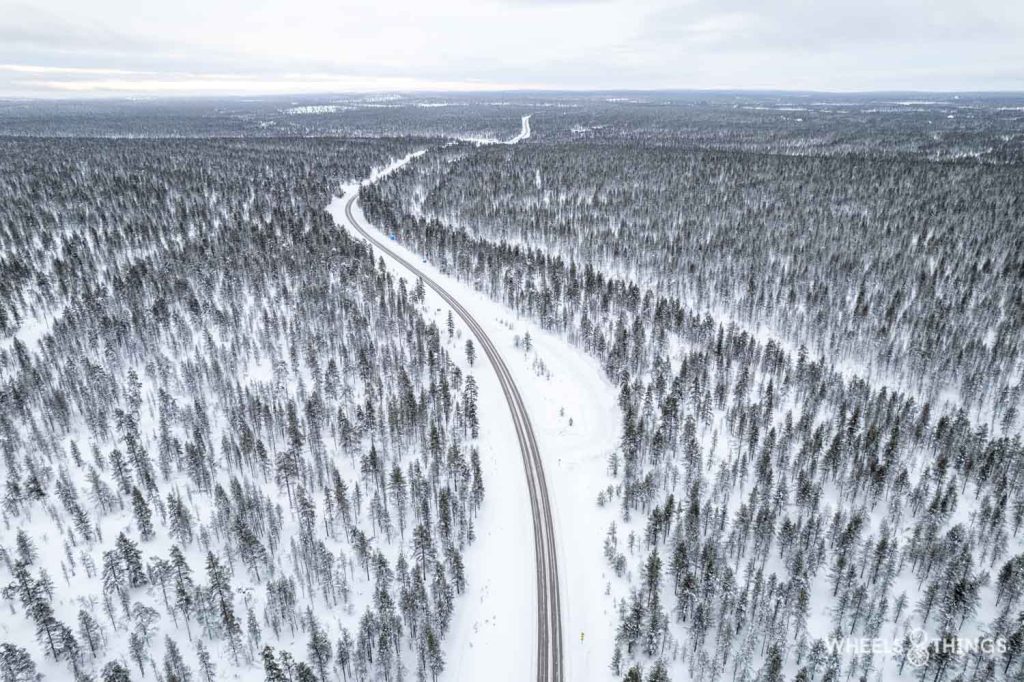
The drive continued towards Ivalo which is a slightly larger town located on the 1040 km² Inarijärvi Lake. The largest lake in Lapland. This was a slightly more difficult place for us to find a decent place to stay for the night.
Eventually we did find Hotel Kulahippu and since there was also a restaurant here we decided to finally eat reindeer.
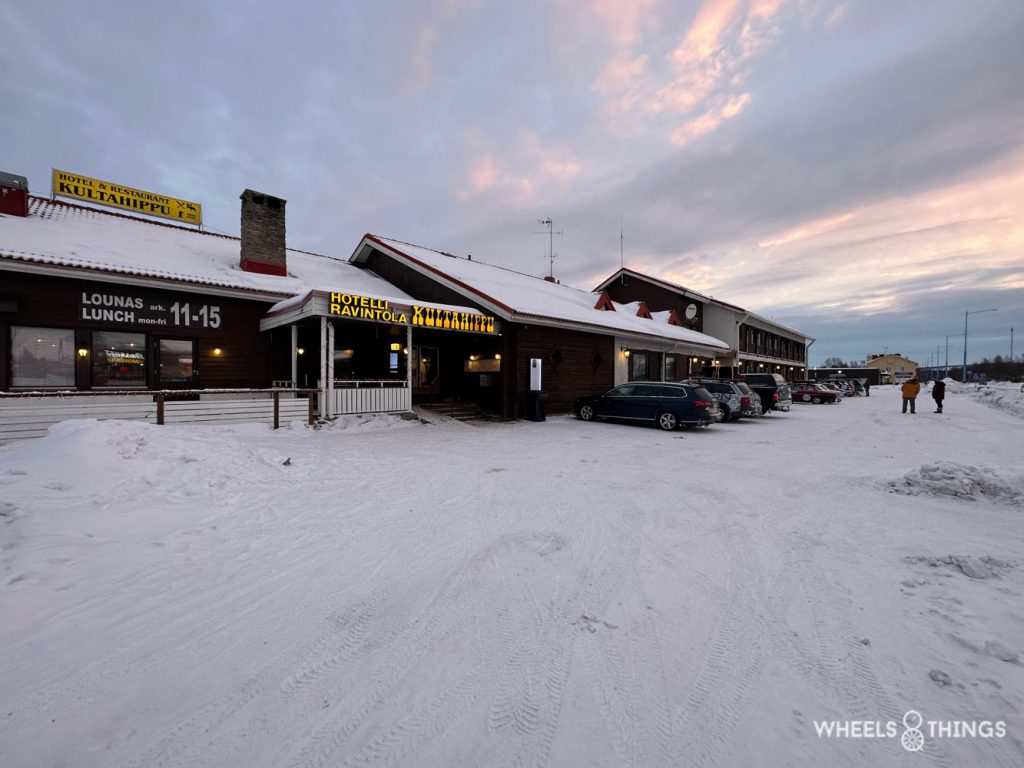
I was still looking for Sami people in costume so I spoke to the lady who brought us the food. The question was simple: where can I meet the Sami people? With a smile on her face, she said ‘you speak to them’. Stunned for a moment, we got talking. The Sami people are the original inhabitants of this area (Lapland) that stretches across Norway, Finland, Sweden and a stretch into Russia. They are a population group that was oppressed by settlers for a very long time. For a long time, they lived as nomads together with their herds of reindeer, which provided food but also an income by selling the tanned reindeer skins, among other things. Even today, most reindeer herds are managed by Sami. My request to see Sami in costume was now definitely dismissed. They wear this only during festivities.
The current conflict between Russia and Ukraine also came up as did the ban on Russians entering the EU. To this she managed to tell us that Russians can simply go to Norway (no EU) and then travel on to the other Scandinavian countries because there is virtually no border control between Norway and e.g. Finland.
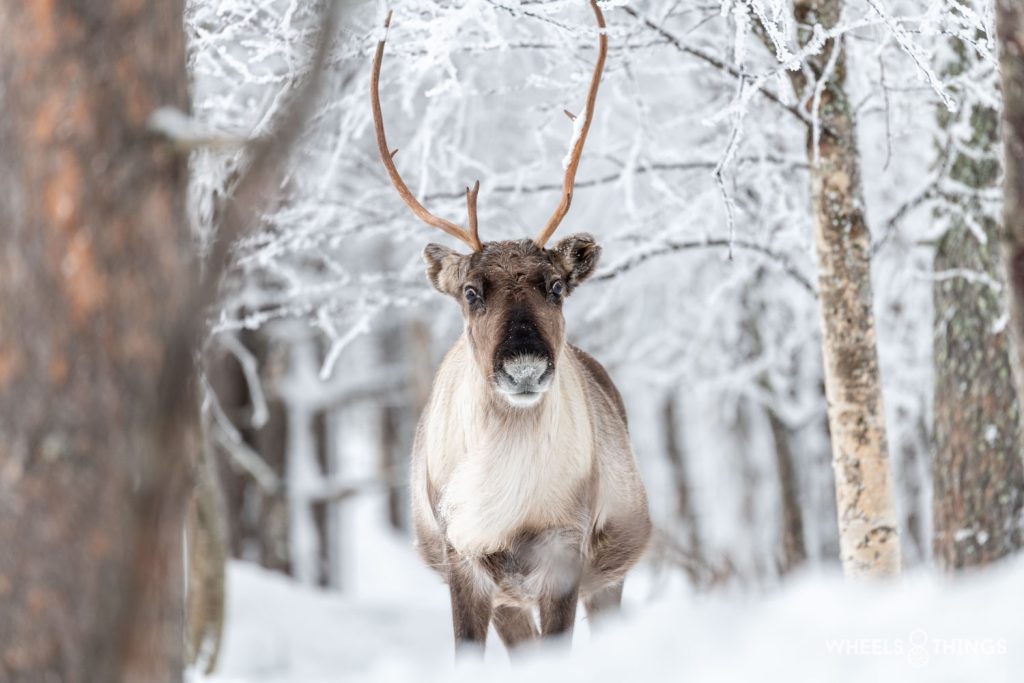
We may not have seen Sami in costume but we did encounter reindeer on the way. It was quite a large group, so they just crossed the road without looking back. On those roads, the Finns drive around 100km/h. If you suddenly see a reindeer like that and know that you are driving on ice, it might be a bit exciting. Maybe that is why the best rally drivers come from here, because of their agility in avoiding reindeer.
27-02-2023: Northern Lapland – central Finland 532km
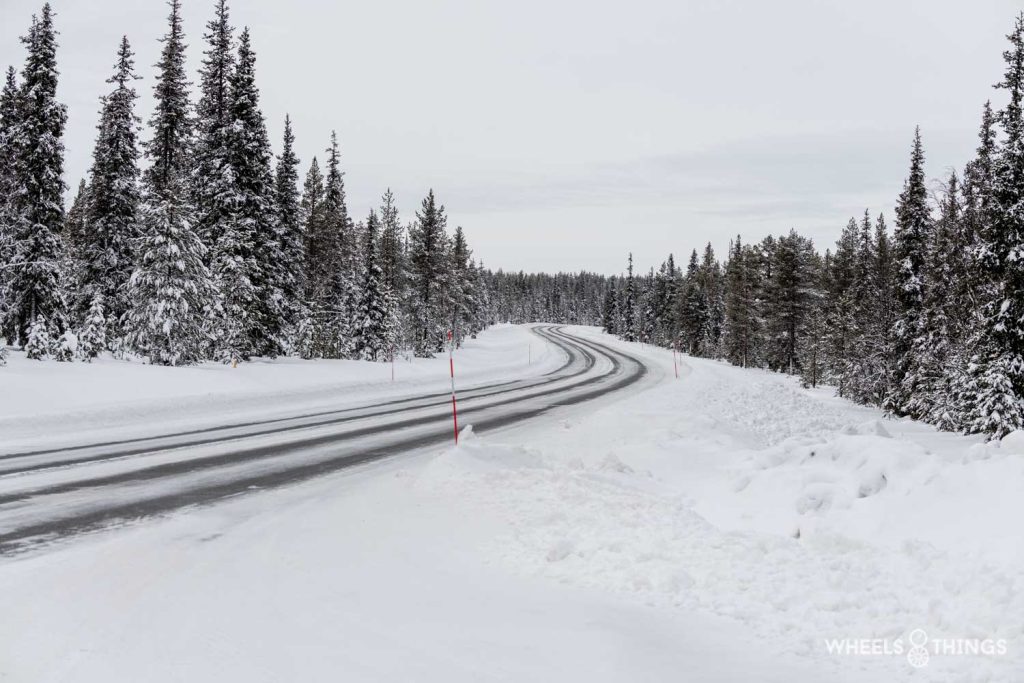
Quite possibly we got the wrong impression … But if you ask us for a first impression of Finland, we might say in chorus: endless lanes and huge trees.
Especially in Lapland, where barely 3.4% of Finland’s population lives, we could drive for a very long time without encountering a single living soul.
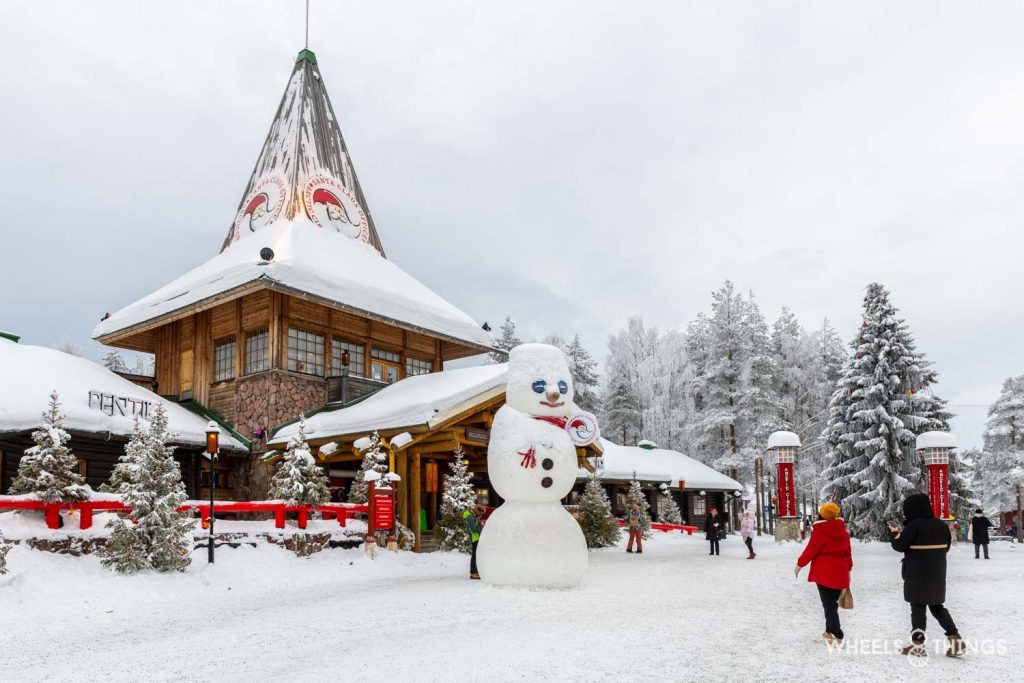
Today on the schedule was to visit Rovaniemi, the home of Santa Claus. We understand that it was on the schedule but it’s actually one big commercial fuss. We walked around the park for a while and of course visited the Santa Office. To see Santa Claus himself, we had to queue up for an hour among mostly Chinese people. Nowhere else on the 8500 km trip did we encounter them but at Santa Claus they represented, I think, 50% of the visitors.
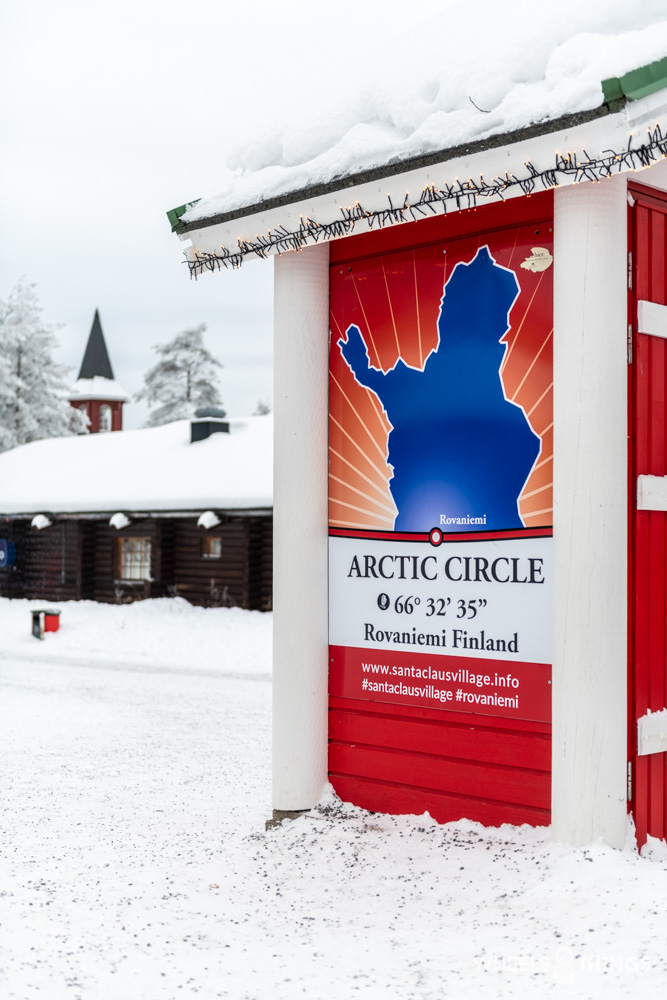
The Arctic Circle passes through Rovaniemi and so we left the Arctic further south. Rovaniemi is also the capital of Lapland.
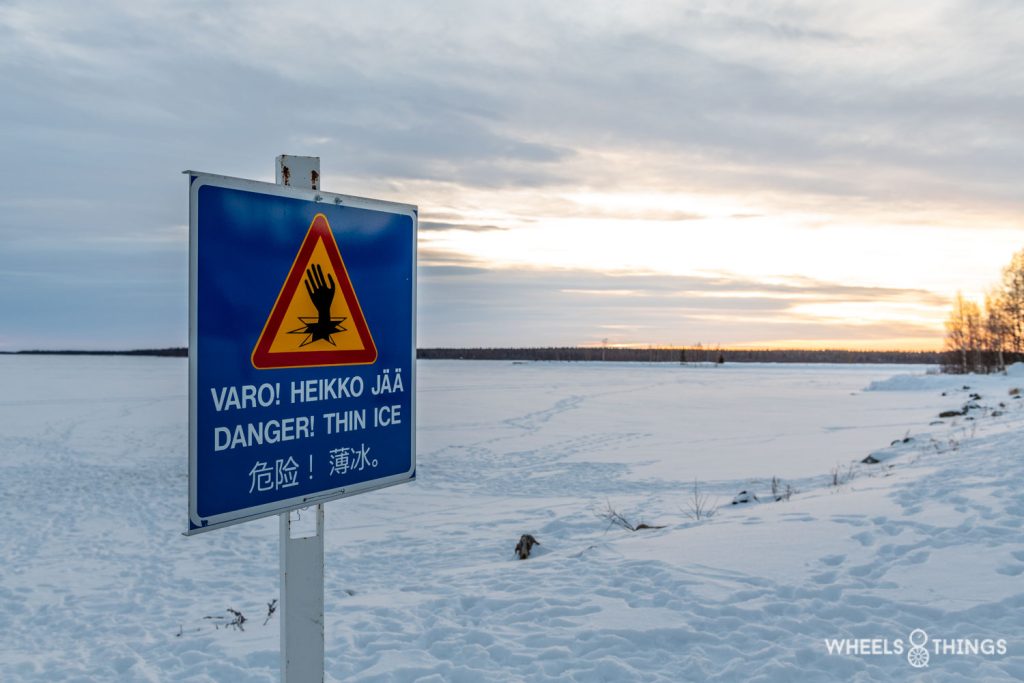
The end point for today was the Oulu region where we had rented a small but cosy cottage for the night. After indulging in Dieter’s cooking, we decided to head out to finally see the northern lights. Everything looked good, the app gave a 74% chance and the sky was reasonably open.
After walking a bit to leave most of the lights behind us, we took up position somewhere in the middle of a field.
All heads turned upwards in good spirits. The cutting wind at -7°C made Dieter and Loïc decide to seek warmer places after about an hour. Myself and Tom still managed to last an extra 45 minutes. However, we didn’t get to see any Northern Lights. That was rather frustrating as a lot of other team members had already enjoyed this spectacle. And it was even crazier when we heard that northern lights were visible in Belgium and the Netherlands at that time. Anyway, reason to come back again, right?
28-02-2023: Central Finland – Helsinki 607km
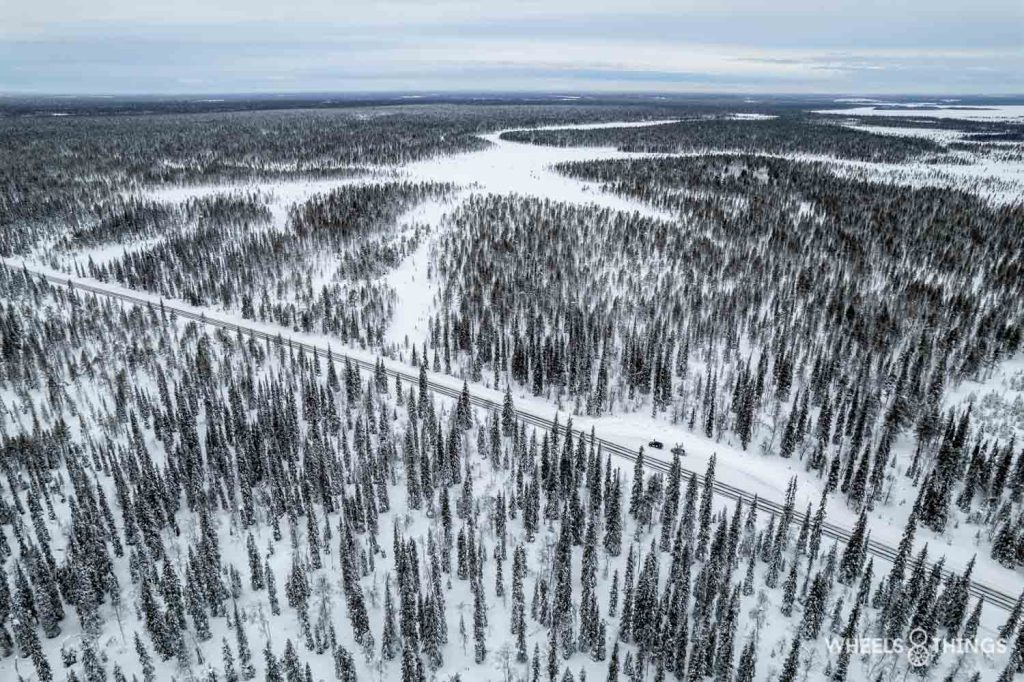
Trees, straight lanes and trees. That’s in a nutshell what we would mainly get to see today. Don’t get me wrong, it’s beautiful, even very beautiful but monotonous in the long run.
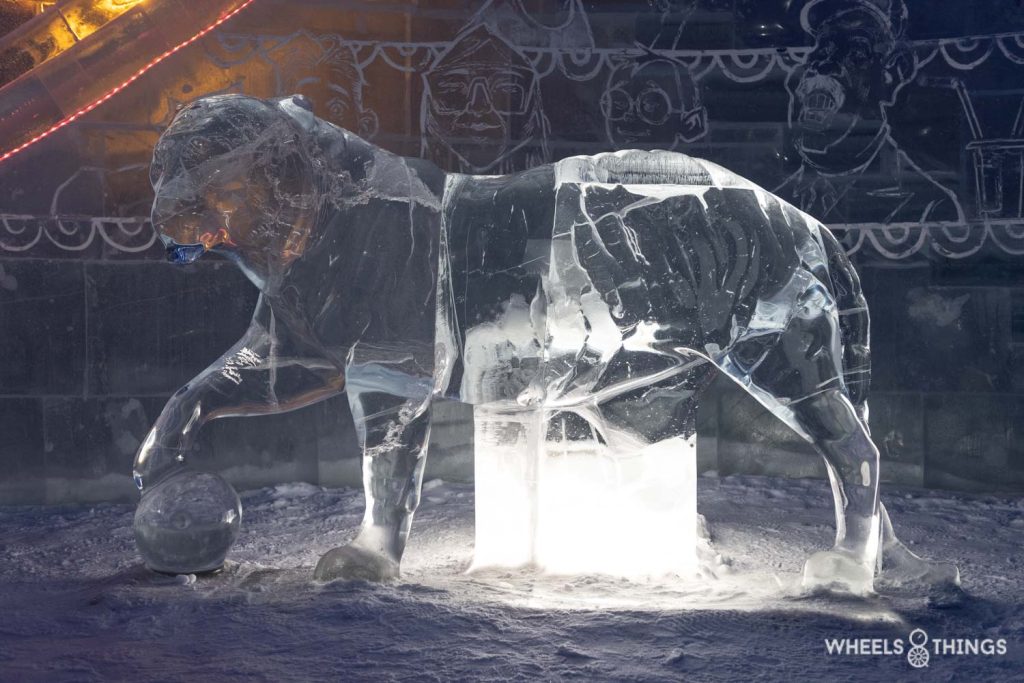
We had read somewhere about an ice hotel, so we went to visit it. It would be located in Kemi. After a bit of searching, we found a building that met the requirements. At least we thought so, instead of a hotel and bar there were a lot of ice sculptures. Pretty nice to see but not what we expected. To shake off some frustration, a snowball fight ensued.
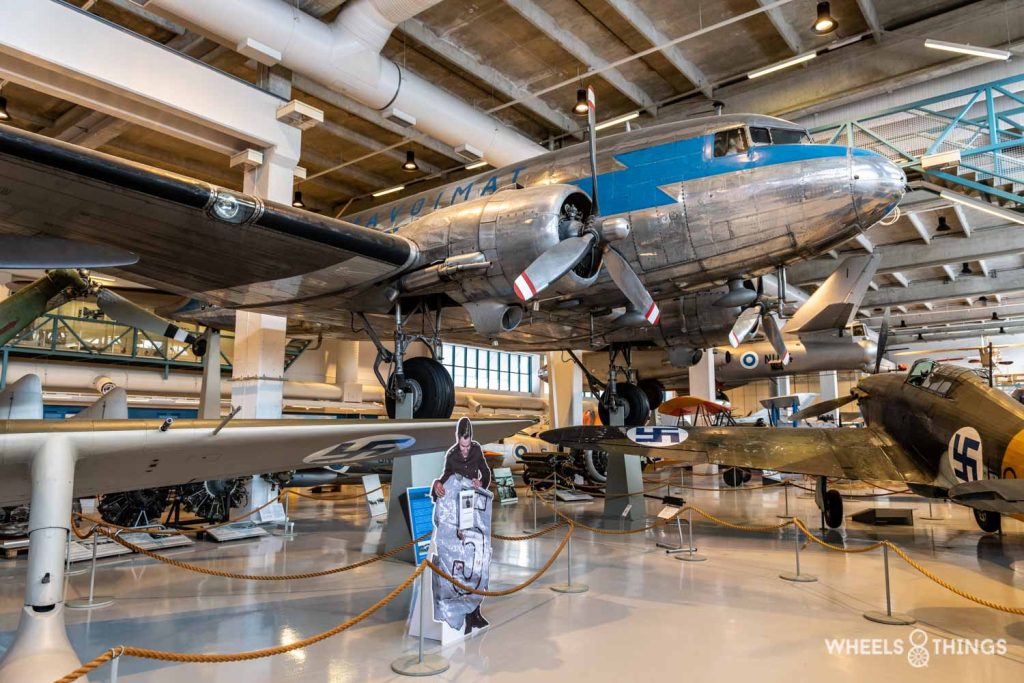
Fortunately, the roadbook provided a welcome break. It allowed us to read that Finland has an aviation museum located in Tikkakoski. A rather easy name because the Finnish language is really not easy. We spoke to a local about this too. It turns out they often have the exact same words that mean something completely different. Moreover, they have a mass of dialects that are so different from each other that they simply don’t understand each other. It even goes so far that in Lapland, all road signs are bilingual. Namely Finnish and Sami, and for a long time we thought they were two different things. That’s how very different they are from each other.
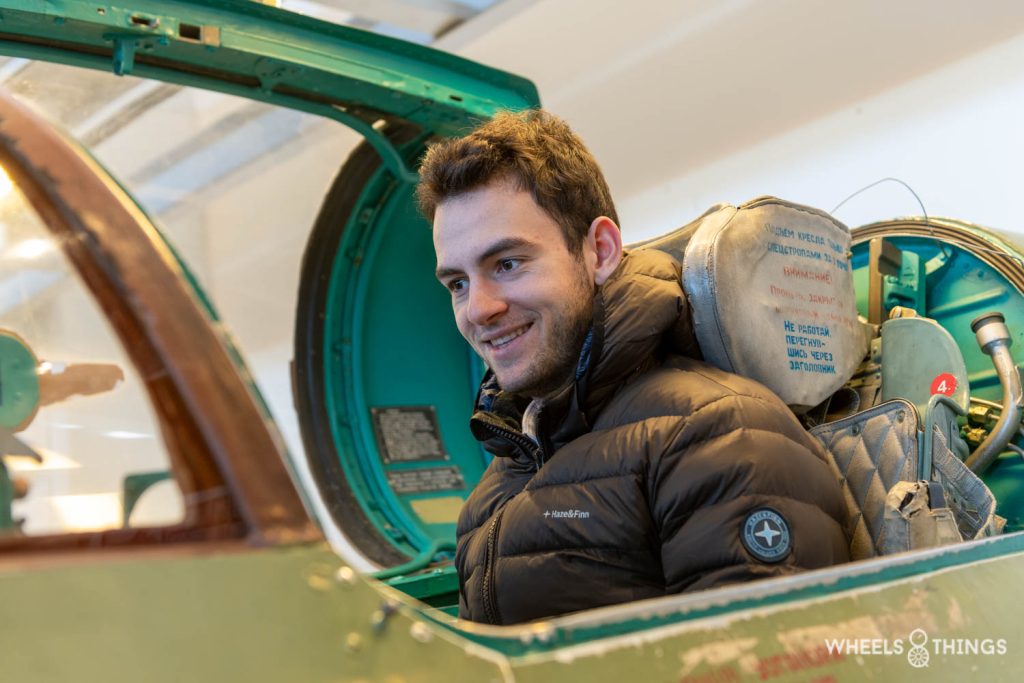
But we digress, back to the aviation museum we visited. Really worth a visit. The museum highlights the entire aviation period starting from the very first aviation pioneers to contemporary aviation. It does have a strong focus on everything to do with military aviation. In itself, it even makes that extra interesting because many of the items on display had never been seen before by all of us.
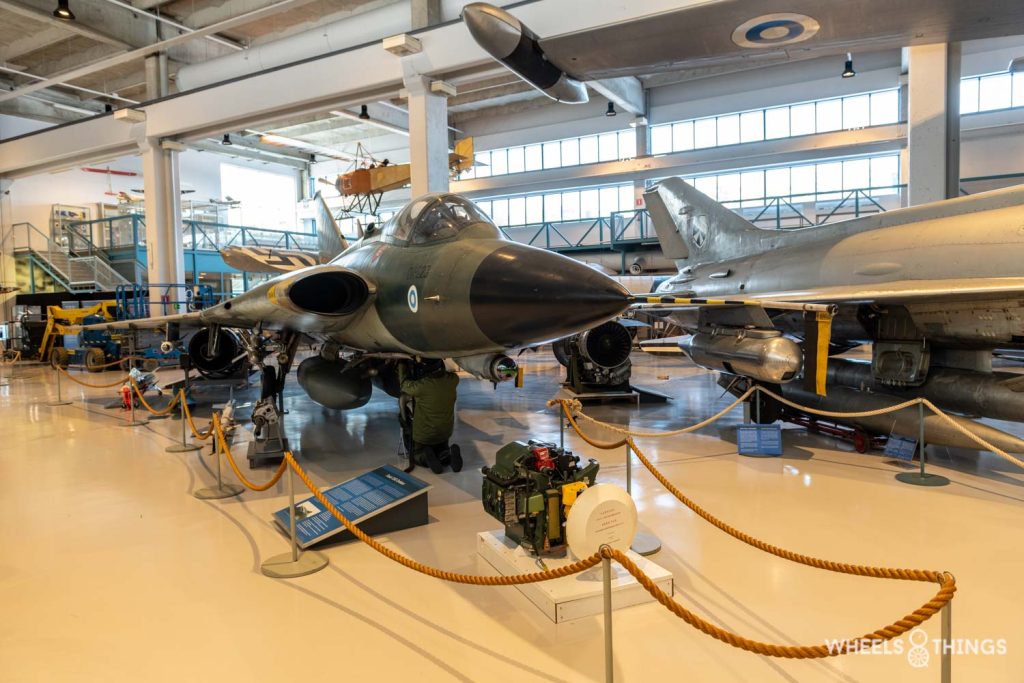
Many of you certainly remember the Saab brand. That is Swedish and once started as an aircraft manufacturer. As early as 1940, the first Saab planes flew, and even though the Saab car brand has disappeared for a number of years, it is still active in aviation. Mainly in military aviation, but very recently they released a new plane for regular civil aviation.
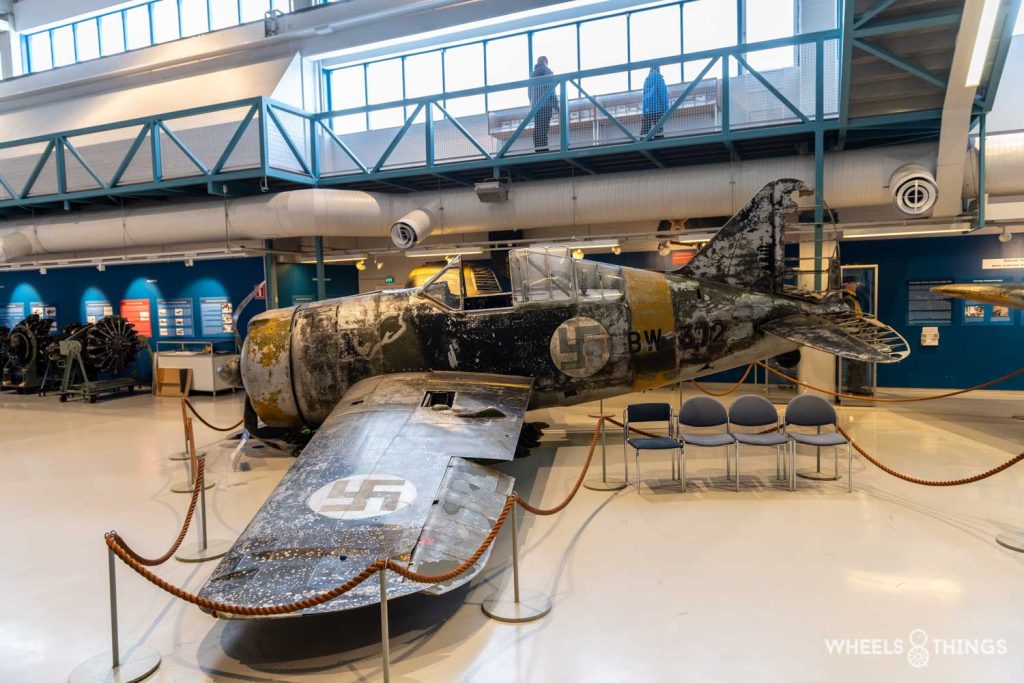
The museum has some truly unique pieces, for example, above you can see the only surviving Brewster Model 239. Apart from being the only remaining example, it also appears to be the only plane in the museum with effective battle damage.
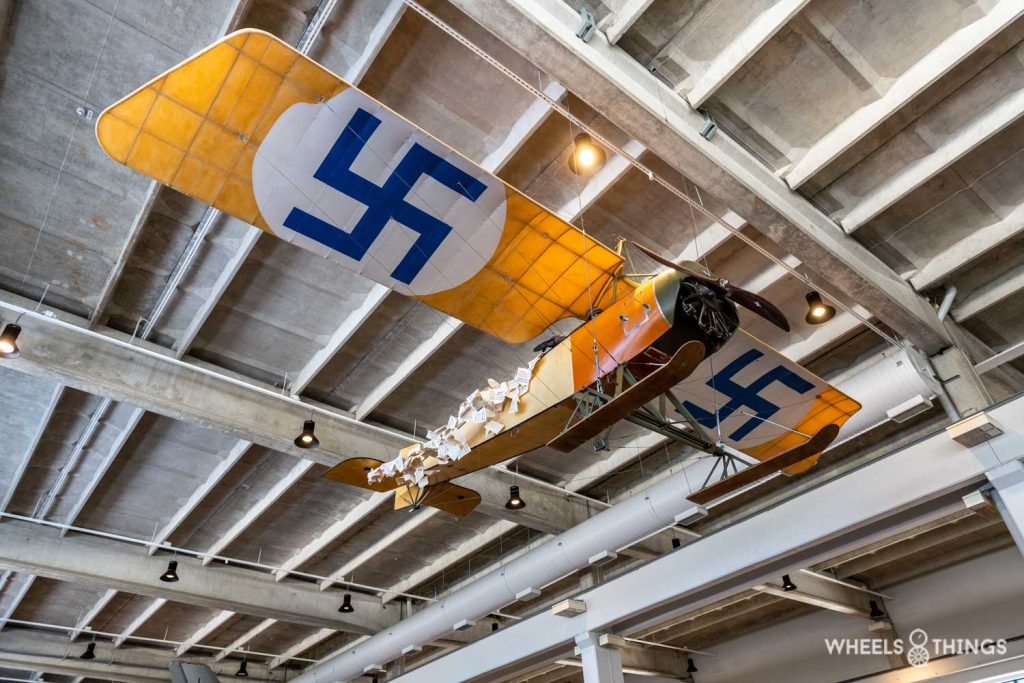
What struck us almost immediately as we walked into the museum was the presence of swastikas. Something that makes us all spontaneously think of less pleasant times. Apparently, the Finnish Air Force had the swastika in use on its fighter planes as early as 1918. So this is years before Adolf Hitler appropriated the symbol for Nazi Germany. Finland did not say goodbye to the swastika on its aircraft, uniforms and other military equipment until the year 2020. This was because there were very many comments from personnel that they were often approached negatively about it. This symbol has now been replaced by a golden eagle in a circle of wings.
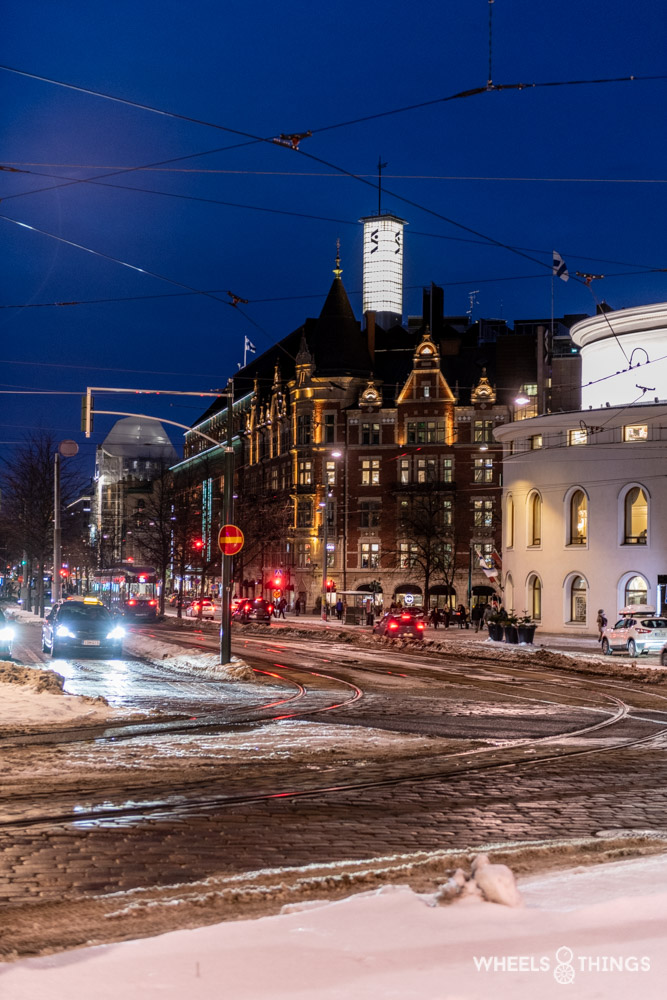
We continue towards Helsinki. Finland’s capital has around 600,000 inhabitants, including agglomerations it even runs to around a million. That also makes about a fifth of Finland’s total population live in or around the capital.
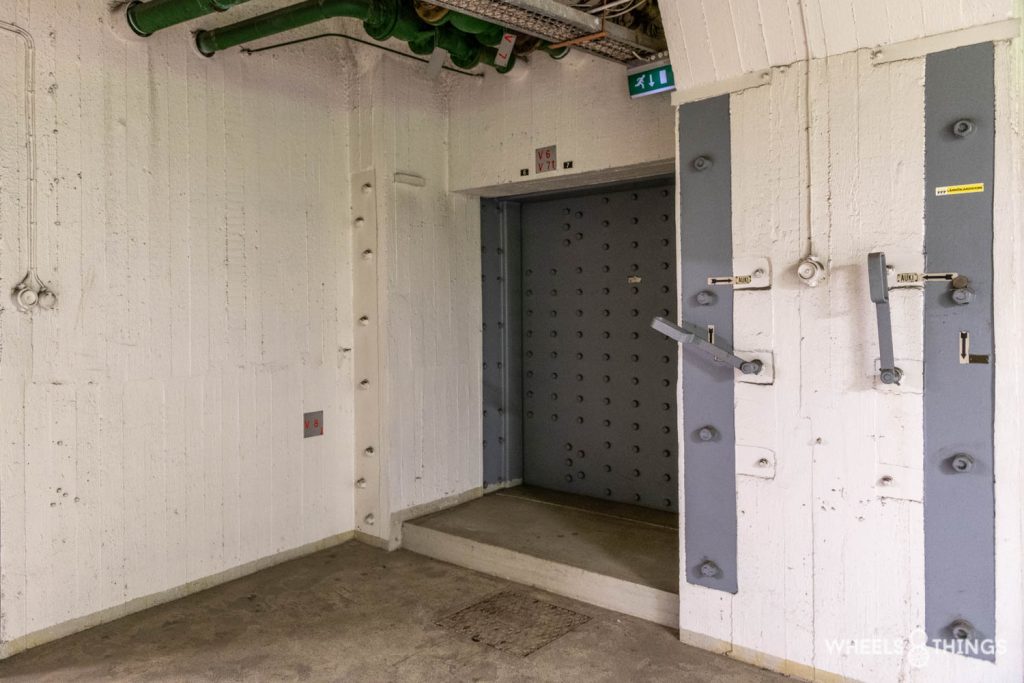
Above-ground parking near where we were staying was not an option so we looked for an underground car park. There was one barely 100 metres away on foot. As we exited the car park, we noticed that the doors were very thick and the entire area was apparently hermetically sealed. According to us, a relic of the Cold War although we found no evidence of this.
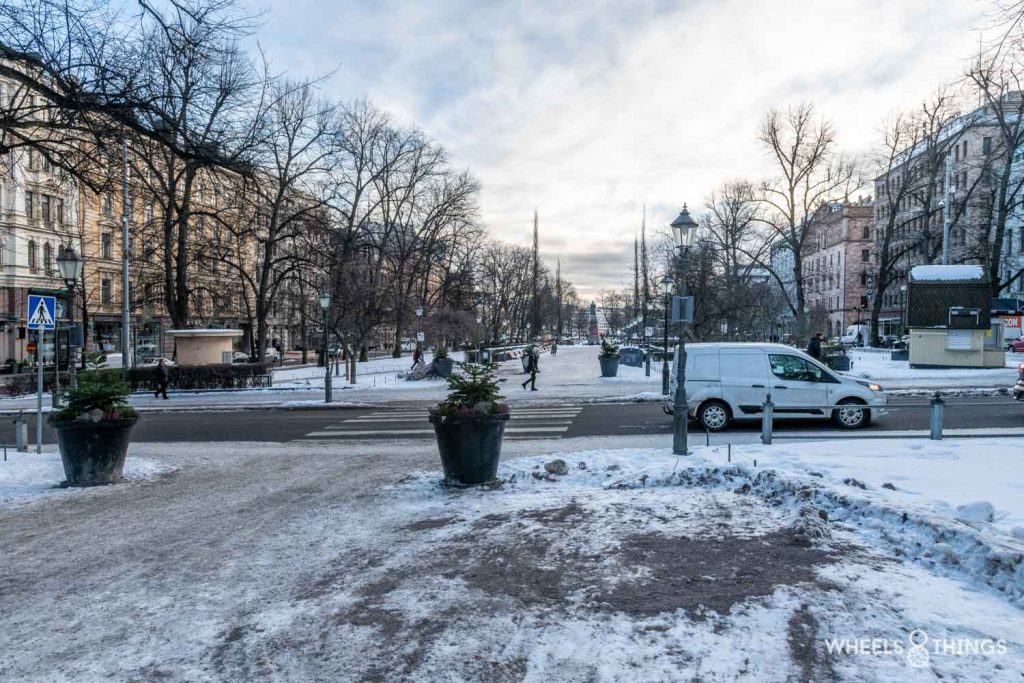
Helsinki is an open city with wide lanes and striking buildings. The city also gave us all a very pleasant impression and for me personally it is definitely on the list to come back one day. If I haven’t mentioned it before, it’s fair to say that we didn’t mind the culinary throughout the trip. By the way, if you stay away from alcohol in the Scandinavian countries, you can eat very good and still quite affordable.
01-03-2023: Helsinki – Tallinn – Riga Latvia 424km
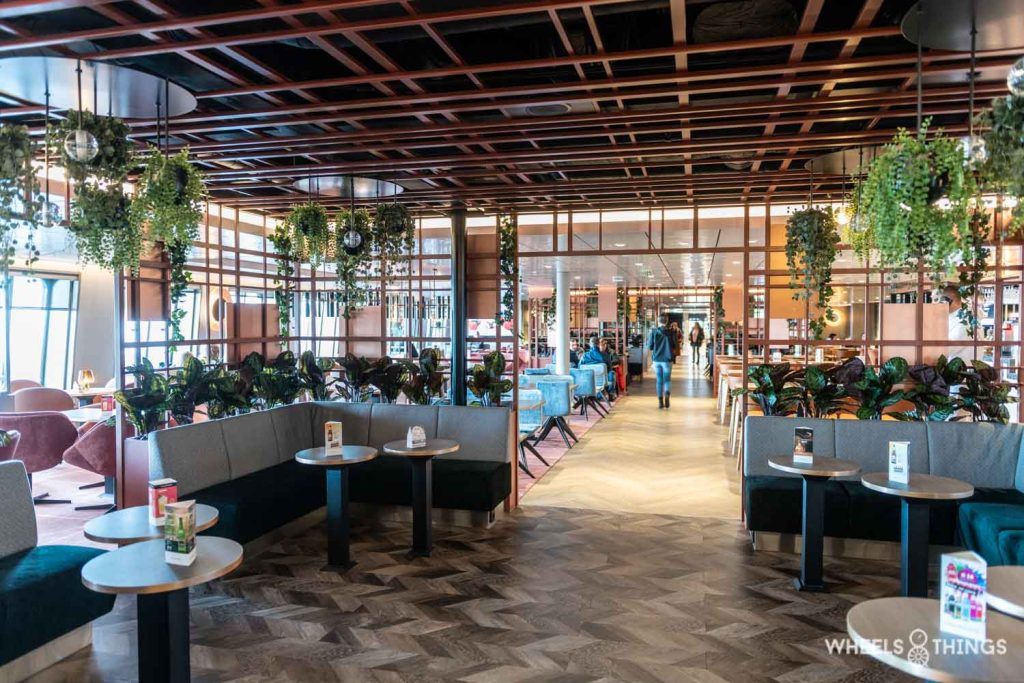
Today we take another ferry, this time from Helsinki to Tallinn. A ferry is actually an understatement because we end up in a real cruise ship. Amazing, though, because the crossing only takes a good two hours. You won’t hear us complain, the ship was 220 metres long and had seven levels. Apart from a duty-free shop, several bars and restaurants, it even had a real Burger King. After a quiet crossing, we arrived in Tallinn Estonia two hours later. The city has a population of almost 450,000, which is at once a third of the total population. The three countries we are now visiting, also called the Baltic States, are rather small countries with limited populations.
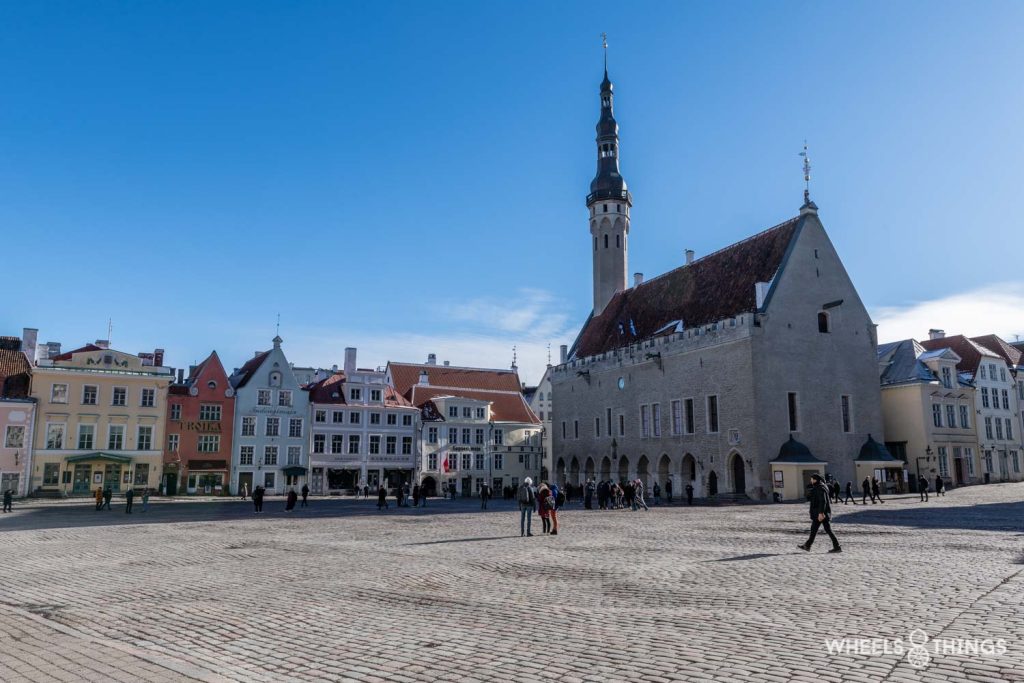
Tallinn came across as a very pleasant city, especially the old part we visited. We visited a small church and walked around the city to soak up the atmosphere. At noon, we took lunch at a kind of cafe/brasserie ‘Old Estonia’. As a local speciality, pig’s ears were on the menu. We passed and wisely took something that seemed more familiar to us.
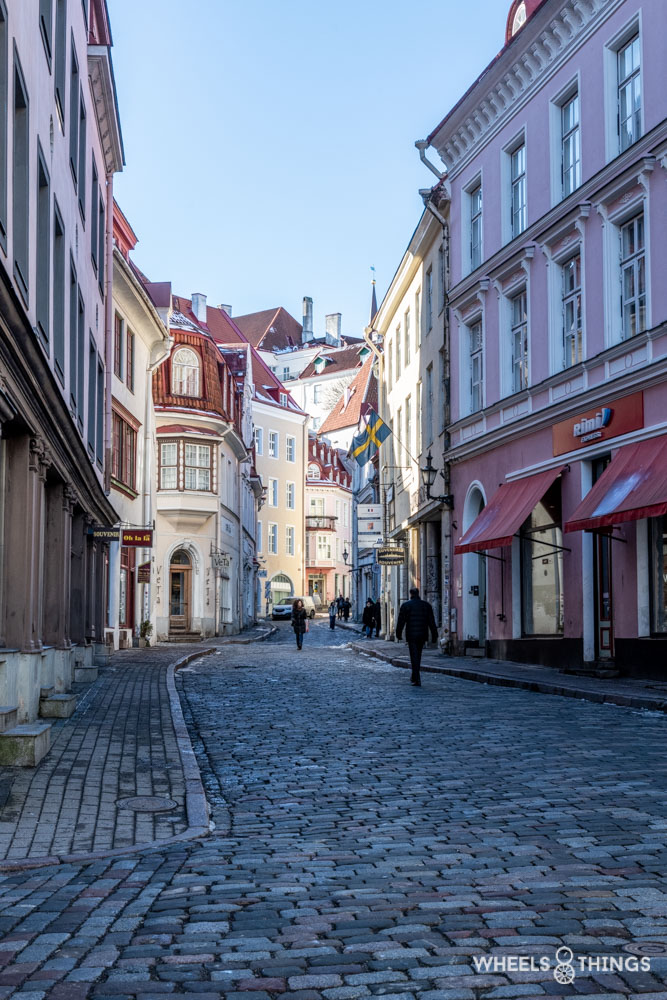
The goal or task for today was actually getting together with the other members from the group. However, this ran over a period from 1pm to 9pm with the intention of spending the night in Tallinn. We decided to drive on towards Riga Latvia after lunch. The intention was to spend the night there and take ample time to visit the city the other day.
On the way to Riga, we would pass the abandoned prison of Rumu. This was also in the road book and since I had already seen pictures from previous editions, I wanted to stop there.
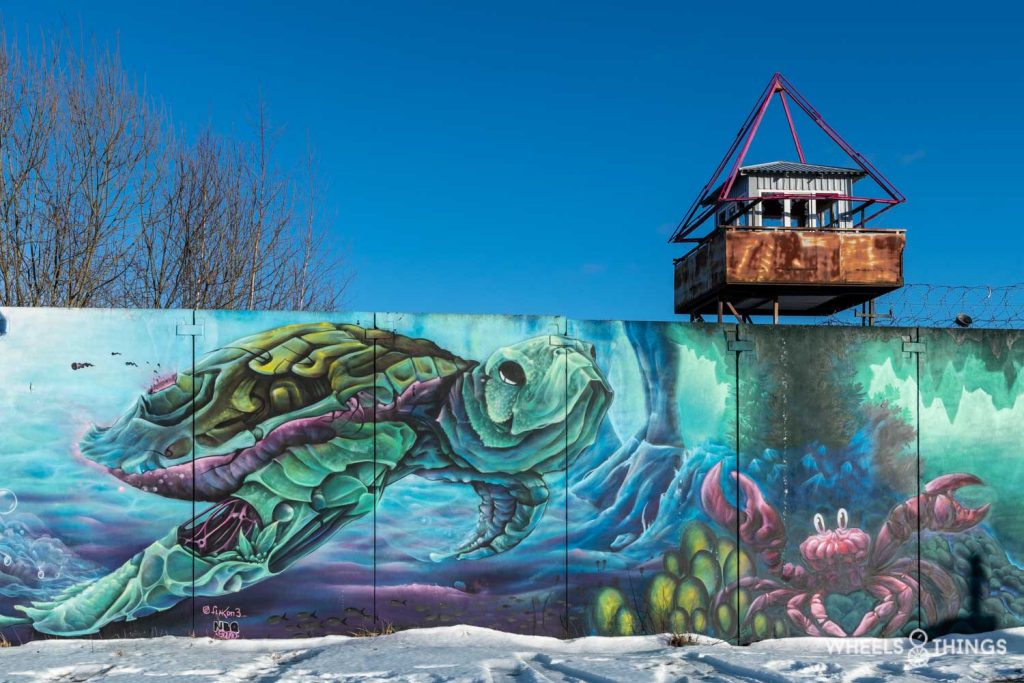
After some searching, we found the lake in which the prison stands. The old building is surrounded by water or, as now in winter, by ice. There are no signposts so we drove towards the lake where we saw ice fishermen sitting. After some hesitation, we drove left with the intention of driving around. Since there was only snow and not much of a road, the inevitable happened.
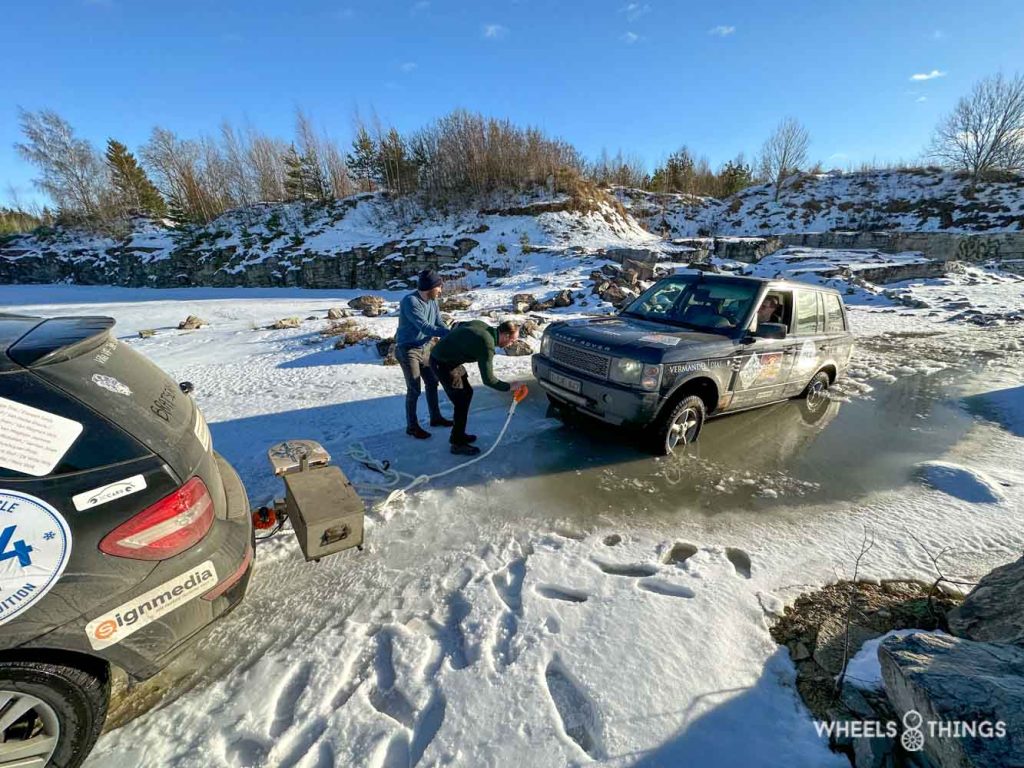
Big George went through the ice with his rear wheels. It was probably nothing more than a large puddle with too thin a layer of ice on top as we had rocky outcrops on both the left and right. But we were stuck and putting the car up or in low gear, nothing helped. Fortunately, team Gonzo was nearby and they were able to drive around along the other side. Provided a little effort and a kinetic tow, they were able to pull us out.
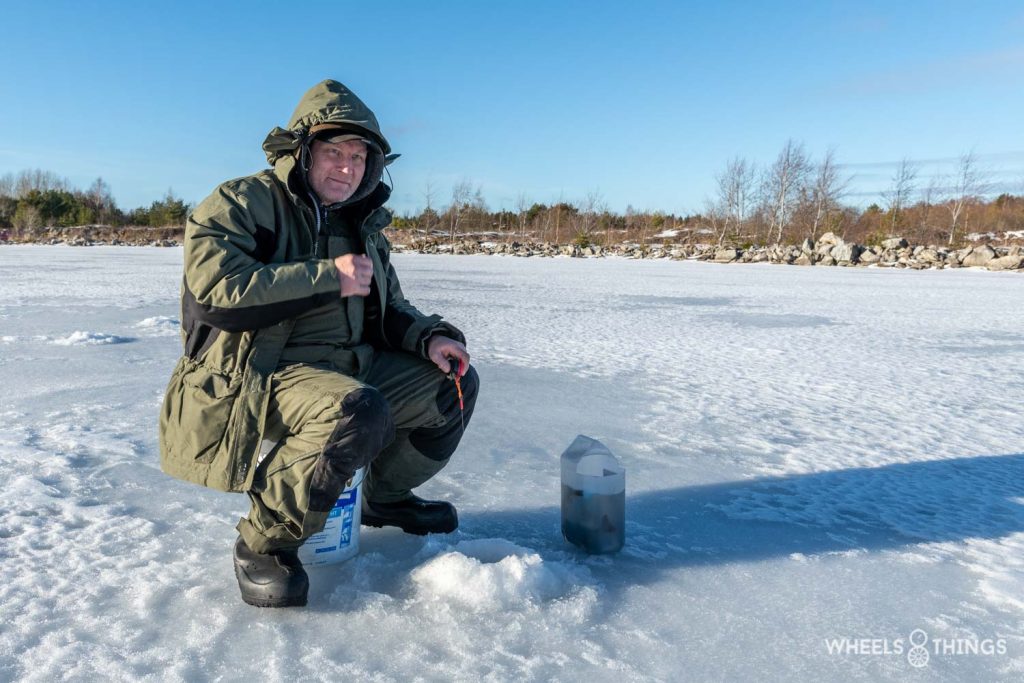
To recover for a while, we went out onto the ice towards the fishermen. They were drilling a hole through the ice with a large ice drill and fishing with a tiny fishing line for fish that looked like Roach. The fisherman had a plastic container with him where there were at least about 15 of them already. However, they were all only a good 10cm in size.
As far as we could communicate with the man (he spoke Russian he said), he let us understand that this was a daily activity to provide food. When we asked where the prison building was, he showed us the way across the frozen lake. After the tomfoolery of a moment ago, we decided to go around anyway and drive on the normal road until we reached the entrance.
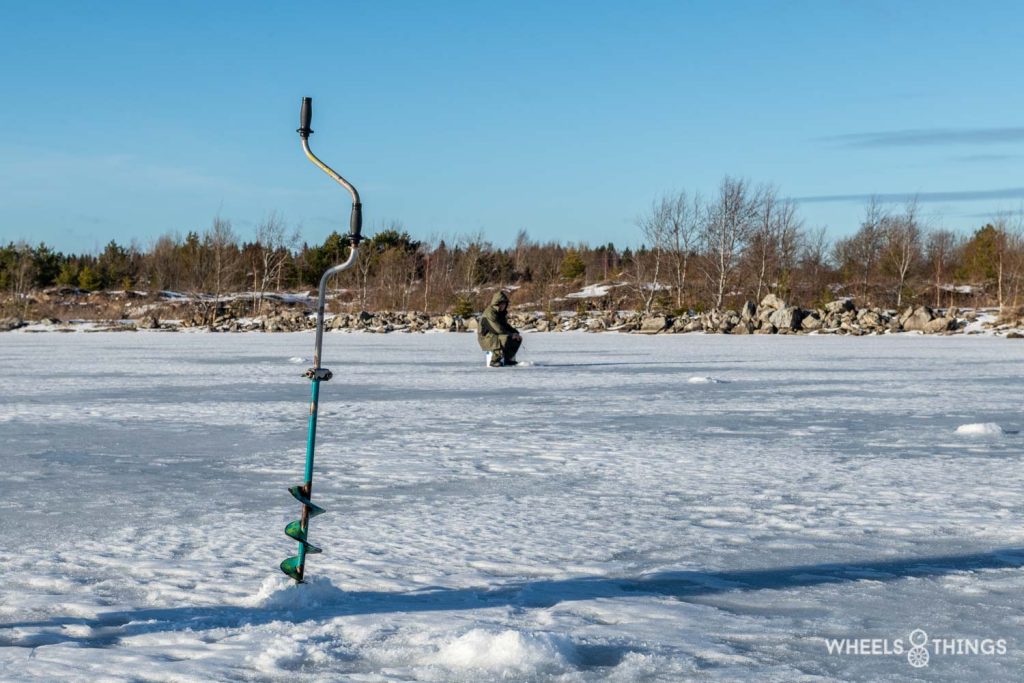
And yes, back on the road a good 500 metres further on there was a ramp to the Rumu prison. Which turned out to be closed… Either they don’t want us or they want us to come back everywhere. So since the place was closed I thought I would fly over it with the drone. As a drone pilot, you should always check whether you are actually allowed to fly at that location. And what did you think? We were in a military zone. Believe me then you better not fly because they usually don’t make fun of that. First through the ice, then a closed site and on top of that not allowed to fly. So it was time to get in and drive towards Riga and get something tasty to eat.
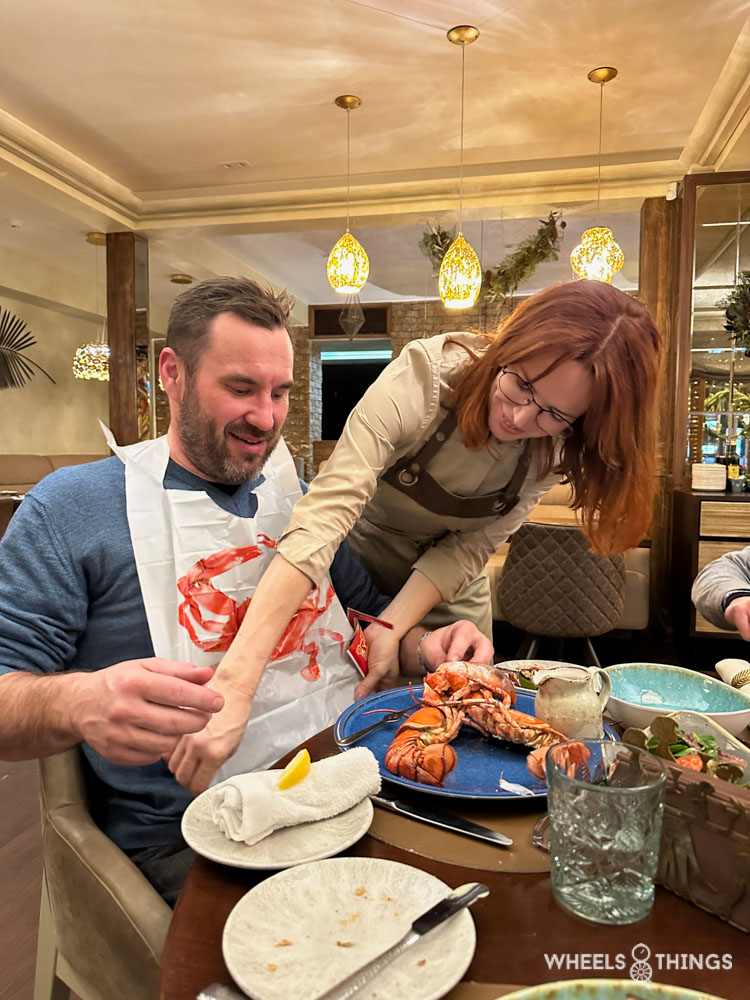
And that good food did work out because Dieter turned out to have an acquaintance in Riga who had given a tip on a good fish restaurant. Dieter feasted on a delicious lobster while we kept it rather modest with a tuna steak, among other things. The desserts were real paintings that not only looked good but were also really delicious. All these delicacies cost us barely a quarter of what we would pay here in our region. It’s a bit far to drive back and forth to eat because otherwise we would do it.
Our hotel was also a real bargain. A brand new design hotel with a very extensive breakfast and this for €56; for two people.
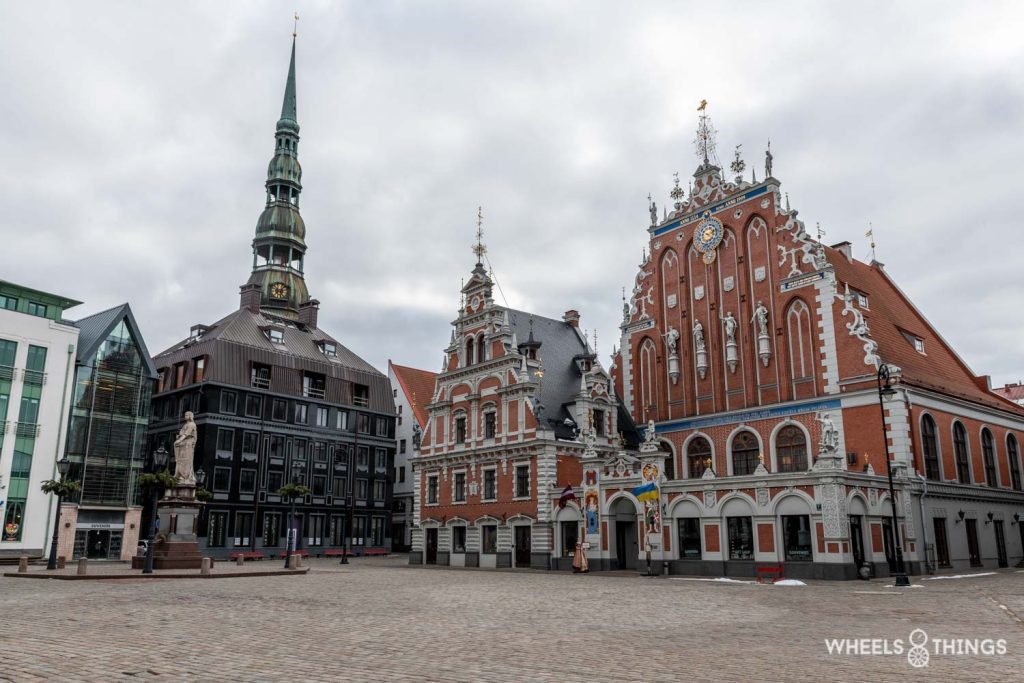
Parking in the city was a bit weird, the atmosphere was different from the Scandinavian countries anyway. Not that we felt unsafe, but you could see from many things that people here have a much harder time than in, say, Finland. So when we pulled into the car park, a man came out of a wooden shack barely one and a half square metres big (I have no other name for it). The man asked us how long we were staying. When we said until tomorrow, we were given a ticket, allowed to pay 15 euros and our cars were guarded 24/24.
02-03-2023: Riga – Kaunas Lithuania 340km
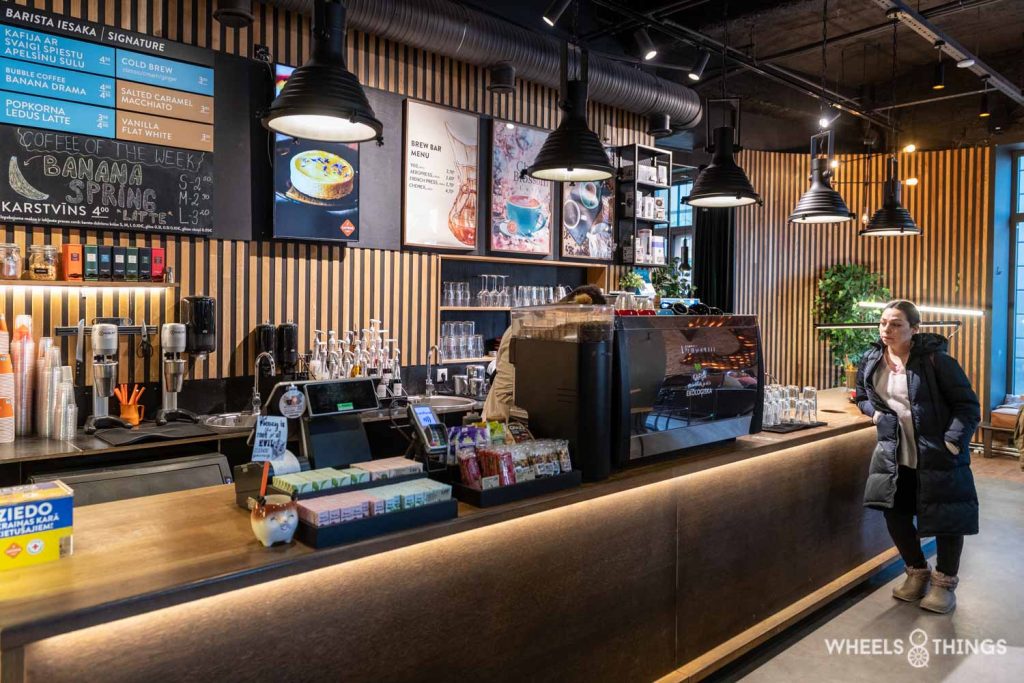
Got up and enjoyed a delicious breakfast after which we headed into town. Throughout the trip we were always up early. Often because there was almost no other way because of the distances to cover. Today, however, was different; we really had all the time we needed. However, it turned out we were still too early everywhere, as most businesses only opened at 10 am. So time for a cappuccino in a trendy coffee bar, it’s holiday for something.
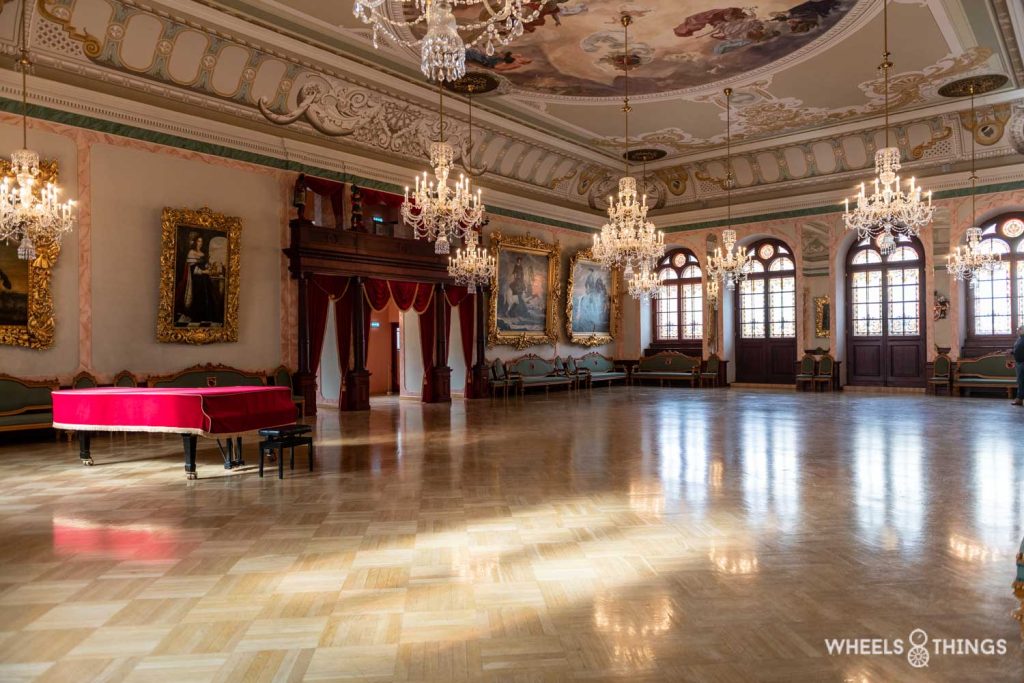
We visited the Zwarthoofden House. This building was built in the 14th century by the brotherhood of the Zwarthoofden, a guild for unmarried German merchants in Riga. If you ever visit the city, it is well worth a visit.
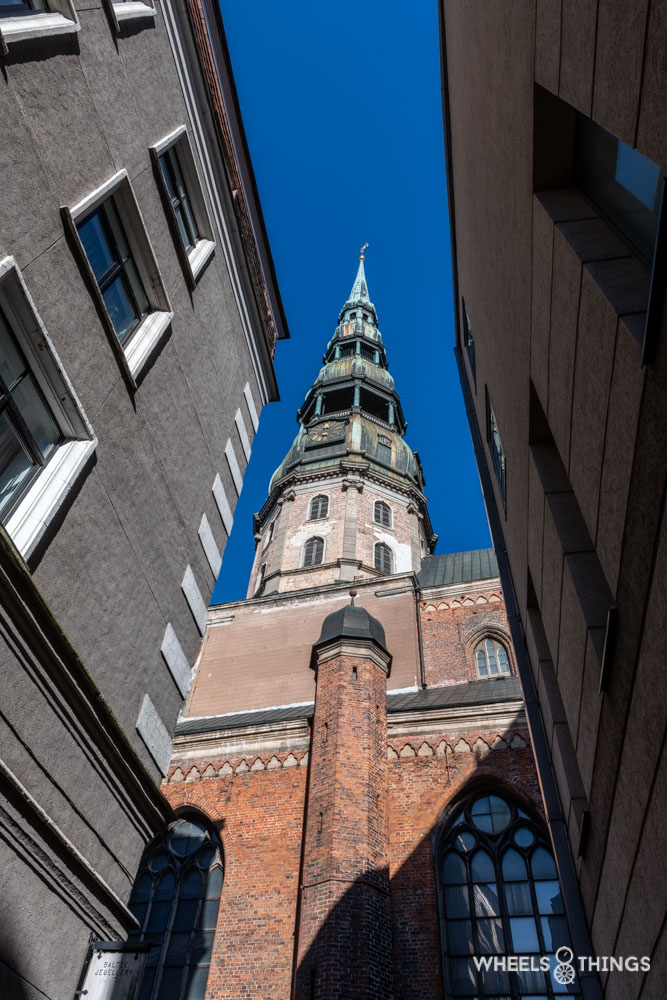
We then headed to the Petrikerk. This Lutheran church is dedicated to St. Peter and now used by the Latvian Evangelical Lutheran Church. The building, or rather the first signs of a church on this site date back to 1209. The tower rises 72 metres above the city and an old lift takes you all the way to the top in no time.
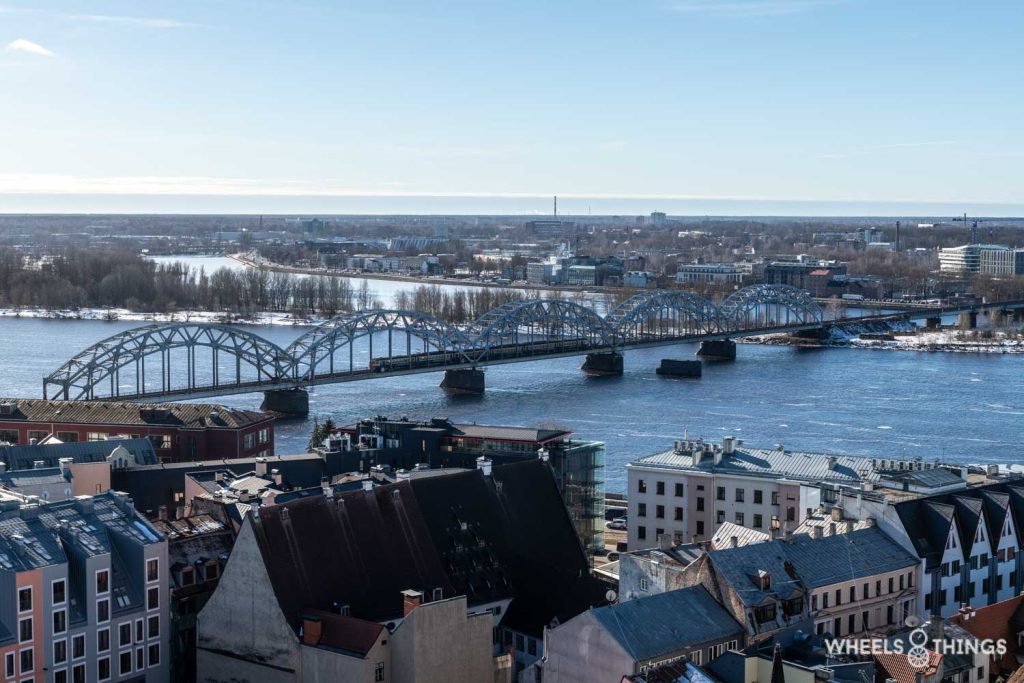
Again, we were lucky with the weather and were able to enjoy a magnificent view of the city. The many bridges over the Dvina shows the size of the city, which with over 640,000 inhabitants is the largest city in the Baltic States.
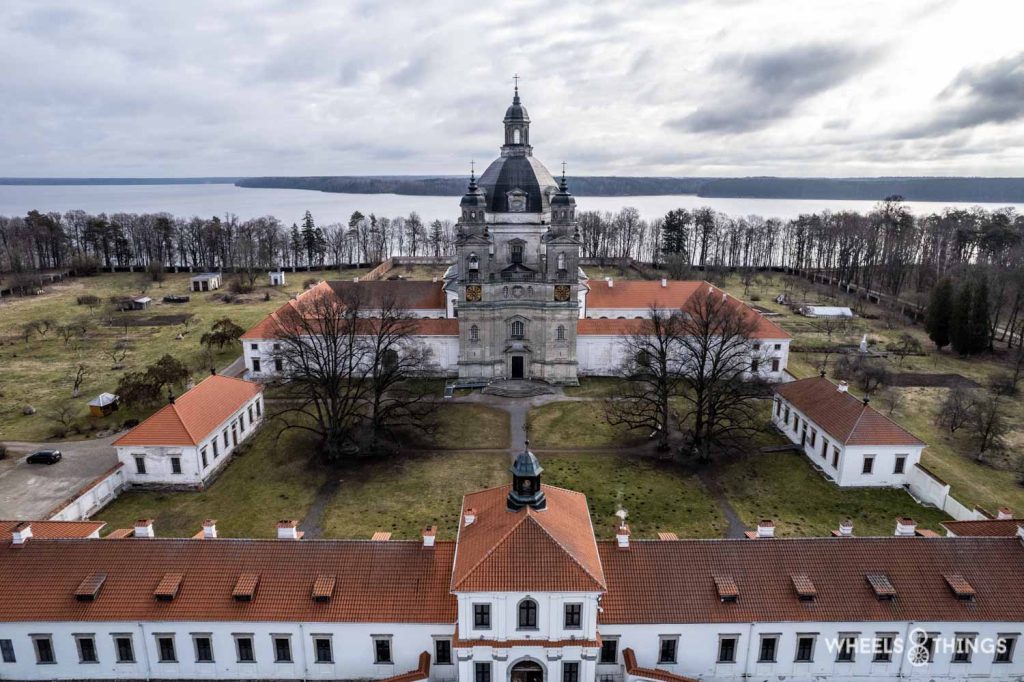
After this cultural excursion, it was quiet time to head towards Kaunas where we would spend the night in a former monastery.
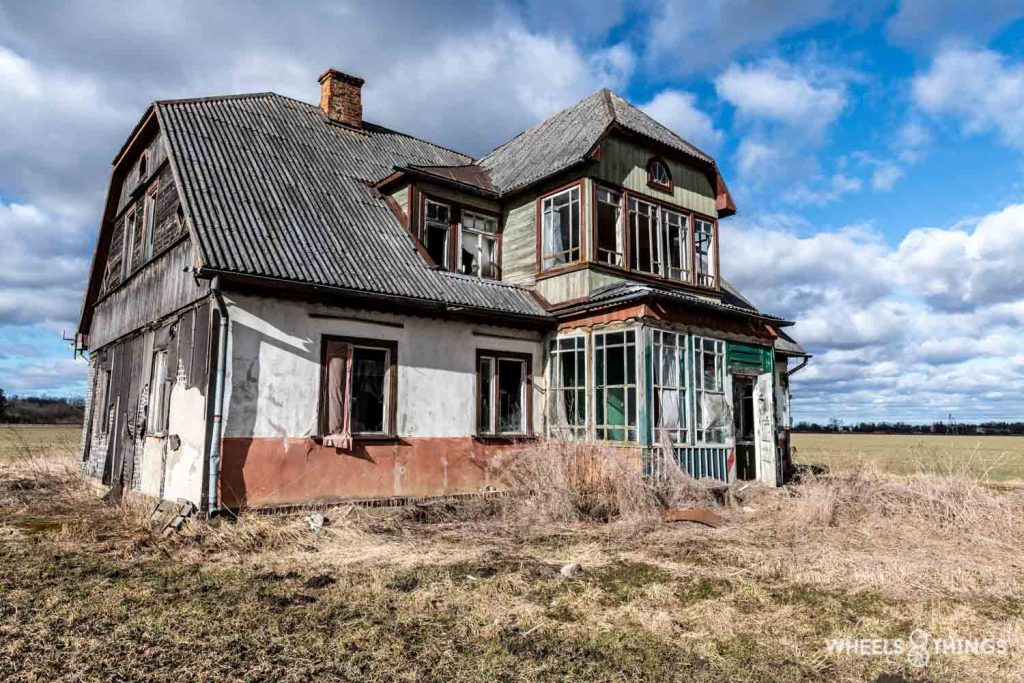
As we drove further, we noticed the regular appearance of dilapidated houses. Urbex has always appealed to me so at some point we stopped at a rather large dilapidated house. Everything was open so me and Tom went exploring. Always be careful where you walk as the place was full of glass and other rubbish. The house had clearly been abandoned for a long time and had been used several times for things other than traditional habitation.
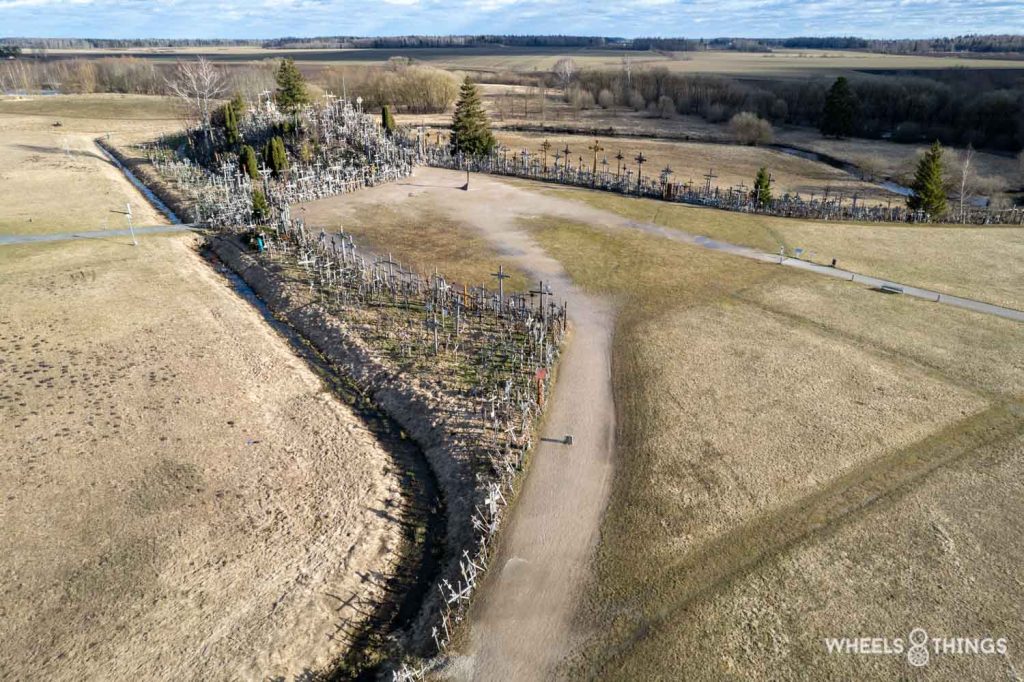
Continuing towards Kaunas, we were supposed to visit the Hill of Crosses as the task of the day, according to the roadbook. The first crosses would have been placed here on the former Jurgaiciai or Domantai defence hill. This is said to have happened after the November Revolt in 1830-1831. You will find not only crosses but also crucifixes, statues of the Virgin Mary, chains, paternosters and other memorials.
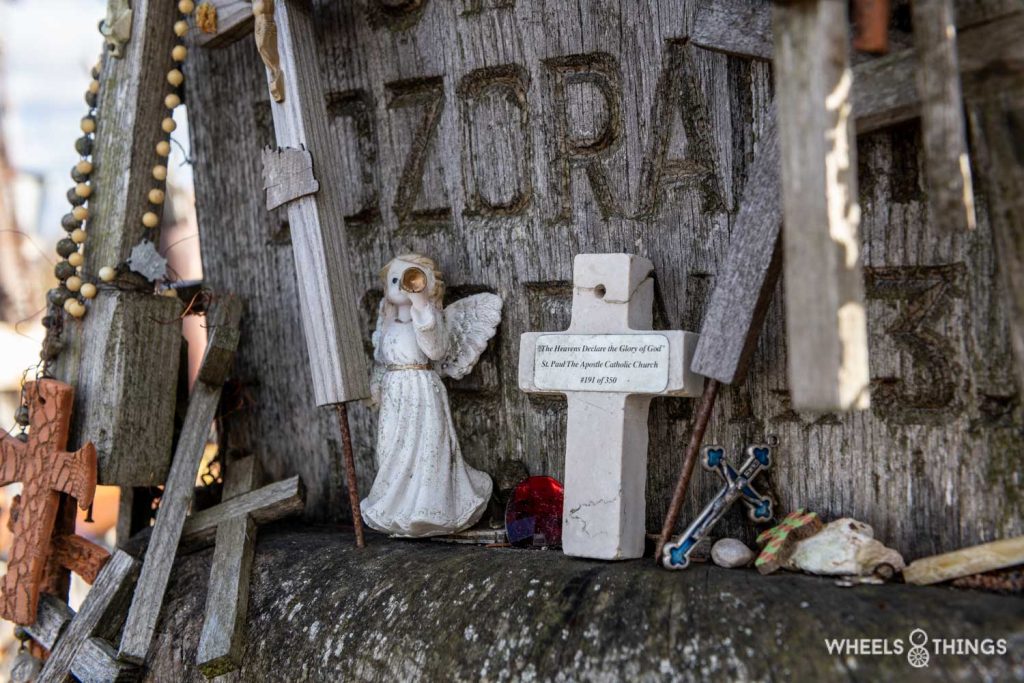
We even found crosses with relics in them like a bottle of dried blood or bags with hair in them. The hill has endured a lot over the years. In fact, Lithuania has been occupied by Russia several times in the past. During the 1940s-1990s, the Kryziu kalnas took on special significance. During that period, Lithuania was occupied by Russia but the population kept coming to the hill. The Russians flattened the hill with bulldozers up to three times. However, the Lithuanians kept coming back with their crosses.
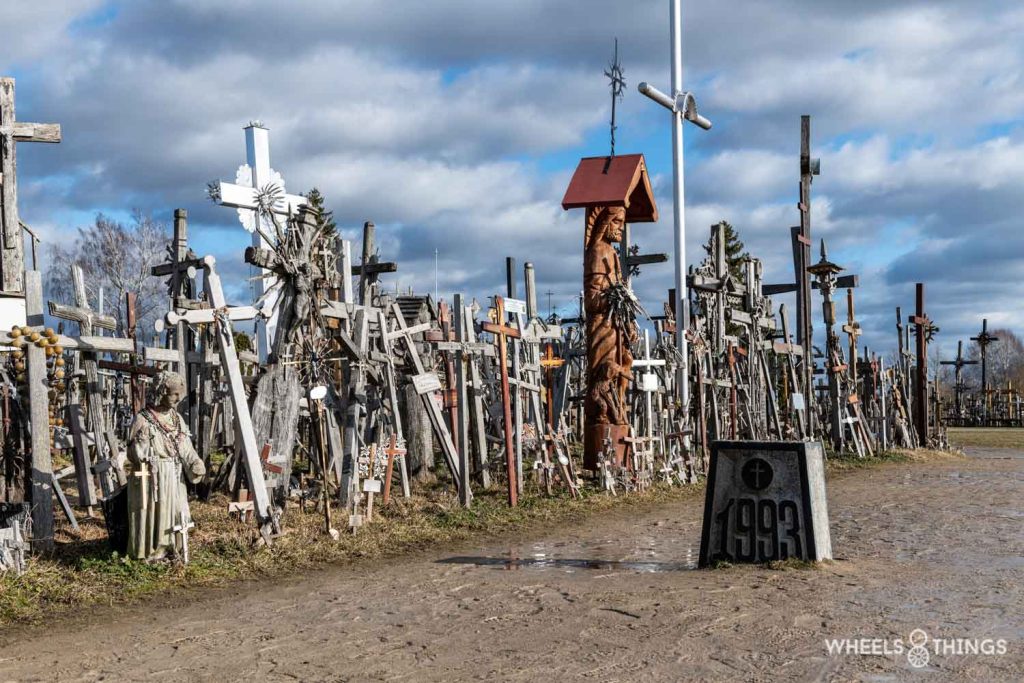
In 1993, Pope John Paul II visited the hill of the cross and named it a place for hope, peace, love and sacrifice.
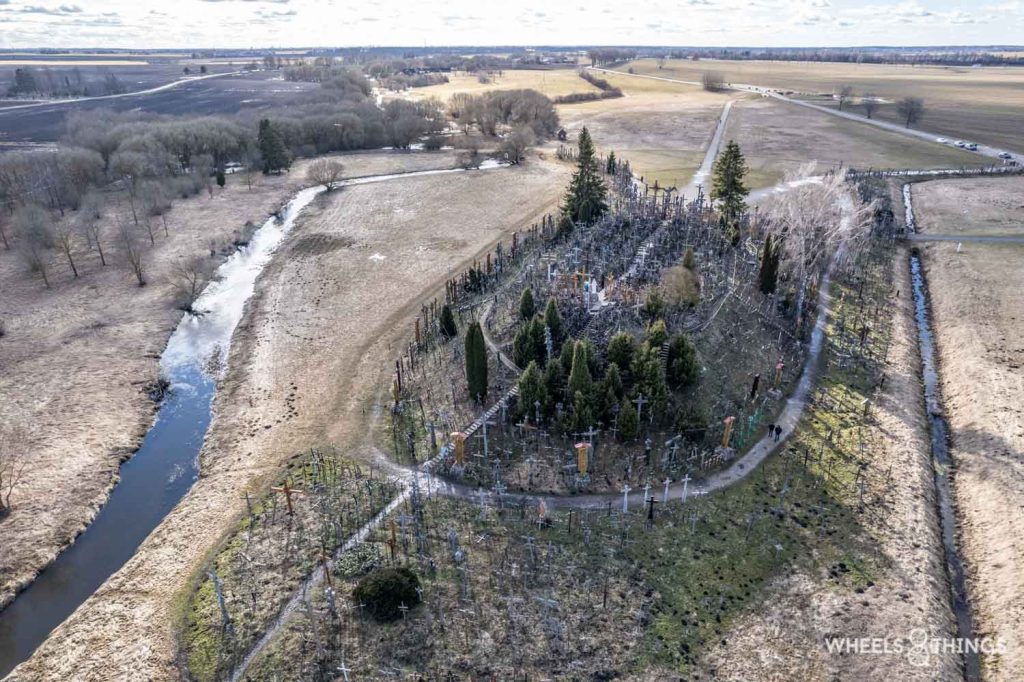
Currently, there are said to be more than 200,000 crosses and more are added every day and this from all over the world. People also brought crosses when we were there. Surely a place that left some impression on us.

After checking into the monastery where we would spend the night, we went into town in search of something to eat. For once, we hadn’t booked anything and on a Friday night, that turned out to be not very wise. Getting rid of the car was not easy and finding a place in a restaurant proved to be quite a challenge. Since the perseverer always wins, we were able to head for our sleeping place quite some time later.
03-03-2023: Kaunas – Warsaw Poland 438km
Waking up in a monastery, it’s something different. Especially when you are served a menu at breakfast. Breakfast turned out to consist of three courses, served at the table no less. Dieter had a little trouble with the Hollandaise sauce over his delicious poached egg on a bed of spinach. I really enjoyed it, as did the toast with smoked salmon and the delicious dessert. Yep, dessert at 7.30 in the morning. My day couldn’t have gone wrong already. Now before you collectively start thinking it’s over then I can inform you with a smile that for the four of us to sleep including three-course breakfast we paid the full €119;.
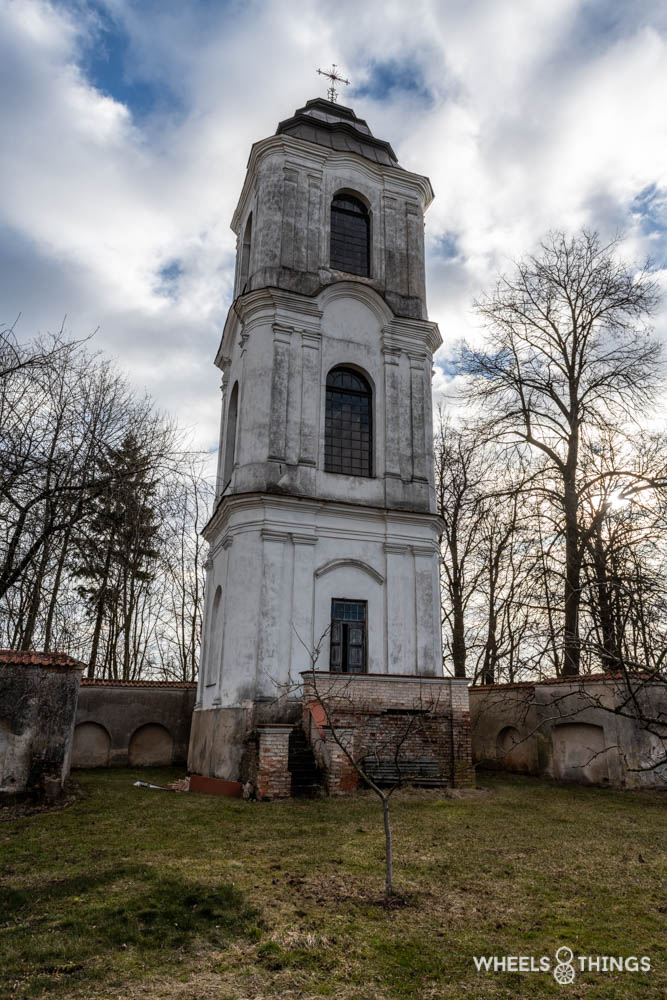
After the overnight stay, we naturally wanted to walk around the monastery grounds. Visiting the site was only possible from 10am but when we walked outside, an old woman opened a gate and signalled for us to enter. She walked on without looking back and left us to ourselves. What do you do then, walk around. So we went through a gate, through a garden towards an old tower. The door was open so we went inside and even all the way up. Until Dieter said ‘I think we have company coming’ so we quickly went downstairs. Coming down just in time we heard Tom say ‘do you speak English?’ (Tom is afraid of heights so he had stayed downstairs). Whereupon the woman launched into an unintelligible tirade that required no understanding of Lithuanian to understand that we were not wanted there and had to leave immediately. Anyway, we had seen that again.
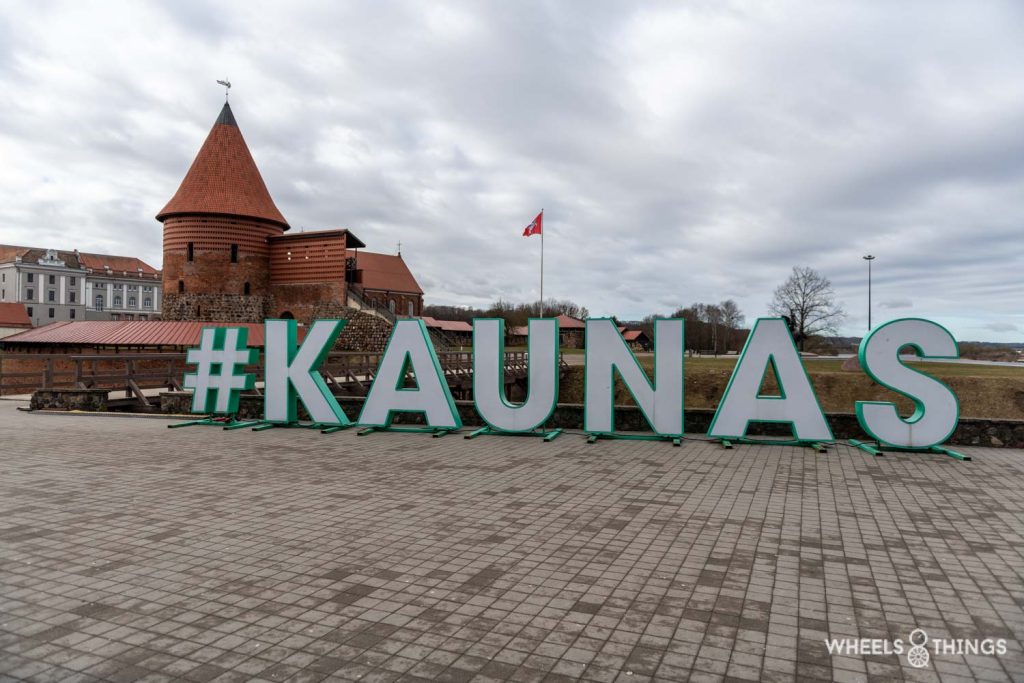
We also spent some time visiting Kaunas. We noticed that this is a very well-kept city. Lots of renovation, beautifully maintained buildings and friendly people. For instance, I spoke to someone on the street to ask what life is actually like in Kaunas and by extension in Lithuania. It was a young mum who was out and about with her baby and who fortunately spoke reasonably good English. Because in the Baltics, that is remarkably harder to find people who speak a little English. In the Nordic countries, this was just taken for granted.
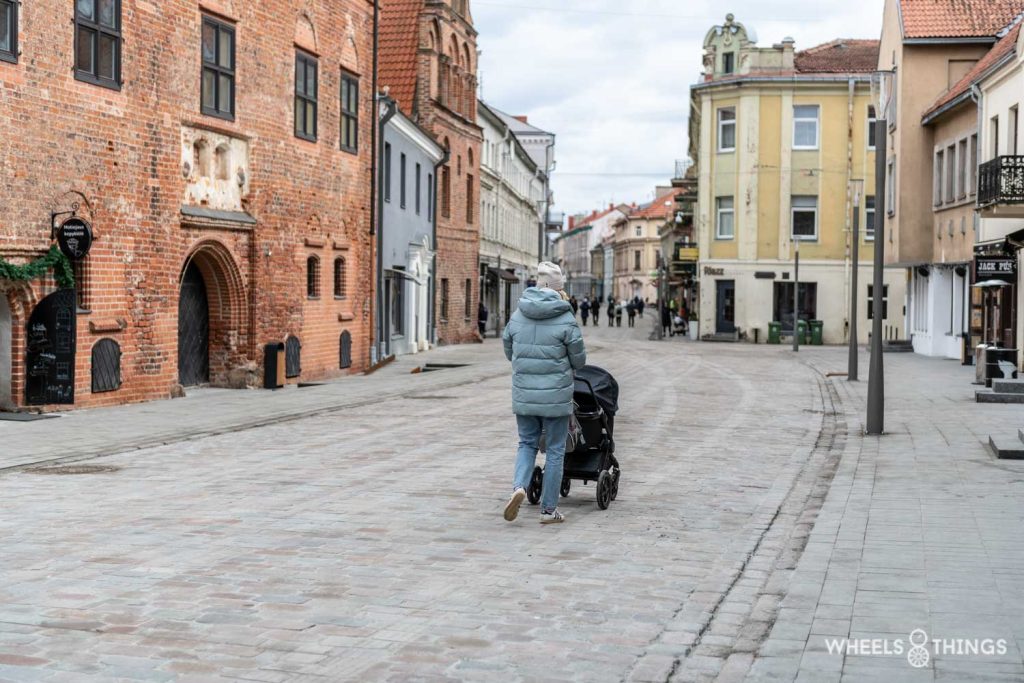
She managed to tell us that life was good in Kaunas and that, according to her, the country was doing quite well. There also appears to be a labour shortage and virtually no unemployment according to her. The country also provides a social system should you find yourself without a job. But it is limited in time, so maybe they can learn something from it here.
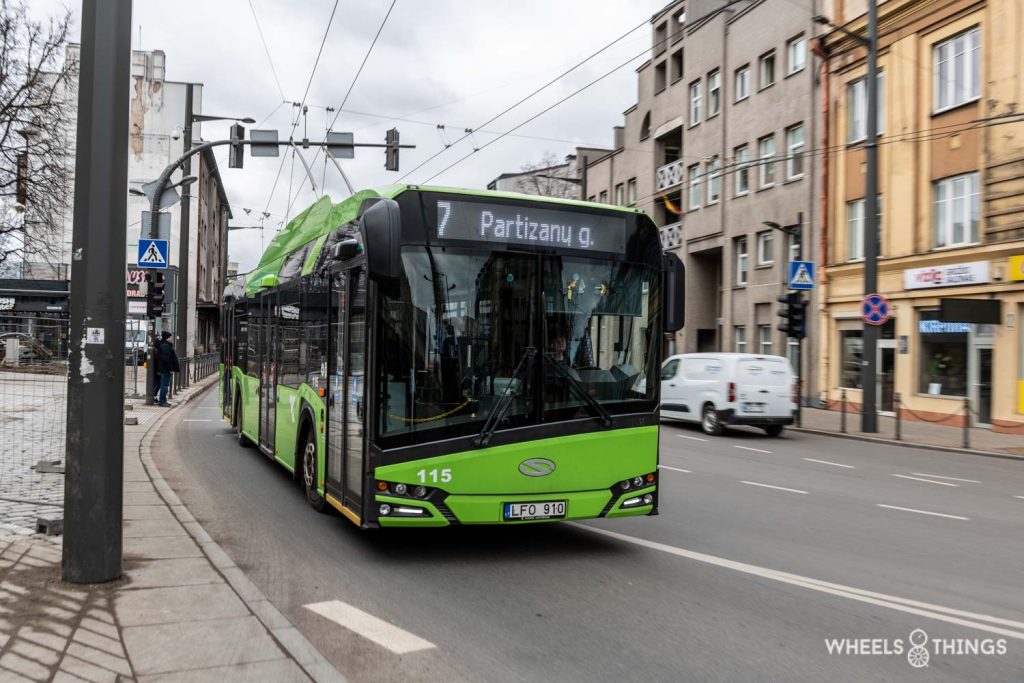
The city is also full of statues and Loïc saw trolley buses for the first time in his life. We also noticed a universal phenomenon, we saw municipal workers checking manhole covers. One man worked and the rest watched, where else have we seen that ????.
From Kaunas, we stopped following the roadbook. We were supposed to drive through the top of Poland towards Hamburg for the finish. However, we decided to ride a bit more towards home, thus surprising the home front by coming home a day early. So we drove towards Warsaw, the capital of Poland.
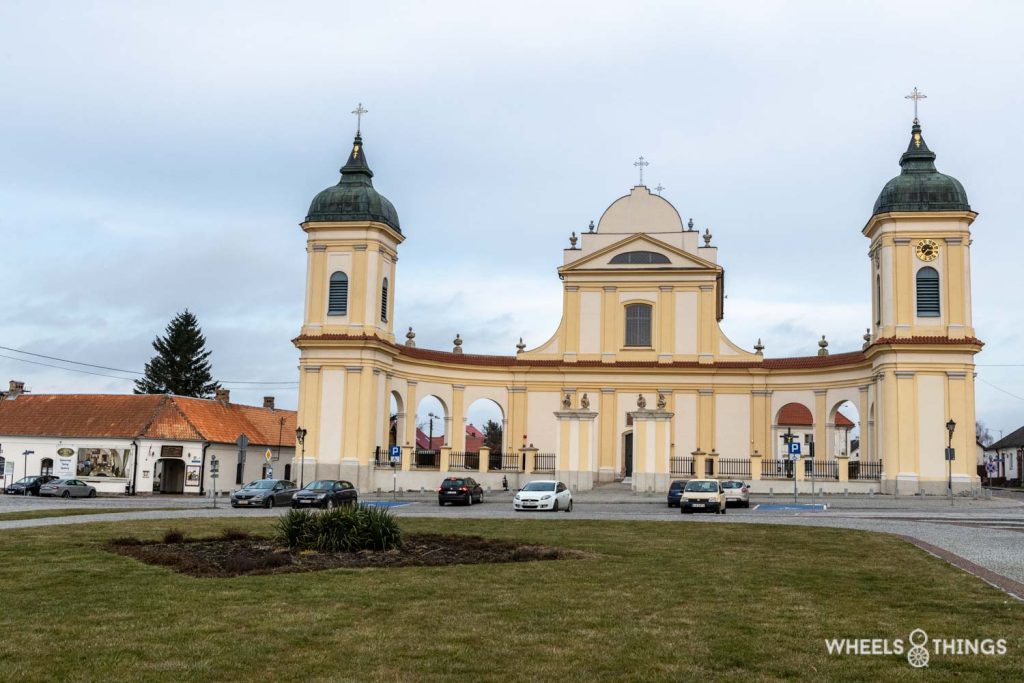
If they already drove well in the Scandinavian countries, it was clearly a lot worse here. We were overtaken in certain places where no hair on my head would even think of pulling off similar kamikaze manoeuvres on these roads.
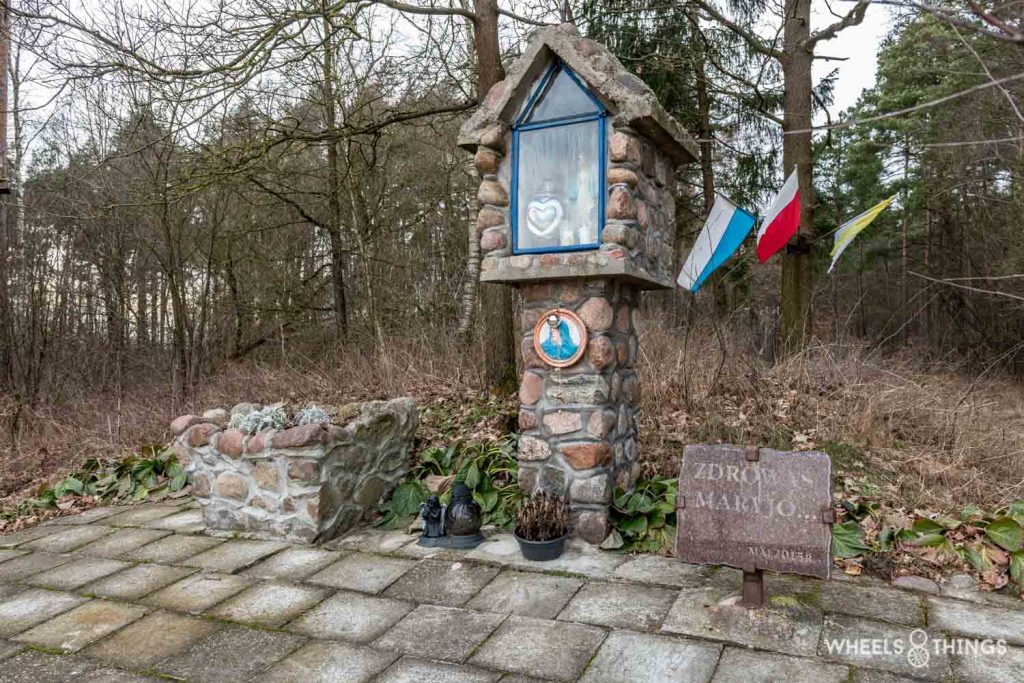
Along the way, we also noticed that there were an awful lot of crosses and other memorials. We hopped over to take a look at them. Apparently these were each of people who had crashed there. I guess the crazy driving style is no stranger to this, we thought.
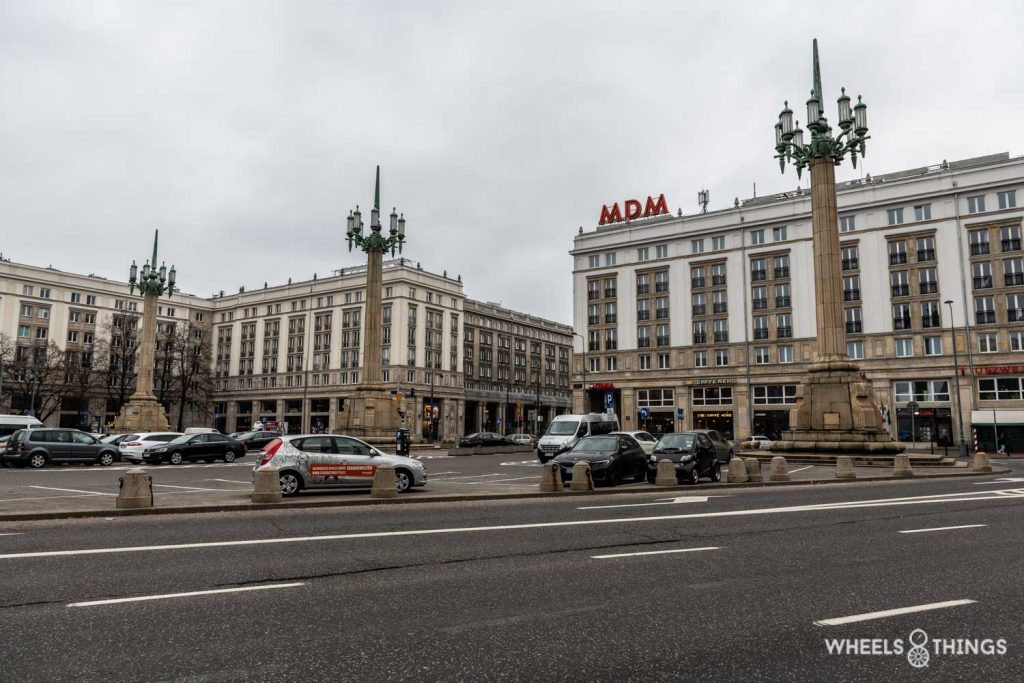
Warsaw is really impressive, we drove into the city when it was already dark and the overwhelming illuminated advertisements, dense traffic and huge buildings really made you feel you were in a big city. The city has a population of 1.9 million and there was a controlled bustle. We had rented a small but very nicely furnished studio for the night which was fairly centrally located so that to go out to eat or visit the city we did not have to take the car.
I know I am repeating myself but even in Poland you can eat exceptionally well at prices four to five times lower than in our little country of Belgium.
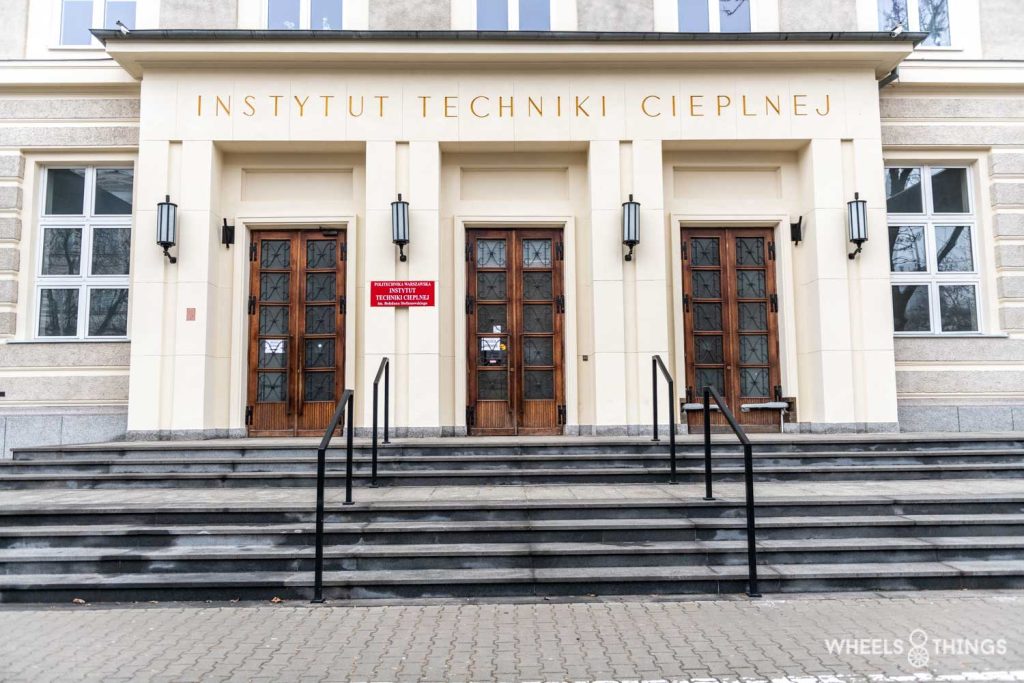
We decided to sleep late today because the coffee house where we could have breakfast did not open until 9 o’clock on Saturday. Myself, however, was awake quite early and decided to walk around the city for a while. It may have been Saturday morning but I really didn’t expect it to be this quiet. The city just seemed deserted as apart from a few people there was not a living soul to be found on the streets.
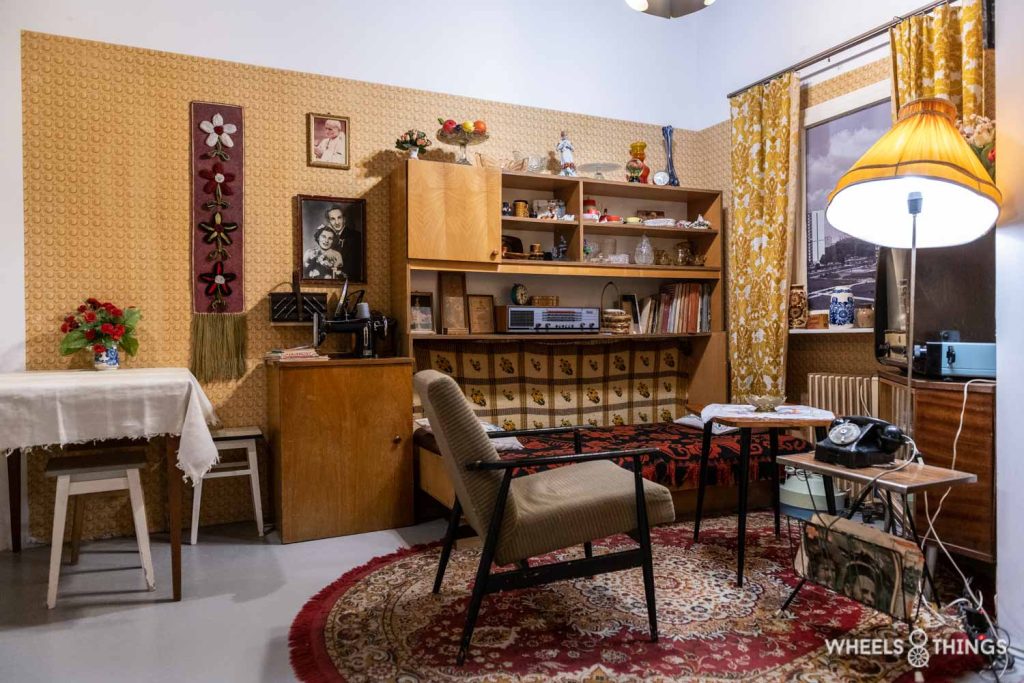
After a delicious breakfast, we decided to visit a museum about life in Poland under communism. A real hit, beautifully set up and really interesting. Even the recreated café projected you back in time when you had to go to the shop with food receipts.
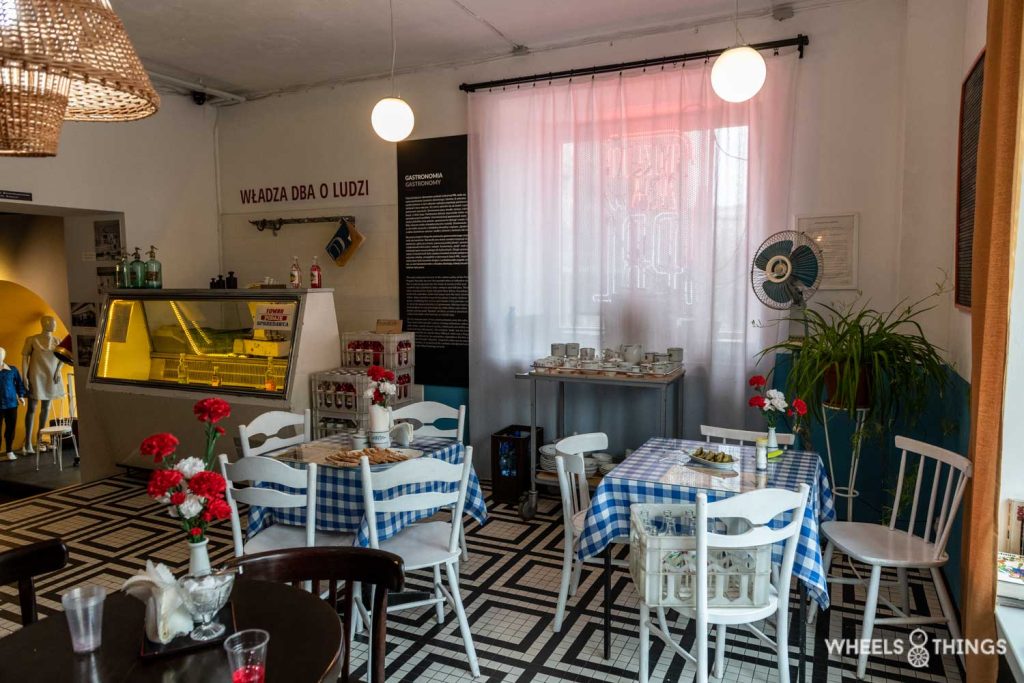
During breakfast, we had discussed driving home from Warsaw in one stretch, so we were home not one but two days earlier. Matter of scoring good points so that we can definitely go away again, right?
04-03-2023: Warsaw – De Klinge 1290km
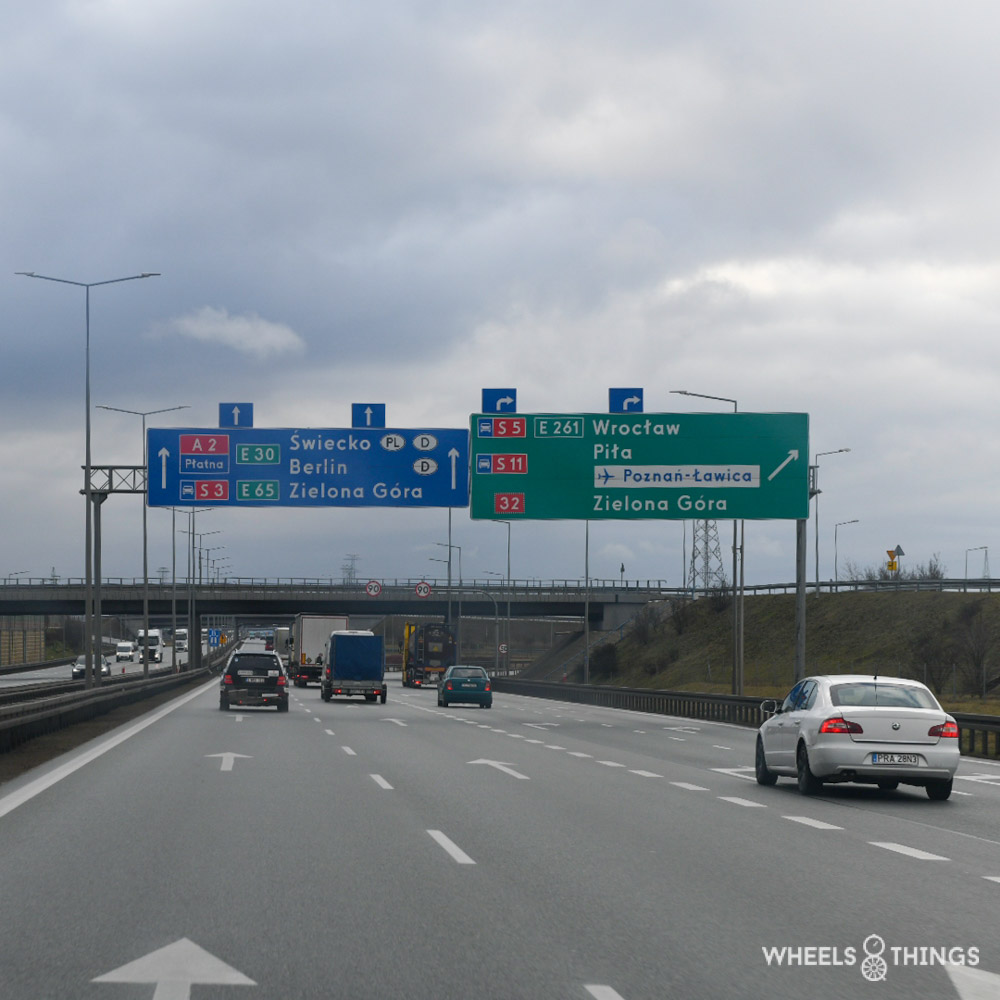
We managed to complete the 1290km drive including stops in twelve hours so we were home just before midnight.
Conclusion:
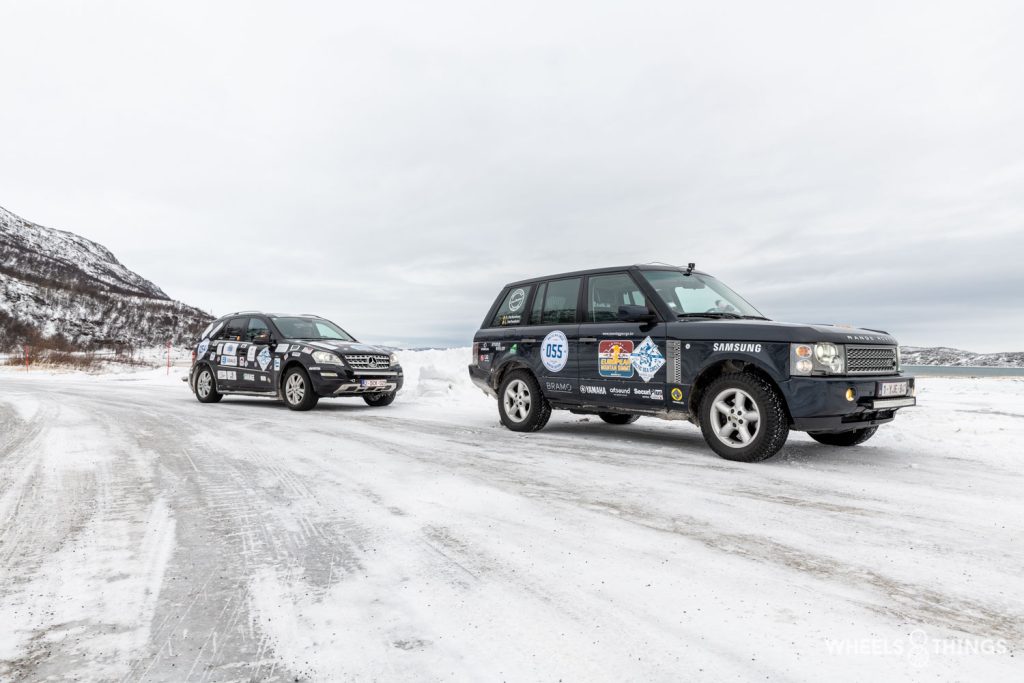
If you don’t mind being in the car a lot, I can really recommend this trip to anyone. We spent a total of 16 days on the road and covered just 8500km. We crossed 10 countries and spoke to plenty of local people. Moreover, we were also able to do this really low budget.
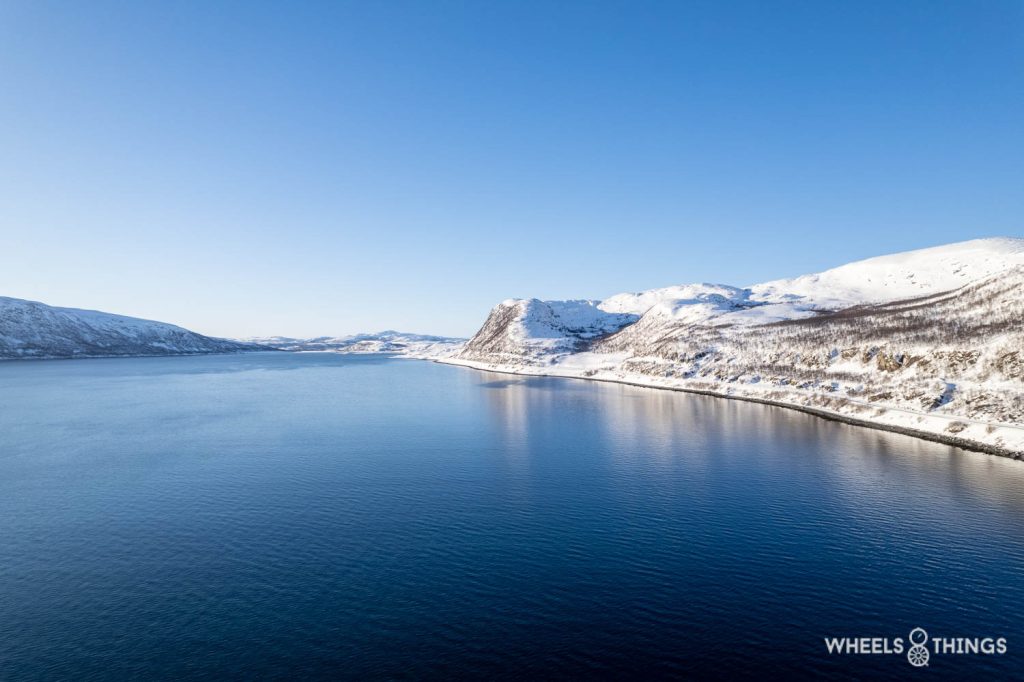
We visited the North Cape, the Lofoten Islands, traversed endless forests and saw reindeer in the wild. We also soaked up culture by visiting numerous museums and went where we could enjoy a delicious coffee or cappuccino. From a culinary point of view, we didn’t really give up either and found that you can eat delicious food for pretty crazy prices. It is a trip with so many impressions that we all think this trip will be remembered for some time.
We also made a video of this last part of our trip. Most of the footage is from the GoPro on our roof. There are also drone footage and even small bits of film with the mobile phone.
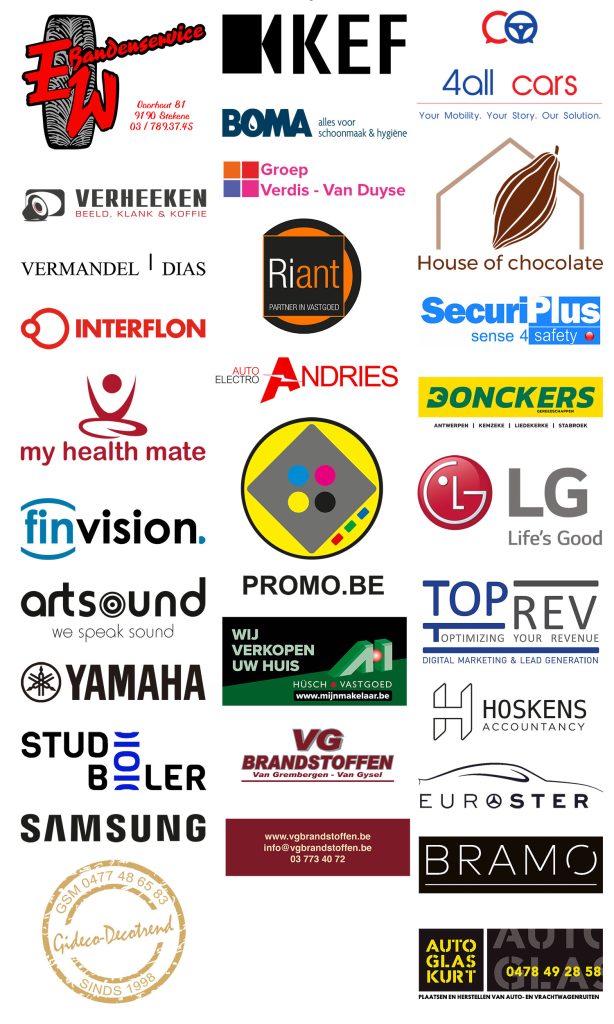
Thanks to all our sponsors who helped us donate more than €3000; to the MS League Flanders.
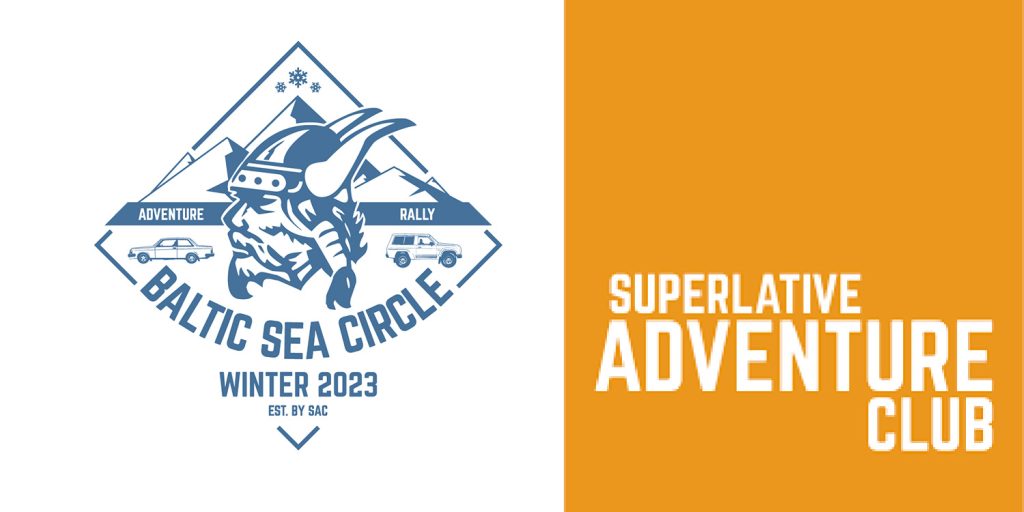
And additional thanks to Superlative Adventureclub who facilitate this kind of rally. The togetherness of the group also deserves a mention. We were lucky not to have broken down or had any accidents. Those who were less fortunate could count on the group spirit to help each other, even if other teams sometimes had to detour 50 km to do so.

